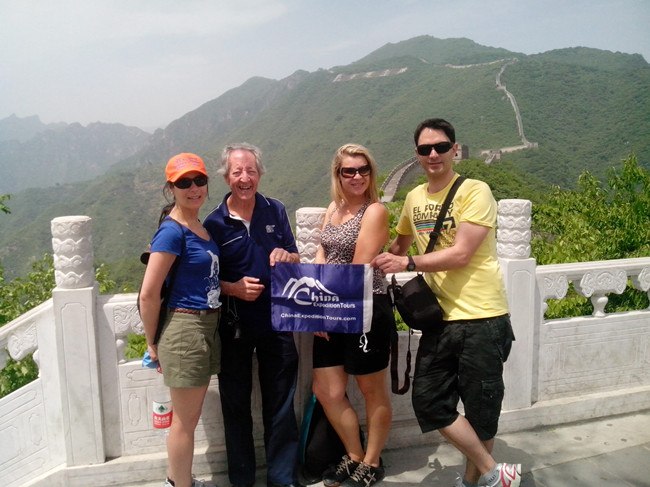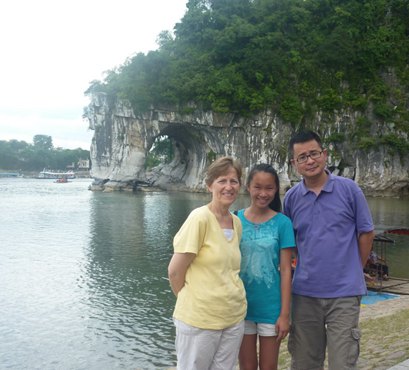Highlights
 Luoyang
Luoyang
Highlights
Luoyang Ancient Tombs Museum
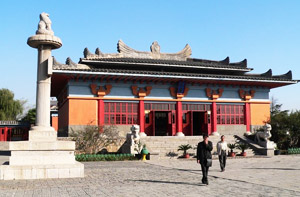
Based on the historic site, the Luoyang Ancient Tomb Museum appeals to an increasing number of visitors by the abundant precious relics and the magnificent but plain architectures with the antique designs of Han Dynasty (B.C. 202-220) and North Wei Dynasty (386-534). The historic site mainly consists of tombs from Han Dynasty to North Song Dynasty (960-1127), the amount of which is 22.
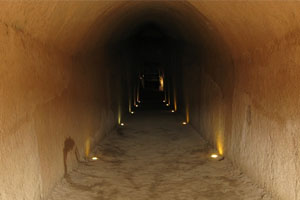
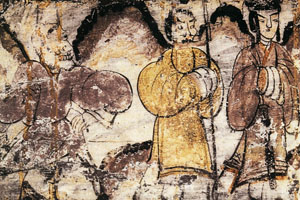
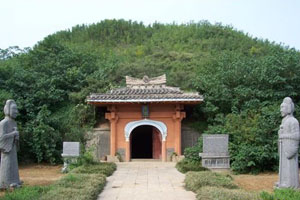
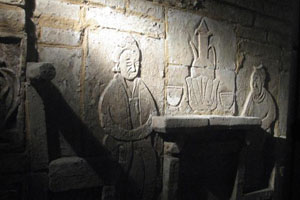
The Studio of Thousand Tang Tablets
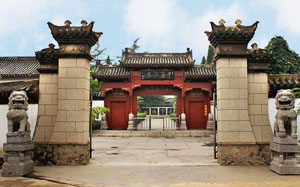
The Studio of Thousand Tang Tablets is actually the unique museum in China that based on the epitaphs, where totally 1419 epitaphs are displayed. Among the precious exhibitions, 1911 epitaphs are the heritages of Tang Dynasty (618-907), which is the reason why the museum is called by the present name. Without any doubts, the epitaphs are one of the most convinced proofs of the history. Therefore, we can learn the society from the descriptions on the epitaphs about the royals, the officials, the celebrities, the common people and all the significant events of different times.
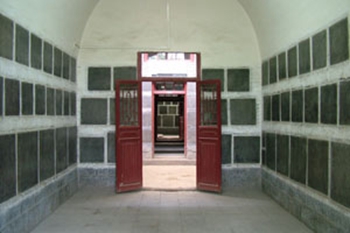
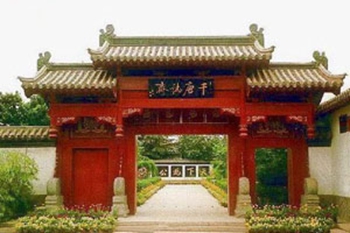
On arriving at the peaceful museum, you will amazingly have a strong feeling of being surrounded by a tense breath of culture and history--just like going back to the ancient time in a Time Machine.
Opening Hours: 8:00 -- 18:00
Ticket Price: 30 CNY
Location: Xinan County, Luoyang City
Transportation: Long-distance bus from Luoyang will bring you to Xinan County.
Longmen Grottoes
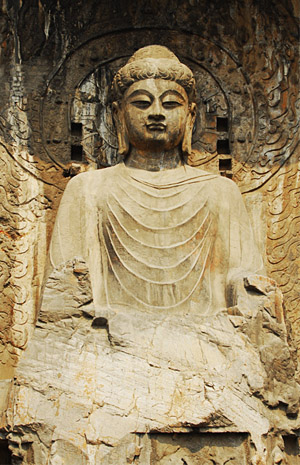
Longmen Grottoes, one of the three greatest grottoes in China, has command of more than 2,000 niches, 100,000 stone sculptures and 3,600 inscriptions, which takes over 400 years to complete. The amount of the stone inscriptions ranks first at the Chinese four famous grottoes (apart from Longmen Grottoes, the others are Yungang Grottoes in Shanxi, Mogao Grottoes in Gansu and Maijishan Grottoes in Gansu), among which the works of calligraphy are the essence parts and the carvings concerning the Buddhist cultures reflect the greatest stone-carving period in Chinese history.
Spanning over 1,000 meters in length, the caves were chiseled on the cliffs of both banks of the Yi River. The scene of Longmen and its surroundings is very beautiful, because the "Longmen Mountain scene" ranks first place of the "Eight Scenic Spots of Luoyang". The caves were first sculptured and chiseled around the year when Emperor Xiaowen moved the capital to Luoyang in Northern Wei Dynasty.
As one of the three great Buddhist treasures, the Buddhist statues in Longmen Caves are exquisitely caved and beautifully shaped, all presenting a vivid appearance of a dignified manner and delicate look. The Buddhist statues in Longmen Caves are an embodiment of a peculiar and extraordinary style of sculpture of Buddhist. Statues of the Chinese people also occupied a very important place in the Chinese art of sculpture. What's more, with broad breadth of spirit, profound implication and beautiful workmanship, the Longmen Caves is a bright pearl in the artistic treasure house of sculpture of the world.
Scattered about the various caves are carved figures of Flying Apsaras, with some of them, light and graceful, riding clouds and mist dexterously, some dancing in the air, holding a plateful of fruits in the hand, some playing music and singing, and others casting flowers and fish about. Longmen is not only renowned for the caves, but also endowed with lush mountains and ridges, springs and waterfalls. The two mountains are covered with green pines and cypresses. Towers and pavilions set each other off. It's a unique scenery area.
Opening Hours:
07:30 -- 18:30 (in spring, summer and autumn)
07:30 -- 17:40 (in winter)
Ticket Price:
120 CNY
Half for students, teaches and the people between 60-69 years
Free for the kids below 1.4 meter, the disabled, the retired, the soldiers, the people over 70 years
Location: 12 km away from Luoyang City
Transportation: Bus No. 53, 60 and 81 will bring you here directly (1 CNY and 40 minutes).
White Horse Temple
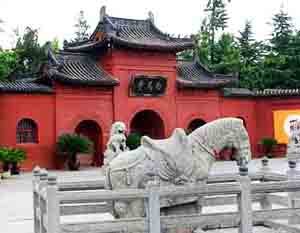
As the first Buddhist temple built with the assistance of Government in the Eastern Han Dynasty (25-220), White Horse Temple (Baima Si), the cradle of Chinese Buddhism, is of great significance in the development of the Buddhist in China. Having witnessed centuries’ changes, White Horse Temple has been reconstructed for several times, among which the one conducted at the order of the Emperor Wu in Tang Dynasty (618-907) was the most impressive one.

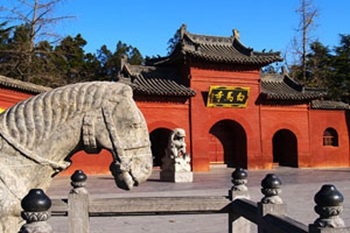
In addition to the exquisite lifelike Buddha statuses in magnificent hall, the typical oriental architecture designs and the towering pines flourishing around the peaceful temple, there are some special scenic spots for you to experience how Emperor Ming in Han Dynasty practiced his study and how the eminent monk Tian Zhu practiced the translation of the Buddhist classics from India.
White Horse Temple is a rectangle courtyard facing south. The gate of the White Horse Temple was built in Ming Dynasty (1368 - 1644) and it is three arches side by side. Covering a total area of 40, 000 square meters, the temple mainly consists of Tianwang Hall, Great Buddha Hall, Daxiong Hall, Jieyin Hall, Qingliang Terrace and Pilu Pavilion, which are all distributing along the north-south central axis.
Great Buddha Hall is the second hall of the temple. It is the place where the grand Buddhist ceremonies are held. The existent hall dates from the Ming Dynasty (1368 - 1644). In its center sits erect a statue of Sakyamuni which is closely flanked by two Bodhisattvas Wenshu and Puxian, and his two disciples Ananda and Jiaye. Behind stand the statue of Avalokitesvara.
In the southeast of the hall, a huge bell is hung from the beam. It was said that when the bell is struck, the toll could be heard far away. More interesting is that once the bell is tolling, the one in Bell Tower in Luoyang Old Town will response it quickly due to the sympathetic vibration. 'Horse Temple Bell', one of the eight scenes in Luoyang city was named after it. The hall also house eighteen Arhats that are lifelike in modeling and unique in gesture and are treasures in Buddhist arts of the Yuan Dynasty.
Opening Hours: 7:30 -- 17:30
Ticket Price:
35 CNY
Half for students, teaches and the people between 60-69 years
Free for the kids below 1.4 meter, the disabled, the retired, the soldiers, the people over 70 years
Location: 12 km away from Luoyang City
Transportation: Bus No. 56 will bring you here directly (I hour)
Guanlin Temple
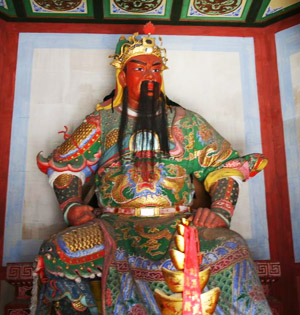
Built in Han Dynasty (B.C. 202-220),Guanlin Temple, covering 120,000 m2, was built in memory of Guan Yu, a general with a respectable loyalty in Han Dynasty. Around the tomb of Guan Yu inside the Guanlin Temple, there are hundreds of towering old pines, from which the name Guanlin that means a wood of pines is derived and owing to which numerous visitors have come here to pay respect to Guan Yu in the past 1700 years.

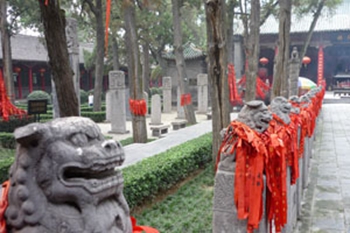
Guanlin Temple is located right in Guanlin Town, eight kilometers south of Luoyang city and is also called General Guan's Tomb, which is actually the memorial temple and the tomb for Guan Yu (160 - 219 AD), a famous general of the Kingdom of Shu during the Three Kingdoms Period (220 - 277 AD). Guanyu originally came from Shanxi province and was also called Guan Yunchang. It was said that after Sun Quan, the king of Wu Kingdom, killed Guanyu, he put Guan's head in a box and sent it to Luoyang in an attempt to blame the murder on Cao Cao, the king of Wei Kingdom. Cao Cao saw through Sun's trap and was not fooled. He held a ceremonious burial for Guan and buried the head with a carved wooden body to the south of the city.
Guan Yu became a legendary hero in Chinese folktales because of his loyalty, bravery and faithfulness. He was also respected as 'Wu Sheng' by Chinese emperors. Temples were built for him throughout the country and he was honored as a god. Portraits or pictures of Guan Yu can be found on the doors of Chinese houses during the Lunar New Year because people believe he protects the home.
The construction work of this temple complex began in 1595, during the reign of Ming Emperor Wanli. The complex contains several halls, an octagonal pavilion and Guanyu's tomb. Inside the halls are pictures and statues mainly devoted to the Story of the Three Kingdoms. More than seventy stone-tablets with calligraphic inscriptions are also found here. A five-meter-high stone stele with inscriptions written by emperors from different dynasties is found in the octagonal pavilion.
Opening Hours: 08:00 -- 17:00
Ticket Price: 40 CNY
Location: Guanlin Town, Luolong Zone, Luoyang City
Transportation: Bus No. 15, 39, 53, 55, 58, 60, 69 and 81 will bring you here directly.
Luoyang Peony and Wangcheng Park
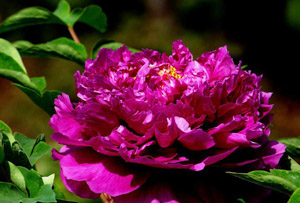
Covering 700,000 m2, Wangcheng Park is the unique park that built based on the historic site and the largest comprehensive park in Henan Province. With an antique style tower gate, red walls and green tiles, Wangcheng Park is full of breath of culture.
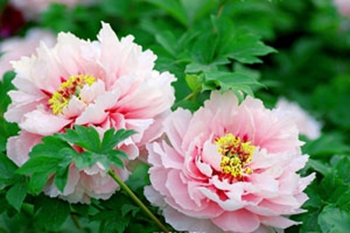
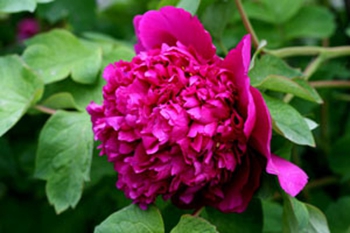
Yellow River Xiaolangdi Scenic Area
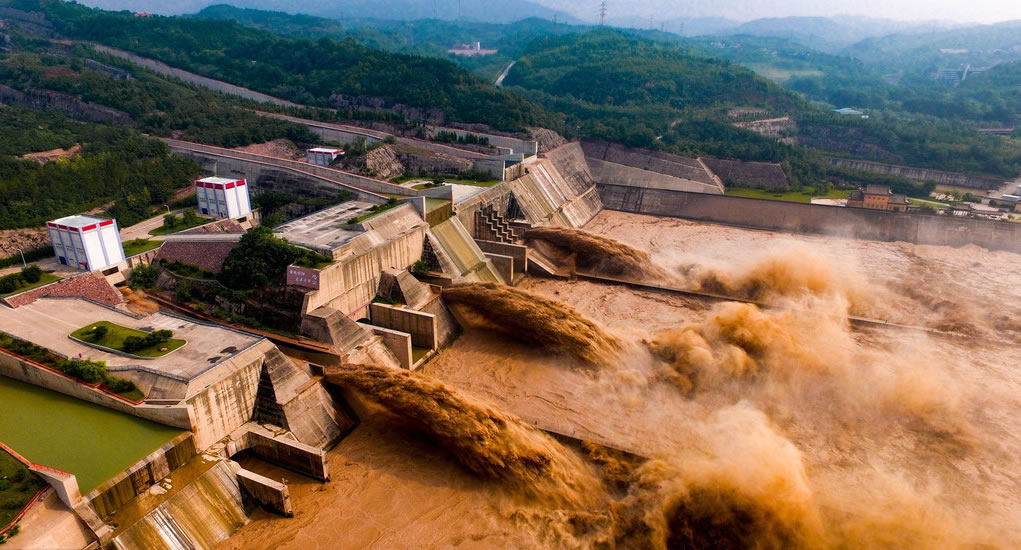
Xiaolangdi Scenic Area is the most marvelous part of the yellow river, which covers more than 60 natural sceneries and cultural relics that are characterized by the gorge spectacles. The picturesque mountain groups with flourishing trees and blooming flowers form precipitous but harmonious landscapes, which is so charming that people name here the Three Gorges of Yellow River. In addition, in the waters as wide as 300 square kilometers, boats are crossing on the peaceful lakes and streams from one island to the other.
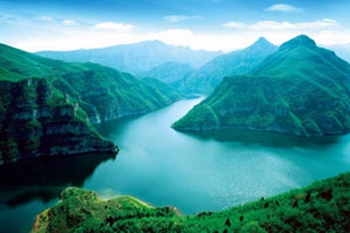

Lying in Mengjin County 40 kilometers (about 25 miles) north of Luoyang City, Henan Province, Xiaolangdi Scenic Area is located in the exit of the last gorge in the middle reaches of Yellow River. The Xiaolangdi Multipurpose Dam Project has become a dominating feature of this stretch of the mighty river and the three gorges to be found here are a major attraction.
The Dam Project is an eye-catching feature of the entire scenic area. In total, the cost of the project has been RMB 42 billion and it is not only a milestone in the history of the continuing effort to tame the Yellow River, but it is also a masterpiece in world hydroelectric engineering history. It creates three firsts in the world and six firsts in China. This vast construction is 1667 meters (about 1823 yards) long with a height of 154 meters (about 500 feet). The whole project consists of ten intake towers, nine flood and sediment tunnels, six power tunnels and an underground powerhouse. The Thousand Islands are more outstanding and amazing seen from the picturesque mountains.
Opening Hours:
8:00 -- 17:00 in winter
7:00 -- 19:00 in summer
Ticket Price:
40 CNY
20 CNY for the students, the retired and the people between 60-69 years old
Free for the soldiers, the tour guide, the journalists and the people more than 70 years old
Location: Jiyuan City, Henan Province
Transportation: Bus from Luoyang Railway Station and Dongbian Bus Station will bring you here.
The Three Gorges of Yellow River

Along the spectacular Yellow River, the marvelous gorges together with the picturesque landscapes around make a shinning fairyland where numerous tourists have come for wonderful memories after traveling around the amazing grottoes, peaceful temples, natural lakes, mysterious caves and the fabulous hydroelectric station. Three Gorges, covering 40 square kilometers, are the essence of this scenic area on the Yellow River. Each gorge has its own characteristics.
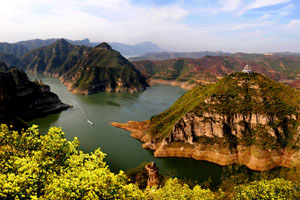
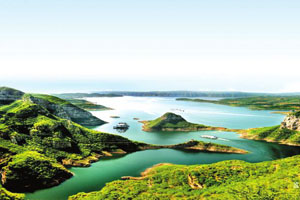
Luoyang Ancient Tombs Museum

Based on the historic site, the Luoyang Ancient Tomb Museum appeals to an increasing number of visitors by the abundant precious relics and the magnificent but plain architectures with the antique designs of Han Dynasty (B.C. 202-220) and North Wei Dynasty (386-534). The historic site mainly consists of tombs from Han Dynasty to North Song Dynasty (960-1127), the amount of which is 22.




The Studio of Thousand Tang Tablets

The Studio of Thousand Tang Tablets is actually the unique museum in China that based on the epitaphs, where totally 1419 epitaphs are displayed. Among the precious exhibitions, 1911 epitaphs are the heritages of Tang Dynasty (618-907), which is the reason why the museum is called by the present name. Without any doubts, the epitaphs are one of the most convinced proofs of the history. Therefore, we can learn the society from the descriptions on the epitaphs about the royals, the officials, the celebrities, the common people and all the significant events of different times.


On arriving at the peaceful museum, you will amazingly have a strong feeling of being surrounded by a tense breath of culture and history--just like going back to the ancient time in a Time Machine.
Opening Hours: 8:00 -- 18:00
Ticket Price: 30 CNY
Location: Xinan County, Luoyang City
Transportation: Long-distance bus from Luoyang will bring you to Xinan County.
Longmen Grottoes

Longmen Grottoes, one of the three greatest grottoes in China, has command of more than 2,000 niches, 100,000 stone sculptures and 3,600 inscriptions, which takes over 400 years to complete. The amount of the stone inscriptions ranks first at the Chinese four famous grottoes (apart from Longmen Grottoes, the others are Yungang Grottoes in Shanxi, Mogao Grottoes in Gansu and Maijishan Grottoes in Gansu), among which the works of calligraphy are the essence parts and the carvings concerning the Buddhist cultures reflect the greatest stone-carving period in Chinese history.
Spanning over 1,000 meters in length, the caves were chiseled on the cliffs of both banks of the Yi River. The scene of Longmen and its surroundings is very beautiful, because the "Longmen Mountain scene" ranks first place of the "Eight Scenic Spots of Luoyang". The caves were first sculptured and chiseled around the year when Emperor Xiaowen moved the capital to Luoyang in Northern Wei Dynasty.
As one of the three great Buddhist treasures, the Buddhist statues in Longmen Caves are exquisitely caved and beautifully shaped, all presenting a vivid appearance of a dignified manner and delicate look. The Buddhist statues in Longmen Caves are an embodiment of a peculiar and extraordinary style of sculpture of Buddhist. Statues of the Chinese people also occupied a very important place in the Chinese art of sculpture. What's more, with broad breadth of spirit, profound implication and beautiful workmanship, the Longmen Caves is a bright pearl in the artistic treasure house of sculpture of the world.
Scattered about the various caves are carved figures of Flying Apsaras, with some of them, light and graceful, riding clouds and mist dexterously, some dancing in the air, holding a plateful of fruits in the hand, some playing music and singing, and others casting flowers and fish about. Longmen is not only renowned for the caves, but also endowed with lush mountains and ridges, springs and waterfalls. The two mountains are covered with green pines and cypresses. Towers and pavilions set each other off. It's a unique scenery area.
Opening Hours:
07:30 -- 18:30 (in spring, summer and autumn)
07:30 -- 17:40 (in winter)
Ticket Price:
120 CNY
Half for students, teaches and the people between 60-69 years
Free for the kids below 1.4 meter, the disabled, the retired, the soldiers, the people over 70 years
Location: 12 km away from Luoyang City
Transportation: Bus No. 53, 60 and 81 will bring you here directly (1 CNY and 40 minutes).
White Horse Temple

As the first Buddhist temple built with the assistance of Government in the Eastern Han Dynasty (25-220), White Horse Temple (Baima Si), the cradle of Chinese Buddhism, is of great significance in the development of the Buddhist in China. Having witnessed centuries’ changes, White Horse Temple has been reconstructed for several times, among which the one conducted at the order of the Emperor Wu in Tang Dynasty (618-907) was the most impressive one.


In addition to the exquisite lifelike Buddha statuses in magnificent hall, the typical oriental architecture designs and the towering pines flourishing around the peaceful temple, there are some special scenic spots for you to experience how Emperor Ming in Han Dynasty practiced his study and how the eminent monk Tian Zhu practiced the translation of the Buddhist classics from India.
White Horse Temple is a rectangle courtyard facing south. The gate of the White Horse Temple was built in Ming Dynasty (1368 - 1644) and it is three arches side by side. Covering a total area of 40, 000 square meters, the temple mainly consists of Tianwang Hall, Great Buddha Hall, Daxiong Hall, Jieyin Hall, Qingliang Terrace and Pilu Pavilion, which are all distributing along the north-south central axis.
Great Buddha Hall is the second hall of the temple. It is the place where the grand Buddhist ceremonies are held. The existent hall dates from the Ming Dynasty (1368 - 1644). In its center sits erect a statue of Sakyamuni which is closely flanked by two Bodhisattvas Wenshu and Puxian, and his two disciples Ananda and Jiaye. Behind stand the statue of Avalokitesvara.
In the southeast of the hall, a huge bell is hung from the beam. It was said that when the bell is struck, the toll could be heard far away. More interesting is that once the bell is tolling, the one in Bell Tower in Luoyang Old Town will response it quickly due to the sympathetic vibration. 'Horse Temple Bell', one of the eight scenes in Luoyang city was named after it. The hall also house eighteen Arhats that are lifelike in modeling and unique in gesture and are treasures in Buddhist arts of the Yuan Dynasty.
Opening Hours: 7:30 -- 17:30
Ticket Price:
35 CNY
Half for students, teaches and the people between 60-69 years
Free for the kids below 1.4 meter, the disabled, the retired, the soldiers, the people over 70 years
Location: 12 km away from Luoyang City
Transportation: Bus No. 56 will bring you here directly (I hour)
Guanlin Temple

Built in Han Dynasty (B.C. 202-220),Guanlin Temple, covering 120,000 m2, was built in memory of Guan Yu, a general with a respectable loyalty in Han Dynasty. Around the tomb of Guan Yu inside the Guanlin Temple, there are hundreds of towering old pines, from which the name Guanlin that means a wood of pines is derived and owing to which numerous visitors have come here to pay respect to Guan Yu in the past 1700 years.


Guanlin Temple is located right in Guanlin Town, eight kilometers south of Luoyang city and is also called General Guan's Tomb, which is actually the memorial temple and the tomb for Guan Yu (160 - 219 AD), a famous general of the Kingdom of Shu during the Three Kingdoms Period (220 - 277 AD). Guanyu originally came from Shanxi province and was also called Guan Yunchang. It was said that after Sun Quan, the king of Wu Kingdom, killed Guanyu, he put Guan's head in a box and sent it to Luoyang in an attempt to blame the murder on Cao Cao, the king of Wei Kingdom. Cao Cao saw through Sun's trap and was not fooled. He held a ceremonious burial for Guan and buried the head with a carved wooden body to the south of the city.
Guan Yu became a legendary hero in Chinese folktales because of his loyalty, bravery and faithfulness. He was also respected as 'Wu Sheng' by Chinese emperors. Temples were built for him throughout the country and he was honored as a god. Portraits or pictures of Guan Yu can be found on the doors of Chinese houses during the Lunar New Year because people believe he protects the home.
The construction work of this temple complex began in 1595, during the reign of Ming Emperor Wanli. The complex contains several halls, an octagonal pavilion and Guanyu's tomb. Inside the halls are pictures and statues mainly devoted to the Story of the Three Kingdoms. More than seventy stone-tablets with calligraphic inscriptions are also found here. A five-meter-high stone stele with inscriptions written by emperors from different dynasties is found in the octagonal pavilion.
Opening Hours: 08:00 -- 17:00
Ticket Price: 40 CNY
Location: Guanlin Town, Luolong Zone, Luoyang City
Transportation: Bus No. 15, 39, 53, 55, 58, 60, 69 and 81 will bring you here directly.
Luoyang Peony and Wangcheng Park

Covering 700,000 m2, Wangcheng Park is the unique park that built based on the historic site and the largest comprehensive park in Henan Province. With an antique style tower gate, red walls and green tiles, Wangcheng Park is full of breath of culture.


Yellow River Xiaolangdi Scenic Area

Xiaolangdi Scenic Area is the most marvelous part of the yellow river, which covers more than 60 natural sceneries and cultural relics that are characterized by the gorge spectacles. The picturesque mountain groups with flourishing trees and blooming flowers form precipitous but harmonious landscapes, which is so charming that people name here the Three Gorges of Yellow River. In addition, in the waters as wide as 300 square kilometers, boats are crossing on the peaceful lakes and streams from one island to the other.


Lying in Mengjin County 40 kilometers (about 25 miles) north of Luoyang City, Henan Province, Xiaolangdi Scenic Area is located in the exit of the last gorge in the middle reaches of Yellow River. The Xiaolangdi Multipurpose Dam Project has become a dominating feature of this stretch of the mighty river and the three gorges to be found here are a major attraction.
The Dam Project is an eye-catching feature of the entire scenic area. In total, the cost of the project has been RMB 42 billion and it is not only a milestone in the history of the continuing effort to tame the Yellow River, but it is also a masterpiece in world hydroelectric engineering history. It creates three firsts in the world and six firsts in China. This vast construction is 1667 meters (about 1823 yards) long with a height of 154 meters (about 500 feet). The whole project consists of ten intake towers, nine flood and sediment tunnels, six power tunnels and an underground powerhouse. The Thousand Islands are more outstanding and amazing seen from the picturesque mountains.
Opening Hours:
8:00 -- 17:00 in winter
7:00 -- 19:00 in summer
Ticket Price:
40 CNY
20 CNY for the students, the retired and the people between 60-69 years old
Free for the soldiers, the tour guide, the journalists and the people more than 70 years old
Location: Jiyuan City, Henan Province
Transportation: Bus from Luoyang Railway Station and Dongbian Bus Station will bring you here.
The Three Gorges of Yellow River

Along the spectacular Yellow River, the marvelous gorges together with the picturesque landscapes around make a shinning fairyland where numerous tourists have come for wonderful memories after traveling around the amazing grottoes, peaceful temples, natural lakes, mysterious caves and the fabulous hydroelectric station. Three Gorges, covering 40 square kilometers, are the essence of this scenic area on the Yellow River. Each gorge has its own characteristics.


Luoyang Ancient Tombs Museum

Based on the historic site, the Luoyang Ancient Tomb Museum appeals to an increasing number of visitors by the abundant precious relics and the magnificent but plain architectures with the antique designs of Han Dynasty (B.C. 202-220) and North Wei Dynasty (386-534). The historic site mainly consists of tombs from Han Dynasty to North Song Dynasty (960-1127), the amount of which is 22.




The Studio of Thousand Tang Tablets

The Studio of Thousand Tang Tablets is actually the unique museum in China that based on the epitaphs, where totally 1419 epitaphs are displayed. Among the precious exhibitions, 1911 epitaphs are the heritages of Tang Dynasty (618-907), which is the reason why the museum is called by the present name. Without any doubts, the epitaphs are one of the most convinced proofs of the history. Therefore, we can learn the society from the descriptions on the epitaphs about the royals, the officials, the celebrities, the common people and all the significant events of different times.


On arriving at the peaceful museum, you will amazingly have a strong feeling of being surrounded by a tense breath of culture and history--just like going back to the ancient time in a Time Machine.
Opening Hours: 8:00 -- 18:00
Ticket Price: 30 CNY
Location: Xinan County, Luoyang City
Transportation: Long-distance bus from Luoyang will bring you to Xinan County.
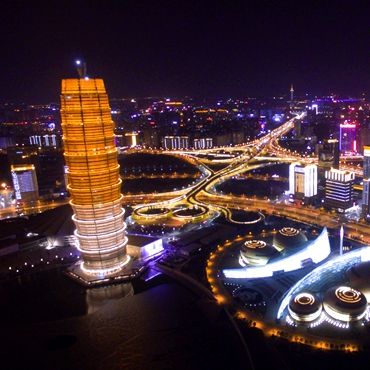 Zhengzhou
Zhengzhou
Highlights
Dengfeng Observatory

This observatory, built in the Yuan Dynasty (1206-1370), is the oldest well-preserved observatory in China. It enjoys a high reputation in the world for being of great significance in the study of the development of world’s astronomy and architecture.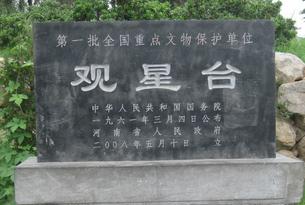
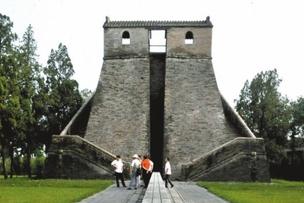
The astronomer Guo Shoujing (1231-1314) designed this particular observatory in 1276, at the beginning of the Yuan period. The building is an angular construction made of brick and stone and stands 9.46 m high. A 31.9-meter-long stone rod stretches out in front of the building and is used to measure the sun's shadow. Based upon his own diagrams and with the aid of information collected by other observatories, Guo Shoujing worked out a calendar that corresponds to the present-day Gregorian calendar. A calculation that he made of the amount of time that it takes the earth to revolve around the sun was off by only 26 seconds. 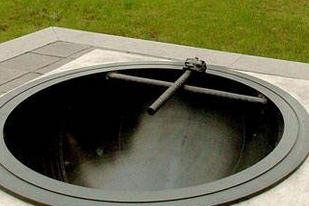

This centuries old observatory is still of great value in the observation of the astronomy, from where you can have a try by using the ancient instruments to learn how the astronomers study the astronomy in the ancient time.
Opening Hours: 8:00 -- 18:00
Ticket Price: 40 CNY
Location: Gaocheng Town, Dengfeng County, Zhengzhou
Transportation: Bus and tour bus will bring you here directly
Songyang Academy of Classical Learning
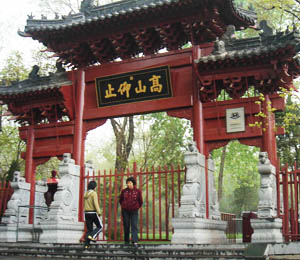
Songyang Academy of Classical Learning, built in the Northern Wei Dynasty (368-534), is a member of the top four Chinese ancient academy of classical learning, together with Yingtian Academy in Suizhou of Henan, Yuelu Academy in Hunan, Bailudong Academy in Jiangxi. Having experienced centuries of changes, it won great reputation for the splendid cultural relics and the beautiful sceneries around.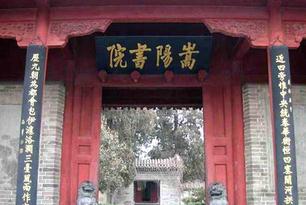
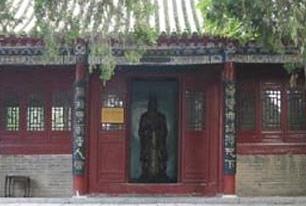
The buildings of the academy are old but elegant. There are over 100 rooms covering more than 10000 square meters. The center axis consists of 5-yard groups. At the west side, there are two high and old cypresses named 'Great General' and 'Second General'. The Great General has a biggest trunk perimeter of 6 meters and a height of about 15 meters, while the Second General has a perimeter of some 12 meters and a height of about 20 meters. They are the oldest cypresses with over 2000 years of history, now they boast the oldest and biggest existing trees of the kind in China. At the gate of the academy on the southwestern side, stands an 8-meter-tall Tang Tablet, which was erected in the 3rd year (744 AD) of the Emperor Xuanzong in the Tang Dynasty. It is the largest stele in Henan Province and famous in Chinese handwriting history.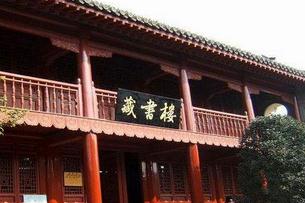
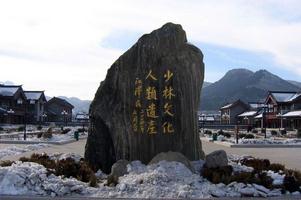
Embraced by steaming mountains, with clear streams circling around, here is a peaceful place for your option to spend the luxurious moment to enjoy the ancient culture and the beautiful landscapes.
Opening Hours: 8:00 --18:00
Ticket Price: 80 CNY
Location: Dengfeng City, Zhengzhou
Transportation: Bus No. 2 and 6 will bring you here.
Henan Provincial Museum
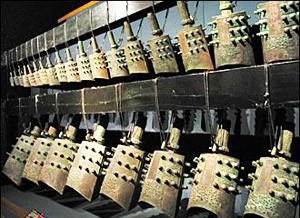
Set up in the year of 1927, Henan Museum is one of the oldest museums in China. Occupying 100,000 m2, Henan Museum has been attracting an increasing number of visitors with 130,000 pieces of rarely seen historic relics displayed. 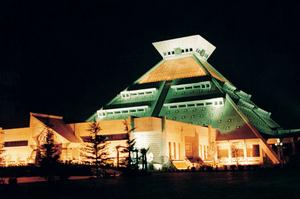
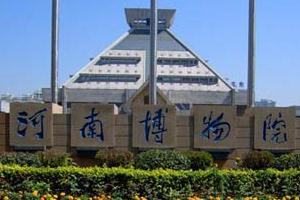
Because of Henan locates in the Yellow River basin, one of the cradles of Chinese ancient cultures, the cultural relic items displayed here are of various styles and of great significance in the study of the Chinese history. As mentioned above, Henan lies on the bank of Yellow River, so she has experienced many badly floods, which, in turn, attests how tough the cultural relics discovered here are.
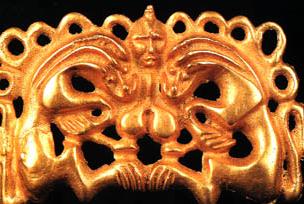
The main architecture here is the magnificent Chinese oldest astronomical observatory that is as tall as 45.5 meters with five floors, which is deem as the center of the Ancient China. The precious historic relics showed around the pyramid-like astronomical observatory are the living fossils for you to learn about the Chinese culture.
Opening Hours: 9:00 -- 17:00 (from Tuesday to Sunday)
Ticket Price: 20 CNY
Location: No. 8, Nongye Road, Zhengzhou
Transportation: Bus No. 32, 39, 42, 61, 69 and 251 will bring you here.
Yellow River Scenic Area

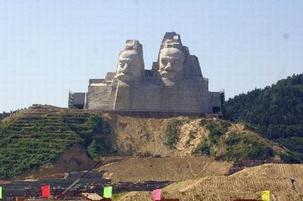
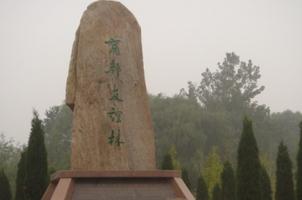

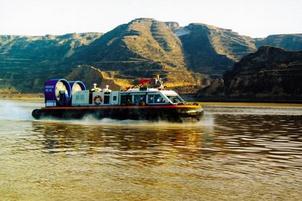
Shang Dynasty Ruins
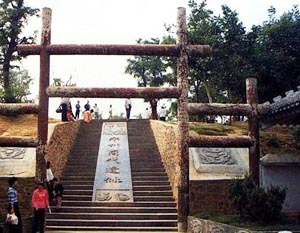
Here are the ruins of the ancient city of 3,600 years old, which are discovered in the year 1950. It is home to the thousands of precious cultural relics, most of which are invaluable jade items reflecting the sophisticated technology. With a 6,960-meter-long wall as an impregnable shield, the Shang Dynasty ruins cover an area of twenty-five square kilometers. 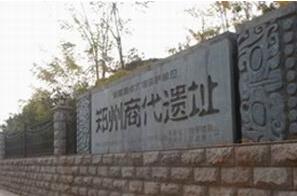
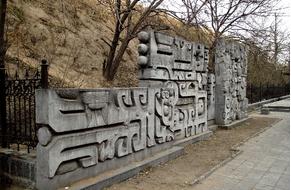
Excavations here, and at other Shang sites, suggest that a ‘typical’ Shang city consisted of a central walled area containing large buildings (presumably government buildings or the residences of important people, used for ceremonial occasions) surrounded by villages. Each village specialized in a product such as pottery, metal- work, wine or textiles. The village dwellings were mostly semi-underground pit houses, while the buildings in the centre were rectangular and above the ground.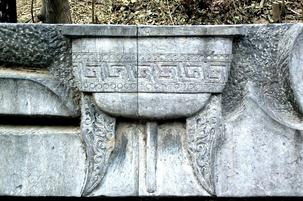
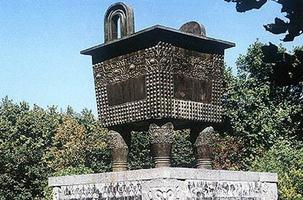
Excavations have also uncovered Shang tombs. These are rectangular pits with ramps or steps leading down to a burial chamber where the coffin was placed and surrounded with funerary objects such as bronze weapons, helmets, musical instruments, inscribed oracle bones and silk fabrics. Some also contained the skeletons of sacrificial animals and humans. Study of these human skeletons suggests they were of a different ethnic origin from the Shang – possibly prisoners of war. This and other evidence suggest that Shang society was an aristocratic dictatorship with the emperor/ father-figure at the apex and did not enslave its own people.
The large-scale excavation in Yin Xu has been continued since the last century. Apart from the 150, 000 pieces of oracles, abundant bronze ware has been excavated, and among them, Simuwu Ding, a 4-legged bronze cooking vessel is the biggest and heaviest bronze ware ever found worldwide. In addition to the oracles and bronze ware, people have also excavated much pottery ware and jade. The excavation is still in progress and great discoveries come forth from time to time. As a famous archeologist has said, more treasures are waiting to be found here.
It is of great significance in not only the historical relics of Chinese culture but also the human civilization of the whole world.
Opening Hours: 8:00 -- 18:00
Ticket Price: 90 CNY
Location: in the suburban of the Zhengzhou City, Henan Province
Transportation: Bus No. 1, 15 and 18 from downtown Anyang to Yin Xu Station will bring you here.
Song Mountain
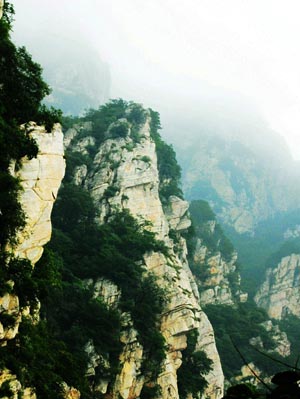

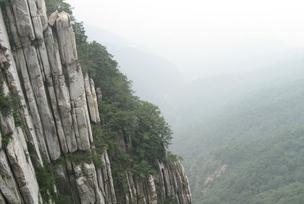

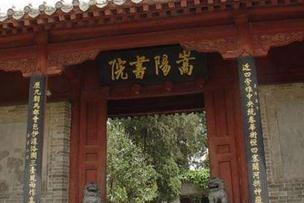
To be exact, you can feast your eyes on the Shaolin Monastery, the Songyang Academy of Classical Learning, the Han Imperial Palaces, Star Observatory Terrace (guanxingtai), and Stone Streams-Confluence (shizonghuiyin).
Mt. Songshan Monastery
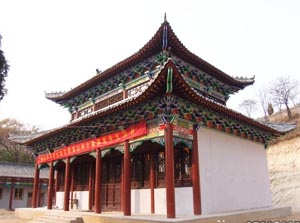
Since the completion around the year 210 BC, the monastery has experienced centuries of history, which, however, has been preserved amazingly well. With a splendid ancient architecture group lying peaceful inside its hug, this monastery enjoys a high reputation and population among the visitors who have ever come to have a close touch.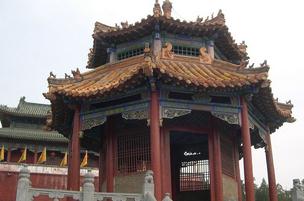
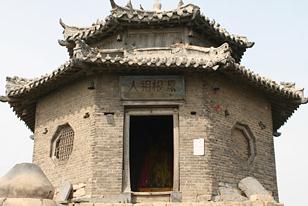
Although being embraced by marvelous mountains in every direction, the monastery is still shinning due to the magnificent buildings that is said to be the largest, oldest and best-preserved architecture group. For such an ancient architecture groups with a large scale of 110,000 m2, every single building with red walls and golden roofs looks like an old man who can tell you stories in the ancient China. 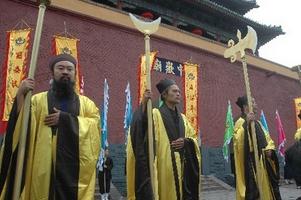
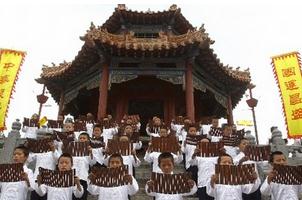
The monastery lies at the southern foot of Mt. Songshan and is hemmed in by mountains. In the monastery stands a pagoda, 40 meters in height and has 10 stories. It is the oldest brick and mud pagoda in China that has attracted an increasing number of tourists.
Opening Hours: 8:00 --17:00
Ticket Price: 30 CNY
Location: Dengfeng City, Henan Province
Transportation: Bus No. 1, 2, 3, 6, 8, and 9 will bring you here.
Shaolin Temple

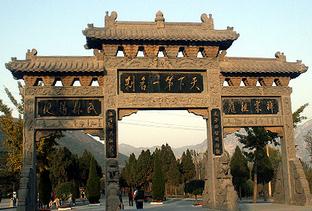
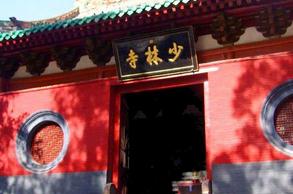
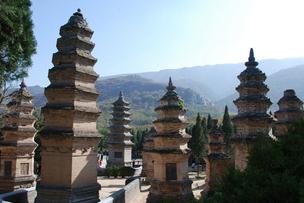

Dengfeng Observatory

This observatory, built in the Yuan Dynasty (1206-1370), is the oldest well-preserved observatory in China. It enjoys a high reputation in the world for being of great significance in the study of the development of world’s astronomy and architecture.

The astronomer Guo Shoujing (1231-1314) designed this particular observatory in 1276, at the beginning of the Yuan period. The building is an angular construction made of brick and stone and stands 9.46 m high. A 31.9-meter-long stone rod stretches out in front of the building and is used to measure the sun's shadow. Based upon his own diagrams and with the aid of information collected by other observatories, Guo Shoujing worked out a calendar that corresponds to the present-day Gregorian calendar. A calculation that he made of the amount of time that it takes the earth to revolve around the sun was off by only 26 seconds. 

This centuries old observatory is still of great value in the observation of the astronomy, from where you can have a try by using the ancient instruments to learn how the astronomers study the astronomy in the ancient time.
Opening Hours: 8:00 -- 18:00
Ticket Price: 40 CNY
Location: Gaocheng Town, Dengfeng County, Zhengzhou
Transportation: Bus and tour bus will bring you here directly
Songyang Academy of Classical Learning

Songyang Academy of Classical Learning, built in the Northern Wei Dynasty (368-534), is a member of the top four Chinese ancient academy of classical learning, together with Yingtian Academy in Suizhou of Henan, Yuelu Academy in Hunan, Bailudong Academy in Jiangxi. Having experienced centuries of changes, it won great reputation for the splendid cultural relics and the beautiful sceneries around.

The buildings of the academy are old but elegant. There are over 100 rooms covering more than 10000 square meters. The center axis consists of 5-yard groups. At the west side, there are two high and old cypresses named 'Great General' and 'Second General'. The Great General has a biggest trunk perimeter of 6 meters and a height of about 15 meters, while the Second General has a perimeter of some 12 meters and a height of about 20 meters. They are the oldest cypresses with over 2000 years of history, now they boast the oldest and biggest existing trees of the kind in China. At the gate of the academy on the southwestern side, stands an 8-meter-tall Tang Tablet, which was erected in the 3rd year (744 AD) of the Emperor Xuanzong in the Tang Dynasty. It is the largest stele in Henan Province and famous in Chinese handwriting history.

Embraced by steaming mountains, with clear streams circling around, here is a peaceful place for your option to spend the luxurious moment to enjoy the ancient culture and the beautiful landscapes.
Opening Hours: 8:00 --18:00
Ticket Price: 80 CNY
Location: Dengfeng City, Zhengzhou
Transportation: Bus No. 2 and 6 will bring you here.
Henan Provincial Museum

Set up in the year of 1927, Henan Museum is one of the oldest museums in China. Occupying 100,000 m2, Henan Museum has been attracting an increasing number of visitors with 130,000 pieces of rarely seen historic relics displayed. 

Because of Henan locates in the Yellow River basin, one of the cradles of Chinese ancient cultures, the cultural relic items displayed here are of various styles and of great significance in the study of the Chinese history. As mentioned above, Henan lies on the bank of Yellow River, so she has experienced many badly floods, which, in turn, attests how tough the cultural relics discovered here are.

The main architecture here is the magnificent Chinese oldest astronomical observatory that is as tall as 45.5 meters with five floors, which is deem as the center of the Ancient China. The precious historic relics showed around the pyramid-like astronomical observatory are the living fossils for you to learn about the Chinese culture.
Opening Hours: 9:00 -- 17:00 (from Tuesday to Sunday)
Ticket Price: 20 CNY
Location: No. 8, Nongye Road, Zhengzhou
Transportation: Bus No. 32, 39, 42, 61, 69 and 251 will bring you here.
Yellow River Scenic Area





Shang Dynasty Ruins

Here are the ruins of the ancient city of 3,600 years old, which are discovered in the year 1950. It is home to the thousands of precious cultural relics, most of which are invaluable jade items reflecting the sophisticated technology. With a 6,960-meter-long wall as an impregnable shield, the Shang Dynasty ruins cover an area of twenty-five square kilometers. 

Excavations here, and at other Shang sites, suggest that a ‘typical’ Shang city consisted of a central walled area containing large buildings (presumably government buildings or the residences of important people, used for ceremonial occasions) surrounded by villages. Each village specialized in a product such as pottery, metal- work, wine or textiles. The village dwellings were mostly semi-underground pit houses, while the buildings in the centre were rectangular and above the ground.

Excavations have also uncovered Shang tombs. These are rectangular pits with ramps or steps leading down to a burial chamber where the coffin was placed and surrounded with funerary objects such as bronze weapons, helmets, musical instruments, inscribed oracle bones and silk fabrics. Some also contained the skeletons of sacrificial animals and humans. Study of these human skeletons suggests they were of a different ethnic origin from the Shang – possibly prisoners of war. This and other evidence suggest that Shang society was an aristocratic dictatorship with the emperor/ father-figure at the apex and did not enslave its own people.
The large-scale excavation in Yin Xu has been continued since the last century. Apart from the 150, 000 pieces of oracles, abundant bronze ware has been excavated, and among them, Simuwu Ding, a 4-legged bronze cooking vessel is the biggest and heaviest bronze ware ever found worldwide. In addition to the oracles and bronze ware, people have also excavated much pottery ware and jade. The excavation is still in progress and great discoveries come forth from time to time. As a famous archeologist has said, more treasures are waiting to be found here.
It is of great significance in not only the historical relics of Chinese culture but also the human civilization of the whole world.
Opening Hours: 8:00 -- 18:00
Ticket Price: 90 CNY
Location: in the suburban of the Zhengzhou City, Henan Province
Transportation: Bus No. 1, 15 and 18 from downtown Anyang to Yin Xu Station will bring you here.
Song Mountain





To be exact, you can feast your eyes on the Shaolin Monastery, the Songyang Academy of Classical Learning, the Han Imperial Palaces, Star Observatory Terrace (guanxingtai), and Stone Streams-Confluence (shizonghuiyin).
Mt. Songshan Monastery

Since the completion around the year 210 BC, the monastery has experienced centuries of history, which, however, has been preserved amazingly well. With a splendid ancient architecture group lying peaceful inside its hug, this monastery enjoys a high reputation and population among the visitors who have ever come to have a close touch.

Although being embraced by marvelous mountains in every direction, the monastery is still shinning due to the magnificent buildings that is said to be the largest, oldest and best-preserved architecture group. For such an ancient architecture groups with a large scale of 110,000 m2, every single building with red walls and golden roofs looks like an old man who can tell you stories in the ancient China. 

The monastery lies at the southern foot of Mt. Songshan and is hemmed in by mountains. In the monastery stands a pagoda, 40 meters in height and has 10 stories. It is the oldest brick and mud pagoda in China that has attracted an increasing number of tourists.
Opening Hours: 8:00 --17:00
Ticket Price: 30 CNY
Location: Dengfeng City, Henan Province
Transportation: Bus No. 1, 2, 3, 6, 8, and 9 will bring you here.
Shaolin Temple





Dengfeng Observatory

This observatory, built in the Yuan Dynasty (1206-1370), is the oldest well-preserved observatory in China. It enjoys a high reputation in the world for being of great significance in the study of the development of world’s astronomy and architecture.

The astronomer Guo Shoujing (1231-1314) designed this particular observatory in 1276, at the beginning of the Yuan period. The building is an angular construction made of brick and stone and stands 9.46 m high. A 31.9-meter-long stone rod stretches out in front of the building and is used to measure the sun's shadow. Based upon his own diagrams and with the aid of information collected by other observatories, Guo Shoujing worked out a calendar that corresponds to the present-day Gregorian calendar. A calculation that he made of the amount of time that it takes the earth to revolve around the sun was off by only 26 seconds. 

This centuries old observatory is still of great value in the observation of the astronomy, from where you can have a try by using the ancient instruments to learn how the astronomers study the astronomy in the ancient time.
Opening Hours: 8:00 -- 18:00
Ticket Price: 40 CNY
Location: Gaocheng Town, Dengfeng County, Zhengzhou
Transportation: Bus and tour bus will bring you here directly
Songyang Academy of Classical Learning

Songyang Academy of Classical Learning, built in the Northern Wei Dynasty (368-534), is a member of the top four Chinese ancient academy of classical learning, together with Yingtian Academy in Suizhou of Henan, Yuelu Academy in Hunan, Bailudong Academy in Jiangxi. Having experienced centuries of changes, it won great reputation for the splendid cultural relics and the beautiful sceneries around.

The buildings of the academy are old but elegant. There are over 100 rooms covering more than 10000 square meters. The center axis consists of 5-yard groups. At the west side, there are two high and old cypresses named 'Great General' and 'Second General'. The Great General has a biggest trunk perimeter of 6 meters and a height of about 15 meters, while the Second General has a perimeter of some 12 meters and a height of about 20 meters. They are the oldest cypresses with over 2000 years of history, now they boast the oldest and biggest existing trees of the kind in China. At the gate of the academy on the southwestern side, stands an 8-meter-tall Tang Tablet, which was erected in the 3rd year (744 AD) of the Emperor Xuanzong in the Tang Dynasty. It is the largest stele in Henan Province and famous in Chinese handwriting history.

Embraced by steaming mountains, with clear streams circling around, here is a peaceful place for your option to spend the luxurious moment to enjoy the ancient culture and the beautiful landscapes.
Opening Hours: 8:00 --18:00
Ticket Price: 80 CNY
Location: Dengfeng City, Zhengzhou
Transportation: Bus No. 2 and 6 will bring you here.
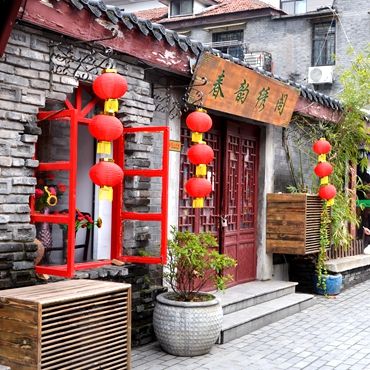 Wuhan
Wuhan
Highlights
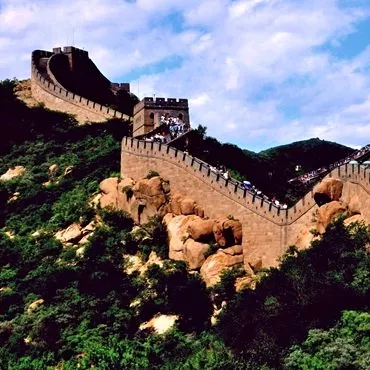 Beijing
Beijing
Highlights
Yonghegong Lamasery

Yonghegong Lamasery is a well-known lama temple of the Yellow Hat Sect of Lamaism, which is located at the northeast part of Beijing. It was originally built in 1694 as the residence of Emperor Yongzheng of Qing (1644-1911 A.D.) before his ascent of the throne. And after his death, it was renamed Yonghegong. His successor Emperor Qianlong then rebuilt Yonghegong into an imperial palace with its turquoise tiles replaced by yellow tiles (yellow was the imperial color in the Qing Dynasty). In 1744, it became a lamasery. From then on, large numbers of monks from Mongolia and Tibet and national center of lama administration live in there.
As an imperial palace, the layout of the temple differentiated from other temples. The main gate faces to the south. There are five main halls and annex connected by courtyards on its 480-meter-long north-south axis, including a glaze-tiled arch, Gate of Peace (Zhaotaimen), Buddha's Warrior Hall (Tianwangdian), which was formerly the entrance to Yongzheng's imperial palace, Hall of Harmony and Peace (Yonghegong), Hall of Everlasting Protection (Yongyoudian), Hall of the Wheel of the Law (Falundian) and Pavilion of Eternal Happiness (Wanfuge).

When you are walking through the grand glaze-tile arch patterned with decorative dragons and flowers in the first court, you will reach a three-arch gate - the Gate of Peace. In ancient times, the central passageway was for emperors. On each side of the second court next to the Gate of Peace stand the Bell Tower and the Drum Tower. Two pavilions stand symmetrically on opposite to the north. If you want to know more about the temple's history, you can have a look at the inscriptions of Chinese, Manchu, Mongolian and Tibetan engraved on steles.
The Buddha's Warrior Hall, also known as the Hall of Heavenly Kings, is the former entrance to Yongzheng's imperial palace. The hall Maitreya (Happy Buddha) was always used to greet visitors, which has a smiling face with a sandalwood pagoda on each side. Many small Buddhist images, symbolizing longevity, stand on the pagoda. Therefore, the pagoda is the Longevity Pagoda. There are four fearsome-looking Heavenly Kings or Celestial Guardians on both sides of Maitreya's shrine.
On the way to the Hall of Harmony and Peace stands a marble-based bronze incense-burner. With decorations of two dragons playing with a pearl on its six opens, it is 4.2 meters in height. Afterwards there is the Mount Sumeru, a bronze sculpture of Ming (1368-1644A.D.), representing the center of the world. On the top of it there lies a legendary paradise where Sakyamuni and men of moral integrity live after death; in the middle the dwellings of humans and below devils abide in hell.
The Hall of Harmony and Peace is formerly a place for the emperor Yongzheng to hold meetings. It was also called Mahavira Hall or Daxiongbaodian in Buddhism. Mahavira here is an honorable title of Sakyamuni in Chinese. Sakyamuni is on the altar, with Buddha of the Present in the middle with Buddha of the Past Yeja and the Buddha of the Future Maitreya on each side. On each side of the hall stand Statues of 18 Arhats. It is said that 18 Arhats were the disciples of Samkyamuni to diffuse Buddhism. The painting that you can find on the western wall is a Bodhisattva.
The Hall of Everlasting Protection (Yongyoudian) and the Hall of the Wheel of the Law (Falundian) are right behind the Hall of the Harmony and Peace, where enshrines a bronze image of Tsong Kapa -- founder of the Yellow Hat Sect. With 5 gold-plating pagodas, the golden-roofed Falundian was the place where lamas assemble to have religious activities. There is a 6-meter-high gilded bronze statue of Tsong Kapa on a lotus seat in the center of the hall.
Now there are nearly 70 lamas living in this temple. If you go there, you will find that regular religious activities are still practiced. More lamas can be seen coming here in the festival for lamas or Lamaism.
Old Beijing Hutongs

The numerous old hutongs are the distinguished features of Beijing. They symbolize the traditional community with small lanes, alleys and Siheyuan (quadrangle). The life of local people in these old hutongs makes this ancient capital look more charming. Wandering along these small lanes, you can see many quadrangles, called Siheyuan in Chinese, which are the residential quarters of natives. No one knows the exact number of these hutongs there are in Beijing.
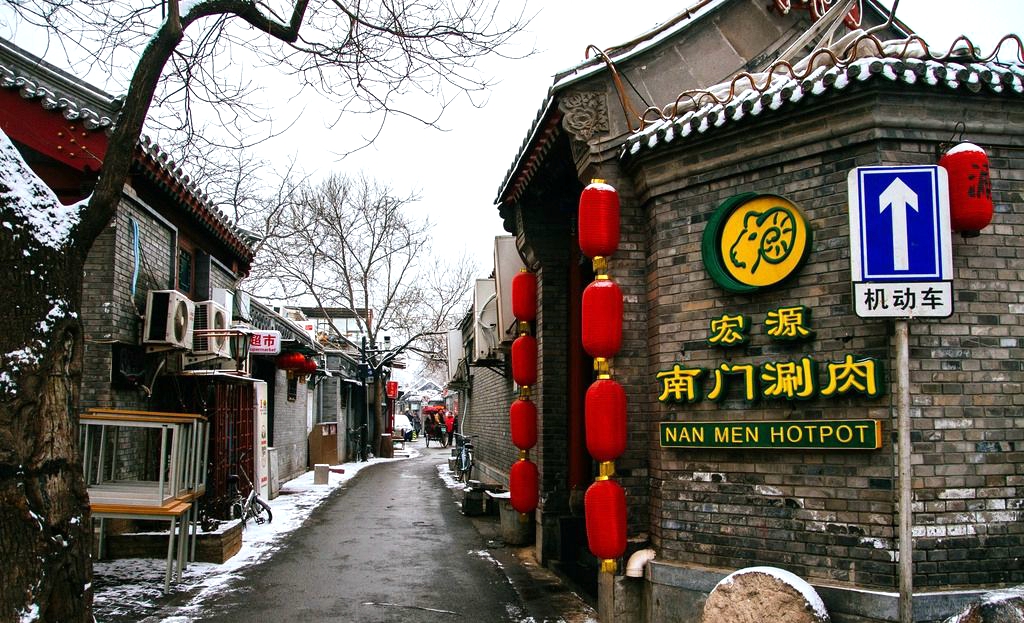
Great Wall

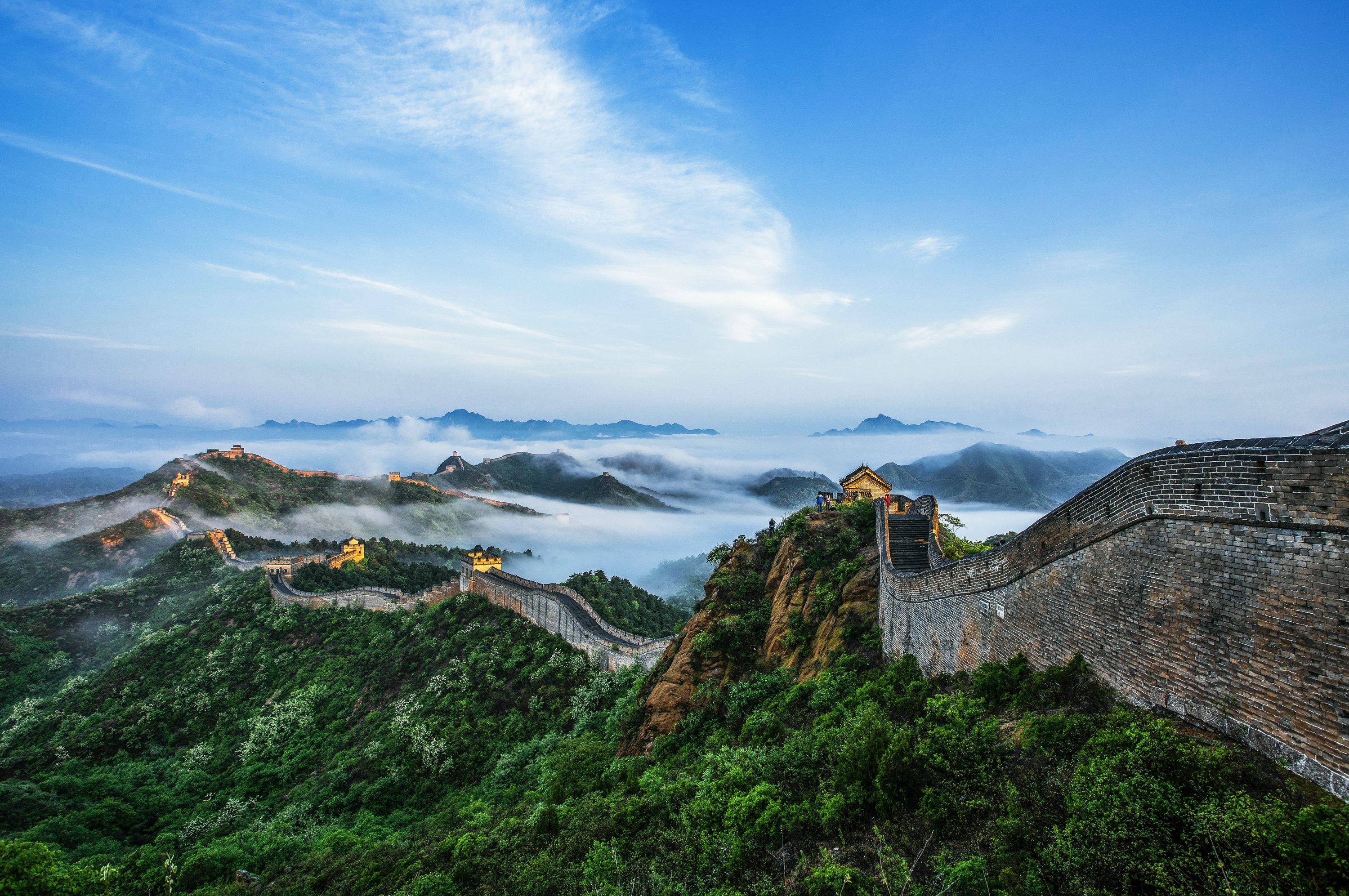
It is without doubt that the Great Wall is the greatest of civil engineering project of defense in ancient China. With its gigantic scale and difficulties in its construction, it is regarded as one of the great wonders in the history of mankind. The Great Wall is really the glory of the Chinese nation, which symbolizes the ancient culture and the long-standing history of China. Stretching over the mountain ranges, it proudly shows its magnificence to us. So to speak, the Great Wall has witnessed the rises and falls of innumerable dynasties and changes on the earth. At present, though the Great Wall is no longer served as a work of military defense against harassment and invasion. It still plays an important role in linking the Chinese people with the people of the rest of the world. It is one of the great bridges that build up friendship between different peoples.
The Great Wall is starting from the Old Dragon Head of the Shanhai Pass at the seaside in the east to a distance of 10,000 li (1 kilometer= 2 lis) in the west. Snaking along the north of China, it crosses three provinces, two municipalities and two autonomous regions. It is about 6,300 kilometers long, an equivalent of about 3,915 miles.
The present-day Great Wall originated from the early ancient Chinese history. During the time of Warring States Period (475-221 B.C.), in the purpose of defending themselves and against the infringement from the neighboring states, all the principal states had the walls built in the bordering areas of the territories. For example, the three states of Qin, Zhao and Yan had high walls and fortresses built along their northern frontiers to ward off the harassment by the Huns (an ancient nomadic tribe in China) from the north. In 221 B.C., the whole China was unified by the first emperor of the Qin Dynasty to defeat the six other ducal states. The emperor gave order to link up all the walls built by the former ducal states along the northern frontiers to prevent disturbing and attacking by the Huns. And these walls form the world famous “10,000-li Great Wall”. From generation to generation, the succeeding dynasties kept on the work of maintenance and repairs or having parts reconstructed time and again. Among them, the greatest project on scale in the old days of China was carried out in the Han and Ming dynasties.
Throughout history, the Great Wall is served as the traditional defensive project. It is mainly composed by passes, walls, watchtowers and beacon towers. Builders were forced to rely upon local materials for the wall inched across the Chinese wilderness. For example, some wall was built with tamped-earth, some with stone, some with tamped mixture of reed, red willow, and sands, and some with bricks outside and stuffed earth and sands inside. The walls we see today are mainly Ming walls, primary made of stone and bricks. The key parts of the military construction are Watchtowers. They are very close to each other, among which brick towers could be two or three storeys. There is a small room on the top of the tower, surrounded by battlements. The watchtower was also used to station soldiers or store food and weapons. Thousands of passes stretch along the Great Wall. Some are between the mountains, some between the mountains and rivers, and some between the mountains and sea. During the wars, passes are the strongholds by acting as the gateways of transportation. Beacon towers are used for communicating, which can deliver the emergent military messages in a very short time.
Just like the symbol of China—dragon, the Great Wall snakes from east to west on the Oriental. Nowadays, five sections of the Great Wall are opened to public in Beijing, including Badaling section, Juyong Pass section, Mutianyu section, Jinshanling section and Simatai section.
Badaling Section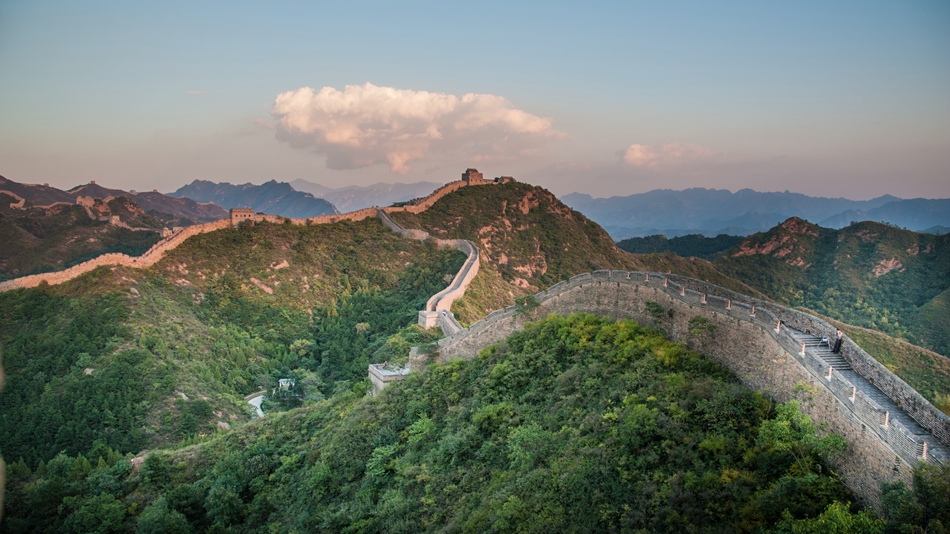
Badaling section is the outstanding part of the Great Wall. Lying in the Yanqing District, sixty kilometers northwest of Beijing, it gives vital protection for the Juyong Pass, which is one of the key passes of the Great Wall. According to its strategic importance of commanding, Badaling section is known as "giving access to every direction", which gains it the name Badaling.
Badaling was built in an early time in the ancient Chinese history. During Spring and Autumn Period and Warring States Period, defensive wall was constructed along the Yanshan Range to resist the marauding of the nomadic tribes. Since then the following dynasties continued to fortify the Badaling section. The wall we see today was constructed in Ming Dynasty (1368-1644 A.D.) along the ridges of mountains. The construction lasted about a hundred years long from 1505, the 18th year of Emperor Hongzhi, to the reign of Emperor Wanli.
The huge Badaling wall was strongly and firmly built. It was based on the foundation of granite slabs, surrounded by a facing of kiln-fired bricks, and covered with bricks on the top. All stuffed with pulverized lime, the slots could enable the wall to be smooth. The height of the wall is 8.5 meters. It is 6.5 meters wide at the bottom and 5.7 meters wide on the top, making it possible for 5 horses or 10 people march abreast on the top. Watchtowers are 0.5 or 1 kilometer apart from each other, which were full of vigor and grandeur, and orderly spotted the wall. The battlements and embrasures of the watchtower were in good condition in wartime. The wall winds its way along the ridge of the Jundu Mountain, rising abruptly to the peaks of each side of the Badaling. You will be amazed by its seemingly endlessness. It stretches far away into the remoteness. The wall of Badaling is 3, 741 meters long.
Among all the parts of the whole Great Wall, Badaling was the earliest section to be open to the tourists. Badaling has received 130 million tourists home and abroad. Among them, there are 370 foreign leaders and very important persons who have come to climb Badaling successively.
Mutianyu Section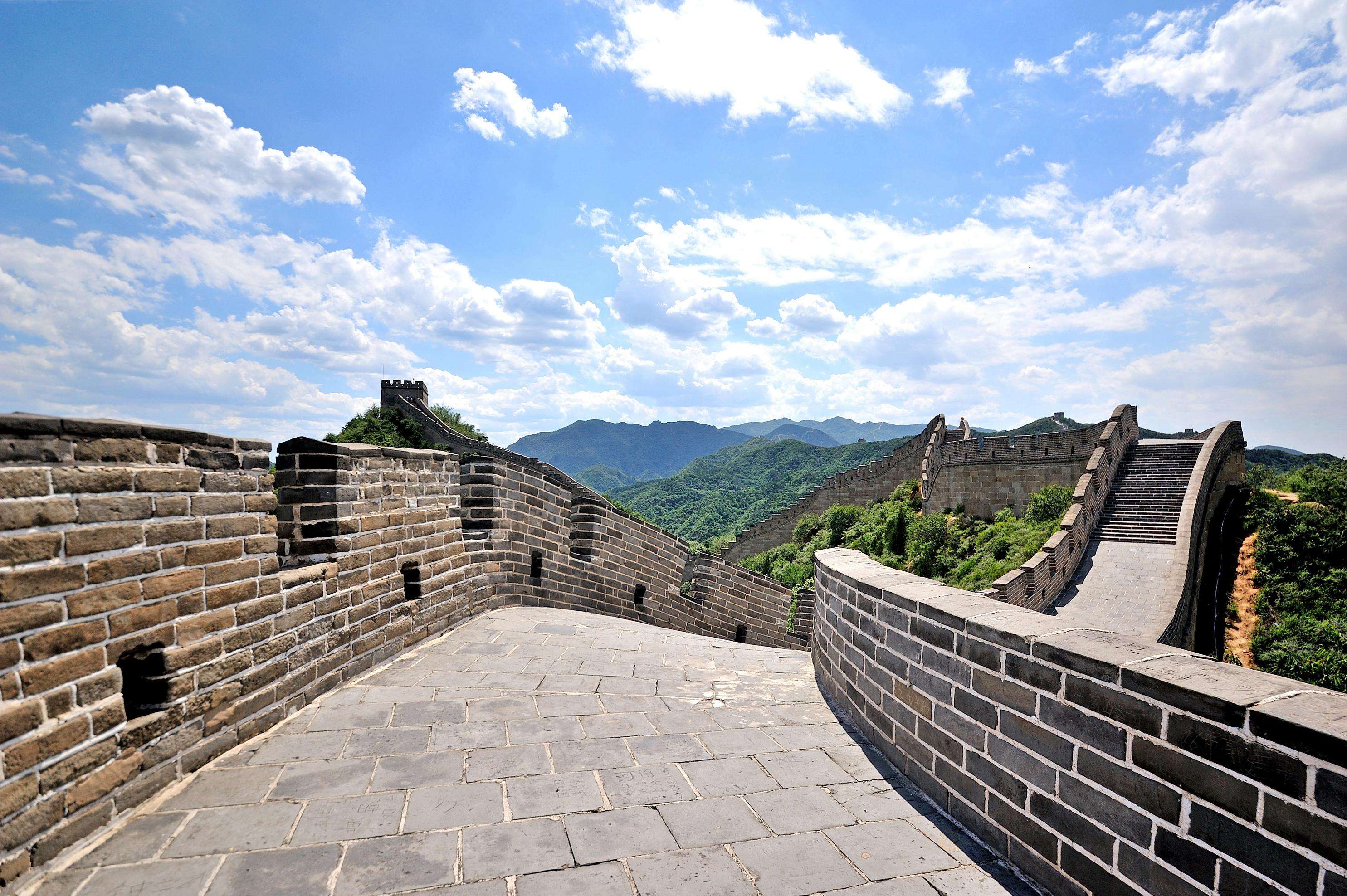
Mutianyu section is 75 kilometers northeast of Beijing. Lies in Huairou District, it links Juyong Pass in the west with Gubeikou Pass in the east. Mutianyu section is called as the Majestic Pass on Precipitous Mountains, commanding its strategic importance.
Because of its relatively gentle terrain, watchtowers of Mutianyu section were built in large numbers to strengthen its defensive functions. The closest watchtowers are less than 50 meters apart from each other. Both arms of the Mutianyu section stretch upwards along the ridges of continuous mountains. On the foundation of the Ming Dynasty wall The Mutianyu section was mainly built on precipitous mountains and 5-7 meters high. It is featured with a thick cluster of watchtowers atop, strategic passed, majestic vigor and unique structure. In this section, the gate tower is the most unique building.
Simatai Section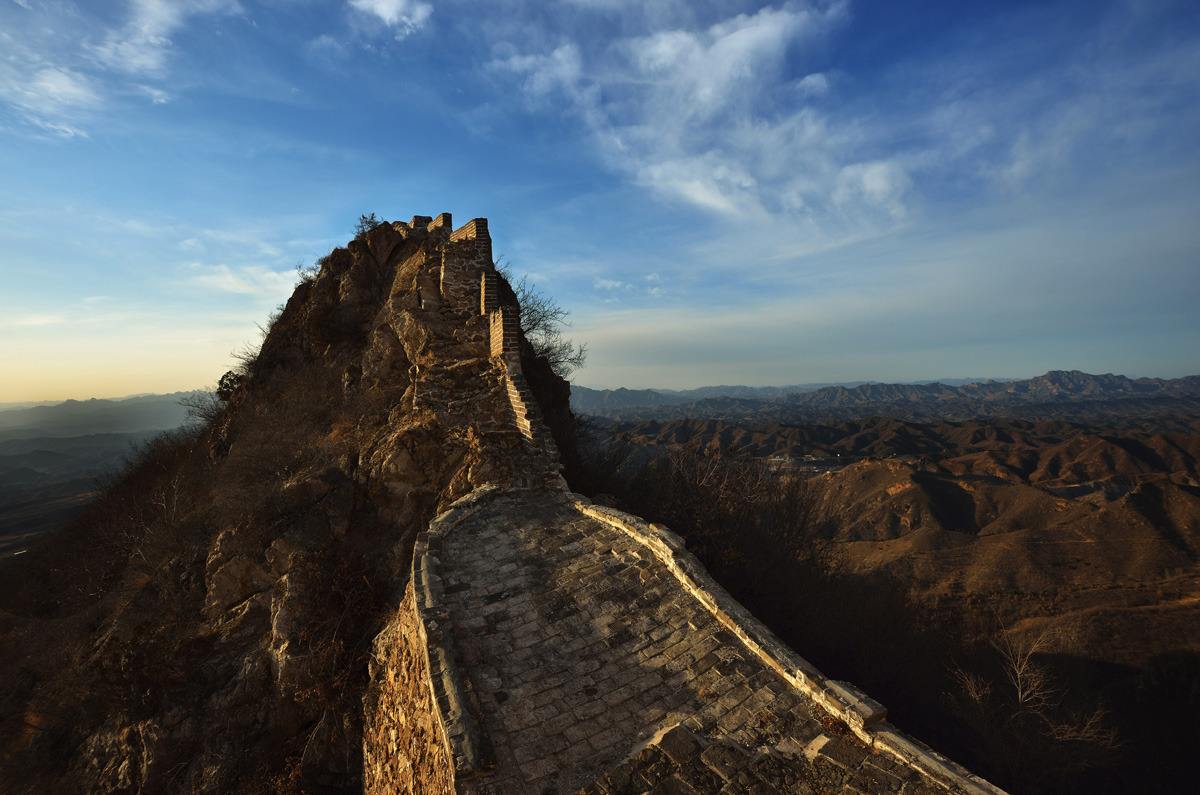
Simatai Section lies in the Miyun County, 120 kilometers away from Beijing. It started from Wangjing Tower in the east and connected with Jinshanling section in the west. Without hordes of other tourists, it is a largely unrestored and more authentic section of the Great Wall.
Simatai section was constructed during the early years of Ming Emperor Hongwu. It is said that there was a renovation applying from 1569 to 1573. It was mainly built along the ridge of the mountains because of its location in the mountainous area. Featuring in uniqueness, ruggedness and trimness, it perfectly coordinates with the undulating terrain, which makes it more majestic and magnificent. Simatai reservoir is situated at the foot of the central part of the Simatai section, which is 600-700 meters long with the storage capacity of 50,000 cubic meters.
Simatai section is considered to be the most wonderful part of the Great Wall. Taking good advantage of the fluctuating terrain, the walls and watchtowers constitute the most essential part of the wall. It is famous for its precipitous cliffs, magnificent towers, suspension walls and rugged stairways. If you are looking from distance, you may find that the Great Wall is just like a flying dragon in the cloud. However, when you stand nearby, the wall stretches its arms along the ridges of mountains. All these make it the most amazing part of the Great Wall.
Jinshanling Section
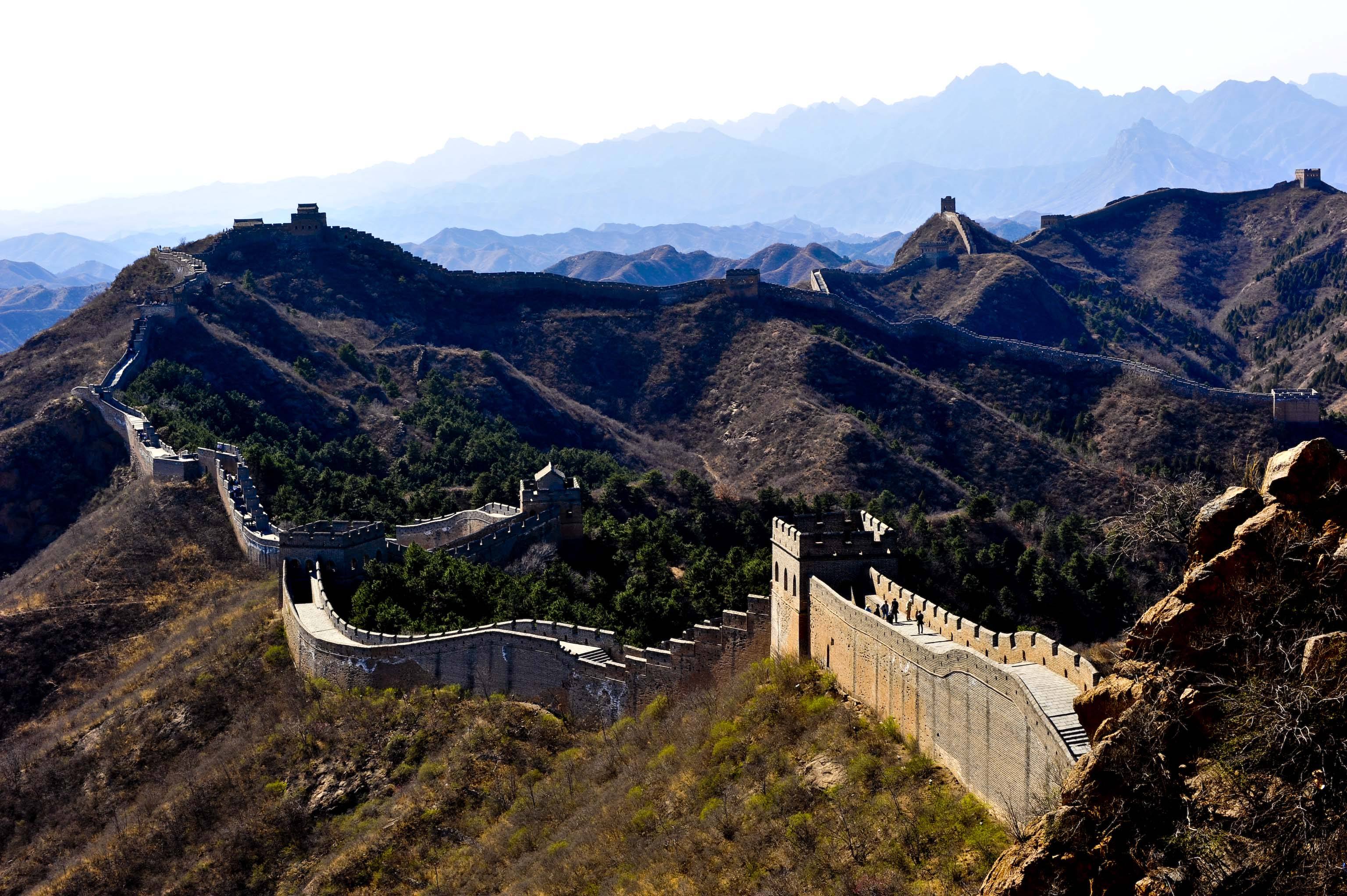
The Jinshanling Great Wall was initially built from 1368 to 1389 in the Ming Dynasty (1368-1644), and in 1567 and 1570 rebuilding of the Wall was mainly directed by General Qi Jiguang (1528-1588). Poems and tablet writings can be found on the Jinshanling Great Wall left from the time when Qi Jiguang directed the rebuilding of this section of the Great Wall. Continue to read more on the Great Wall history. Jinshanling is connected to the Simatai Great Wall in the east and the Panlongshan Great Wall in the west. Jinshanling has probably the highest frequency of towers per kilometer of any place along the Ming Dynasty Great Wall. It also has one of the greatest varieties of architectural and defensive styles of both wall and towers.
The total length of this section is about 11 kilometers (6.8 miles). The Wall is about 7 meters high and 5 meters wide, and is made of brick and stone. The Jinshanling Great Wall has an elevation of 700 meters. There are more than 100 watch towers along the Jinshanling Great Wall. ‘Watching Beijing Tower’ is on the highest point, from which you can see Beijing. The Jinshanling Great Wall is second only to the Badaling Great Wall in its completeness.
Tian’anmen Square
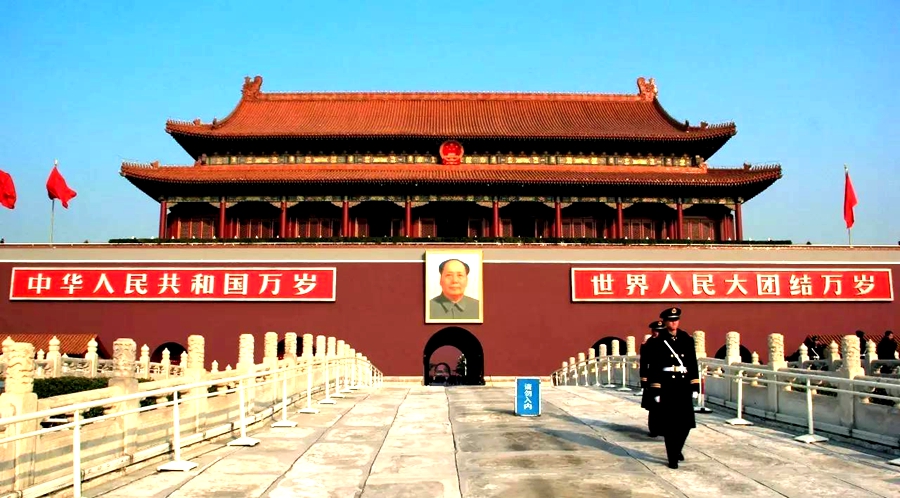
Tian’anmen(Gate of Heavenly Peace), situated at the center of Beijing meaning in English, symbolizes the People's Republic of China. Built in 1417, it was formally called Chengtianmen (Gate of Heavenly Succession). At that time, it was the front gate of the Imperial City. By the end of the Ming Dynasty, the uprising farmers led by Li Zicheng entered the city, but later when the Qing army marched upon Beijing, the Chengtianmen was destroyed under the crossfire. In 1651, it was rebuilt and named "Tian'anmen".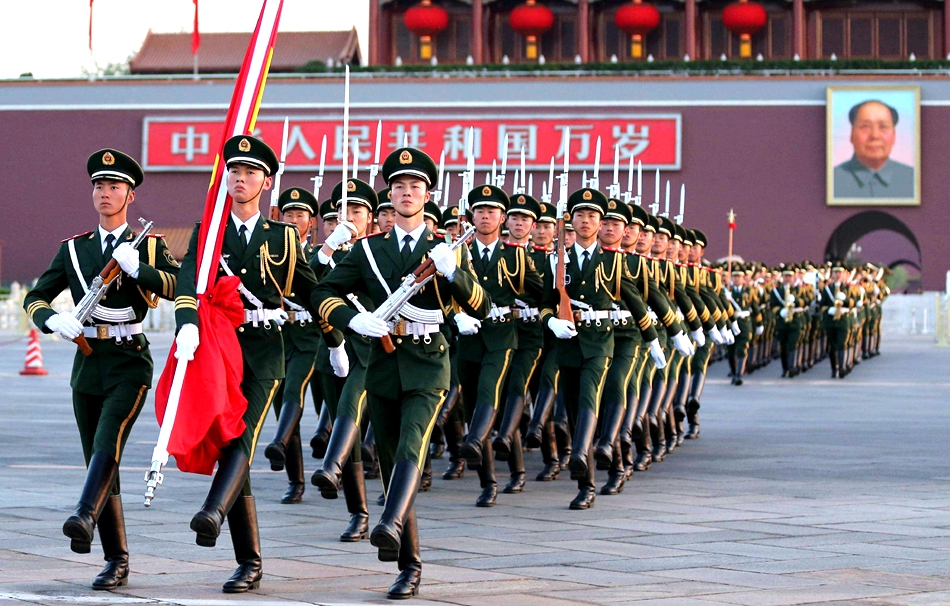
The Tian'anmen Rostrum, as a place to hold ceremonies of great importance, such as promulgating an imperial edict conferring the title of a queen, or announcing a newly enthroned emperor, was made known to the public all over the country. During the Ming and Qing dynasties, it was popular to hold the Imperial Exam system for choosing high-ranking officials by way of a palace examination, which supervised by the emperor himself. If the examinees ranked the first three, they would be entitled. What’s more, they would have the honor to be granted an audience by the emperor two days after the examination. On that day they would be called in to see the emperor in turn in the Tian'anmen Rostrum.
There is a square running 880 meters from south to north and 500 meters from east to west in front of the Tian'anmen Rostrum. It is the Tian'anmen Square – the very center of Beijing. Tian'anmen Square is the largest city square in the world with an area of 44 hectares.
During the Ming and Qing dynasties, the Tian'anmen Square was a piece of land in front of the Imperial Palace, an open space jetting out towards the south from the Tian'anmen Gate. It had a meaning of embodying the outstanding importance of the Tian'anmen Gate and the Imperial City. In the early days of the Ming Dynasty, a gate of brick and stone was built, which is right on the site of the present Memorial Hall of Chairman Mao Zedong, called Damingmen (Gate of the Great Ming). In the Qing Dynasty it was renamed as Daqingmen (Gate of Great Qing) and after 1911 Zhonghuamen (Gate of China). Later on, another two gates of brick and stone structure were built on each site of the avenue in front the gate. Surrounded by a newly built red wall, the area within the three gates formed a small square of only 11 hectares-- Tian'anmen Square.
During the Ming and Qing dynasties, common people were forbidden to enter the Tian'anmen Square. And for the officials, when they entered the gate, they had to get off horses and proceed on foot into the palace. The government offices were lined outside the wall on the east and west. According to the traditional system, the civil service organizations were set in the eastern part of the square, and the military organizations in the west.
Old buildings in the Tian'anmen Square were put down after the collapse of the Qing Dynasty in 1911. In 1957, the square expanded with an area of 44 hectares, which may hold 1 million people at a time. With Chairman Mao's Memorial Hall right behind, the Monument to the People's Heroes towered in the center of the square. To the east of the Square, there is the National Museum of China and to the west the Great Hall of People (National People's Congress building).
The Monument to the People's Heroes is the largest monument in China's history which was built in 1952. On this monument, you can see the words--"The People's Heroes are Immortal", which were written by Chairman Mao. The development of Chinese modern history and those who contributed their lives to the democratic progress are shown by the eight unusually large relief sculptures. The monument is enclosed by two rows of white marble railings. It seems very simple and beautiful.
At the south side of the Square is the Memorial Hall of Chairman Mao Zedong. This Hall is consisted by three halls, among which our dear Chairman Mao's body lies in a crystal coffin in the halls surrounded by fresh bouquets of various famous flowers and grasses.
The Great Hall of the People is in the west of the Square. Constructed in 1959, this building is the site of the China National People's Congress meetings, which also provides an impressive site for other political and diplomatic activities. With twelve marble posts, the Hall includes three parts--the Central Hall, the Great Auditorium and a Banqueting Hall. The ceiling of the Central Hall is decorated with crystal lamps and the floor paved with marble. The Great Auditorium behind the Central Hall can hold 10,000 people, while the huge Banqueting Hall can seat 5,000.
At the east side of the Square stands the China National Museum, which is another important place for you to visit. Built in 2003, it is a mergence of China History Museum and China Revolutionary Museum. This National Museum is on the opposite of the Great Hall of the People. In the China Revolutionary Museum, there are a lot of material objects, pictures, books and models, presenting the development of modern China. A large number of cultural relics are exhibited in the China History Museum, illustrating the long history and glorious culture of China from 1,700,000 years ago to 1925 when the last emperor left the throne.
Forbidden City
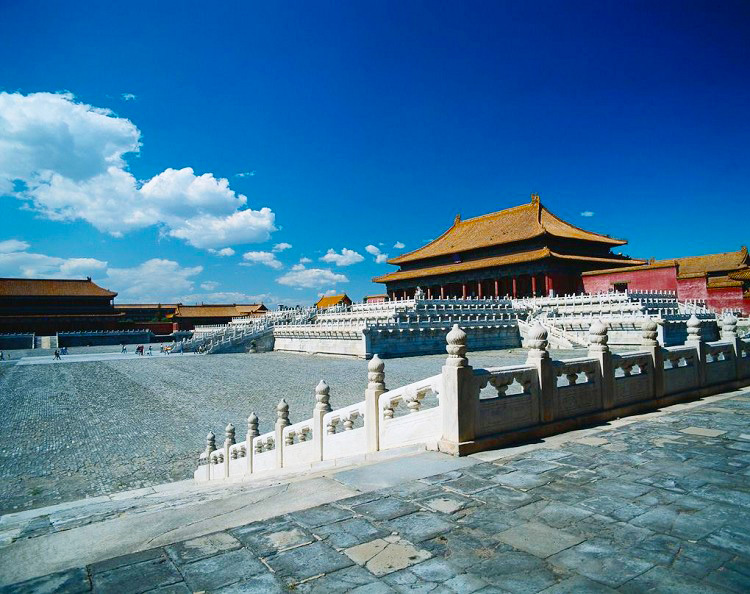
The Palace Museum, the imperial palace in the Ming and Qing dynasties, is the largest and best-preserved palace complex in the world today. It is also called the Purple Forbidden City in Chinese. Its name, on one side, derives from ancient Chinese astronomers' belief that God's abode or the Purple Palace. The pivot of the celestial world, is situated in the Pole Star (the middle of the Ziwei Star), at the center of the heaven. Therefore, the son of God of Heaven--the emperor, should live in the Purple City. On the other side, without special orders of the emperor eunuchs and guards, ordinary citizens were not allowed entering the Forbidden City, except for palace maids. For this reason, palaces in the Ming and Qing dynasties are called both the Forbidden City and the Purple City.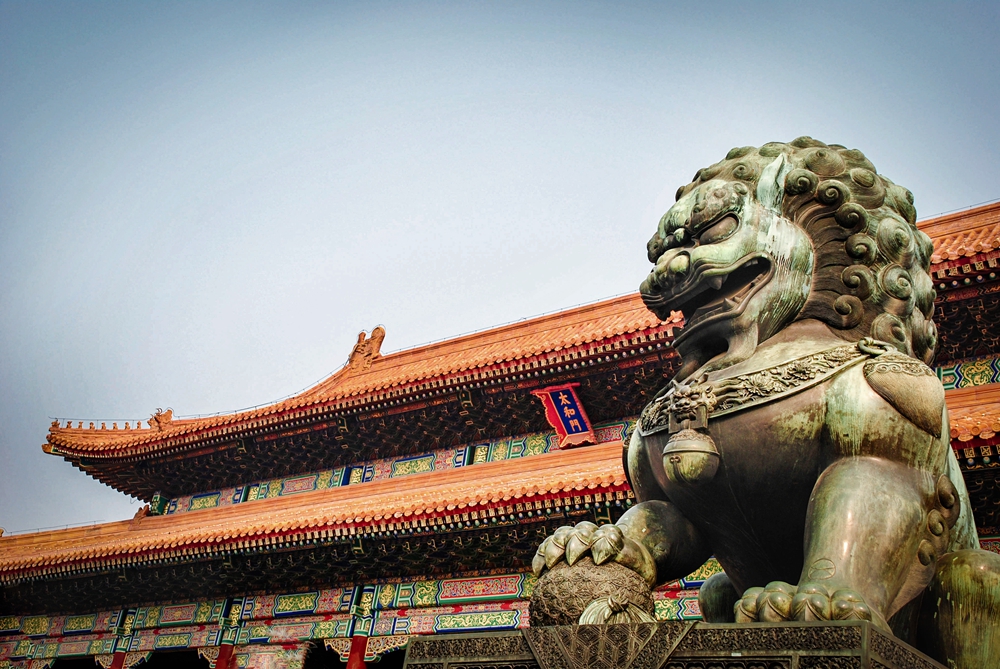 The Construction of the magnificent palace started in 1406, and ended in 1420. It took 14 years to complete the project. One year after completion, Emperor Yongle moved his capital from Nanjing to Beijing. Since then, 24 emperors have lived at the Forbidden City, 14 during the Ming Dynasty and 10 during the Qing Dynasty.
The Construction of the magnificent palace started in 1406, and ended in 1420. It took 14 years to complete the project. One year after completion, Emperor Yongle moved his capital from Nanjing to Beijing. Since then, 24 emperors have lived at the Forbidden City, 14 during the Ming Dynasty and 10 during the Qing Dynasty.
The Forbidden City covers an area of over 720,000 square meters, 750 meters wide and 960 meters long. And it has four great gates. The fabulous city, which is surrounded by a 52-meter-wide moat, has four delicate and lovely turrets overlooking both the inside and outside.
The Forbidden City has more than 8,700 wooden rooms, most of which have yellow-glazed tiles. It is a color that only emperors were allowed to use on their roof. From the northern Drum Tower and the Bell Tower to the Southern Gate of Everlasting Stability (Yongdingmen), these colorfully painted and embellished rooms are divided symmetrically into northern and southern halves. If you walk into the city, you will see the layers of halls and palaces spreading out on either side of a central axis. As the designations of the wise architectures, the splendid buildings represent the unique features of the traditional Chinese architecture and embody the incredible creativity of the ancient Chinese people. Reconstructed after being destroyed by several fires, this pearl of Chinese cultural heritage still retains its original arrangements of the Ming dynasty. Nowadays, most of the existing buildings open to visitors were reconstructed during the early Qing Dynasty.
In many ways the Forbidden City reveals ancient Confucian ideas, as it is generally designed to the principles of the Front court, Rear Market, Ancestral Sacrifice on the left and Altar on the right. Hence, the court was located in the southern or front section of the Forbidden City, where officials discussed political affairs. A large trading market was situated in the rear part of the city, providing daily necessities for the court. On the left side was the Imperial Ancestral Temple, where the emperor offered sacrifices to his ancestors. Nowadays, it is the Working People's Cultural Palace. On the right side was the Altar to the god of Land and Grain, where the emperor displayed his reverence to the god. This is now Zhongshan Park.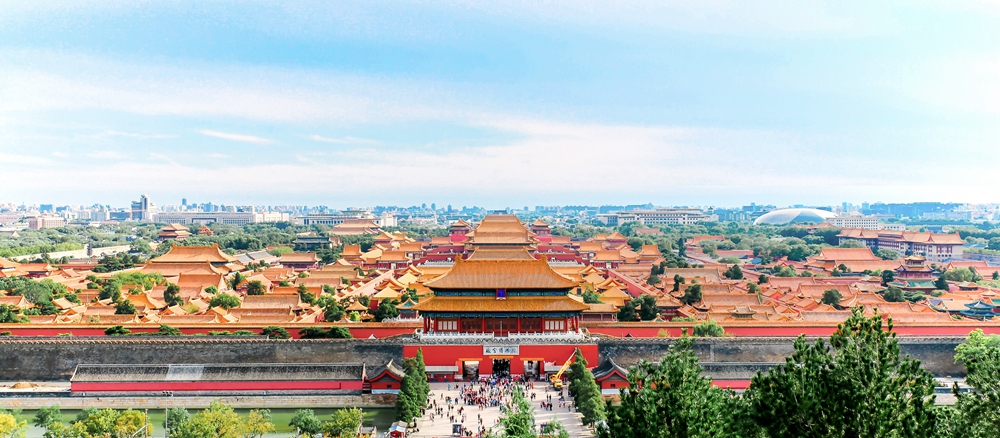
There are two courts in the Forbidden City: the Inner Court and the Outer Court. They are separated across the middle between the south and north ends. The Outer court is mainly composed by the Meridian Gate and the Three Front Halls, flanked by the Hall of Literary Glory (Wenhuadian) and the Hall of Martial Spirit (Wuyingdian), which witnessed various ceremonies and political activities during the Ming and Qing dynasties. While the inner court is mainly consisted by the Three Back Halls, Imperial Garden, Hall of Mental Cultivation and Palace of Abstinence, which are flanked by the Six East Halls and the Six West Halls. This was the place where the emperor was confronted with political affairs and was the residential area for the emperor and his empresses and concubines.
Compared with other contemporary palaces, the Forbidden City stressed more on balance and independence, and embodied more cultural perspectives of the specific ethnic group. Just as what was written in the book of History of Chinese Science by Joseph Needham, each part of the Forbidden City is in well balance and independence, which is just on the contrary to other palaces in the Renaissance Age. For the city, the Palace of Versailles is just acting as an object. The palace is an organic part of the whole city, combining deep deference to nature with lofty significance. As a tin far-reaching and complicated Chinese architecture, Great overall arrangements have reached the highest level, far above any other culture.
After the subversion of the Qing Dynasty by the Revolution of 1911, the last emperor Pu Yi was exiled to palaces at the rear of the Forbidden City. In 1914, the Three Great Halls in the Imperial Palace was opened as exhibition hall of antiquities. Ten years later, Feng Yuxiang staged a coup in Beijing and expelled the last emperor from the palace. Oct. 10, 1925 established The Palace Museum. And in 1961, the Forbidden City was listed as a place to be given special protection by the State Council. UNESCO listed it as World Cultural Heritage site in 1987.
The Forbidden City, as one of the world-famous royal palaces, has played an important role in the world architectural history. Many tourists both from home and abroad have been attracted by the almost 1 million rare treasures and cultural relics on exhibition there.
Summer Palace
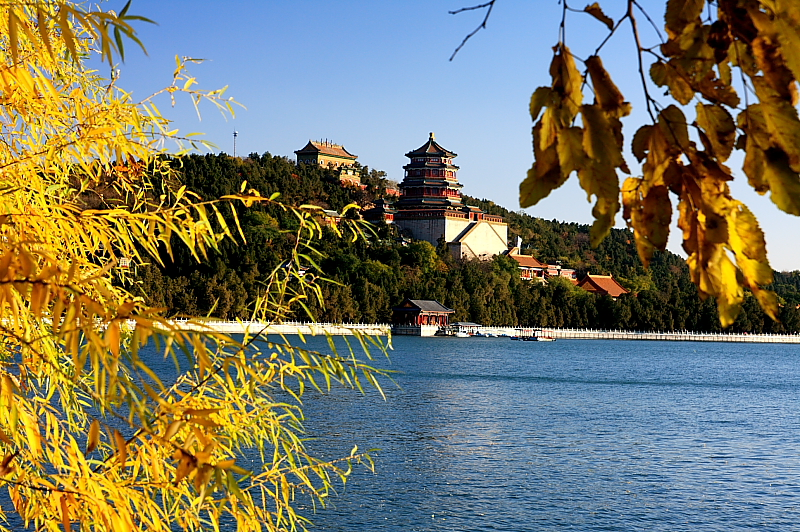
Covering an area of 290 hectares in total, the Summer Palace spreads out some 15 kilometers away from the city center in the north western suburbs of Beijing. Three fourths of the palace is covered by a pool of water and the rest the land and hills.
The Summer Palace is the summer resort of the Qing royal family. Now it is the most intact, the best-preserved and the largest of its kind of the classical gardens in the country. Since the garden began to be built in 1153, it had undergone many a time reconstruction and renovation in the Yuan and Ming dynasties. In the period of Emperor Qianlong’s reign of the Qing Dynasty, it was still reconstructed in a large-scale. And this time was renamed the "Garden of Crystal Ripples". When it was completed in 1860, it suffered a severe destruction, led by the Anglo-French Allied Army, which brought it down to ashes. In 1886, Empress Dowager Cixi embezzled the funds allocated for the building of the navy to rebuild it and renamed it the "Summer Palace". However, in 1900, it underwent destruction again by the Eight Powers Allied Forces. Later, the1903 saw its second-time rebuild.
On the 12th of October 1911, Empress Dowager Longyu was finally forced to promulgate the abdication of the royal power. However, according to the agreement between the Qing royal family and the republic government, the Summer Palace would still be kept in the hands of the Qing royal family, while yet to be opened to outside as private property by selling admission tickets. 1924 when Puyi was ousted, the Summer Palace was taken over by the republic government and changed to be a public park.
The Qing royal family stayed in the Forbidden City in spring, autumn and winter. And when it came to summer, they went to their summer resort –Summer Palace. Hence, the Summer Palace shares the same functional quarters as that in the Forbidden City. Among these quarters, the office quarter, the living quarter and the entertainment quarter formed the magnificent scenery in Summer Palace.
Through the East Palace Gate, there is the Hall of the Benevolence and Longevity. The emperor used to handle state affairs and listen to reports by ministers and receive foreign envoys in there. It was called the Hallo of Diligent Administration by Emperor Qianlong during his reign. In 1860, it was burnt down by the Anglo-French Army. Reconstructed In 1890, it was then renamed the "Hall of the Benevolence and Longevity". During the reigns of Emperors Tongzhi and Guangxu, Empress Dowager Cixi got the real power to rule the country, and she started to handle state affairs behind the screen.
The Hall of Jade Ripples and the Hall of Happiness and Longevity are the three parts of the living quarter. Guangxu used to live in the Hall of Jade Ripples Emperor in the Summer Palace. After his failure of the Reform Movement of 1898, Emperor Guangxu was put into house arrest here. Thus, it is also regarded as an exquisitely decorated jail.
Consisting of four rooms, the Hall of Happiness and Longevity used to be the residence for Empress Dowager Cixi. The Empress moves to the Summer Palace and stays there in the hall every year on the first day of the fourth month in the lunar calendar. And she won't return until the tenth of the tenth lunar month when she had celebrated her birthday there. In the Summer Palace, there are over 1,000 people dancing attendance on the Dowager. Among them, there are 48 in the Hall of Happiness and Longevity, of whom 20 are maids-in-waiting, 20 eunuchs of importance and another 8 are the "ladies-in-waiting" by her side, normally waiting in the room behind the precious throne to attend on her.
The Long Corridor, the starting point of entertainment quarter, is at the end of the courtyard of the Hall of Happiness and Longevity. It is 728 meters long with more than 14,000 traditional Chinese paintings on the beams and rafters. The four pavilions along the corridor represent the four seasons a year. The Marble Boat can be found at the end of the Long Corridor. The original Chinese style of it was burnt down by the Anglo-French Army in 1860. In 1893, it was rebuilt into one of a western style, imitating a steam ship with two water-wheelers. In 1903 Empress Dowager Cixi built another storey of wooden structure with the decoration of colored pieces of glass. The construction of this immovable boat was to symbolize the stable and consolidated rule of the Qing regime just like a large piece of rock. It would stand still forever in the vast ocean and would, under no circumstances whatsoever be wavered or toppled.
Occupying three fourths of the total area of the Summer Palace, Kunming Lake plays important role in the adjustment of the temperature in the garden. Taking a walk in the Long Corridor and a dragon boat on the lake, you will have a wonderful feeling that you were the emperor and empress in ancient China.
Temple of Heaven
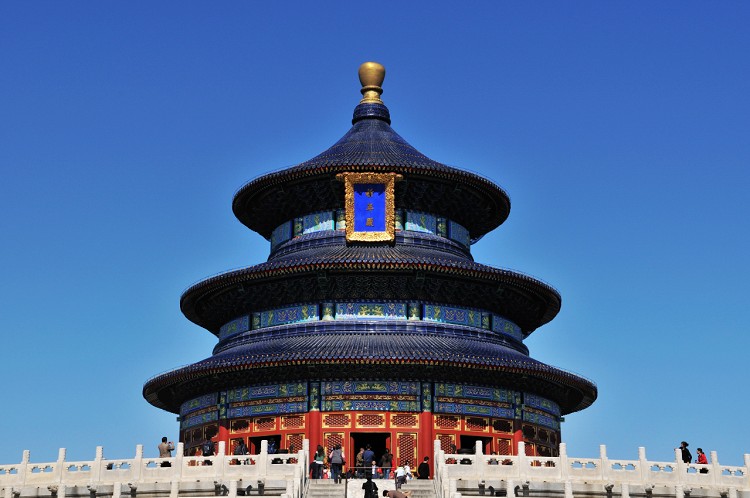
The Temple of Heaven stands in the southern part of Beijing. It was used to be the house ceremonies of emperors of worshipping heaven and praying for harvest in the Ming and Qing dynasties. This altar temple remains to be the largest existing ancient sacrificial structures across the world, more important than other three major temples, i.e. Altar to the Earth, Altar to the Sun and Altar to the Moon.
The Temple of Heaven was built in 1407 and the construction of the project took 14 years. Covering an area of 273 hectares, with two surrounding rings walls, it is four times bigger than the Forbidden City. The wall, stretching from north to south, is as long as 1,657 meters and that from east to west 1,703 meters. The outer wall is 6,553 meters in circumference while the inner wall measures 4,152 meters in perimeter.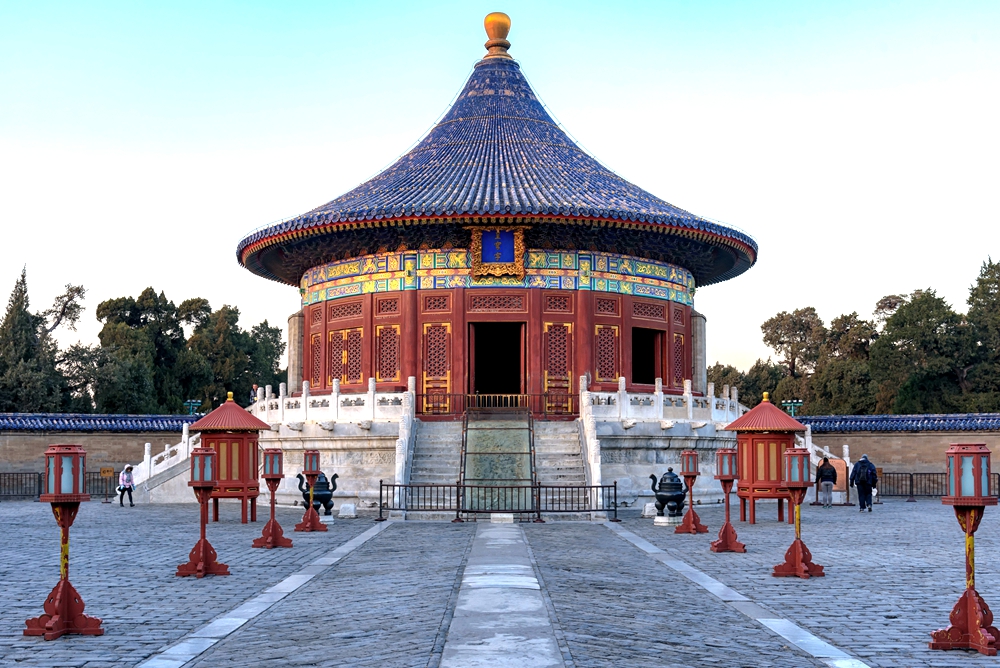
To pray for good harvests and fine rain, emperors did regular worshipping and offered sacrifices to heaven. And the Temple of Heaven was used to the place where emperors of the Ming and Qing dynasties went and worshipped the heaven twice (and sometimes three times) a year. In the past, the tradition went that sacrifices were offered to heaven and earth in one place only. But in 1530 when the Temple of Earth was built in the north of the city, the Temple of Heaven was ever since used specially for offering sacrifices to heaven alone.
The Temple of Heaven is consisted by three sections, named the Circular Mound Altar, the Imperial Vault of Heaven and the Hall of Prayer for Good Harvests, attached with some affiliated buildings like Dressing Platform, Long Corridor and Echo Wall.
The Circular Mound Altar was first constructed in 1530. In ancient China, to some extend, the altar was a place that even more important than the Hall of Prayer for Good Harvests. The emperor would come to offer sacrifices to heaven on the altar every year on the day of the Winter Solstice. For this reason, the altar was rebuilt into a circular one in 1749. Built in the open air without shelter, the sacrificial ceremony was being held right under heaven. Therefore, it was called "Luji", or the "open air offering of sacrifices".
The Imperial Vault of Heaven was first built in 1530 as a main building in the south of the Temple of Heaven. At first, it was called "Taishendian" or the Hall for Pacifying Gods, but later changed into the present name. In 1752, the building was rebuilt into one of a single eave, which used to have double eaves. Standing 19.5 meters high and of 15.6 meters in diameter, the circular hall used to be an octagonal one in the past. The tablet of the Jade Emperor, the four stone platforms on both sides used to be for the tablets of the emperor’s ancestors of eight generations in succession, is consecrated on the central stone-platform in the Hall of Imperial Vault of Heaven.
Being of 32.72 meters in diameter, built on a three-tired platform, the Hall of Prayer for Good Harvests towers 38 meters' high with its eaves fanning out on three tiers, of which the upper one has a gold-plated knob on it. You will be amazed to see that such a heavy building was supported only by 28 wooden pillars with no single piece of reinforced concrete at all. The whole building was built by mortise and tenon joints without using a single nail. With each pillar in height of 19.2 meters, the four pillars in the center of the hall are called "Longjingzhu"--the Dragon Well Pillar. Only by joining hands together by two and half persons, can it be embraced. These four pillars indicate the four seasons of a year. You may find it more interesting that all pillars have their special meanings: the outside 12 pillars suggest 12 months in a year and another 12 pillars in the round wall symbolize the 12 two-hour periods of a day. And when you put the two 12 pillars together, the number you get is 24, which represents the 24 solar terms of a year. And when you add the four in the center of the hall to 24, you will get 28, which represents the 28 lunar mansions in the heaven above.
Since its first construction in 1420, the Hall of Prayer for Good Harvests has gone through several times of changes. At that moment, the hall was called "Dasidian"--the Hall of Grand Sacrifices, which was rectangular in shape. But in 1529, it was reconstructed into a round one with a roof of three tiers. And this time it was named "Daxiangdian"--the Hall of Grand Treatment to Heaven. Three different colors were painted in these roofs of three tiers. From the upper tier to the lower one, the colors are respectively blue, yellow and green. In 1752, these three colors were all changed into glazed tiles of dark blue. However, they were destroyed by lightning in 1889. And later in 1890, it was restored according to the original. In 2006, the whole building was renovated with all its paintings according to the same style as they done last time. The Hall of Prayer for Good Harvests has become the symbol of Beijing.
At present, the Temple of Heaven is very popular with tourist home and abroad. It is also an entertainment center for local people. If you go to the temple early in the morning, you will find many local people practicing Taiji, playing cards and Chinese chess and singing folk songs there.
Ming Tombs
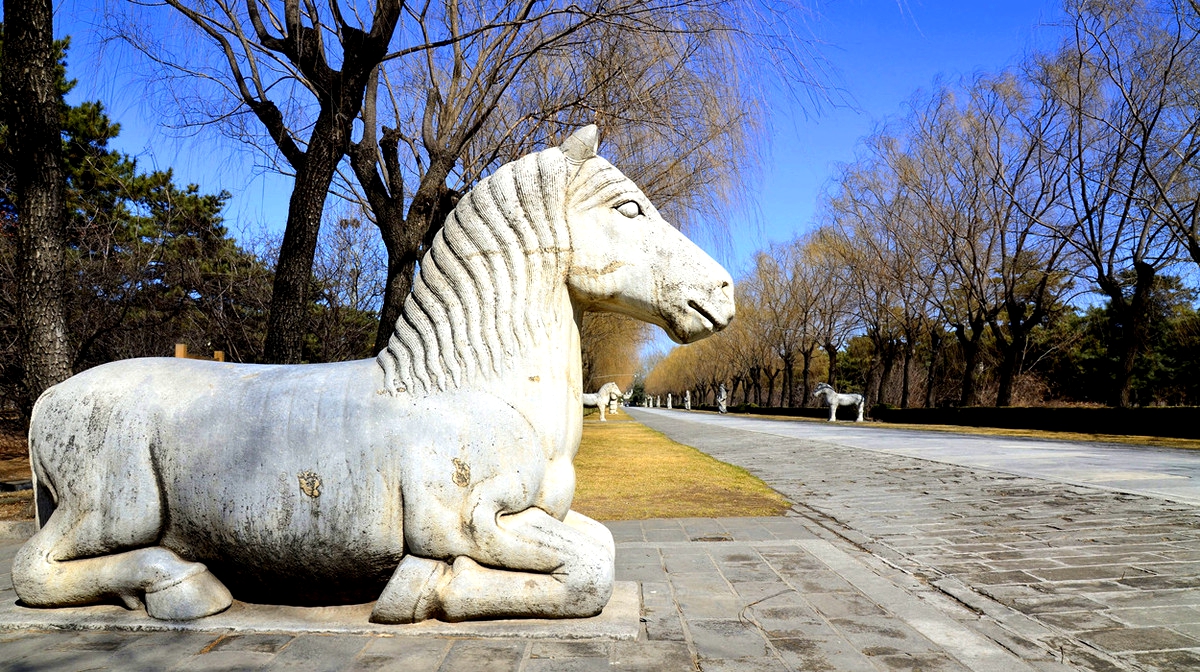
Covering an area of 40 square kilometers with 13 Ming emperors buried, the Ming Tombs is situated at the southern foot of the Tianshou Mountain in Changping District in the north western suburban areas of Beijing. The construction of the imperial tombs had been going on ceaselessly from the year 1409 when Emperor Zhu Di started building his tomb to the fall of the Ming Dynasty in 1644, lasting a period over 200 years.
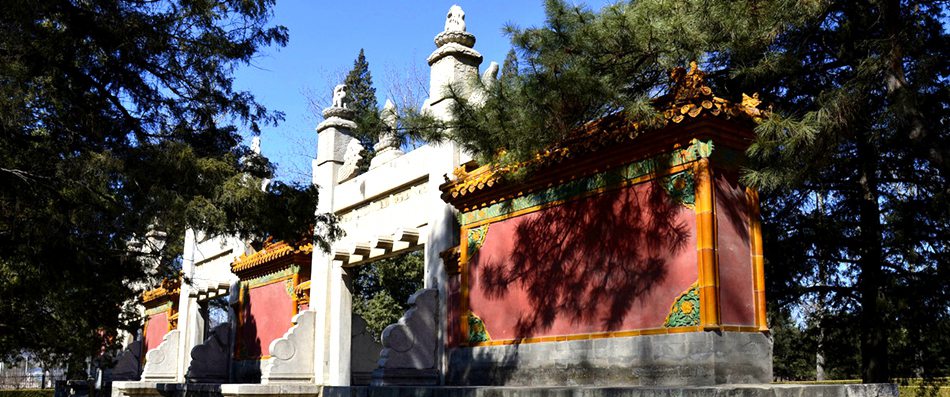
As many people know, there are 16 emperors in the Ming Dynasty. Among the 16 Ming emperors, 13 of them were buried in this tomb area, except for Zhu Yuanzhang, the founder of the Ming Dynasty who was buried in the Xiaoling Mausoleum in Nanjing, Zhu Yunwen, who disappeared and Zhu Qiyu, who was buried at Jinshan Hill in the western suburbs of Beijing, all other. Therefore, this area was called the 13 Ming Tombs.
It was originally built only for Emperor Zhu Di and his empress, named Changling, which is the most magnificent tomb. The succeeding twelve emperors had their tombs built around Changling. At present, the two tombs opened to the public are Changling and Dingling.
Changling is the first Ming tomb built in this area. Hence, the axle line of Changling naturally became the axle line of the whole Ming Tombs. Along with the various tombs, the Stone Tablet House come together overall as a structurally and visually unified architectural accomplishment. Though these tombs were built in different periods, they were strategically planed and built in different stages. Each tomb has its own distinct adornments. However, the entire tomb area has a unified layout and style.
Zhu Di was the third emperor in the Ming Dynasty, who was buried together with his empress in Changling. During his 22-year of reign, he was, relatively speaking, an emperor who had made quite some achievements. For example, he determined to move the capital from Nanjing to Beijing in 1421. To some extend, the move itself was an expression of far-sightedness, for it was very important to strengthen the national defense and guard frontier areas. During the period from 1405 to 1424, Zheng He, also called Eunuch Sanbao, was sent by the emperor to fulfill a diplomatic mission which was on an ever larger and broader scale in Chinese history. He went six times on board across the sea to over 30 countries in Asia and Africa.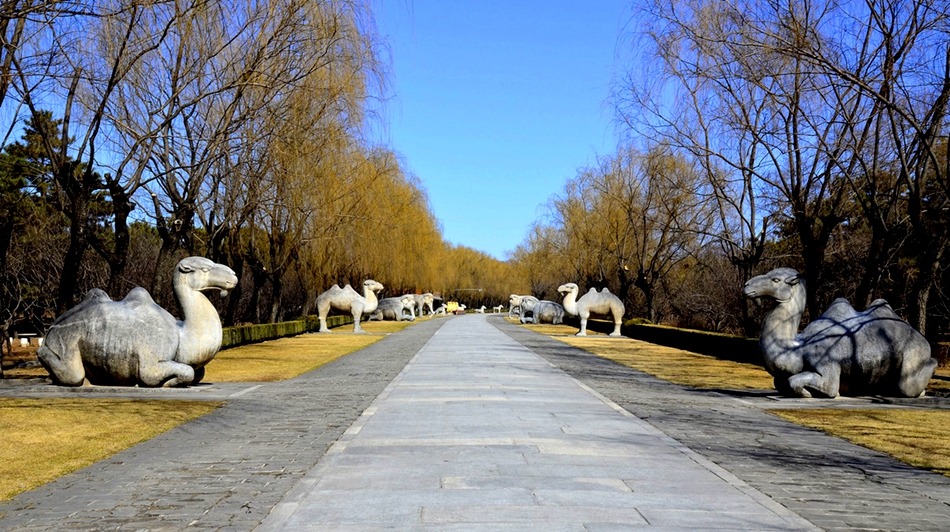
Completed in 1416, as the place for worshipping tablets of the emperor and empress and offering sacrifices to ancestors, the Hall of Eminent Favor is situated within the second compound of Changling. The Hall of Eminent Favor in Changling is the best-preserved among the ones of the 13 tombs, which duplicated the Hall of Supreme Harmony in the Forbidden City. It is a very precious relic of ancient China's wooden structures.
Dingling is the tomb for Emperor Zhu Yijun, named the tomb of Stability. It is said that he was buried together with his two empresses—Xiaoduan and Xiaojing. Ascending the throne at the age of 10, Zhu Yijun was died at 58 with a reign span of 48 years. Therefore he became the emperor with the longest time in power for in the Ming Dynasty. The construction of the Dingling tomb started in 1584. It took 6 years to bring the project to finish in 1590, covering an area of 180,000 square meters and costing 8 million taels of silver.
The Dingling began to be excavated in May 1956, which brought to light the mystery of the underground palaces of the Ming Tombs. Constructed with hard stone-slabs, with a total floor space of 1,195 square meters, the underground palace is composed by five beamless vaults, called the front, the middle, the rear and the two annexes on the right and the left. Carved out of white marble and the rear hall with the bier holding three coffins for the emperor and his two queens, three thrones were laid out in the middle vault. There are over 3,000 pieces of archeological findings unearthed from the tomb.
Yonghegong Lamasery

Yonghegong Lamasery is a well-known lama temple of the Yellow Hat Sect of Lamaism, which is located at the northeast part of Beijing. It was originally built in 1694 as the residence of Emperor Yongzheng of Qing (1644-1911 A.D.) before his ascent of the throne. And after his death, it was renamed Yonghegong. His successor Emperor Qianlong then rebuilt Yonghegong into an imperial palace with its turquoise tiles replaced by yellow tiles (yellow was the imperial color in the Qing Dynasty). In 1744, it became a lamasery. From then on, large numbers of monks from Mongolia and Tibet and national center of lama administration live in there.
As an imperial palace, the layout of the temple differentiated from other temples. The main gate faces to the south. There are five main halls and annex connected by courtyards on its 480-meter-long north-south axis, including a glaze-tiled arch, Gate of Peace (Zhaotaimen), Buddha's Warrior Hall (Tianwangdian), which was formerly the entrance to Yongzheng's imperial palace, Hall of Harmony and Peace (Yonghegong), Hall of Everlasting Protection (Yongyoudian), Hall of the Wheel of the Law (Falundian) and Pavilion of Eternal Happiness (Wanfuge).

When you are walking through the grand glaze-tile arch patterned with decorative dragons and flowers in the first court, you will reach a three-arch gate - the Gate of Peace. In ancient times, the central passageway was for emperors. On each side of the second court next to the Gate of Peace stand the Bell Tower and the Drum Tower. Two pavilions stand symmetrically on opposite to the north. If you want to know more about the temple's history, you can have a look at the inscriptions of Chinese, Manchu, Mongolian and Tibetan engraved on steles.
The Buddha's Warrior Hall, also known as the Hall of Heavenly Kings, is the former entrance to Yongzheng's imperial palace. The hall Maitreya (Happy Buddha) was always used to greet visitors, which has a smiling face with a sandalwood pagoda on each side. Many small Buddhist images, symbolizing longevity, stand on the pagoda. Therefore, the pagoda is the Longevity Pagoda. There are four fearsome-looking Heavenly Kings or Celestial Guardians on both sides of Maitreya's shrine.
On the way to the Hall of Harmony and Peace stands a marble-based bronze incense-burner. With decorations of two dragons playing with a pearl on its six opens, it is 4.2 meters in height. Afterwards there is the Mount Sumeru, a bronze sculpture of Ming (1368-1644A.D.), representing the center of the world. On the top of it there lies a legendary paradise where Sakyamuni and men of moral integrity live after death; in the middle the dwellings of humans and below devils abide in hell.
The Hall of Harmony and Peace is formerly a place for the emperor Yongzheng to hold meetings. It was also called Mahavira Hall or Daxiongbaodian in Buddhism. Mahavira here is an honorable title of Sakyamuni in Chinese. Sakyamuni is on the altar, with Buddha of the Present in the middle with Buddha of the Past Yeja and the Buddha of the Future Maitreya on each side. On each side of the hall stand Statues of 18 Arhats. It is said that 18 Arhats were the disciples of Samkyamuni to diffuse Buddhism. The painting that you can find on the western wall is a Bodhisattva.
The Hall of Everlasting Protection (Yongyoudian) and the Hall of the Wheel of the Law (Falundian) are right behind the Hall of the Harmony and Peace, where enshrines a bronze image of Tsong Kapa -- founder of the Yellow Hat Sect. With 5 gold-plating pagodas, the golden-roofed Falundian was the place where lamas assemble to have religious activities. There is a 6-meter-high gilded bronze statue of Tsong Kapa on a lotus seat in the center of the hall.
Now there are nearly 70 lamas living in this temple. If you go there, you will find that regular religious activities are still practiced. More lamas can be seen coming here in the festival for lamas or Lamaism.
Old Beijing Hutongs

The numerous old hutongs are the distinguished features of Beijing. They symbolize the traditional community with small lanes, alleys and Siheyuan (quadrangle). The life of local people in these old hutongs makes this ancient capital look more charming. Wandering along these small lanes, you can see many quadrangles, called Siheyuan in Chinese, which are the residential quarters of natives. No one knows the exact number of these hutongs there are in Beijing.

Great Wall


It is without doubt that the Great Wall is the greatest of civil engineering project of defense in ancient China. With its gigantic scale and difficulties in its construction, it is regarded as one of the great wonders in the history of mankind. The Great Wall is really the glory of the Chinese nation, which symbolizes the ancient culture and the long-standing history of China. Stretching over the mountain ranges, it proudly shows its magnificence to us. So to speak, the Great Wall has witnessed the rises and falls of innumerable dynasties and changes on the earth. At present, though the Great Wall is no longer served as a work of military defense against harassment and invasion. It still plays an important role in linking the Chinese people with the people of the rest of the world. It is one of the great bridges that build up friendship between different peoples.
The Great Wall is starting from the Old Dragon Head of the Shanhai Pass at the seaside in the east to a distance of 10,000 li (1 kilometer= 2 lis) in the west. Snaking along the north of China, it crosses three provinces, two municipalities and two autonomous regions. It is about 6,300 kilometers long, an equivalent of about 3,915 miles.
The present-day Great Wall originated from the early ancient Chinese history. During the time of Warring States Period (475-221 B.C.), in the purpose of defending themselves and against the infringement from the neighboring states, all the principal states had the walls built in the bordering areas of the territories. For example, the three states of Qin, Zhao and Yan had high walls and fortresses built along their northern frontiers to ward off the harassment by the Huns (an ancient nomadic tribe in China) from the north. In 221 B.C., the whole China was unified by the first emperor of the Qin Dynasty to defeat the six other ducal states. The emperor gave order to link up all the walls built by the former ducal states along the northern frontiers to prevent disturbing and attacking by the Huns. And these walls form the world famous “10,000-li Great Wall”. From generation to generation, the succeeding dynasties kept on the work of maintenance and repairs or having parts reconstructed time and again. Among them, the greatest project on scale in the old days of China was carried out in the Han and Ming dynasties.
Throughout history, the Great Wall is served as the traditional defensive project. It is mainly composed by passes, walls, watchtowers and beacon towers. Builders were forced to rely upon local materials for the wall inched across the Chinese wilderness. For example, some wall was built with tamped-earth, some with stone, some with tamped mixture of reed, red willow, and sands, and some with bricks outside and stuffed earth and sands inside. The walls we see today are mainly Ming walls, primary made of stone and bricks. The key parts of the military construction are Watchtowers. They are very close to each other, among which brick towers could be two or three storeys. There is a small room on the top of the tower, surrounded by battlements. The watchtower was also used to station soldiers or store food and weapons. Thousands of passes stretch along the Great Wall. Some are between the mountains, some between the mountains and rivers, and some between the mountains and sea. During the wars, passes are the strongholds by acting as the gateways of transportation. Beacon towers are used for communicating, which can deliver the emergent military messages in a very short time.
Just like the symbol of China—dragon, the Great Wall snakes from east to west on the Oriental. Nowadays, five sections of the Great Wall are opened to public in Beijing, including Badaling section, Juyong Pass section, Mutianyu section, Jinshanling section and Simatai section.
Badaling Section
Badaling section is the outstanding part of the Great Wall. Lying in the Yanqing District, sixty kilometers northwest of Beijing, it gives vital protection for the Juyong Pass, which is one of the key passes of the Great Wall. According to its strategic importance of commanding, Badaling section is known as "giving access to every direction", which gains it the name Badaling.
Badaling was built in an early time in the ancient Chinese history. During Spring and Autumn Period and Warring States Period, defensive wall was constructed along the Yanshan Range to resist the marauding of the nomadic tribes. Since then the following dynasties continued to fortify the Badaling section. The wall we see today was constructed in Ming Dynasty (1368-1644 A.D.) along the ridges of mountains. The construction lasted about a hundred years long from 1505, the 18th year of Emperor Hongzhi, to the reign of Emperor Wanli.
The huge Badaling wall was strongly and firmly built. It was based on the foundation of granite slabs, surrounded by a facing of kiln-fired bricks, and covered with bricks on the top. All stuffed with pulverized lime, the slots could enable the wall to be smooth. The height of the wall is 8.5 meters. It is 6.5 meters wide at the bottom and 5.7 meters wide on the top, making it possible for 5 horses or 10 people march abreast on the top. Watchtowers are 0.5 or 1 kilometer apart from each other, which were full of vigor and grandeur, and orderly spotted the wall. The battlements and embrasures of the watchtower were in good condition in wartime. The wall winds its way along the ridge of the Jundu Mountain, rising abruptly to the peaks of each side of the Badaling. You will be amazed by its seemingly endlessness. It stretches far away into the remoteness. The wall of Badaling is 3, 741 meters long.
Among all the parts of the whole Great Wall, Badaling was the earliest section to be open to the tourists. Badaling has received 130 million tourists home and abroad. Among them, there are 370 foreign leaders and very important persons who have come to climb Badaling successively.
Mutianyu Section
Mutianyu section is 75 kilometers northeast of Beijing. Lies in Huairou District, it links Juyong Pass in the west with Gubeikou Pass in the east. Mutianyu section is called as the Majestic Pass on Precipitous Mountains, commanding its strategic importance.
Because of its relatively gentle terrain, watchtowers of Mutianyu section were built in large numbers to strengthen its defensive functions. The closest watchtowers are less than 50 meters apart from each other. Both arms of the Mutianyu section stretch upwards along the ridges of continuous mountains. On the foundation of the Ming Dynasty wall The Mutianyu section was mainly built on precipitous mountains and 5-7 meters high. It is featured with a thick cluster of watchtowers atop, strategic passed, majestic vigor and unique structure. In this section, the gate tower is the most unique building.
Simatai Section
Simatai Section lies in the Miyun County, 120 kilometers away from Beijing. It started from Wangjing Tower in the east and connected with Jinshanling section in the west. Without hordes of other tourists, it is a largely unrestored and more authentic section of the Great Wall.
Simatai section was constructed during the early years of Ming Emperor Hongwu. It is said that there was a renovation applying from 1569 to 1573. It was mainly built along the ridge of the mountains because of its location in the mountainous area. Featuring in uniqueness, ruggedness and trimness, it perfectly coordinates with the undulating terrain, which makes it more majestic and magnificent. Simatai reservoir is situated at the foot of the central part of the Simatai section, which is 600-700 meters long with the storage capacity of 50,000 cubic meters.
Simatai section is considered to be the most wonderful part of the Great Wall. Taking good advantage of the fluctuating terrain, the walls and watchtowers constitute the most essential part of the wall. It is famous for its precipitous cliffs, magnificent towers, suspension walls and rugged stairways. If you are looking from distance, you may find that the Great Wall is just like a flying dragon in the cloud. However, when you stand nearby, the wall stretches its arms along the ridges of mountains. All these make it the most amazing part of the Great Wall.
Jinshanling Section

The Jinshanling Great Wall was initially built from 1368 to 1389 in the Ming Dynasty (1368-1644), and in 1567 and 1570 rebuilding of the Wall was mainly directed by General Qi Jiguang (1528-1588). Poems and tablet writings can be found on the Jinshanling Great Wall left from the time when Qi Jiguang directed the rebuilding of this section of the Great Wall. Continue to read more on the Great Wall history. Jinshanling is connected to the Simatai Great Wall in the east and the Panlongshan Great Wall in the west. Jinshanling has probably the highest frequency of towers per kilometer of any place along the Ming Dynasty Great Wall. It also has one of the greatest varieties of architectural and defensive styles of both wall and towers.
The total length of this section is about 11 kilometers (6.8 miles). The Wall is about 7 meters high and 5 meters wide, and is made of brick and stone. The Jinshanling Great Wall has an elevation of 700 meters. There are more than 100 watch towers along the Jinshanling Great Wall. ‘Watching Beijing Tower’ is on the highest point, from which you can see Beijing. The Jinshanling Great Wall is second only to the Badaling Great Wall in its completeness.
Tian’anmen Square

Tian’anmen(Gate of Heavenly Peace), situated at the center of Beijing meaning in English, symbolizes the People's Republic of China. Built in 1417, it was formally called Chengtianmen (Gate of Heavenly Succession). At that time, it was the front gate of the Imperial City. By the end of the Ming Dynasty, the uprising farmers led by Li Zicheng entered the city, but later when the Qing army marched upon Beijing, the Chengtianmen was destroyed under the crossfire. In 1651, it was rebuilt and named "Tian'anmen".
The Tian'anmen Rostrum, as a place to hold ceremonies of great importance, such as promulgating an imperial edict conferring the title of a queen, or announcing a newly enthroned emperor, was made known to the public all over the country. During the Ming and Qing dynasties, it was popular to hold the Imperial Exam system for choosing high-ranking officials by way of a palace examination, which supervised by the emperor himself. If the examinees ranked the first three, they would be entitled. What’s more, they would have the honor to be granted an audience by the emperor two days after the examination. On that day they would be called in to see the emperor in turn in the Tian'anmen Rostrum.
There is a square running 880 meters from south to north and 500 meters from east to west in front of the Tian'anmen Rostrum. It is the Tian'anmen Square – the very center of Beijing. Tian'anmen Square is the largest city square in the world with an area of 44 hectares.
During the Ming and Qing dynasties, the Tian'anmen Square was a piece of land in front of the Imperial Palace, an open space jetting out towards the south from the Tian'anmen Gate. It had a meaning of embodying the outstanding importance of the Tian'anmen Gate and the Imperial City. In the early days of the Ming Dynasty, a gate of brick and stone was built, which is right on the site of the present Memorial Hall of Chairman Mao Zedong, called Damingmen (Gate of the Great Ming). In the Qing Dynasty it was renamed as Daqingmen (Gate of Great Qing) and after 1911 Zhonghuamen (Gate of China). Later on, another two gates of brick and stone structure were built on each site of the avenue in front the gate. Surrounded by a newly built red wall, the area within the three gates formed a small square of only 11 hectares-- Tian'anmen Square.
During the Ming and Qing dynasties, common people were forbidden to enter the Tian'anmen Square. And for the officials, when they entered the gate, they had to get off horses and proceed on foot into the palace. The government offices were lined outside the wall on the east and west. According to the traditional system, the civil service organizations were set in the eastern part of the square, and the military organizations in the west.
Old buildings in the Tian'anmen Square were put down after the collapse of the Qing Dynasty in 1911. In 1957, the square expanded with an area of 44 hectares, which may hold 1 million people at a time. With Chairman Mao's Memorial Hall right behind, the Monument to the People's Heroes towered in the center of the square. To the east of the Square, there is the National Museum of China and to the west the Great Hall of People (National People's Congress building).
The Monument to the People's Heroes is the largest monument in China's history which was built in 1952. On this monument, you can see the words--"The People's Heroes are Immortal", which were written by Chairman Mao. The development of Chinese modern history and those who contributed their lives to the democratic progress are shown by the eight unusually large relief sculptures. The monument is enclosed by two rows of white marble railings. It seems very simple and beautiful.
At the south side of the Square is the Memorial Hall of Chairman Mao Zedong. This Hall is consisted by three halls, among which our dear Chairman Mao's body lies in a crystal coffin in the halls surrounded by fresh bouquets of various famous flowers and grasses.
The Great Hall of the People is in the west of the Square. Constructed in 1959, this building is the site of the China National People's Congress meetings, which also provides an impressive site for other political and diplomatic activities. With twelve marble posts, the Hall includes three parts--the Central Hall, the Great Auditorium and a Banqueting Hall. The ceiling of the Central Hall is decorated with crystal lamps and the floor paved with marble. The Great Auditorium behind the Central Hall can hold 10,000 people, while the huge Banqueting Hall can seat 5,000.
At the east side of the Square stands the China National Museum, which is another important place for you to visit. Built in 2003, it is a mergence of China History Museum and China Revolutionary Museum. This National Museum is on the opposite of the Great Hall of the People. In the China Revolutionary Museum, there are a lot of material objects, pictures, books and models, presenting the development of modern China. A large number of cultural relics are exhibited in the China History Museum, illustrating the long history and glorious culture of China from 1,700,000 years ago to 1925 when the last emperor left the throne.
Forbidden City

The Palace Museum, the imperial palace in the Ming and Qing dynasties, is the largest and best-preserved palace complex in the world today. It is also called the Purple Forbidden City in Chinese. Its name, on one side, derives from ancient Chinese astronomers' belief that God's abode or the Purple Palace. The pivot of the celestial world, is situated in the Pole Star (the middle of the Ziwei Star), at the center of the heaven. Therefore, the son of God of Heaven--the emperor, should live in the Purple City. On the other side, without special orders of the emperor eunuchs and guards, ordinary citizens were not allowed entering the Forbidden City, except for palace maids. For this reason, palaces in the Ming and Qing dynasties are called both the Forbidden City and the Purple City. The Construction of the magnificent palace started in 1406, and ended in 1420. It took 14 years to complete the project. One year after completion, Emperor Yongle moved his capital from Nanjing to Beijing. Since then, 24 emperors have lived at the Forbidden City, 14 during the Ming Dynasty and 10 during the Qing Dynasty.
The Construction of the magnificent palace started in 1406, and ended in 1420. It took 14 years to complete the project. One year after completion, Emperor Yongle moved his capital from Nanjing to Beijing. Since then, 24 emperors have lived at the Forbidden City, 14 during the Ming Dynasty and 10 during the Qing Dynasty.
The Forbidden City covers an area of over 720,000 square meters, 750 meters wide and 960 meters long. And it has four great gates. The fabulous city, which is surrounded by a 52-meter-wide moat, has four delicate and lovely turrets overlooking both the inside and outside.
The Forbidden City has more than 8,700 wooden rooms, most of which have yellow-glazed tiles. It is a color that only emperors were allowed to use on their roof. From the northern Drum Tower and the Bell Tower to the Southern Gate of Everlasting Stability (Yongdingmen), these colorfully painted and embellished rooms are divided symmetrically into northern and southern halves. If you walk into the city, you will see the layers of halls and palaces spreading out on either side of a central axis. As the designations of the wise architectures, the splendid buildings represent the unique features of the traditional Chinese architecture and embody the incredible creativity of the ancient Chinese people. Reconstructed after being destroyed by several fires, this pearl of Chinese cultural heritage still retains its original arrangements of the Ming dynasty. Nowadays, most of the existing buildings open to visitors were reconstructed during the early Qing Dynasty.
In many ways the Forbidden City reveals ancient Confucian ideas, as it is generally designed to the principles of the Front court, Rear Market, Ancestral Sacrifice on the left and Altar on the right. Hence, the court was located in the southern or front section of the Forbidden City, where officials discussed political affairs. A large trading market was situated in the rear part of the city, providing daily necessities for the court. On the left side was the Imperial Ancestral Temple, where the emperor offered sacrifices to his ancestors. Nowadays, it is the Working People's Cultural Palace. On the right side was the Altar to the god of Land and Grain, where the emperor displayed his reverence to the god. This is now Zhongshan Park.
There are two courts in the Forbidden City: the Inner Court and the Outer Court. They are separated across the middle between the south and north ends. The Outer court is mainly composed by the Meridian Gate and the Three Front Halls, flanked by the Hall of Literary Glory (Wenhuadian) and the Hall of Martial Spirit (Wuyingdian), which witnessed various ceremonies and political activities during the Ming and Qing dynasties. While the inner court is mainly consisted by the Three Back Halls, Imperial Garden, Hall of Mental Cultivation and Palace of Abstinence, which are flanked by the Six East Halls and the Six West Halls. This was the place where the emperor was confronted with political affairs and was the residential area for the emperor and his empresses and concubines.
Compared with other contemporary palaces, the Forbidden City stressed more on balance and independence, and embodied more cultural perspectives of the specific ethnic group. Just as what was written in the book of History of Chinese Science by Joseph Needham, each part of the Forbidden City is in well balance and independence, which is just on the contrary to other palaces in the Renaissance Age. For the city, the Palace of Versailles is just acting as an object. The palace is an organic part of the whole city, combining deep deference to nature with lofty significance. As a tin far-reaching and complicated Chinese architecture, Great overall arrangements have reached the highest level, far above any other culture.
After the subversion of the Qing Dynasty by the Revolution of 1911, the last emperor Pu Yi was exiled to palaces at the rear of the Forbidden City. In 1914, the Three Great Halls in the Imperial Palace was opened as exhibition hall of antiquities. Ten years later, Feng Yuxiang staged a coup in Beijing and expelled the last emperor from the palace. Oct. 10, 1925 established The Palace Museum. And in 1961, the Forbidden City was listed as a place to be given special protection by the State Council. UNESCO listed it as World Cultural Heritage site in 1987.
The Forbidden City, as one of the world-famous royal palaces, has played an important role in the world architectural history. Many tourists both from home and abroad have been attracted by the almost 1 million rare treasures and cultural relics on exhibition there.
Summer Palace

Covering an area of 290 hectares in total, the Summer Palace spreads out some 15 kilometers away from the city center in the north western suburbs of Beijing. Three fourths of the palace is covered by a pool of water and the rest the land and hills.
The Summer Palace is the summer resort of the Qing royal family. Now it is the most intact, the best-preserved and the largest of its kind of the classical gardens in the country. Since the garden began to be built in 1153, it had undergone many a time reconstruction and renovation in the Yuan and Ming dynasties. In the period of Emperor Qianlong’s reign of the Qing Dynasty, it was still reconstructed in a large-scale. And this time was renamed the "Garden of Crystal Ripples". When it was completed in 1860, it suffered a severe destruction, led by the Anglo-French Allied Army, which brought it down to ashes. In 1886, Empress Dowager Cixi embezzled the funds allocated for the building of the navy to rebuild it and renamed it the "Summer Palace". However, in 1900, it underwent destruction again by the Eight Powers Allied Forces. Later, the1903 saw its second-time rebuild.
On the 12th of October 1911, Empress Dowager Longyu was finally forced to promulgate the abdication of the royal power. However, according to the agreement between the Qing royal family and the republic government, the Summer Palace would still be kept in the hands of the Qing royal family, while yet to be opened to outside as private property by selling admission tickets. 1924 when Puyi was ousted, the Summer Palace was taken over by the republic government and changed to be a public park.
The Qing royal family stayed in the Forbidden City in spring, autumn and winter. And when it came to summer, they went to their summer resort –Summer Palace. Hence, the Summer Palace shares the same functional quarters as that in the Forbidden City. Among these quarters, the office quarter, the living quarter and the entertainment quarter formed the magnificent scenery in Summer Palace.
Through the East Palace Gate, there is the Hall of the Benevolence and Longevity. The emperor used to handle state affairs and listen to reports by ministers and receive foreign envoys in there. It was called the Hallo of Diligent Administration by Emperor Qianlong during his reign. In 1860, it was burnt down by the Anglo-French Army. Reconstructed In 1890, it was then renamed the "Hall of the Benevolence and Longevity". During the reigns of Emperors Tongzhi and Guangxu, Empress Dowager Cixi got the real power to rule the country, and she started to handle state affairs behind the screen.
The Hall of Jade Ripples and the Hall of Happiness and Longevity are the three parts of the living quarter. Guangxu used to live in the Hall of Jade Ripples Emperor in the Summer Palace. After his failure of the Reform Movement of 1898, Emperor Guangxu was put into house arrest here. Thus, it is also regarded as an exquisitely decorated jail.
Consisting of four rooms, the Hall of Happiness and Longevity used to be the residence for Empress Dowager Cixi. The Empress moves to the Summer Palace and stays there in the hall every year on the first day of the fourth month in the lunar calendar. And she won't return until the tenth of the tenth lunar month when she had celebrated her birthday there. In the Summer Palace, there are over 1,000 people dancing attendance on the Dowager. Among them, there are 48 in the Hall of Happiness and Longevity, of whom 20 are maids-in-waiting, 20 eunuchs of importance and another 8 are the "ladies-in-waiting" by her side, normally waiting in the room behind the precious throne to attend on her.
The Long Corridor, the starting point of entertainment quarter, is at the end of the courtyard of the Hall of Happiness and Longevity. It is 728 meters long with more than 14,000 traditional Chinese paintings on the beams and rafters. The four pavilions along the corridor represent the four seasons a year. The Marble Boat can be found at the end of the Long Corridor. The original Chinese style of it was burnt down by the Anglo-French Army in 1860. In 1893, it was rebuilt into one of a western style, imitating a steam ship with two water-wheelers. In 1903 Empress Dowager Cixi built another storey of wooden structure with the decoration of colored pieces of glass. The construction of this immovable boat was to symbolize the stable and consolidated rule of the Qing regime just like a large piece of rock. It would stand still forever in the vast ocean and would, under no circumstances whatsoever be wavered or toppled.
Occupying three fourths of the total area of the Summer Palace, Kunming Lake plays important role in the adjustment of the temperature in the garden. Taking a walk in the Long Corridor and a dragon boat on the lake, you will have a wonderful feeling that you were the emperor and empress in ancient China.
Temple of Heaven

The Temple of Heaven stands in the southern part of Beijing. It was used to be the house ceremonies of emperors of worshipping heaven and praying for harvest in the Ming and Qing dynasties. This altar temple remains to be the largest existing ancient sacrificial structures across the world, more important than other three major temples, i.e. Altar to the Earth, Altar to the Sun and Altar to the Moon.
The Temple of Heaven was built in 1407 and the construction of the project took 14 years. Covering an area of 273 hectares, with two surrounding rings walls, it is four times bigger than the Forbidden City. The wall, stretching from north to south, is as long as 1,657 meters and that from east to west 1,703 meters. The outer wall is 6,553 meters in circumference while the inner wall measures 4,152 meters in perimeter.
To pray for good harvests and fine rain, emperors did regular worshipping and offered sacrifices to heaven. And the Temple of Heaven was used to the place where emperors of the Ming and Qing dynasties went and worshipped the heaven twice (and sometimes three times) a year. In the past, the tradition went that sacrifices were offered to heaven and earth in one place only. But in 1530 when the Temple of Earth was built in the north of the city, the Temple of Heaven was ever since used specially for offering sacrifices to heaven alone.
The Temple of Heaven is consisted by three sections, named the Circular Mound Altar, the Imperial Vault of Heaven and the Hall of Prayer for Good Harvests, attached with some affiliated buildings like Dressing Platform, Long Corridor and Echo Wall.
The Circular Mound Altar was first constructed in 1530. In ancient China, to some extend, the altar was a place that even more important than the Hall of Prayer for Good Harvests. The emperor would come to offer sacrifices to heaven on the altar every year on the day of the Winter Solstice. For this reason, the altar was rebuilt into a circular one in 1749. Built in the open air without shelter, the sacrificial ceremony was being held right under heaven. Therefore, it was called "Luji", or the "open air offering of sacrifices".
The Imperial Vault of Heaven was first built in 1530 as a main building in the south of the Temple of Heaven. At first, it was called "Taishendian" or the Hall for Pacifying Gods, but later changed into the present name. In 1752, the building was rebuilt into one of a single eave, which used to have double eaves. Standing 19.5 meters high and of 15.6 meters in diameter, the circular hall used to be an octagonal one in the past. The tablet of the Jade Emperor, the four stone platforms on both sides used to be for the tablets of the emperor’s ancestors of eight generations in succession, is consecrated on the central stone-platform in the Hall of Imperial Vault of Heaven.
Being of 32.72 meters in diameter, built on a three-tired platform, the Hall of Prayer for Good Harvests towers 38 meters' high with its eaves fanning out on three tiers, of which the upper one has a gold-plated knob on it. You will be amazed to see that such a heavy building was supported only by 28 wooden pillars with no single piece of reinforced concrete at all. The whole building was built by mortise and tenon joints without using a single nail. With each pillar in height of 19.2 meters, the four pillars in the center of the hall are called "Longjingzhu"--the Dragon Well Pillar. Only by joining hands together by two and half persons, can it be embraced. These four pillars indicate the four seasons of a year. You may find it more interesting that all pillars have their special meanings: the outside 12 pillars suggest 12 months in a year and another 12 pillars in the round wall symbolize the 12 two-hour periods of a day. And when you put the two 12 pillars together, the number you get is 24, which represents the 24 solar terms of a year. And when you add the four in the center of the hall to 24, you will get 28, which represents the 28 lunar mansions in the heaven above.
Since its first construction in 1420, the Hall of Prayer for Good Harvests has gone through several times of changes. At that moment, the hall was called "Dasidian"--the Hall of Grand Sacrifices, which was rectangular in shape. But in 1529, it was reconstructed into a round one with a roof of three tiers. And this time it was named "Daxiangdian"--the Hall of Grand Treatment to Heaven. Three different colors were painted in these roofs of three tiers. From the upper tier to the lower one, the colors are respectively blue, yellow and green. In 1752, these three colors were all changed into glazed tiles of dark blue. However, they were destroyed by lightning in 1889. And later in 1890, it was restored according to the original. In 2006, the whole building was renovated with all its paintings according to the same style as they done last time. The Hall of Prayer for Good Harvests has become the symbol of Beijing.
At present, the Temple of Heaven is very popular with tourist home and abroad. It is also an entertainment center for local people. If you go to the temple early in the morning, you will find many local people practicing Taiji, playing cards and Chinese chess and singing folk songs there.
Ming Tombs

Covering an area of 40 square kilometers with 13 Ming emperors buried, the Ming Tombs is situated at the southern foot of the Tianshou Mountain in Changping District in the north western suburban areas of Beijing. The construction of the imperial tombs had been going on ceaselessly from the year 1409 when Emperor Zhu Di started building his tomb to the fall of the Ming Dynasty in 1644, lasting a period over 200 years.

As many people know, there are 16 emperors in the Ming Dynasty. Among the 16 Ming emperors, 13 of them were buried in this tomb area, except for Zhu Yuanzhang, the founder of the Ming Dynasty who was buried in the Xiaoling Mausoleum in Nanjing, Zhu Yunwen, who disappeared and Zhu Qiyu, who was buried at Jinshan Hill in the western suburbs of Beijing, all other. Therefore, this area was called the 13 Ming Tombs.
It was originally built only for Emperor Zhu Di and his empress, named Changling, which is the most magnificent tomb. The succeeding twelve emperors had their tombs built around Changling. At present, the two tombs opened to the public are Changling and Dingling.
Changling is the first Ming tomb built in this area. Hence, the axle line of Changling naturally became the axle line of the whole Ming Tombs. Along with the various tombs, the Stone Tablet House come together overall as a structurally and visually unified architectural accomplishment. Though these tombs were built in different periods, they were strategically planed and built in different stages. Each tomb has its own distinct adornments. However, the entire tomb area has a unified layout and style.
Zhu Di was the third emperor in the Ming Dynasty, who was buried together with his empress in Changling. During his 22-year of reign, he was, relatively speaking, an emperor who had made quite some achievements. For example, he determined to move the capital from Nanjing to Beijing in 1421. To some extend, the move itself was an expression of far-sightedness, for it was very important to strengthen the national defense and guard frontier areas. During the period from 1405 to 1424, Zheng He, also called Eunuch Sanbao, was sent by the emperor to fulfill a diplomatic mission which was on an ever larger and broader scale in Chinese history. He went six times on board across the sea to over 30 countries in Asia and Africa.
Completed in 1416, as the place for worshipping tablets of the emperor and empress and offering sacrifices to ancestors, the Hall of Eminent Favor is situated within the second compound of Changling. The Hall of Eminent Favor in Changling is the best-preserved among the ones of the 13 tombs, which duplicated the Hall of Supreme Harmony in the Forbidden City. It is a very precious relic of ancient China's wooden structures.
Dingling is the tomb for Emperor Zhu Yijun, named the tomb of Stability. It is said that he was buried together with his two empresses—Xiaoduan and Xiaojing. Ascending the throne at the age of 10, Zhu Yijun was died at 58 with a reign span of 48 years. Therefore he became the emperor with the longest time in power for in the Ming Dynasty. The construction of the Dingling tomb started in 1584. It took 6 years to bring the project to finish in 1590, covering an area of 180,000 square meters and costing 8 million taels of silver.
The Dingling began to be excavated in May 1956, which brought to light the mystery of the underground palaces of the Ming Tombs. Constructed with hard stone-slabs, with a total floor space of 1,195 square meters, the underground palace is composed by five beamless vaults, called the front, the middle, the rear and the two annexes on the right and the left. Carved out of white marble and the rear hall with the bier holding three coffins for the emperor and his two queens, three thrones were laid out in the middle vault. There are over 3,000 pieces of archeological findings unearthed from the tomb.
Yonghegong Lamasery

Yonghegong Lamasery is a well-known lama temple of the Yellow Hat Sect of Lamaism, which is located at the northeast part of Beijing. It was originally built in 1694 as the residence of Emperor Yongzheng of Qing (1644-1911 A.D.) before his ascent of the throne. And after his death, it was renamed Yonghegong. His successor Emperor Qianlong then rebuilt Yonghegong into an imperial palace with its turquoise tiles replaced by yellow tiles (yellow was the imperial color in the Qing Dynasty). In 1744, it became a lamasery. From then on, large numbers of monks from Mongolia and Tibet and national center of lama administration live in there.
As an imperial palace, the layout of the temple differentiated from other temples. The main gate faces to the south. There are five main halls and annex connected by courtyards on its 480-meter-long north-south axis, including a glaze-tiled arch, Gate of Peace (Zhaotaimen), Buddha's Warrior Hall (Tianwangdian), which was formerly the entrance to Yongzheng's imperial palace, Hall of Harmony and Peace (Yonghegong), Hall of Everlasting Protection (Yongyoudian), Hall of the Wheel of the Law (Falundian) and Pavilion of Eternal Happiness (Wanfuge).

When you are walking through the grand glaze-tile arch patterned with decorative dragons and flowers in the first court, you will reach a three-arch gate - the Gate of Peace. In ancient times, the central passageway was for emperors. On each side of the second court next to the Gate of Peace stand the Bell Tower and the Drum Tower. Two pavilions stand symmetrically on opposite to the north. If you want to know more about the temple's history, you can have a look at the inscriptions of Chinese, Manchu, Mongolian and Tibetan engraved on steles.
The Buddha's Warrior Hall, also known as the Hall of Heavenly Kings, is the former entrance to Yongzheng's imperial palace. The hall Maitreya (Happy Buddha) was always used to greet visitors, which has a smiling face with a sandalwood pagoda on each side. Many small Buddhist images, symbolizing longevity, stand on the pagoda. Therefore, the pagoda is the Longevity Pagoda. There are four fearsome-looking Heavenly Kings or Celestial Guardians on both sides of Maitreya's shrine.
On the way to the Hall of Harmony and Peace stands a marble-based bronze incense-burner. With decorations of two dragons playing with a pearl on its six opens, it is 4.2 meters in height. Afterwards there is the Mount Sumeru, a bronze sculpture of Ming (1368-1644A.D.), representing the center of the world. On the top of it there lies a legendary paradise where Sakyamuni and men of moral integrity live after death; in the middle the dwellings of humans and below devils abide in hell.
The Hall of Harmony and Peace is formerly a place for the emperor Yongzheng to hold meetings. It was also called Mahavira Hall or Daxiongbaodian in Buddhism. Mahavira here is an honorable title of Sakyamuni in Chinese. Sakyamuni is on the altar, with Buddha of the Present in the middle with Buddha of the Past Yeja and the Buddha of the Future Maitreya on each side. On each side of the hall stand Statues of 18 Arhats. It is said that 18 Arhats were the disciples of Samkyamuni to diffuse Buddhism. The painting that you can find on the western wall is a Bodhisattva.
The Hall of Everlasting Protection (Yongyoudian) and the Hall of the Wheel of the Law (Falundian) are right behind the Hall of the Harmony and Peace, where enshrines a bronze image of Tsong Kapa -- founder of the Yellow Hat Sect. With 5 gold-plating pagodas, the golden-roofed Falundian was the place where lamas assemble to have religious activities. There is a 6-meter-high gilded bronze statue of Tsong Kapa on a lotus seat in the center of the hall.
Now there are nearly 70 lamas living in this temple. If you go there, you will find that regular religious activities are still practiced. More lamas can be seen coming here in the festival for lamas or Lamaism.
Old Beijing Hutongs

The numerous old hutongs are the distinguished features of Beijing. They symbolize the traditional community with small lanes, alleys and Siheyuan (quadrangle). The life of local people in these old hutongs makes this ancient capital look more charming. Wandering along these small lanes, you can see many quadrangles, called Siheyuan in Chinese, which are the residential quarters of natives. No one knows the exact number of these hutongs there are in Beijing.

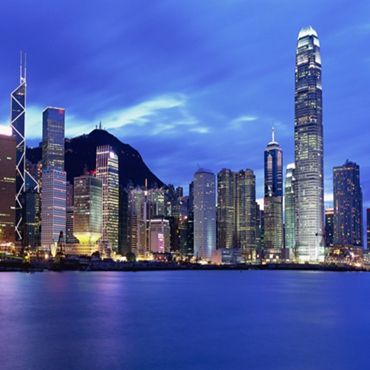 Hong Kong
Hong Kong
Highlights
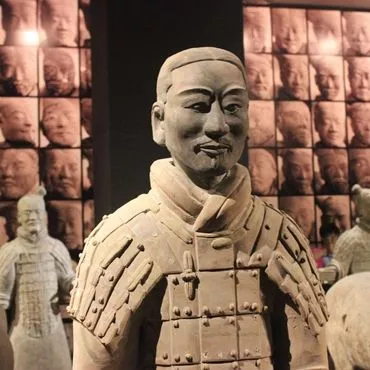 Xi'an
Xi'an
Highlights
Museum of Stone Steles Forest
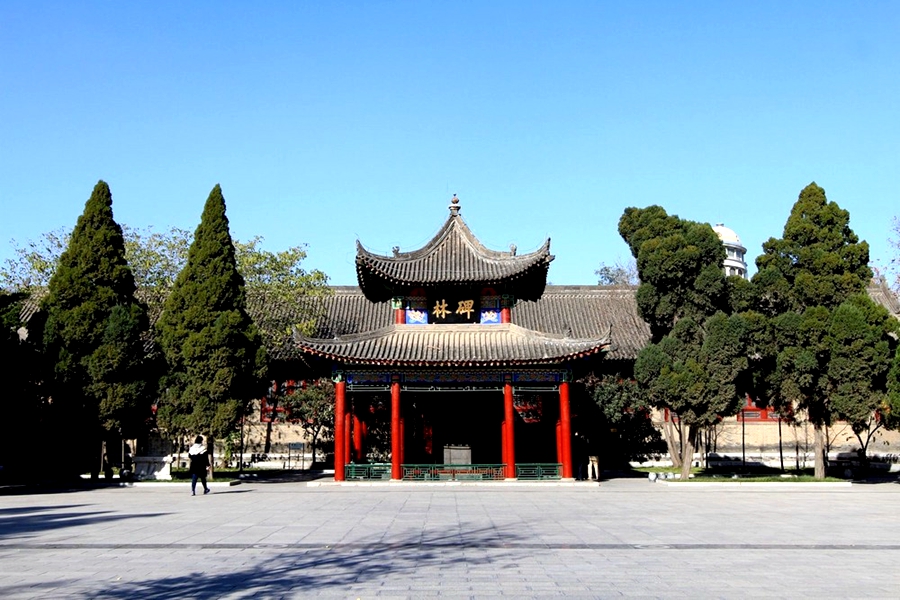
Here is the largest museum with the most exhibitions of the stone tablets passed down from the ancient China. Since the completion of the construction in North Song Dynasty the year of 1087, this greatest treasure store has appealed to a great number of visitors for having a close look at the marvelous forest of stone tablets.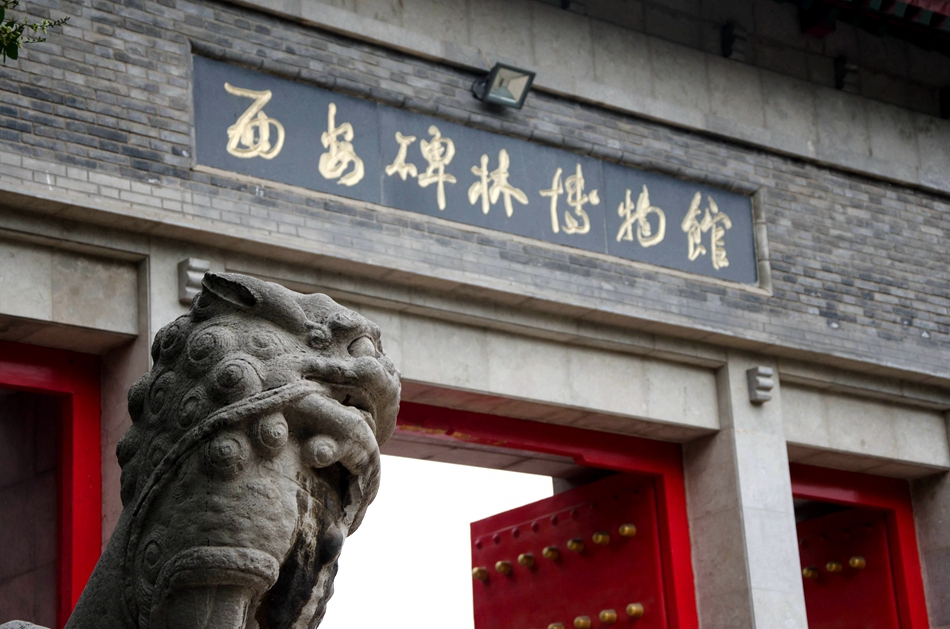
With 900 years of history, this treasure house holds a large collection of the earliest stone steles of different periods, from the Han Dynasty to the Qing Dynasty. All together, there are 3,000 steles and the museum is divided into seven exhibitions halls, which mainly display the works of calligraphy, painting and historical records. All of these record some achievements in the development of the Chinese culture and reflect the historical facts of the cultural exchanges between China and other countries.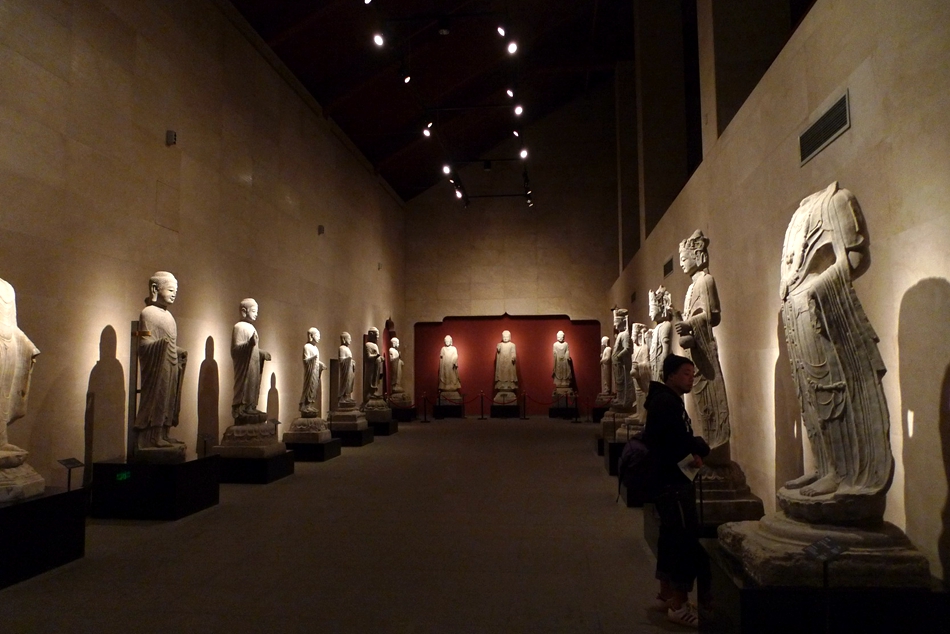
It is a good place to admire all the authentic work of calligraphy of the celebrities who were well known in the Chinese history, to read the Chinese grand classics inscribed on the stone, and to learning about the world’s history from the most convinced proofs of the history.
Opening Hours: 8:00 -- 18:00
Ticket Price: 45 CNY
22 CNY for the student, the soldier, the disabled and the aged over 70
Location: No. 15, Sanxue Street, Xian City
Transportation: Bus No. 14, 402, 512, 223, 208 and 704 and tour bus No. 5 will bring you here.
Great Mosque

The Great Mosque is a typical architecture of the Islamism, which was designed with the antique style of Ming Dynasty (1364-1644). As one of the four famous Islamic Mosques in China, it covers a large area of 12,000 m2, half of which is with architectures standing on. In this magnificent mosque, architectures of various designs will be a feast of your eyes. 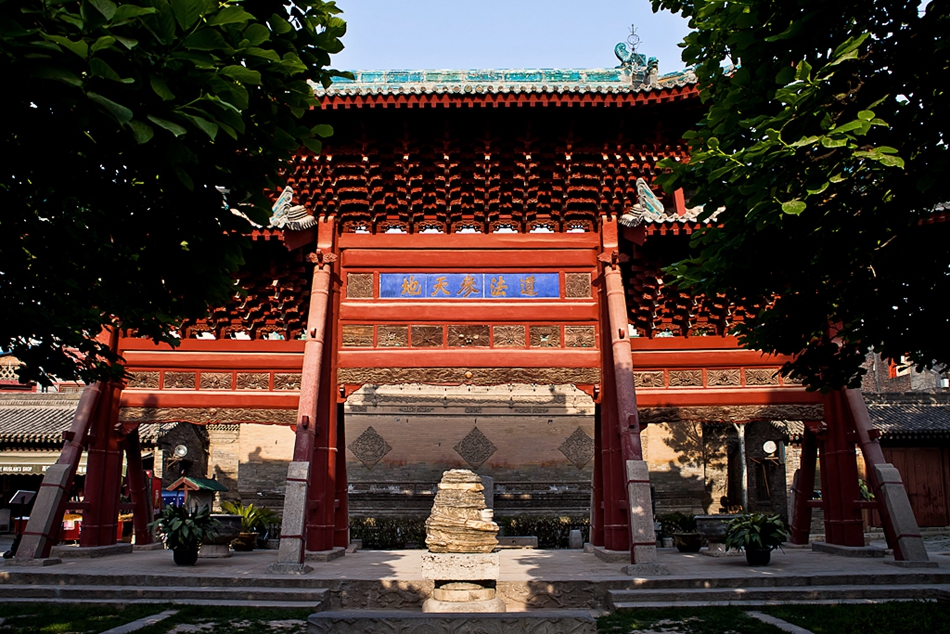
Towers, pavilions, platforms and halls are well distributed around the mosque, all of which together with the exquisite stone carvings, the precious inscriptions and other rarely seen decorations in which are the essence part of the mosque. It is the reason why a great number of visitors have been attracted here and reluctant to leave.
The first courtyard contains an elaborate wooden arch nine meters high covered with glazed tiles that dates back to the 17th century. In the center of the second courtyard, a stone arch stands with two steles on both sides. On one stele is the script of a famous calligrapher named Mi Fu of the Song Dynasty; the other is from Dong Qichang, a calligrapher of the Ming Dynasty. Their calligraphy because of such elegant yet powerful characters is considered to be a great treasure in the art of handwriting.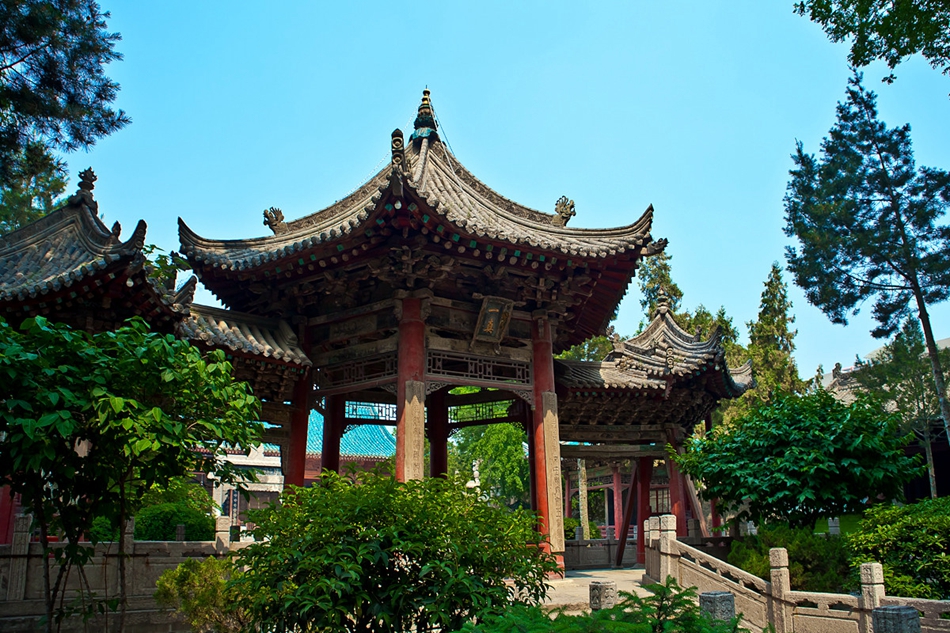
At the entrance to the third courtyard is a hall that contains many steles from ancient times. As visitors enter this courtyard, they will see the Xingxin Tower, a place where Muslims come to attend prayer services. A “Phoenix" placed in the fourth courtyard, the principal pavilion of this great mosque complex, contains the Prayer Hall, the surrounding walls of which are covered with colored designs. This Hall can easily hold 1,000 people at a time and according to traditional custom, prayer services are held five times everyday respectively at dawn, noon, afternoon, dusk and night.
Opening Hours: 8:00 -- 19:00
Ticket Price: 12 CNY
Location: Huajue Lane, Lianhu Zone, Xian City
Transportation: Taxi and chartered bus will bring you here.
Terracotta Warriors and Horses Museum
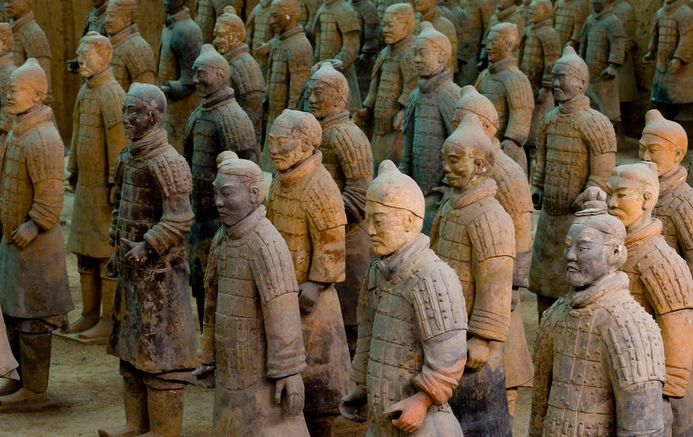
Be discovered as the World’s Eighth Wonder, the Terra-cotta Warriors built in the Qin Dynasty (221-207 BC) is known for its large and splendid scale and the sophisticated art technology. It is the Terra-cotta Warriors that make the Xian City a popular resort where has appealed to an amazingly great number of visitors from home and overseas which is up to 40 millions in total.
Upon ascending the throne at the age of 13 (in 246 BC), Qin Shi Huang, later the first Emperor of all China, had work begun on his mausoleum. It took 11 years to finish. It is speculated that many buried treasures and sacrificial objects had accompanied the emperor in his after life. A group of peasants uncovered some pottery figures fragments while digging for a well nearby the royal tomb in 1974. It caught the attention of archeologists immediately. They came to Xi'an in droves to study and to extend the digs. They had established beyond doubt that these artifacts were associated with the Qin Dynasty.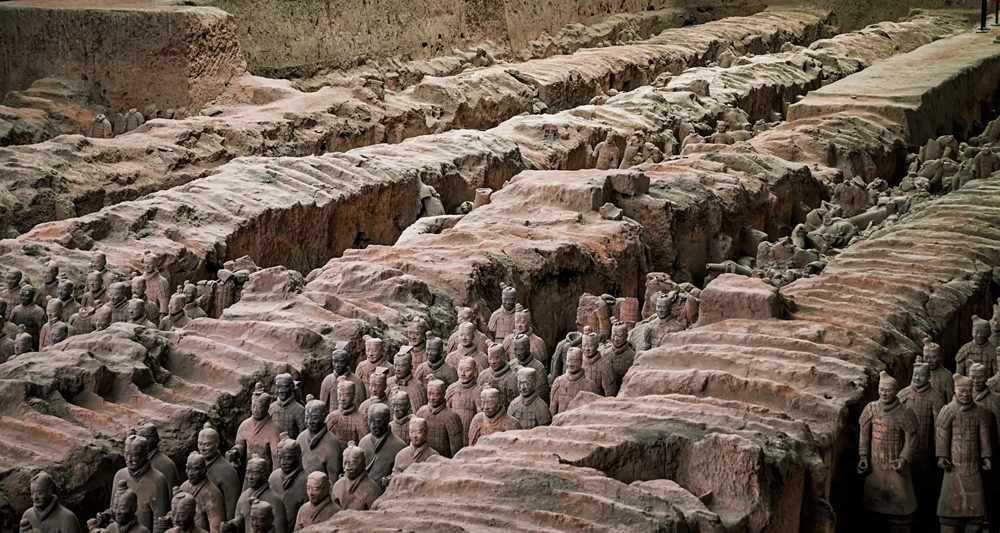
The museum covers an area of 16,300 square meters, divided into three sections: No. 1 Pit, No. 2 Pit and No. 3 Pit respectively. They were tagged in the order of their discoveries.
No. 1 Pit is the largest, first opened to the public on China's National Day, 1979. There are columns of soldiers at the front; followed by war chariots at the back. It is 230 meters from east to west, 62 meters from south to north, and five meters deep. The pit houses 6,000 life-size painted terracotta warriors and horses. The warriors, arranged in battle formation, wear helmets and armor and carry weapons. They are dignified, and each has a different manner and facial expression.
No. 2 Pit, found in 1976, is 20 meters northeast of No. 1 Pit. It contained over a thousand warriors and 90 chariots of wood. It was unveiled to the public in 1994.
Archeologists came upon No. 3 Pit also in 1976, 25 meters northwest of No. 1 Pit. It looked like to be the command center of the armed forces. It went on display in 1989, with 68 warriors, a war chariot and 4 horses.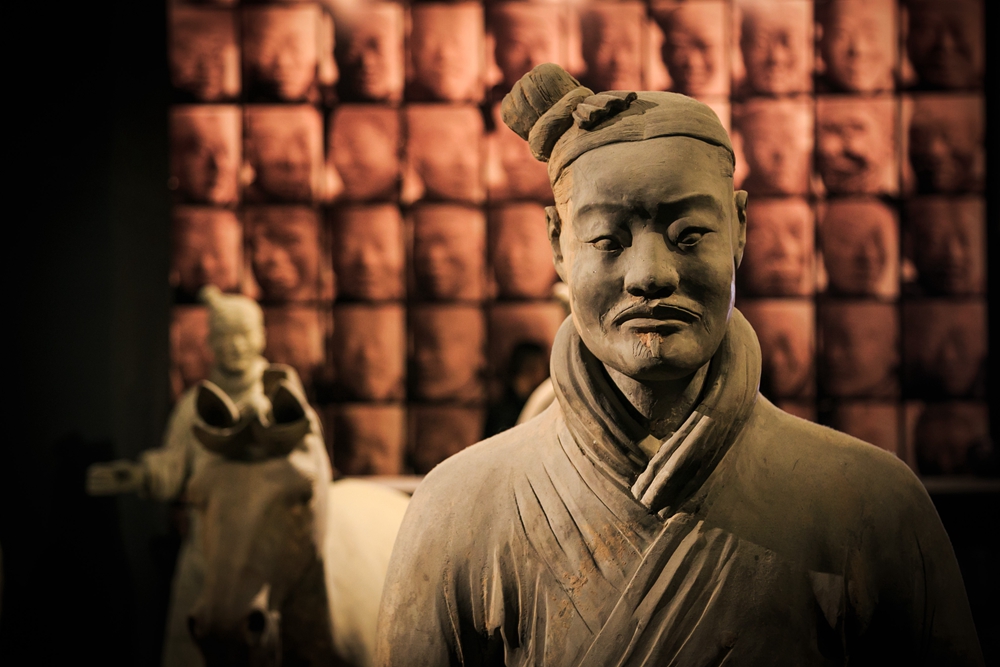
All together over 7,000 pottery soldiers, horses, chariots, and even weapons have been unearthed from these pits. Most of them have been restored to their former grandeur. The Terracotta Warriors and Horses is a sensational archeological find of all times. It was listed by UNESCO in 1987 as one of the world cultural heritages.
It is one of the most marvelous feats and the most valuable historic relics of China. When take a closer view of the Terra-cotta Warriors, you will be surprised by the lifelike expressions and customs they are in as well as the life-size-big warriors. Let alone the various gestures and different looks, the hairstyles of them will make you amazed. Owing to the exquisite handicrafts, all the warriors can be told apart from one position to another, officer or soldier, infantry or cavalry.
Opening Hours: 9:00 -- 18:00
Ticket Price:
110 CNY from March 1 to November 30
70 CNY in January, February and December
35 CNY for the disabled, the kids below 1.2 m, the aged over 70 years, the students and the soldiers
Location: Qinling Road, Lintong Zone, Xian City
Transportation: Tour bus and public bus 306 and 307 will bring you here.
Mausoleum of the First Qin Emperor

Together with the pyramids in Egypt, the Mausoleum of First Emperor of Qin shares the reputation of the world’s largest imperial tomb. The differences between them are the former is built above ground, while the latter under ground. It is a more splendid but luxurious mausoleum than any other mausoleum before, which takes a time as long as 38 years to complete. On entering in it, you will be shocked by the amazingly magnificent vision and the unprecedented huge scale. 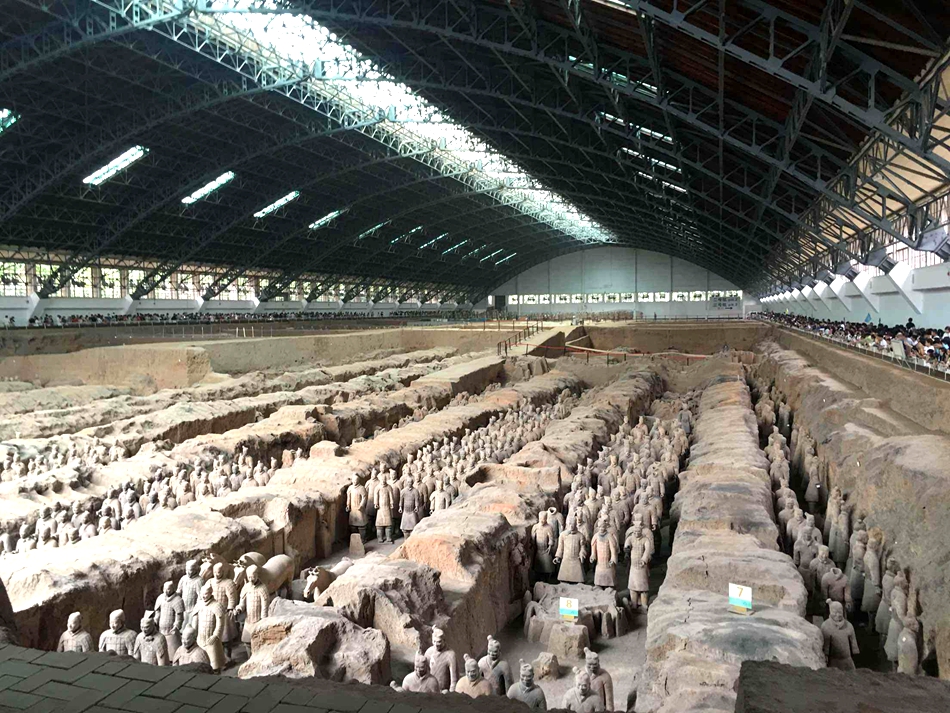
Lies peacefully in the cuddle of the steaming mountains and roaring Weishui River, this giant imperial tomb embraces a great number of valuable art works. To be exact, the mausoleum, with a double-wall as defense, covers 56.25 square kilometers, which is 78 times large as the Imperial Palace in Beijing. When take a closer view of the Terra-cotta Warriors, you will be surprised by the lifelike expressions and customs they are in as well as the life-size-big warriors. Let alone the various gestures and different looks, the hairstyles of them will make you amazed. Owing to the exquisite handicrafts, all the warriors can be told apart from one position to another, officer or soldier, infantry or cavalry.
While the Terracotta Warriors forms only part of the tomb. Greater things are yet to come.
Thanks to Ssu-ma Ch'ien, a great historian in early Han dynasty, archeologists can learn from his works about the great insight on the mausoleum’s construction, such as the coffin was cast in bronze and the underground Palace was gem-studded replica of imperial housing above ground. Moreover, booby traps with automatic-shooting arrows were installed to deter would-be tomb robbers. Heaven and earth were represented in the central chamber of the tomb. Ceiling shaped into sun, moon and stars by inlaying pearls and gems symbolizes the sky and the ground was an accumulation point of rivers, lakes and seas, like Yellow River and Yangtze River, which stands for the earth.
The discovery of the marvelous terracotta warriors has indeed thrown the whole world into shock, but what is worth to be studied is the materials unexcavated. Qin bricks and tiles, engraved with decorative patterns, are strew everywhere around the tomb. There are many satellite tombs built as accompanying decorations of Qin Shihuang. Ministers, princesses and princes, the famous and the not were inhumed there. The burial pits for horses, rare birds and pottery figures were regarded as the sacrificial objects to the Emperor. Hence, the remains from these tombs and pits are beneficial for archaeologists to make further research.
Finally, let see who is living inside this splendid mausoleum. Qin Shi Huangdi (259-210 BC), the first emperor of China, ascended the throne at the age of 13, when the construction of his tomb began. On completion of his many conquests, he ordered 720,000 conscript laborers to hurry up on building his royal tomb. It was finished just-in-time in 210 BC for his use.
Opening Hours: 8:00 -- 17:30
Ticket Price:
40 CNY from March 16 to November 14
20 CNY from November 15 to March 15
Location: Lintong County, Xian City
Transportation: Tour bus and public bus 306 and 307 will bring you here.
Huaqing Hot Springs
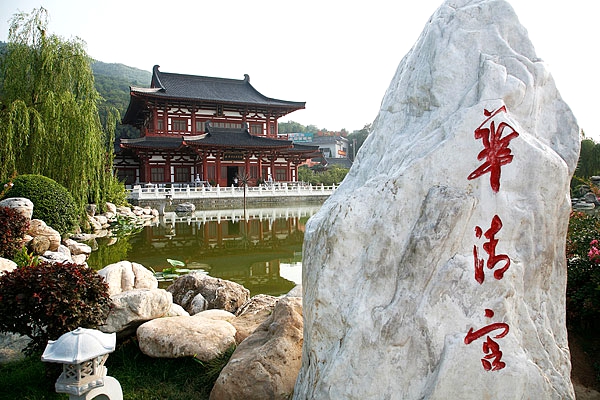
For centuries, the Huaqing Hot Spring (huaqingchi) has been enjoying the reputation as the most wonderful spring for it has appealed to the emperors of the ancient China with its amazing pureness and miraculous healing promotion effect on the rheumatism and arthritis. The Huaqing Hot Spring is known as the Orient Sacred Spring, which means it is as famous as the Thermae of Caracalla in Ancient Rome and the Bath Spring in Britian.
During the Western Zhou, Li Palace was originally established a resort here. Later the First Emperor Qin built a stone pool and gave the name "Lishan Hot Springs," and it was extended by the Han Wudi, Martial Emperor. However, the strongest associations are with the Tang Dynasty, and most of the present buildings have a Tang style.
Later in the ancient China, Emperor Taizong built the Hot Springs Palace and Emperor Xuanzong added a walled palace in 747 A.D. Unfortunately it was damaged during the An Lushan Rebellion in the middle Tang period. The present site was rebuilt on the site of the Qing Dynasty structure
There are picturesque sceneries around the spring. Behind the west gate, Nine-Dragon Pool, the Lotus Flower Pool and the Frost Drifting Hall of the Tang architectural style are waiting for you. Emperor Xuanzong used to spend winter in the company of Yang Guifei (Lady Yang) - his favorite concubine in the Hall of Fluttering Frost. The hall gains its name due to the slightly milky mist and vapor over the pool year around. In winter, the snowflakes soon thaw immediately in front of the Hall because of the lukewarm vapor rising out of the hot spring.
Here is a combination of a miraculous hot spring, the beautiful landscapes and the marvelous historic relics, where will feast your eyes in your leisure time.
Opening Hours: 8:00 -- 16:00
Ticket Price:
40 CNY from March 1 to November 31
70 CNY from December 1 to February 28
Half fare for the student, the soldier, the disabled and the aged over 70
Location: No. 38 Huaqing Road, Lintong Zone, Xian City, Shanxi Province
Transportation: Bus No. 306, 914 and 915 and tour bus No. 5 will bring you here.
Big Wild Goose Pagoda
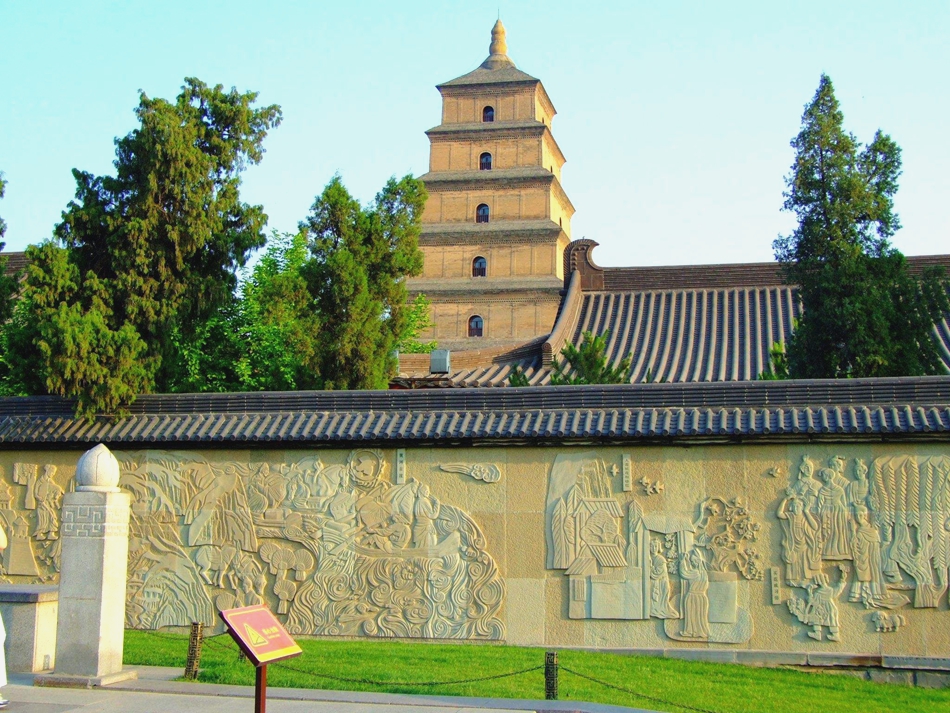
Dayan Pagoda was built in the year of 652 with a purpose of storing the precious Buddhist scriptures, figures of Buddha and Buddhist relics brought from India by a celebrated monk Xuan Zhang, which later became the symbolic architecture of Xian, the ancient capital of China. For centuries, the 64.5-meter-tall pagoda has appealed to a great number of visitors, among which a large part is the celebrities who left behind their inscriptions that make the pagoda more charming and holy.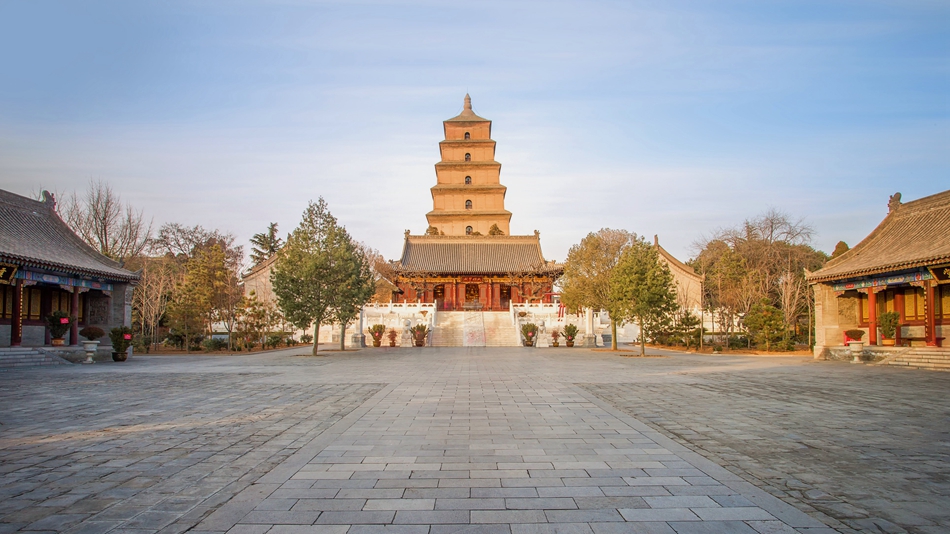
During the early days, the pagoda boasted a brick structure of 5 storeys and about 60 meters (197 feet) high. Between AD 701 and AD 704, at the end of the reign of Empress Wu Zetian, 2 more storeys were added to the original pagoda. Damage by the war reduced it to seven storeys, to what it is today. With a height of 64 meters (210 miles), the pagoda occupies a base 25 meters by 25 meters (82 feet) square. The Big Goose Pagoda is brick-tower architecture, simple but sturdy. Walls and doors are carved with vivid and exquisite figures of Buddha, reflecting the profundity in the paintings f the Tang Dynasty.
Why people name it Dayan Pagoda? In the ancient time, monks in China were permitted to have the meat of the wild geese, deer and calf. One day, when a monk in the Da Ci'en Temple saw a flock of geese flew in the sky, he was so eager for the geese that he talked to the other monk: “We have not had geese today, why does not the Buddha grant us some?” Then suddenly a goose dropped on the ground front of them died. The monks were all surprised and thought that was a holy hint given by the Buddha, which required them to stop eating the geese. A pagoda was built here and wins its present name.
Opening Hours: 9:00 -- 17:00
Ticket Price:
50 CNY for the entrance of the Da Ci'en Temple
30 CNY for the students to enter into the Temple
30 CNY for ascending to the top of Dayan Pagoda
Free for the disabled, the soldiers and the aged over 70 years
Location: South Yanta Road, Xian City
Transportation: Bus No. 5, 21, 23, 27, 30, 41, 224, 320, 401, 500, 501, 527, 601, 606, 609 and 715 will bring you here.
City Wall of Xi’an

This is a huge impregnable wall, which has experienced 600 years of history, now lying peacefully like a giant in the city center of Xian. With a tallness of 12 meters and thickness of 15 meters, this giant looks as strong as iron. You may come into the ancient town surrounded by a 11.9-kilometer-long wall from the distinct gates.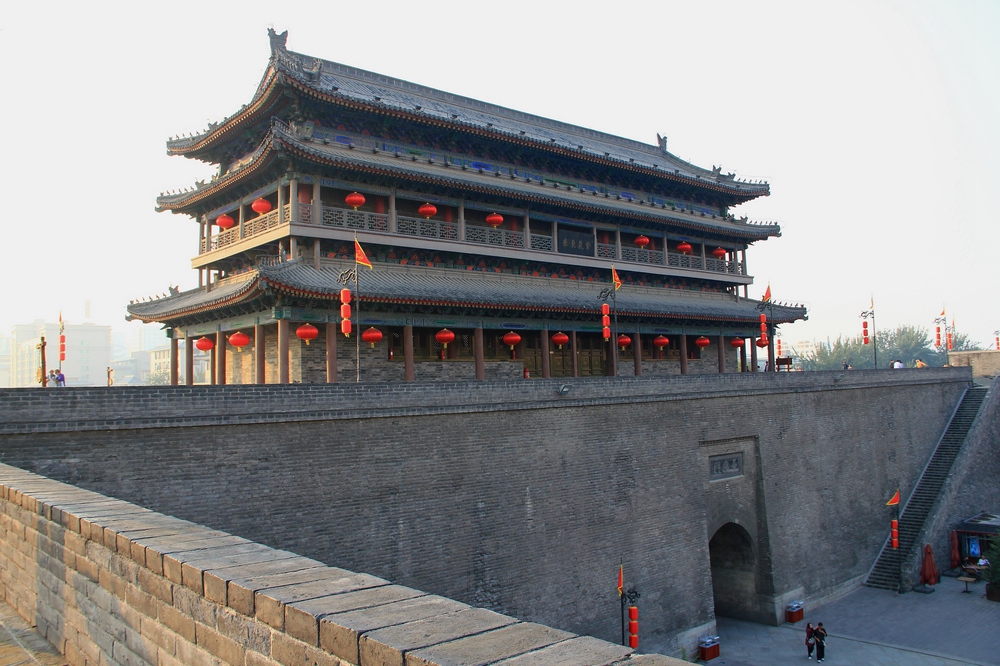
When Zhu Yuanzhang, the first Emperor of the Ming dynasty (1368-1644), occupied the city of Huizhou, he took advice to fortify the city and unify the other states by turning the wall built initially during the old Tang dynasty (618 -907) into the present Xi'an City Wall.
Surprisingly, every 120 meters, there is a rampart extending out from the main wall, therefore totally 98 ramparts are set on the wall, which were built to defend against the enemy climbing up the wall. Besides, the distance between every two ramparts is just within the range of an arrow shot from either side, so that they could shoot the enemy, who wanted to attack the city, from the side. On the outer side of the city wall, there are 5948 crenellations, namely battlements. The soldiers can outlook and shoot at the enemy. On the inner side, parapets were built to protect the soldiers from falling off.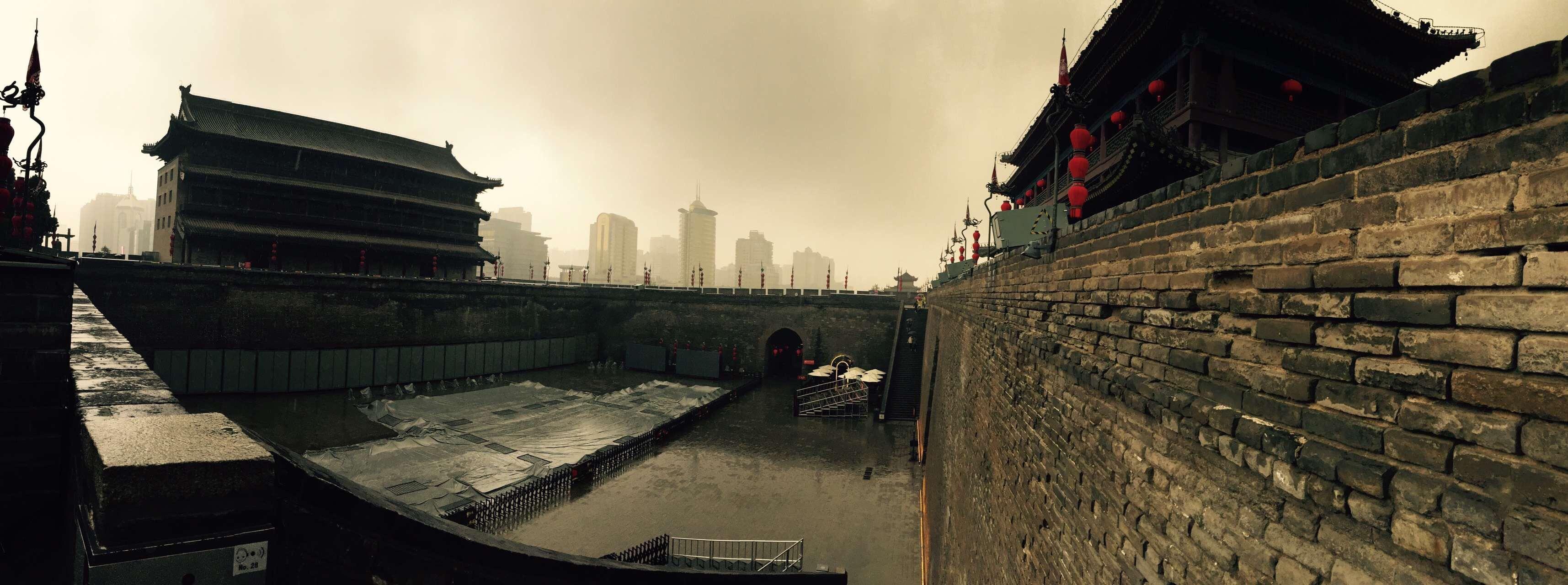
In the ancient China, the side who was able to occupy the city of the other won the battle. However, there was no efficient way to enter into the city that protected by the impregnable wall. Therefore, from the defensive side the feasible way is to keep the gate. This is why complicated gate structures were built within the wall. In Xian, there are four gates set along the giant wall, which respectively named as Changle (meaning eternal joy) in the east, Anding (harmony peace) in the west, Yongning (eternal peace) in the south and Anyuan (forever harmony) in the north. The south gate, Yongning, is the most beautifully decorated one.
Among all the greatest ancient city walls in China, it was the most well-preserved and intact one, from which you can learn a lot about how the wars were going in the ancient China and how and for what the cities were built.
Opening Hours: 9:00 -- 20:00
Ticket Price:
40 CNY
20 CNY for the kids between 1.1m and 1.4 m and the students
Location: in the city center of Xian
Transportation: 5, 18, 215, 603 and 611 will bring you here directly.
Shaanxi Provincial History Museum
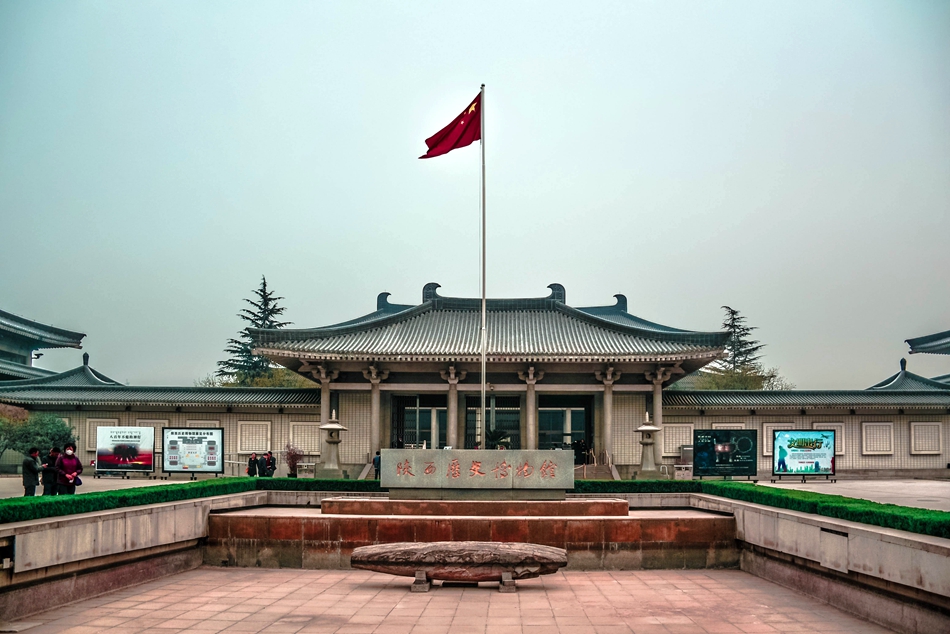
Having been as the capital of 13 dynasties for centuries, Xian is full of the breath of history. Therefore, there are numerous precious historic relics spreading around this mysterious historic site, which accounts for the reason why the Shaanxi History Museum is thought highly as the Treasure House of China.
The museum was designed as the magnificent and elegant as the architectures in Tang Dynasty (618-907). It is also a combination of the ancient style and the modern flavor, where there are more than 3,700,000 historic items displayed, among which there are 3900 rarely seen Bronze Ware from Shang Dynasty (1600-1046 BC), 400 precious Mural from Tang Dynasty, 5000 invaluable potteries from prehistory period and many other amazingly marvelous historic relics. 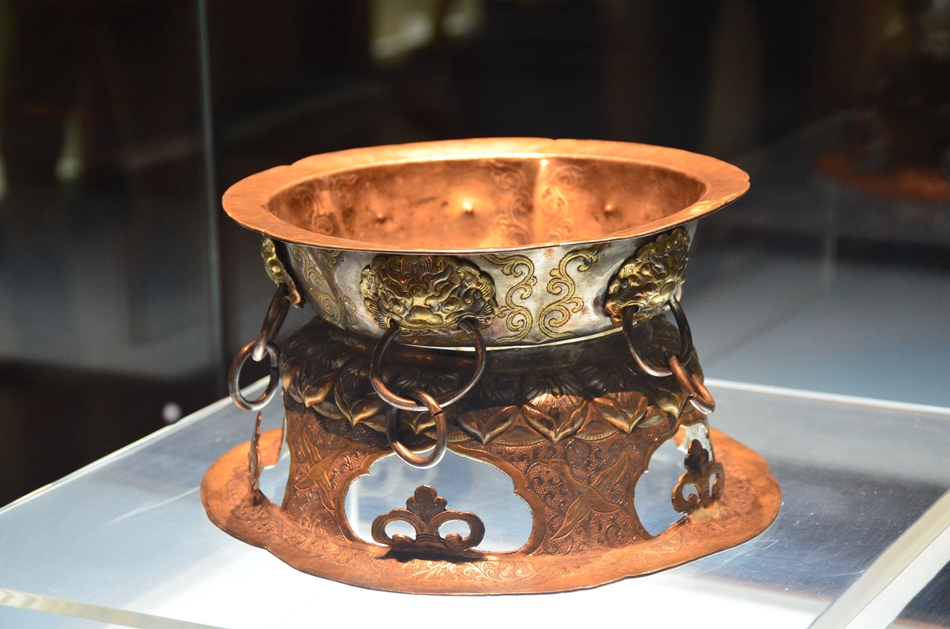
The main complex is a mixture of ancient palaces and courtyard buildings, harmonious and graceful in hue, in simple and elegant style. The exhibits on the ground and first floors are arranged in roughly three parts: Basic Exhibition Hall, the Theme Exhibition Hall and East Exhibition Hall. As well as the chronological dynastic exhibits including the Han, Wei, Jin, North and South, Sui, Tang, Song, Yuan, Ming and Qing dynasties, the pre-historical and bronze period exhibits, together with terra cotta figures and murals from tombs of the Tang Dynasty, are highly recommended.
Here you can have a close look at the amazingly cultural relics and remains from the dynasties of the Zhou, the Qin, the Han and the Tang, which is divided into the Preface Hall, the Shaanxi local history exhibition hall, and the central hall, where is the home to the temporary exhibitions from home and abroad. Can you image how great it is when surrounded by thousands of amazing items from such a far age?
Opening Hours: 8:30 -- 18:00 (except Monday)
Ticket Price: free
Location: East Xiaozhai Road, Yanta Zone, Xian City
Transportation: Bus No. 5, 19, 24, 26, 27, 30, 34, 401, 521, 527 and 610 and tour bus No. 701 and 710 will bring you here
Museum of Stone Steles Forest

Here is the largest museum with the most exhibitions of the stone tablets passed down from the ancient China. Since the completion of the construction in North Song Dynasty the year of 1087, this greatest treasure store has appealed to a great number of visitors for having a close look at the marvelous forest of stone tablets.
With 900 years of history, this treasure house holds a large collection of the earliest stone steles of different periods, from the Han Dynasty to the Qing Dynasty. All together, there are 3,000 steles and the museum is divided into seven exhibitions halls, which mainly display the works of calligraphy, painting and historical records. All of these record some achievements in the development of the Chinese culture and reflect the historical facts of the cultural exchanges between China and other countries.
It is a good place to admire all the authentic work of calligraphy of the celebrities who were well known in the Chinese history, to read the Chinese grand classics inscribed on the stone, and to learning about the world’s history from the most convinced proofs of the history.
Opening Hours: 8:00 -- 18:00
Ticket Price: 45 CNY
22 CNY for the student, the soldier, the disabled and the aged over 70
Location: No. 15, Sanxue Street, Xian City
Transportation: Bus No. 14, 402, 512, 223, 208 and 704 and tour bus No. 5 will bring you here.
Great Mosque

The Great Mosque is a typical architecture of the Islamism, which was designed with the antique style of Ming Dynasty (1364-1644). As one of the four famous Islamic Mosques in China, it covers a large area of 12,000 m2, half of which is with architectures standing on. In this magnificent mosque, architectures of various designs will be a feast of your eyes. 
Towers, pavilions, platforms and halls are well distributed around the mosque, all of which together with the exquisite stone carvings, the precious inscriptions and other rarely seen decorations in which are the essence part of the mosque. It is the reason why a great number of visitors have been attracted here and reluctant to leave.
The first courtyard contains an elaborate wooden arch nine meters high covered with glazed tiles that dates back to the 17th century. In the center of the second courtyard, a stone arch stands with two steles on both sides. On one stele is the script of a famous calligrapher named Mi Fu of the Song Dynasty; the other is from Dong Qichang, a calligrapher of the Ming Dynasty. Their calligraphy because of such elegant yet powerful characters is considered to be a great treasure in the art of handwriting.
At the entrance to the third courtyard is a hall that contains many steles from ancient times. As visitors enter this courtyard, they will see the Xingxin Tower, a place where Muslims come to attend prayer services. A “Phoenix" placed in the fourth courtyard, the principal pavilion of this great mosque complex, contains the Prayer Hall, the surrounding walls of which are covered with colored designs. This Hall can easily hold 1,000 people at a time and according to traditional custom, prayer services are held five times everyday respectively at dawn, noon, afternoon, dusk and night.
Opening Hours: 8:00 -- 19:00
Ticket Price: 12 CNY
Location: Huajue Lane, Lianhu Zone, Xian City
Transportation: Taxi and chartered bus will bring you here.
Terracotta Warriors and Horses Museum

Be discovered as the World’s Eighth Wonder, the Terra-cotta Warriors built in the Qin Dynasty (221-207 BC) is known for its large and splendid scale and the sophisticated art technology. It is the Terra-cotta Warriors that make the Xian City a popular resort where has appealed to an amazingly great number of visitors from home and overseas which is up to 40 millions in total.
Upon ascending the throne at the age of 13 (in 246 BC), Qin Shi Huang, later the first Emperor of all China, had work begun on his mausoleum. It took 11 years to finish. It is speculated that many buried treasures and sacrificial objects had accompanied the emperor in his after life. A group of peasants uncovered some pottery figures fragments while digging for a well nearby the royal tomb in 1974. It caught the attention of archeologists immediately. They came to Xi'an in droves to study and to extend the digs. They had established beyond doubt that these artifacts were associated with the Qin Dynasty.
The museum covers an area of 16,300 square meters, divided into three sections: No. 1 Pit, No. 2 Pit and No. 3 Pit respectively. They were tagged in the order of their discoveries.
No. 1 Pit is the largest, first opened to the public on China's National Day, 1979. There are columns of soldiers at the front; followed by war chariots at the back. It is 230 meters from east to west, 62 meters from south to north, and five meters deep. The pit houses 6,000 life-size painted terracotta warriors and horses. The warriors, arranged in battle formation, wear helmets and armor and carry weapons. They are dignified, and each has a different manner and facial expression.
No. 2 Pit, found in 1976, is 20 meters northeast of No. 1 Pit. It contained over a thousand warriors and 90 chariots of wood. It was unveiled to the public in 1994.
Archeologists came upon No. 3 Pit also in 1976, 25 meters northwest of No. 1 Pit. It looked like to be the command center of the armed forces. It went on display in 1989, with 68 warriors, a war chariot and 4 horses.
All together over 7,000 pottery soldiers, horses, chariots, and even weapons have been unearthed from these pits. Most of them have been restored to their former grandeur. The Terracotta Warriors and Horses is a sensational archeological find of all times. It was listed by UNESCO in 1987 as one of the world cultural heritages.
It is one of the most marvelous feats and the most valuable historic relics of China. When take a closer view of the Terra-cotta Warriors, you will be surprised by the lifelike expressions and customs they are in as well as the life-size-big warriors. Let alone the various gestures and different looks, the hairstyles of them will make you amazed. Owing to the exquisite handicrafts, all the warriors can be told apart from one position to another, officer or soldier, infantry or cavalry.
Opening Hours: 9:00 -- 18:00
Ticket Price:
110 CNY from March 1 to November 30
70 CNY in January, February and December
35 CNY for the disabled, the kids below 1.2 m, the aged over 70 years, the students and the soldiers
Location: Qinling Road, Lintong Zone, Xian City
Transportation: Tour bus and public bus 306 and 307 will bring you here.
Mausoleum of the First Qin Emperor

Together with the pyramids in Egypt, the Mausoleum of First Emperor of Qin shares the reputation of the world’s largest imperial tomb. The differences between them are the former is built above ground, while the latter under ground. It is a more splendid but luxurious mausoleum than any other mausoleum before, which takes a time as long as 38 years to complete. On entering in it, you will be shocked by the amazingly magnificent vision and the unprecedented huge scale. 
Lies peacefully in the cuddle of the steaming mountains and roaring Weishui River, this giant imperial tomb embraces a great number of valuable art works. To be exact, the mausoleum, with a double-wall as defense, covers 56.25 square kilometers, which is 78 times large as the Imperial Palace in Beijing. When take a closer view of the Terra-cotta Warriors, you will be surprised by the lifelike expressions and customs they are in as well as the life-size-big warriors. Let alone the various gestures and different looks, the hairstyles of them will make you amazed. Owing to the exquisite handicrafts, all the warriors can be told apart from one position to another, officer or soldier, infantry or cavalry.
While the Terracotta Warriors forms only part of the tomb. Greater things are yet to come.
Thanks to Ssu-ma Ch'ien, a great historian in early Han dynasty, archeologists can learn from his works about the great insight on the mausoleum’s construction, such as the coffin was cast in bronze and the underground Palace was gem-studded replica of imperial housing above ground. Moreover, booby traps with automatic-shooting arrows were installed to deter would-be tomb robbers. Heaven and earth were represented in the central chamber of the tomb. Ceiling shaped into sun, moon and stars by inlaying pearls and gems symbolizes the sky and the ground was an accumulation point of rivers, lakes and seas, like Yellow River and Yangtze River, which stands for the earth.
The discovery of the marvelous terracotta warriors has indeed thrown the whole world into shock, but what is worth to be studied is the materials unexcavated. Qin bricks and tiles, engraved with decorative patterns, are strew everywhere around the tomb. There are many satellite tombs built as accompanying decorations of Qin Shihuang. Ministers, princesses and princes, the famous and the not were inhumed there. The burial pits for horses, rare birds and pottery figures were regarded as the sacrificial objects to the Emperor. Hence, the remains from these tombs and pits are beneficial for archaeologists to make further research.
Finally, let see who is living inside this splendid mausoleum. Qin Shi Huangdi (259-210 BC), the first emperor of China, ascended the throne at the age of 13, when the construction of his tomb began. On completion of his many conquests, he ordered 720,000 conscript laborers to hurry up on building his royal tomb. It was finished just-in-time in 210 BC for his use.
Opening Hours: 8:00 -- 17:30
Ticket Price:
40 CNY from March 16 to November 14
20 CNY from November 15 to March 15
Location: Lintong County, Xian City
Transportation: Tour bus and public bus 306 and 307 will bring you here.
Huaqing Hot Springs

For centuries, the Huaqing Hot Spring (huaqingchi) has been enjoying the reputation as the most wonderful spring for it has appealed to the emperors of the ancient China with its amazing pureness and miraculous healing promotion effect on the rheumatism and arthritis. The Huaqing Hot Spring is known as the Orient Sacred Spring, which means it is as famous as the Thermae of Caracalla in Ancient Rome and the Bath Spring in Britian.
During the Western Zhou, Li Palace was originally established a resort here. Later the First Emperor Qin built a stone pool and gave the name "Lishan Hot Springs," and it was extended by the Han Wudi, Martial Emperor. However, the strongest associations are with the Tang Dynasty, and most of the present buildings have a Tang style.
Later in the ancient China, Emperor Taizong built the Hot Springs Palace and Emperor Xuanzong added a walled palace in 747 A.D. Unfortunately it was damaged during the An Lushan Rebellion in the middle Tang period. The present site was rebuilt on the site of the Qing Dynasty structure
There are picturesque sceneries around the spring. Behind the west gate, Nine-Dragon Pool, the Lotus Flower Pool and the Frost Drifting Hall of the Tang architectural style are waiting for you. Emperor Xuanzong used to spend winter in the company of Yang Guifei (Lady Yang) - his favorite concubine in the Hall of Fluttering Frost. The hall gains its name due to the slightly milky mist and vapor over the pool year around. In winter, the snowflakes soon thaw immediately in front of the Hall because of the lukewarm vapor rising out of the hot spring.
Here is a combination of a miraculous hot spring, the beautiful landscapes and the marvelous historic relics, where will feast your eyes in your leisure time.
Opening Hours: 8:00 -- 16:00
Ticket Price:
40 CNY from March 1 to November 31
70 CNY from December 1 to February 28
Half fare for the student, the soldier, the disabled and the aged over 70
Location: No. 38 Huaqing Road, Lintong Zone, Xian City, Shanxi Province
Transportation: Bus No. 306, 914 and 915 and tour bus No. 5 will bring you here.
Big Wild Goose Pagoda

Dayan Pagoda was built in the year of 652 with a purpose of storing the precious Buddhist scriptures, figures of Buddha and Buddhist relics brought from India by a celebrated monk Xuan Zhang, which later became the symbolic architecture of Xian, the ancient capital of China. For centuries, the 64.5-meter-tall pagoda has appealed to a great number of visitors, among which a large part is the celebrities who left behind their inscriptions that make the pagoda more charming and holy.
During the early days, the pagoda boasted a brick structure of 5 storeys and about 60 meters (197 feet) high. Between AD 701 and AD 704, at the end of the reign of Empress Wu Zetian, 2 more storeys were added to the original pagoda. Damage by the war reduced it to seven storeys, to what it is today. With a height of 64 meters (210 miles), the pagoda occupies a base 25 meters by 25 meters (82 feet) square. The Big Goose Pagoda is brick-tower architecture, simple but sturdy. Walls and doors are carved with vivid and exquisite figures of Buddha, reflecting the profundity in the paintings f the Tang Dynasty.
Why people name it Dayan Pagoda? In the ancient time, monks in China were permitted to have the meat of the wild geese, deer and calf. One day, when a monk in the Da Ci'en Temple saw a flock of geese flew in the sky, he was so eager for the geese that he talked to the other monk: “We have not had geese today, why does not the Buddha grant us some?” Then suddenly a goose dropped on the ground front of them died. The monks were all surprised and thought that was a holy hint given by the Buddha, which required them to stop eating the geese. A pagoda was built here and wins its present name.
Opening Hours: 9:00 -- 17:00
Ticket Price:
50 CNY for the entrance of the Da Ci'en Temple
30 CNY for the students to enter into the Temple
30 CNY for ascending to the top of Dayan Pagoda
Free for the disabled, the soldiers and the aged over 70 years
Location: South Yanta Road, Xian City
Transportation: Bus No. 5, 21, 23, 27, 30, 41, 224, 320, 401, 500, 501, 527, 601, 606, 609 and 715 will bring you here.
City Wall of Xi’an

This is a huge impregnable wall, which has experienced 600 years of history, now lying peacefully like a giant in the city center of Xian. With a tallness of 12 meters and thickness of 15 meters, this giant looks as strong as iron. You may come into the ancient town surrounded by a 11.9-kilometer-long wall from the distinct gates.
When Zhu Yuanzhang, the first Emperor of the Ming dynasty (1368-1644), occupied the city of Huizhou, he took advice to fortify the city and unify the other states by turning the wall built initially during the old Tang dynasty (618 -907) into the present Xi'an City Wall.
Surprisingly, every 120 meters, there is a rampart extending out from the main wall, therefore totally 98 ramparts are set on the wall, which were built to defend against the enemy climbing up the wall. Besides, the distance between every two ramparts is just within the range of an arrow shot from either side, so that they could shoot the enemy, who wanted to attack the city, from the side. On the outer side of the city wall, there are 5948 crenellations, namely battlements. The soldiers can outlook and shoot at the enemy. On the inner side, parapets were built to protect the soldiers from falling off.
In the ancient China, the side who was able to occupy the city of the other won the battle. However, there was no efficient way to enter into the city that protected by the impregnable wall. Therefore, from the defensive side the feasible way is to keep the gate. This is why complicated gate structures were built within the wall. In Xian, there are four gates set along the giant wall, which respectively named as Changle (meaning eternal joy) in the east, Anding (harmony peace) in the west, Yongning (eternal peace) in the south and Anyuan (forever harmony) in the north. The south gate, Yongning, is the most beautifully decorated one.
Among all the greatest ancient city walls in China, it was the most well-preserved and intact one, from which you can learn a lot about how the wars were going in the ancient China and how and for what the cities were built.
Opening Hours: 9:00 -- 20:00
Ticket Price:
40 CNY
20 CNY for the kids between 1.1m and 1.4 m and the students
Location: in the city center of Xian
Transportation: 5, 18, 215, 603 and 611 will bring you here directly.
Shaanxi Provincial History Museum

Having been as the capital of 13 dynasties for centuries, Xian is full of the breath of history. Therefore, there are numerous precious historic relics spreading around this mysterious historic site, which accounts for the reason why the Shaanxi History Museum is thought highly as the Treasure House of China.
The museum was designed as the magnificent and elegant as the architectures in Tang Dynasty (618-907). It is also a combination of the ancient style and the modern flavor, where there are more than 3,700,000 historic items displayed, among which there are 3900 rarely seen Bronze Ware from Shang Dynasty (1600-1046 BC), 400 precious Mural from Tang Dynasty, 5000 invaluable potteries from prehistory period and many other amazingly marvelous historic relics. 
The main complex is a mixture of ancient palaces and courtyard buildings, harmonious and graceful in hue, in simple and elegant style. The exhibits on the ground and first floors are arranged in roughly three parts: Basic Exhibition Hall, the Theme Exhibition Hall and East Exhibition Hall. As well as the chronological dynastic exhibits including the Han, Wei, Jin, North and South, Sui, Tang, Song, Yuan, Ming and Qing dynasties, the pre-historical and bronze period exhibits, together with terra cotta figures and murals from tombs of the Tang Dynasty, are highly recommended.
Here you can have a close look at the amazingly cultural relics and remains from the dynasties of the Zhou, the Qin, the Han and the Tang, which is divided into the Preface Hall, the Shaanxi local history exhibition hall, and the central hall, where is the home to the temporary exhibitions from home and abroad. Can you image how great it is when surrounded by thousands of amazing items from such a far age?
Opening Hours: 8:30 -- 18:00 (except Monday)
Ticket Price: free
Location: East Xiaozhai Road, Yanta Zone, Xian City
Transportation: Bus No. 5, 19, 24, 26, 27, 30, 34, 401, 521, 527 and 610 and tour bus No. 701 and 710 will bring you here
Museum of Stone Steles Forest

Here is the largest museum with the most exhibitions of the stone tablets passed down from the ancient China. Since the completion of the construction in North Song Dynasty the year of 1087, this greatest treasure store has appealed to a great number of visitors for having a close look at the marvelous forest of stone tablets.
With 900 years of history, this treasure house holds a large collection of the earliest stone steles of different periods, from the Han Dynasty to the Qing Dynasty. All together, there are 3,000 steles and the museum is divided into seven exhibitions halls, which mainly display the works of calligraphy, painting and historical records. All of these record some achievements in the development of the Chinese culture and reflect the historical facts of the cultural exchanges between China and other countries.
It is a good place to admire all the authentic work of calligraphy of the celebrities who were well known in the Chinese history, to read the Chinese grand classics inscribed on the stone, and to learning about the world’s history from the most convinced proofs of the history.
Opening Hours: 8:00 -- 18:00
Ticket Price: 45 CNY
22 CNY for the student, the soldier, the disabled and the aged over 70
Location: No. 15, Sanxue Street, Xian City
Transportation: Bus No. 14, 402, 512, 223, 208 and 704 and tour bus No. 5 will bring you here.
Great Mosque

The Great Mosque is a typical architecture of the Islamism, which was designed with the antique style of Ming Dynasty (1364-1644). As one of the four famous Islamic Mosques in China, it covers a large area of 12,000 m2, half of which is with architectures standing on. In this magnificent mosque, architectures of various designs will be a feast of your eyes. 
Towers, pavilions, platforms and halls are well distributed around the mosque, all of which together with the exquisite stone carvings, the precious inscriptions and other rarely seen decorations in which are the essence part of the mosque. It is the reason why a great number of visitors have been attracted here and reluctant to leave.
The first courtyard contains an elaborate wooden arch nine meters high covered with glazed tiles that dates back to the 17th century. In the center of the second courtyard, a stone arch stands with two steles on both sides. On one stele is the script of a famous calligrapher named Mi Fu of the Song Dynasty; the other is from Dong Qichang, a calligrapher of the Ming Dynasty. Their calligraphy because of such elegant yet powerful characters is considered to be a great treasure in the art of handwriting.
At the entrance to the third courtyard is a hall that contains many steles from ancient times. As visitors enter this courtyard, they will see the Xingxin Tower, a place where Muslims come to attend prayer services. A “Phoenix" placed in the fourth courtyard, the principal pavilion of this great mosque complex, contains the Prayer Hall, the surrounding walls of which are covered with colored designs. This Hall can easily hold 1,000 people at a time and according to traditional custom, prayer services are held five times everyday respectively at dawn, noon, afternoon, dusk and night.
Opening Hours: 8:00 -- 19:00
Ticket Price: 12 CNY
Location: Huajue Lane, Lianhu Zone, Xian City
Transportation: Taxi and chartered bus will bring you here.
 Luoyang
Luoyang
Highlights
Luoyang Ancient Tombs Museum

Based on the historic site, the Luoyang Ancient Tomb Museum appeals to an increasing number of visitors by the abundant precious relics and the magnificent but plain architectures with the antique designs of Han Dynasty (B.C. 202-220) and North Wei Dynasty (386-534). The historic site mainly consists of tombs from Han Dynasty to North Song Dynasty (960-1127), the amount of which is 22.




The Studio of Thousand Tang Tablets

The Studio of Thousand Tang Tablets is actually the unique museum in China that based on the epitaphs, where totally 1419 epitaphs are displayed. Among the precious exhibitions, 1911 epitaphs are the heritages of Tang Dynasty (618-907), which is the reason why the museum is called by the present name. Without any doubts, the epitaphs are one of the most convinced proofs of the history. Therefore, we can learn the society from the descriptions on the epitaphs about the royals, the officials, the celebrities, the common people and all the significant events of different times.


On arriving at the peaceful museum, you will amazingly have a strong feeling of being surrounded by a tense breath of culture and history--just like going back to the ancient time in a Time Machine.
Opening Hours: 8:00 -- 18:00
Ticket Price: 30 CNY
Location: Xinan County, Luoyang City
Transportation: Long-distance bus from Luoyang will bring you to Xinan County.
Longmen Grottoes

Longmen Grottoes, one of the three greatest grottoes in China, has command of more than 2,000 niches, 100,000 stone sculptures and 3,600 inscriptions, which takes over 400 years to complete. The amount of the stone inscriptions ranks first at the Chinese four famous grottoes (apart from Longmen Grottoes, the others are Yungang Grottoes in Shanxi, Mogao Grottoes in Gansu and Maijishan Grottoes in Gansu), among which the works of calligraphy are the essence parts and the carvings concerning the Buddhist cultures reflect the greatest stone-carving period in Chinese history.
Spanning over 1,000 meters in length, the caves were chiseled on the cliffs of both banks of the Yi River. The scene of Longmen and its surroundings is very beautiful, because the "Longmen Mountain scene" ranks first place of the "Eight Scenic Spots of Luoyang". The caves were first sculptured and chiseled around the year when Emperor Xiaowen moved the capital to Luoyang in Northern Wei Dynasty.
As one of the three great Buddhist treasures, the Buddhist statues in Longmen Caves are exquisitely caved and beautifully shaped, all presenting a vivid appearance of a dignified manner and delicate look. The Buddhist statues in Longmen Caves are an embodiment of a peculiar and extraordinary style of sculpture of Buddhist. Statues of the Chinese people also occupied a very important place in the Chinese art of sculpture. What's more, with broad breadth of spirit, profound implication and beautiful workmanship, the Longmen Caves is a bright pearl in the artistic treasure house of sculpture of the world.
Scattered about the various caves are carved figures of Flying Apsaras, with some of them, light and graceful, riding clouds and mist dexterously, some dancing in the air, holding a plateful of fruits in the hand, some playing music and singing, and others casting flowers and fish about. Longmen is not only renowned for the caves, but also endowed with lush mountains and ridges, springs and waterfalls. The two mountains are covered with green pines and cypresses. Towers and pavilions set each other off. It's a unique scenery area.
Opening Hours:
07:30 -- 18:30 (in spring, summer and autumn)
07:30 -- 17:40 (in winter)
Ticket Price:
120 CNY
Half for students, teaches and the people between 60-69 years
Free for the kids below 1.4 meter, the disabled, the retired, the soldiers, the people over 70 years
Location: 12 km away from Luoyang City
Transportation: Bus No. 53, 60 and 81 will bring you here directly (1 CNY and 40 minutes).
White Horse Temple

As the first Buddhist temple built with the assistance of Government in the Eastern Han Dynasty (25-220), White Horse Temple (Baima Si), the cradle of Chinese Buddhism, is of great significance in the development of the Buddhist in China. Having witnessed centuries’ changes, White Horse Temple has been reconstructed for several times, among which the one conducted at the order of the Emperor Wu in Tang Dynasty (618-907) was the most impressive one.


In addition to the exquisite lifelike Buddha statuses in magnificent hall, the typical oriental architecture designs and the towering pines flourishing around the peaceful temple, there are some special scenic spots for you to experience how Emperor Ming in Han Dynasty practiced his study and how the eminent monk Tian Zhu practiced the translation of the Buddhist classics from India.
White Horse Temple is a rectangle courtyard facing south. The gate of the White Horse Temple was built in Ming Dynasty (1368 - 1644) and it is three arches side by side. Covering a total area of 40, 000 square meters, the temple mainly consists of Tianwang Hall, Great Buddha Hall, Daxiong Hall, Jieyin Hall, Qingliang Terrace and Pilu Pavilion, which are all distributing along the north-south central axis.
Great Buddha Hall is the second hall of the temple. It is the place where the grand Buddhist ceremonies are held. The existent hall dates from the Ming Dynasty (1368 - 1644). In its center sits erect a statue of Sakyamuni which is closely flanked by two Bodhisattvas Wenshu and Puxian, and his two disciples Ananda and Jiaye. Behind stand the statue of Avalokitesvara.
In the southeast of the hall, a huge bell is hung from the beam. It was said that when the bell is struck, the toll could be heard far away. More interesting is that once the bell is tolling, the one in Bell Tower in Luoyang Old Town will response it quickly due to the sympathetic vibration. 'Horse Temple Bell', one of the eight scenes in Luoyang city was named after it. The hall also house eighteen Arhats that are lifelike in modeling and unique in gesture and are treasures in Buddhist arts of the Yuan Dynasty.
Opening Hours: 7:30 -- 17:30
Ticket Price:
35 CNY
Half for students, teaches and the people between 60-69 years
Free for the kids below 1.4 meter, the disabled, the retired, the soldiers, the people over 70 years
Location: 12 km away from Luoyang City
Transportation: Bus No. 56 will bring you here directly (I hour)
Guanlin Temple

Built in Han Dynasty (B.C. 202-220),Guanlin Temple, covering 120,000 m2, was built in memory of Guan Yu, a general with a respectable loyalty in Han Dynasty. Around the tomb of Guan Yu inside the Guanlin Temple, there are hundreds of towering old pines, from which the name Guanlin that means a wood of pines is derived and owing to which numerous visitors have come here to pay respect to Guan Yu in the past 1700 years.


Guanlin Temple is located right in Guanlin Town, eight kilometers south of Luoyang city and is also called General Guan's Tomb, which is actually the memorial temple and the tomb for Guan Yu (160 - 219 AD), a famous general of the Kingdom of Shu during the Three Kingdoms Period (220 - 277 AD). Guanyu originally came from Shanxi province and was also called Guan Yunchang. It was said that after Sun Quan, the king of Wu Kingdom, killed Guanyu, he put Guan's head in a box and sent it to Luoyang in an attempt to blame the murder on Cao Cao, the king of Wei Kingdom. Cao Cao saw through Sun's trap and was not fooled. He held a ceremonious burial for Guan and buried the head with a carved wooden body to the south of the city.
Guan Yu became a legendary hero in Chinese folktales because of his loyalty, bravery and faithfulness. He was also respected as 'Wu Sheng' by Chinese emperors. Temples were built for him throughout the country and he was honored as a god. Portraits or pictures of Guan Yu can be found on the doors of Chinese houses during the Lunar New Year because people believe he protects the home.
The construction work of this temple complex began in 1595, during the reign of Ming Emperor Wanli. The complex contains several halls, an octagonal pavilion and Guanyu's tomb. Inside the halls are pictures and statues mainly devoted to the Story of the Three Kingdoms. More than seventy stone-tablets with calligraphic inscriptions are also found here. A five-meter-high stone stele with inscriptions written by emperors from different dynasties is found in the octagonal pavilion.
Opening Hours: 08:00 -- 17:00
Ticket Price: 40 CNY
Location: Guanlin Town, Luolong Zone, Luoyang City
Transportation: Bus No. 15, 39, 53, 55, 58, 60, 69 and 81 will bring you here directly.
Luoyang Peony and Wangcheng Park

Covering 700,000 m2, Wangcheng Park is the unique park that built based on the historic site and the largest comprehensive park in Henan Province. With an antique style tower gate, red walls and green tiles, Wangcheng Park is full of breath of culture.


Yellow River Xiaolangdi Scenic Area

Xiaolangdi Scenic Area is the most marvelous part of the yellow river, which covers more than 60 natural sceneries and cultural relics that are characterized by the gorge spectacles. The picturesque mountain groups with flourishing trees and blooming flowers form precipitous but harmonious landscapes, which is so charming that people name here the Three Gorges of Yellow River. In addition, in the waters as wide as 300 square kilometers, boats are crossing on the peaceful lakes and streams from one island to the other.


Lying in Mengjin County 40 kilometers (about 25 miles) north of Luoyang City, Henan Province, Xiaolangdi Scenic Area is located in the exit of the last gorge in the middle reaches of Yellow River. The Xiaolangdi Multipurpose Dam Project has become a dominating feature of this stretch of the mighty river and the three gorges to be found here are a major attraction.
The Dam Project is an eye-catching feature of the entire scenic area. In total, the cost of the project has been RMB 42 billion and it is not only a milestone in the history of the continuing effort to tame the Yellow River, but it is also a masterpiece in world hydroelectric engineering history. It creates three firsts in the world and six firsts in China. This vast construction is 1667 meters (about 1823 yards) long with a height of 154 meters (about 500 feet). The whole project consists of ten intake towers, nine flood and sediment tunnels, six power tunnels and an underground powerhouse. The Thousand Islands are more outstanding and amazing seen from the picturesque mountains.
Opening Hours:
8:00 -- 17:00 in winter
7:00 -- 19:00 in summer
Ticket Price:
40 CNY
20 CNY for the students, the retired and the people between 60-69 years old
Free for the soldiers, the tour guide, the journalists and the people more than 70 years old
Location: Jiyuan City, Henan Province
Transportation: Bus from Luoyang Railway Station and Dongbian Bus Station will bring you here.
The Three Gorges of Yellow River

Along the spectacular Yellow River, the marvelous gorges together with the picturesque landscapes around make a shinning fairyland where numerous tourists have come for wonderful memories after traveling around the amazing grottoes, peaceful temples, natural lakes, mysterious caves and the fabulous hydroelectric station. Three Gorges, covering 40 square kilometers, are the essence of this scenic area on the Yellow River. Each gorge has its own characteristics.


Luoyang Ancient Tombs Museum

Based on the historic site, the Luoyang Ancient Tomb Museum appeals to an increasing number of visitors by the abundant precious relics and the magnificent but plain architectures with the antique designs of Han Dynasty (B.C. 202-220) and North Wei Dynasty (386-534). The historic site mainly consists of tombs from Han Dynasty to North Song Dynasty (960-1127), the amount of which is 22.




The Studio of Thousand Tang Tablets

The Studio of Thousand Tang Tablets is actually the unique museum in China that based on the epitaphs, where totally 1419 epitaphs are displayed. Among the precious exhibitions, 1911 epitaphs are the heritages of Tang Dynasty (618-907), which is the reason why the museum is called by the present name. Without any doubts, the epitaphs are one of the most convinced proofs of the history. Therefore, we can learn the society from the descriptions on the epitaphs about the royals, the officials, the celebrities, the common people and all the significant events of different times.


On arriving at the peaceful museum, you will amazingly have a strong feeling of being surrounded by a tense breath of culture and history--just like going back to the ancient time in a Time Machine.
Opening Hours: 8:00 -- 18:00
Ticket Price: 30 CNY
Location: Xinan County, Luoyang City
Transportation: Long-distance bus from Luoyang will bring you to Xinan County.
Longmen Grottoes

Longmen Grottoes, one of the three greatest grottoes in China, has command of more than 2,000 niches, 100,000 stone sculptures and 3,600 inscriptions, which takes over 400 years to complete. The amount of the stone inscriptions ranks first at the Chinese four famous grottoes (apart from Longmen Grottoes, the others are Yungang Grottoes in Shanxi, Mogao Grottoes in Gansu and Maijishan Grottoes in Gansu), among which the works of calligraphy are the essence parts and the carvings concerning the Buddhist cultures reflect the greatest stone-carving period in Chinese history.
Spanning over 1,000 meters in length, the caves were chiseled on the cliffs of both banks of the Yi River. The scene of Longmen and its surroundings is very beautiful, because the "Longmen Mountain scene" ranks first place of the "Eight Scenic Spots of Luoyang". The caves were first sculptured and chiseled around the year when Emperor Xiaowen moved the capital to Luoyang in Northern Wei Dynasty.
As one of the three great Buddhist treasures, the Buddhist statues in Longmen Caves are exquisitely caved and beautifully shaped, all presenting a vivid appearance of a dignified manner and delicate look. The Buddhist statues in Longmen Caves are an embodiment of a peculiar and extraordinary style of sculpture of Buddhist. Statues of the Chinese people also occupied a very important place in the Chinese art of sculpture. What's more, with broad breadth of spirit, profound implication and beautiful workmanship, the Longmen Caves is a bright pearl in the artistic treasure house of sculpture of the world.
Scattered about the various caves are carved figures of Flying Apsaras, with some of them, light and graceful, riding clouds and mist dexterously, some dancing in the air, holding a plateful of fruits in the hand, some playing music and singing, and others casting flowers and fish about. Longmen is not only renowned for the caves, but also endowed with lush mountains and ridges, springs and waterfalls. The two mountains are covered with green pines and cypresses. Towers and pavilions set each other off. It's a unique scenery area.
Opening Hours:
07:30 -- 18:30 (in spring, summer and autumn)
07:30 -- 17:40 (in winter)
Ticket Price:
120 CNY
Half for students, teaches and the people between 60-69 years
Free for the kids below 1.4 meter, the disabled, the retired, the soldiers, the people over 70 years
Location: 12 km away from Luoyang City
Transportation: Bus No. 53, 60 and 81 will bring you here directly (1 CNY and 40 minutes).
White Horse Temple

As the first Buddhist temple built with the assistance of Government in the Eastern Han Dynasty (25-220), White Horse Temple (Baima Si), the cradle of Chinese Buddhism, is of great significance in the development of the Buddhist in China. Having witnessed centuries’ changes, White Horse Temple has been reconstructed for several times, among which the one conducted at the order of the Emperor Wu in Tang Dynasty (618-907) was the most impressive one.


In addition to the exquisite lifelike Buddha statuses in magnificent hall, the typical oriental architecture designs and the towering pines flourishing around the peaceful temple, there are some special scenic spots for you to experience how Emperor Ming in Han Dynasty practiced his study and how the eminent monk Tian Zhu practiced the translation of the Buddhist classics from India.
White Horse Temple is a rectangle courtyard facing south. The gate of the White Horse Temple was built in Ming Dynasty (1368 - 1644) and it is three arches side by side. Covering a total area of 40, 000 square meters, the temple mainly consists of Tianwang Hall, Great Buddha Hall, Daxiong Hall, Jieyin Hall, Qingliang Terrace and Pilu Pavilion, which are all distributing along the north-south central axis.
Great Buddha Hall is the second hall of the temple. It is the place where the grand Buddhist ceremonies are held. The existent hall dates from the Ming Dynasty (1368 - 1644). In its center sits erect a statue of Sakyamuni which is closely flanked by two Bodhisattvas Wenshu and Puxian, and his two disciples Ananda and Jiaye. Behind stand the statue of Avalokitesvara.
In the southeast of the hall, a huge bell is hung from the beam. It was said that when the bell is struck, the toll could be heard far away. More interesting is that once the bell is tolling, the one in Bell Tower in Luoyang Old Town will response it quickly due to the sympathetic vibration. 'Horse Temple Bell', one of the eight scenes in Luoyang city was named after it. The hall also house eighteen Arhats that are lifelike in modeling and unique in gesture and are treasures in Buddhist arts of the Yuan Dynasty.
Opening Hours: 7:30 -- 17:30
Ticket Price:
35 CNY
Half for students, teaches and the people between 60-69 years
Free for the kids below 1.4 meter, the disabled, the retired, the soldiers, the people over 70 years
Location: 12 km away from Luoyang City
Transportation: Bus No. 56 will bring you here directly (I hour)
Guanlin Temple

Built in Han Dynasty (B.C. 202-220),Guanlin Temple, covering 120,000 m2, was built in memory of Guan Yu, a general with a respectable loyalty in Han Dynasty. Around the tomb of Guan Yu inside the Guanlin Temple, there are hundreds of towering old pines, from which the name Guanlin that means a wood of pines is derived and owing to which numerous visitors have come here to pay respect to Guan Yu in the past 1700 years.


Guanlin Temple is located right in Guanlin Town, eight kilometers south of Luoyang city and is also called General Guan's Tomb, which is actually the memorial temple and the tomb for Guan Yu (160 - 219 AD), a famous general of the Kingdom of Shu during the Three Kingdoms Period (220 - 277 AD). Guanyu originally came from Shanxi province and was also called Guan Yunchang. It was said that after Sun Quan, the king of Wu Kingdom, killed Guanyu, he put Guan's head in a box and sent it to Luoyang in an attempt to blame the murder on Cao Cao, the king of Wei Kingdom. Cao Cao saw through Sun's trap and was not fooled. He held a ceremonious burial for Guan and buried the head with a carved wooden body to the south of the city.
Guan Yu became a legendary hero in Chinese folktales because of his loyalty, bravery and faithfulness. He was also respected as 'Wu Sheng' by Chinese emperors. Temples were built for him throughout the country and he was honored as a god. Portraits or pictures of Guan Yu can be found on the doors of Chinese houses during the Lunar New Year because people believe he protects the home.
The construction work of this temple complex began in 1595, during the reign of Ming Emperor Wanli. The complex contains several halls, an octagonal pavilion and Guanyu's tomb. Inside the halls are pictures and statues mainly devoted to the Story of the Three Kingdoms. More than seventy stone-tablets with calligraphic inscriptions are also found here. A five-meter-high stone stele with inscriptions written by emperors from different dynasties is found in the octagonal pavilion.
Opening Hours: 08:00 -- 17:00
Ticket Price: 40 CNY
Location: Guanlin Town, Luolong Zone, Luoyang City
Transportation: Bus No. 15, 39, 53, 55, 58, 60, 69 and 81 will bring you here directly.
Luoyang Peony and Wangcheng Park

Covering 700,000 m2, Wangcheng Park is the unique park that built based on the historic site and the largest comprehensive park in Henan Province. With an antique style tower gate, red walls and green tiles, Wangcheng Park is full of breath of culture.


Yellow River Xiaolangdi Scenic Area

Xiaolangdi Scenic Area is the most marvelous part of the yellow river, which covers more than 60 natural sceneries and cultural relics that are characterized by the gorge spectacles. The picturesque mountain groups with flourishing trees and blooming flowers form precipitous but harmonious landscapes, which is so charming that people name here the Three Gorges of Yellow River. In addition, in the waters as wide as 300 square kilometers, boats are crossing on the peaceful lakes and streams from one island to the other.


Lying in Mengjin County 40 kilometers (about 25 miles) north of Luoyang City, Henan Province, Xiaolangdi Scenic Area is located in the exit of the last gorge in the middle reaches of Yellow River. The Xiaolangdi Multipurpose Dam Project has become a dominating feature of this stretch of the mighty river and the three gorges to be found here are a major attraction.
The Dam Project is an eye-catching feature of the entire scenic area. In total, the cost of the project has been RMB 42 billion and it is not only a milestone in the history of the continuing effort to tame the Yellow River, but it is also a masterpiece in world hydroelectric engineering history. It creates three firsts in the world and six firsts in China. This vast construction is 1667 meters (about 1823 yards) long with a height of 154 meters (about 500 feet). The whole project consists of ten intake towers, nine flood and sediment tunnels, six power tunnels and an underground powerhouse. The Thousand Islands are more outstanding and amazing seen from the picturesque mountains.
Opening Hours:
8:00 -- 17:00 in winter
7:00 -- 19:00 in summer
Ticket Price:
40 CNY
20 CNY for the students, the retired and the people between 60-69 years old
Free for the soldiers, the tour guide, the journalists and the people more than 70 years old
Location: Jiyuan City, Henan Province
Transportation: Bus from Luoyang Railway Station and Dongbian Bus Station will bring you here.
The Three Gorges of Yellow River

Along the spectacular Yellow River, the marvelous gorges together with the picturesque landscapes around make a shinning fairyland where numerous tourists have come for wonderful memories after traveling around the amazing grottoes, peaceful temples, natural lakes, mysterious caves and the fabulous hydroelectric station. Three Gorges, covering 40 square kilometers, are the essence of this scenic area on the Yellow River. Each gorge has its own characteristics.


Luoyang Ancient Tombs Museum

Based on the historic site, the Luoyang Ancient Tomb Museum appeals to an increasing number of visitors by the abundant precious relics and the magnificent but plain architectures with the antique designs of Han Dynasty (B.C. 202-220) and North Wei Dynasty (386-534). The historic site mainly consists of tombs from Han Dynasty to North Song Dynasty (960-1127), the amount of which is 22.




The Studio of Thousand Tang Tablets

The Studio of Thousand Tang Tablets is actually the unique museum in China that based on the epitaphs, where totally 1419 epitaphs are displayed. Among the precious exhibitions, 1911 epitaphs are the heritages of Tang Dynasty (618-907), which is the reason why the museum is called by the present name. Without any doubts, the epitaphs are one of the most convinced proofs of the history. Therefore, we can learn the society from the descriptions on the epitaphs about the royals, the officials, the celebrities, the common people and all the significant events of different times.


On arriving at the peaceful museum, you will amazingly have a strong feeling of being surrounded by a tense breath of culture and history--just like going back to the ancient time in a Time Machine.
Opening Hours: 8:00 -- 18:00
Ticket Price: 30 CNY
Location: Xinan County, Luoyang City
Transportation: Long-distance bus from Luoyang will bring you to Xinan County.
 Zhengzhou
Zhengzhou
Highlights
Dengfeng Observatory

This observatory, built in the Yuan Dynasty (1206-1370), is the oldest well-preserved observatory in China. It enjoys a high reputation in the world for being of great significance in the study of the development of world’s astronomy and architecture.

The astronomer Guo Shoujing (1231-1314) designed this particular observatory in 1276, at the beginning of the Yuan period. The building is an angular construction made of brick and stone and stands 9.46 m high. A 31.9-meter-long stone rod stretches out in front of the building and is used to measure the sun's shadow. Based upon his own diagrams and with the aid of information collected by other observatories, Guo Shoujing worked out a calendar that corresponds to the present-day Gregorian calendar. A calculation that he made of the amount of time that it takes the earth to revolve around the sun was off by only 26 seconds. 

This centuries old observatory is still of great value in the observation of the astronomy, from where you can have a try by using the ancient instruments to learn how the astronomers study the astronomy in the ancient time.
Opening Hours: 8:00 -- 18:00
Ticket Price: 40 CNY
Location: Gaocheng Town, Dengfeng County, Zhengzhou
Transportation: Bus and tour bus will bring you here directly
Songyang Academy of Classical Learning

Songyang Academy of Classical Learning, built in the Northern Wei Dynasty (368-534), is a member of the top four Chinese ancient academy of classical learning, together with Yingtian Academy in Suizhou of Henan, Yuelu Academy in Hunan, Bailudong Academy in Jiangxi. Having experienced centuries of changes, it won great reputation for the splendid cultural relics and the beautiful sceneries around.

The buildings of the academy are old but elegant. There are over 100 rooms covering more than 10000 square meters. The center axis consists of 5-yard groups. At the west side, there are two high and old cypresses named 'Great General' and 'Second General'. The Great General has a biggest trunk perimeter of 6 meters and a height of about 15 meters, while the Second General has a perimeter of some 12 meters and a height of about 20 meters. They are the oldest cypresses with over 2000 years of history, now they boast the oldest and biggest existing trees of the kind in China. At the gate of the academy on the southwestern side, stands an 8-meter-tall Tang Tablet, which was erected in the 3rd year (744 AD) of the Emperor Xuanzong in the Tang Dynasty. It is the largest stele in Henan Province and famous in Chinese handwriting history.

Embraced by steaming mountains, with clear streams circling around, here is a peaceful place for your option to spend the luxurious moment to enjoy the ancient culture and the beautiful landscapes.
Opening Hours: 8:00 --18:00
Ticket Price: 80 CNY
Location: Dengfeng City, Zhengzhou
Transportation: Bus No. 2 and 6 will bring you here.
Henan Provincial Museum

Set up in the year of 1927, Henan Museum is one of the oldest museums in China. Occupying 100,000 m2, Henan Museum has been attracting an increasing number of visitors with 130,000 pieces of rarely seen historic relics displayed. 

Because of Henan locates in the Yellow River basin, one of the cradles of Chinese ancient cultures, the cultural relic items displayed here are of various styles and of great significance in the study of the Chinese history. As mentioned above, Henan lies on the bank of Yellow River, so she has experienced many badly floods, which, in turn, attests how tough the cultural relics discovered here are.

The main architecture here is the magnificent Chinese oldest astronomical observatory that is as tall as 45.5 meters with five floors, which is deem as the center of the Ancient China. The precious historic relics showed around the pyramid-like astronomical observatory are the living fossils for you to learn about the Chinese culture.
Opening Hours: 9:00 -- 17:00 (from Tuesday to Sunday)
Ticket Price: 20 CNY
Location: No. 8, Nongye Road, Zhengzhou
Transportation: Bus No. 32, 39, 42, 61, 69 and 251 will bring you here.
Yellow River Scenic Area





Shang Dynasty Ruins

Here are the ruins of the ancient city of 3,600 years old, which are discovered in the year 1950. It is home to the thousands of precious cultural relics, most of which are invaluable jade items reflecting the sophisticated technology. With a 6,960-meter-long wall as an impregnable shield, the Shang Dynasty ruins cover an area of twenty-five square kilometers. 

Excavations here, and at other Shang sites, suggest that a ‘typical’ Shang city consisted of a central walled area containing large buildings (presumably government buildings or the residences of important people, used for ceremonial occasions) surrounded by villages. Each village specialized in a product such as pottery, metal- work, wine or textiles. The village dwellings were mostly semi-underground pit houses, while the buildings in the centre were rectangular and above the ground.

Excavations have also uncovered Shang tombs. These are rectangular pits with ramps or steps leading down to a burial chamber where the coffin was placed and surrounded with funerary objects such as bronze weapons, helmets, musical instruments, inscribed oracle bones and silk fabrics. Some also contained the skeletons of sacrificial animals and humans. Study of these human skeletons suggests they were of a different ethnic origin from the Shang – possibly prisoners of war. This and other evidence suggest that Shang society was an aristocratic dictatorship with the emperor/ father-figure at the apex and did not enslave its own people.
The large-scale excavation in Yin Xu has been continued since the last century. Apart from the 150, 000 pieces of oracles, abundant bronze ware has been excavated, and among them, Simuwu Ding, a 4-legged bronze cooking vessel is the biggest and heaviest bronze ware ever found worldwide. In addition to the oracles and bronze ware, people have also excavated much pottery ware and jade. The excavation is still in progress and great discoveries come forth from time to time. As a famous archeologist has said, more treasures are waiting to be found here.
It is of great significance in not only the historical relics of Chinese culture but also the human civilization of the whole world.
Opening Hours: 8:00 -- 18:00
Ticket Price: 90 CNY
Location: in the suburban of the Zhengzhou City, Henan Province
Transportation: Bus No. 1, 15 and 18 from downtown Anyang to Yin Xu Station will bring you here.
Song Mountain





To be exact, you can feast your eyes on the Shaolin Monastery, the Songyang Academy of Classical Learning, the Han Imperial Palaces, Star Observatory Terrace (guanxingtai), and Stone Streams-Confluence (shizonghuiyin).
Mt. Songshan Monastery

Since the completion around the year 210 BC, the monastery has experienced centuries of history, which, however, has been preserved amazingly well. With a splendid ancient architecture group lying peaceful inside its hug, this monastery enjoys a high reputation and population among the visitors who have ever come to have a close touch.

Although being embraced by marvelous mountains in every direction, the monastery is still shinning due to the magnificent buildings that is said to be the largest, oldest and best-preserved architecture group. For such an ancient architecture groups with a large scale of 110,000 m2, every single building with red walls and golden roofs looks like an old man who can tell you stories in the ancient China. 

The monastery lies at the southern foot of Mt. Songshan and is hemmed in by mountains. In the monastery stands a pagoda, 40 meters in height and has 10 stories. It is the oldest brick and mud pagoda in China that has attracted an increasing number of tourists.
Opening Hours: 8:00 --17:00
Ticket Price: 30 CNY
Location: Dengfeng City, Henan Province
Transportation: Bus No. 1, 2, 3, 6, 8, and 9 will bring you here.
Shaolin Temple





Dengfeng Observatory

This observatory, built in the Yuan Dynasty (1206-1370), is the oldest well-preserved observatory in China. It enjoys a high reputation in the world for being of great significance in the study of the development of world’s astronomy and architecture.

The astronomer Guo Shoujing (1231-1314) designed this particular observatory in 1276, at the beginning of the Yuan period. The building is an angular construction made of brick and stone and stands 9.46 m high. A 31.9-meter-long stone rod stretches out in front of the building and is used to measure the sun's shadow. Based upon his own diagrams and with the aid of information collected by other observatories, Guo Shoujing worked out a calendar that corresponds to the present-day Gregorian calendar. A calculation that he made of the amount of time that it takes the earth to revolve around the sun was off by only 26 seconds. 

This centuries old observatory is still of great value in the observation of the astronomy, from where you can have a try by using the ancient instruments to learn how the astronomers study the astronomy in the ancient time.
Opening Hours: 8:00 -- 18:00
Ticket Price: 40 CNY
Location: Gaocheng Town, Dengfeng County, Zhengzhou
Transportation: Bus and tour bus will bring you here directly
Songyang Academy of Classical Learning

Songyang Academy of Classical Learning, built in the Northern Wei Dynasty (368-534), is a member of the top four Chinese ancient academy of classical learning, together with Yingtian Academy in Suizhou of Henan, Yuelu Academy in Hunan, Bailudong Academy in Jiangxi. Having experienced centuries of changes, it won great reputation for the splendid cultural relics and the beautiful sceneries around.

The buildings of the academy are old but elegant. There are over 100 rooms covering more than 10000 square meters. The center axis consists of 5-yard groups. At the west side, there are two high and old cypresses named 'Great General' and 'Second General'. The Great General has a biggest trunk perimeter of 6 meters and a height of about 15 meters, while the Second General has a perimeter of some 12 meters and a height of about 20 meters. They are the oldest cypresses with over 2000 years of history, now they boast the oldest and biggest existing trees of the kind in China. At the gate of the academy on the southwestern side, stands an 8-meter-tall Tang Tablet, which was erected in the 3rd year (744 AD) of the Emperor Xuanzong in the Tang Dynasty. It is the largest stele in Henan Province and famous in Chinese handwriting history.

Embraced by steaming mountains, with clear streams circling around, here is a peaceful place for your option to spend the luxurious moment to enjoy the ancient culture and the beautiful landscapes.
Opening Hours: 8:00 --18:00
Ticket Price: 80 CNY
Location: Dengfeng City, Zhengzhou
Transportation: Bus No. 2 and 6 will bring you here.
Henan Provincial Museum

Set up in the year of 1927, Henan Museum is one of the oldest museums in China. Occupying 100,000 m2, Henan Museum has been attracting an increasing number of visitors with 130,000 pieces of rarely seen historic relics displayed. 

Because of Henan locates in the Yellow River basin, one of the cradles of Chinese ancient cultures, the cultural relic items displayed here are of various styles and of great significance in the study of the Chinese history. As mentioned above, Henan lies on the bank of Yellow River, so she has experienced many badly floods, which, in turn, attests how tough the cultural relics discovered here are.

The main architecture here is the magnificent Chinese oldest astronomical observatory that is as tall as 45.5 meters with five floors, which is deem as the center of the Ancient China. The precious historic relics showed around the pyramid-like astronomical observatory are the living fossils for you to learn about the Chinese culture.
Opening Hours: 9:00 -- 17:00 (from Tuesday to Sunday)
Ticket Price: 20 CNY
Location: No. 8, Nongye Road, Zhengzhou
Transportation: Bus No. 32, 39, 42, 61, 69 and 251 will bring you here.
Yellow River Scenic Area





Shang Dynasty Ruins

Here are the ruins of the ancient city of 3,600 years old, which are discovered in the year 1950. It is home to the thousands of precious cultural relics, most of which are invaluable jade items reflecting the sophisticated technology. With a 6,960-meter-long wall as an impregnable shield, the Shang Dynasty ruins cover an area of twenty-five square kilometers. 

Excavations here, and at other Shang sites, suggest that a ‘typical’ Shang city consisted of a central walled area containing large buildings (presumably government buildings or the residences of important people, used for ceremonial occasions) surrounded by villages. Each village specialized in a product such as pottery, metal- work, wine or textiles. The village dwellings were mostly semi-underground pit houses, while the buildings in the centre were rectangular and above the ground.

Excavations have also uncovered Shang tombs. These are rectangular pits with ramps or steps leading down to a burial chamber where the coffin was placed and surrounded with funerary objects such as bronze weapons, helmets, musical instruments, inscribed oracle bones and silk fabrics. Some also contained the skeletons of sacrificial animals and humans. Study of these human skeletons suggests they were of a different ethnic origin from the Shang – possibly prisoners of war. This and other evidence suggest that Shang society was an aristocratic dictatorship with the emperor/ father-figure at the apex and did not enslave its own people.
The large-scale excavation in Yin Xu has been continued since the last century. Apart from the 150, 000 pieces of oracles, abundant bronze ware has been excavated, and among them, Simuwu Ding, a 4-legged bronze cooking vessel is the biggest and heaviest bronze ware ever found worldwide. In addition to the oracles and bronze ware, people have also excavated much pottery ware and jade. The excavation is still in progress and great discoveries come forth from time to time. As a famous archeologist has said, more treasures are waiting to be found here.
It is of great significance in not only the historical relics of Chinese culture but also the human civilization of the whole world.
Opening Hours: 8:00 -- 18:00
Ticket Price: 90 CNY
Location: in the suburban of the Zhengzhou City, Henan Province
Transportation: Bus No. 1, 15 and 18 from downtown Anyang to Yin Xu Station will bring you here.
Song Mountain





To be exact, you can feast your eyes on the Shaolin Monastery, the Songyang Academy of Classical Learning, the Han Imperial Palaces, Star Observatory Terrace (guanxingtai), and Stone Streams-Confluence (shizonghuiyin).
Mt. Songshan Monastery

Since the completion around the year 210 BC, the monastery has experienced centuries of history, which, however, has been preserved amazingly well. With a splendid ancient architecture group lying peaceful inside its hug, this monastery enjoys a high reputation and population among the visitors who have ever come to have a close touch.

Although being embraced by marvelous mountains in every direction, the monastery is still shinning due to the magnificent buildings that is said to be the largest, oldest and best-preserved architecture group. For such an ancient architecture groups with a large scale of 110,000 m2, every single building with red walls and golden roofs looks like an old man who can tell you stories in the ancient China. 

The monastery lies at the southern foot of Mt. Songshan and is hemmed in by mountains. In the monastery stands a pagoda, 40 meters in height and has 10 stories. It is the oldest brick and mud pagoda in China that has attracted an increasing number of tourists.
Opening Hours: 8:00 --17:00
Ticket Price: 30 CNY
Location: Dengfeng City, Henan Province
Transportation: Bus No. 1, 2, 3, 6, 8, and 9 will bring you here.
Shaolin Temple





Dengfeng Observatory

This observatory, built in the Yuan Dynasty (1206-1370), is the oldest well-preserved observatory in China. It enjoys a high reputation in the world for being of great significance in the study of the development of world’s astronomy and architecture.

The astronomer Guo Shoujing (1231-1314) designed this particular observatory in 1276, at the beginning of the Yuan period. The building is an angular construction made of brick and stone and stands 9.46 m high. A 31.9-meter-long stone rod stretches out in front of the building and is used to measure the sun's shadow. Based upon his own diagrams and with the aid of information collected by other observatories, Guo Shoujing worked out a calendar that corresponds to the present-day Gregorian calendar. A calculation that he made of the amount of time that it takes the earth to revolve around the sun was off by only 26 seconds. 

This centuries old observatory is still of great value in the observation of the astronomy, from where you can have a try by using the ancient instruments to learn how the astronomers study the astronomy in the ancient time.
Opening Hours: 8:00 -- 18:00
Ticket Price: 40 CNY
Location: Gaocheng Town, Dengfeng County, Zhengzhou
Transportation: Bus and tour bus will bring you here directly
Songyang Academy of Classical Learning

Songyang Academy of Classical Learning, built in the Northern Wei Dynasty (368-534), is a member of the top four Chinese ancient academy of classical learning, together with Yingtian Academy in Suizhou of Henan, Yuelu Academy in Hunan, Bailudong Academy in Jiangxi. Having experienced centuries of changes, it won great reputation for the splendid cultural relics and the beautiful sceneries around.

The buildings of the academy are old but elegant. There are over 100 rooms covering more than 10000 square meters. The center axis consists of 5-yard groups. At the west side, there are two high and old cypresses named 'Great General' and 'Second General'. The Great General has a biggest trunk perimeter of 6 meters and a height of about 15 meters, while the Second General has a perimeter of some 12 meters and a height of about 20 meters. They are the oldest cypresses with over 2000 years of history, now they boast the oldest and biggest existing trees of the kind in China. At the gate of the academy on the southwestern side, stands an 8-meter-tall Tang Tablet, which was erected in the 3rd year (744 AD) of the Emperor Xuanzong in the Tang Dynasty. It is the largest stele in Henan Province and famous in Chinese handwriting history.

Embraced by steaming mountains, with clear streams circling around, here is a peaceful place for your option to spend the luxurious moment to enjoy the ancient culture and the beautiful landscapes.
Opening Hours: 8:00 --18:00
Ticket Price: 80 CNY
Location: Dengfeng City, Zhengzhou
Transportation: Bus No. 2 and 6 will bring you here.
 Wuhan
Wuhan
Highlights
 Beijing
Beijing
Highlights
Yonghegong Lamasery

Yonghegong Lamasery is a well-known lama temple of the Yellow Hat Sect of Lamaism, which is located at the northeast part of Beijing. It was originally built in 1694 as the residence of Emperor Yongzheng of Qing (1644-1911 A.D.) before his ascent of the throne. And after his death, it was renamed Yonghegong. His successor Emperor Qianlong then rebuilt Yonghegong into an imperial palace with its turquoise tiles replaced by yellow tiles (yellow was the imperial color in the Qing Dynasty). In 1744, it became a lamasery. From then on, large numbers of monks from Mongolia and Tibet and national center of lama administration live in there.
As an imperial palace, the layout of the temple differentiated from other temples. The main gate faces to the south. There are five main halls and annex connected by courtyards on its 480-meter-long north-south axis, including a glaze-tiled arch, Gate of Peace (Zhaotaimen), Buddha's Warrior Hall (Tianwangdian), which was formerly the entrance to Yongzheng's imperial palace, Hall of Harmony and Peace (Yonghegong), Hall of Everlasting Protection (Yongyoudian), Hall of the Wheel of the Law (Falundian) and Pavilion of Eternal Happiness (Wanfuge).

When you are walking through the grand glaze-tile arch patterned with decorative dragons and flowers in the first court, you will reach a three-arch gate - the Gate of Peace. In ancient times, the central passageway was for emperors. On each side of the second court next to the Gate of Peace stand the Bell Tower and the Drum Tower. Two pavilions stand symmetrically on opposite to the north. If you want to know more about the temple's history, you can have a look at the inscriptions of Chinese, Manchu, Mongolian and Tibetan engraved on steles.
The Buddha's Warrior Hall, also known as the Hall of Heavenly Kings, is the former entrance to Yongzheng's imperial palace. The hall Maitreya (Happy Buddha) was always used to greet visitors, which has a smiling face with a sandalwood pagoda on each side. Many small Buddhist images, symbolizing longevity, stand on the pagoda. Therefore, the pagoda is the Longevity Pagoda. There are four fearsome-looking Heavenly Kings or Celestial Guardians on both sides of Maitreya's shrine.
On the way to the Hall of Harmony and Peace stands a marble-based bronze incense-burner. With decorations of two dragons playing with a pearl on its six opens, it is 4.2 meters in height. Afterwards there is the Mount Sumeru, a bronze sculpture of Ming (1368-1644A.D.), representing the center of the world. On the top of it there lies a legendary paradise where Sakyamuni and men of moral integrity live after death; in the middle the dwellings of humans and below devils abide in hell.
The Hall of Harmony and Peace is formerly a place for the emperor Yongzheng to hold meetings. It was also called Mahavira Hall or Daxiongbaodian in Buddhism. Mahavira here is an honorable title of Sakyamuni in Chinese. Sakyamuni is on the altar, with Buddha of the Present in the middle with Buddha of the Past Yeja and the Buddha of the Future Maitreya on each side. On each side of the hall stand Statues of 18 Arhats. It is said that 18 Arhats were the disciples of Samkyamuni to diffuse Buddhism. The painting that you can find on the western wall is a Bodhisattva.
The Hall of Everlasting Protection (Yongyoudian) and the Hall of the Wheel of the Law (Falundian) are right behind the Hall of the Harmony and Peace, where enshrines a bronze image of Tsong Kapa -- founder of the Yellow Hat Sect. With 5 gold-plating pagodas, the golden-roofed Falundian was the place where lamas assemble to have religious activities. There is a 6-meter-high gilded bronze statue of Tsong Kapa on a lotus seat in the center of the hall.
Now there are nearly 70 lamas living in this temple. If you go there, you will find that regular religious activities are still practiced. More lamas can be seen coming here in the festival for lamas or Lamaism.
Old Beijing Hutongs

The numerous old hutongs are the distinguished features of Beijing. They symbolize the traditional community with small lanes, alleys and Siheyuan (quadrangle). The life of local people in these old hutongs makes this ancient capital look more charming. Wandering along these small lanes, you can see many quadrangles, called Siheyuan in Chinese, which are the residential quarters of natives. No one knows the exact number of these hutongs there are in Beijing.

Great Wall


It is without doubt that the Great Wall is the greatest of civil engineering project of defense in ancient China. With its gigantic scale and difficulties in its construction, it is regarded as one of the great wonders in the history of mankind. The Great Wall is really the glory of the Chinese nation, which symbolizes the ancient culture and the long-standing history of China. Stretching over the mountain ranges, it proudly shows its magnificence to us. So to speak, the Great Wall has witnessed the rises and falls of innumerable dynasties and changes on the earth. At present, though the Great Wall is no longer served as a work of military defense against harassment and invasion. It still plays an important role in linking the Chinese people with the people of the rest of the world. It is one of the great bridges that build up friendship between different peoples.
The Great Wall is starting from the Old Dragon Head of the Shanhai Pass at the seaside in the east to a distance of 10,000 li (1 kilometer= 2 lis) in the west. Snaking along the north of China, it crosses three provinces, two municipalities and two autonomous regions. It is about 6,300 kilometers long, an equivalent of about 3,915 miles.
The present-day Great Wall originated from the early ancient Chinese history. During the time of Warring States Period (475-221 B.C.), in the purpose of defending themselves and against the infringement from the neighboring states, all the principal states had the walls built in the bordering areas of the territories. For example, the three states of Qin, Zhao and Yan had high walls and fortresses built along their northern frontiers to ward off the harassment by the Huns (an ancient nomadic tribe in China) from the north. In 221 B.C., the whole China was unified by the first emperor of the Qin Dynasty to defeat the six other ducal states. The emperor gave order to link up all the walls built by the former ducal states along the northern frontiers to prevent disturbing and attacking by the Huns. And these walls form the world famous “10,000-li Great Wall”. From generation to generation, the succeeding dynasties kept on the work of maintenance and repairs or having parts reconstructed time and again. Among them, the greatest project on scale in the old days of China was carried out in the Han and Ming dynasties.
Throughout history, the Great Wall is served as the traditional defensive project. It is mainly composed by passes, walls, watchtowers and beacon towers. Builders were forced to rely upon local materials for the wall inched across the Chinese wilderness. For example, some wall was built with tamped-earth, some with stone, some with tamped mixture of reed, red willow, and sands, and some with bricks outside and stuffed earth and sands inside. The walls we see today are mainly Ming walls, primary made of stone and bricks. The key parts of the military construction are Watchtowers. They are very close to each other, among which brick towers could be two or three storeys. There is a small room on the top of the tower, surrounded by battlements. The watchtower was also used to station soldiers or store food and weapons. Thousands of passes stretch along the Great Wall. Some are between the mountains, some between the mountains and rivers, and some between the mountains and sea. During the wars, passes are the strongholds by acting as the gateways of transportation. Beacon towers are used for communicating, which can deliver the emergent military messages in a very short time.
Just like the symbol of China—dragon, the Great Wall snakes from east to west on the Oriental. Nowadays, five sections of the Great Wall are opened to public in Beijing, including Badaling section, Juyong Pass section, Mutianyu section, Jinshanling section and Simatai section.
Badaling Section
Badaling section is the outstanding part of the Great Wall. Lying in the Yanqing District, sixty kilometers northwest of Beijing, it gives vital protection for the Juyong Pass, which is one of the key passes of the Great Wall. According to its strategic importance of commanding, Badaling section is known as "giving access to every direction", which gains it the name Badaling.
Badaling was built in an early time in the ancient Chinese history. During Spring and Autumn Period and Warring States Period, defensive wall was constructed along the Yanshan Range to resist the marauding of the nomadic tribes. Since then the following dynasties continued to fortify the Badaling section. The wall we see today was constructed in Ming Dynasty (1368-1644 A.D.) along the ridges of mountains. The construction lasted about a hundred years long from 1505, the 18th year of Emperor Hongzhi, to the reign of Emperor Wanli.
The huge Badaling wall was strongly and firmly built. It was based on the foundation of granite slabs, surrounded by a facing of kiln-fired bricks, and covered with bricks on the top. All stuffed with pulverized lime, the slots could enable the wall to be smooth. The height of the wall is 8.5 meters. It is 6.5 meters wide at the bottom and 5.7 meters wide on the top, making it possible for 5 horses or 10 people march abreast on the top. Watchtowers are 0.5 or 1 kilometer apart from each other, which were full of vigor and grandeur, and orderly spotted the wall. The battlements and embrasures of the watchtower were in good condition in wartime. The wall winds its way along the ridge of the Jundu Mountain, rising abruptly to the peaks of each side of the Badaling. You will be amazed by its seemingly endlessness. It stretches far away into the remoteness. The wall of Badaling is 3, 741 meters long.
Among all the parts of the whole Great Wall, Badaling was the earliest section to be open to the tourists. Badaling has received 130 million tourists home and abroad. Among them, there are 370 foreign leaders and very important persons who have come to climb Badaling successively.
Mutianyu Section
Mutianyu section is 75 kilometers northeast of Beijing. Lies in Huairou District, it links Juyong Pass in the west with Gubeikou Pass in the east. Mutianyu section is called as the Majestic Pass on Precipitous Mountains, commanding its strategic importance.
Because of its relatively gentle terrain, watchtowers of Mutianyu section were built in large numbers to strengthen its defensive functions. The closest watchtowers are less than 50 meters apart from each other. Both arms of the Mutianyu section stretch upwards along the ridges of continuous mountains. On the foundation of the Ming Dynasty wall The Mutianyu section was mainly built on precipitous mountains and 5-7 meters high. It is featured with a thick cluster of watchtowers atop, strategic passed, majestic vigor and unique structure. In this section, the gate tower is the most unique building.
Simatai Section
Simatai Section lies in the Miyun County, 120 kilometers away from Beijing. It started from Wangjing Tower in the east and connected with Jinshanling section in the west. Without hordes of other tourists, it is a largely unrestored and more authentic section of the Great Wall.
Simatai section was constructed during the early years of Ming Emperor Hongwu. It is said that there was a renovation applying from 1569 to 1573. It was mainly built along the ridge of the mountains because of its location in the mountainous area. Featuring in uniqueness, ruggedness and trimness, it perfectly coordinates with the undulating terrain, which makes it more majestic and magnificent. Simatai reservoir is situated at the foot of the central part of the Simatai section, which is 600-700 meters long with the storage capacity of 50,000 cubic meters.
Simatai section is considered to be the most wonderful part of the Great Wall. Taking good advantage of the fluctuating terrain, the walls and watchtowers constitute the most essential part of the wall. It is famous for its precipitous cliffs, magnificent towers, suspension walls and rugged stairways. If you are looking from distance, you may find that the Great Wall is just like a flying dragon in the cloud. However, when you stand nearby, the wall stretches its arms along the ridges of mountains. All these make it the most amazing part of the Great Wall.
Jinshanling Section

The Jinshanling Great Wall was initially built from 1368 to 1389 in the Ming Dynasty (1368-1644), and in 1567 and 1570 rebuilding of the Wall was mainly directed by General Qi Jiguang (1528-1588). Poems and tablet writings can be found on the Jinshanling Great Wall left from the time when Qi Jiguang directed the rebuilding of this section of the Great Wall. Continue to read more on the Great Wall history. Jinshanling is connected to the Simatai Great Wall in the east and the Panlongshan Great Wall in the west. Jinshanling has probably the highest frequency of towers per kilometer of any place along the Ming Dynasty Great Wall. It also has one of the greatest varieties of architectural and defensive styles of both wall and towers.
The total length of this section is about 11 kilometers (6.8 miles). The Wall is about 7 meters high and 5 meters wide, and is made of brick and stone. The Jinshanling Great Wall has an elevation of 700 meters. There are more than 100 watch towers along the Jinshanling Great Wall. ‘Watching Beijing Tower’ is on the highest point, from which you can see Beijing. The Jinshanling Great Wall is second only to the Badaling Great Wall in its completeness.
Tian’anmen Square

Tian’anmen(Gate of Heavenly Peace), situated at the center of Beijing meaning in English, symbolizes the People's Republic of China. Built in 1417, it was formally called Chengtianmen (Gate of Heavenly Succession). At that time, it was the front gate of the Imperial City. By the end of the Ming Dynasty, the uprising farmers led by Li Zicheng entered the city, but later when the Qing army marched upon Beijing, the Chengtianmen was destroyed under the crossfire. In 1651, it was rebuilt and named "Tian'anmen".
The Tian'anmen Rostrum, as a place to hold ceremonies of great importance, such as promulgating an imperial edict conferring the title of a queen, or announcing a newly enthroned emperor, was made known to the public all over the country. During the Ming and Qing dynasties, it was popular to hold the Imperial Exam system for choosing high-ranking officials by way of a palace examination, which supervised by the emperor himself. If the examinees ranked the first three, they would be entitled. What’s more, they would have the honor to be granted an audience by the emperor two days after the examination. On that day they would be called in to see the emperor in turn in the Tian'anmen Rostrum.
There is a square running 880 meters from south to north and 500 meters from east to west in front of the Tian'anmen Rostrum. It is the Tian'anmen Square – the very center of Beijing. Tian'anmen Square is the largest city square in the world with an area of 44 hectares.
During the Ming and Qing dynasties, the Tian'anmen Square was a piece of land in front of the Imperial Palace, an open space jetting out towards the south from the Tian'anmen Gate. It had a meaning of embodying the outstanding importance of the Tian'anmen Gate and the Imperial City. In the early days of the Ming Dynasty, a gate of brick and stone was built, which is right on the site of the present Memorial Hall of Chairman Mao Zedong, called Damingmen (Gate of the Great Ming). In the Qing Dynasty it was renamed as Daqingmen (Gate of Great Qing) and after 1911 Zhonghuamen (Gate of China). Later on, another two gates of brick and stone structure were built on each site of the avenue in front the gate. Surrounded by a newly built red wall, the area within the three gates formed a small square of only 11 hectares-- Tian'anmen Square.
During the Ming and Qing dynasties, common people were forbidden to enter the Tian'anmen Square. And for the officials, when they entered the gate, they had to get off horses and proceed on foot into the palace. The government offices were lined outside the wall on the east and west. According to the traditional system, the civil service organizations were set in the eastern part of the square, and the military organizations in the west.
Old buildings in the Tian'anmen Square were put down after the collapse of the Qing Dynasty in 1911. In 1957, the square expanded with an area of 44 hectares, which may hold 1 million people at a time. With Chairman Mao's Memorial Hall right behind, the Monument to the People's Heroes towered in the center of the square. To the east of the Square, there is the National Museum of China and to the west the Great Hall of People (National People's Congress building).
The Monument to the People's Heroes is the largest monument in China's history which was built in 1952. On this monument, you can see the words--"The People's Heroes are Immortal", which were written by Chairman Mao. The development of Chinese modern history and those who contributed their lives to the democratic progress are shown by the eight unusually large relief sculptures. The monument is enclosed by two rows of white marble railings. It seems very simple and beautiful.
At the south side of the Square is the Memorial Hall of Chairman Mao Zedong. This Hall is consisted by three halls, among which our dear Chairman Mao's body lies in a crystal coffin in the halls surrounded by fresh bouquets of various famous flowers and grasses.
The Great Hall of the People is in the west of the Square. Constructed in 1959, this building is the site of the China National People's Congress meetings, which also provides an impressive site for other political and diplomatic activities. With twelve marble posts, the Hall includes three parts--the Central Hall, the Great Auditorium and a Banqueting Hall. The ceiling of the Central Hall is decorated with crystal lamps and the floor paved with marble. The Great Auditorium behind the Central Hall can hold 10,000 people, while the huge Banqueting Hall can seat 5,000.
At the east side of the Square stands the China National Museum, which is another important place for you to visit. Built in 2003, it is a mergence of China History Museum and China Revolutionary Museum. This National Museum is on the opposite of the Great Hall of the People. In the China Revolutionary Museum, there are a lot of material objects, pictures, books and models, presenting the development of modern China. A large number of cultural relics are exhibited in the China History Museum, illustrating the long history and glorious culture of China from 1,700,000 years ago to 1925 when the last emperor left the throne.
Forbidden City

The Palace Museum, the imperial palace in the Ming and Qing dynasties, is the largest and best-preserved palace complex in the world today. It is also called the Purple Forbidden City in Chinese. Its name, on one side, derives from ancient Chinese astronomers' belief that God's abode or the Purple Palace. The pivot of the celestial world, is situated in the Pole Star (the middle of the Ziwei Star), at the center of the heaven. Therefore, the son of God of Heaven--the emperor, should live in the Purple City. On the other side, without special orders of the emperor eunuchs and guards, ordinary citizens were not allowed entering the Forbidden City, except for palace maids. For this reason, palaces in the Ming and Qing dynasties are called both the Forbidden City and the Purple City. The Construction of the magnificent palace started in 1406, and ended in 1420. It took 14 years to complete the project. One year after completion, Emperor Yongle moved his capital from Nanjing to Beijing. Since then, 24 emperors have lived at the Forbidden City, 14 during the Ming Dynasty and 10 during the Qing Dynasty.
The Construction of the magnificent palace started in 1406, and ended in 1420. It took 14 years to complete the project. One year after completion, Emperor Yongle moved his capital from Nanjing to Beijing. Since then, 24 emperors have lived at the Forbidden City, 14 during the Ming Dynasty and 10 during the Qing Dynasty.
The Forbidden City covers an area of over 720,000 square meters, 750 meters wide and 960 meters long. And it has four great gates. The fabulous city, which is surrounded by a 52-meter-wide moat, has four delicate and lovely turrets overlooking both the inside and outside.
The Forbidden City has more than 8,700 wooden rooms, most of which have yellow-glazed tiles. It is a color that only emperors were allowed to use on their roof. From the northern Drum Tower and the Bell Tower to the Southern Gate of Everlasting Stability (Yongdingmen), these colorfully painted and embellished rooms are divided symmetrically into northern and southern halves. If you walk into the city, you will see the layers of halls and palaces spreading out on either side of a central axis. As the designations of the wise architectures, the splendid buildings represent the unique features of the traditional Chinese architecture and embody the incredible creativity of the ancient Chinese people. Reconstructed after being destroyed by several fires, this pearl of Chinese cultural heritage still retains its original arrangements of the Ming dynasty. Nowadays, most of the existing buildings open to visitors were reconstructed during the early Qing Dynasty.
In many ways the Forbidden City reveals ancient Confucian ideas, as it is generally designed to the principles of the Front court, Rear Market, Ancestral Sacrifice on the left and Altar on the right. Hence, the court was located in the southern or front section of the Forbidden City, where officials discussed political affairs. A large trading market was situated in the rear part of the city, providing daily necessities for the court. On the left side was the Imperial Ancestral Temple, where the emperor offered sacrifices to his ancestors. Nowadays, it is the Working People's Cultural Palace. On the right side was the Altar to the god of Land and Grain, where the emperor displayed his reverence to the god. This is now Zhongshan Park.
There are two courts in the Forbidden City: the Inner Court and the Outer Court. They are separated across the middle between the south and north ends. The Outer court is mainly composed by the Meridian Gate and the Three Front Halls, flanked by the Hall of Literary Glory (Wenhuadian) and the Hall of Martial Spirit (Wuyingdian), which witnessed various ceremonies and political activities during the Ming and Qing dynasties. While the inner court is mainly consisted by the Three Back Halls, Imperial Garden, Hall of Mental Cultivation and Palace of Abstinence, which are flanked by the Six East Halls and the Six West Halls. This was the place where the emperor was confronted with political affairs and was the residential area for the emperor and his empresses and concubines.
Compared with other contemporary palaces, the Forbidden City stressed more on balance and independence, and embodied more cultural perspectives of the specific ethnic group. Just as what was written in the book of History of Chinese Science by Joseph Needham, each part of the Forbidden City is in well balance and independence, which is just on the contrary to other palaces in the Renaissance Age. For the city, the Palace of Versailles is just acting as an object. The palace is an organic part of the whole city, combining deep deference to nature with lofty significance. As a tin far-reaching and complicated Chinese architecture, Great overall arrangements have reached the highest level, far above any other culture.
After the subversion of the Qing Dynasty by the Revolution of 1911, the last emperor Pu Yi was exiled to palaces at the rear of the Forbidden City. In 1914, the Three Great Halls in the Imperial Palace was opened as exhibition hall of antiquities. Ten years later, Feng Yuxiang staged a coup in Beijing and expelled the last emperor from the palace. Oct. 10, 1925 established The Palace Museum. And in 1961, the Forbidden City was listed as a place to be given special protection by the State Council. UNESCO listed it as World Cultural Heritage site in 1987.
The Forbidden City, as one of the world-famous royal palaces, has played an important role in the world architectural history. Many tourists both from home and abroad have been attracted by the almost 1 million rare treasures and cultural relics on exhibition there.
Summer Palace

Covering an area of 290 hectares in total, the Summer Palace spreads out some 15 kilometers away from the city center in the north western suburbs of Beijing. Three fourths of the palace is covered by a pool of water and the rest the land and hills.
The Summer Palace is the summer resort of the Qing royal family. Now it is the most intact, the best-preserved and the largest of its kind of the classical gardens in the country. Since the garden began to be built in 1153, it had undergone many a time reconstruction and renovation in the Yuan and Ming dynasties. In the period of Emperor Qianlong’s reign of the Qing Dynasty, it was still reconstructed in a large-scale. And this time was renamed the "Garden of Crystal Ripples". When it was completed in 1860, it suffered a severe destruction, led by the Anglo-French Allied Army, which brought it down to ashes. In 1886, Empress Dowager Cixi embezzled the funds allocated for the building of the navy to rebuild it and renamed it the "Summer Palace". However, in 1900, it underwent destruction again by the Eight Powers Allied Forces. Later, the1903 saw its second-time rebuild.
On the 12th of October 1911, Empress Dowager Longyu was finally forced to promulgate the abdication of the royal power. However, according to the agreement between the Qing royal family and the republic government, the Summer Palace would still be kept in the hands of the Qing royal family, while yet to be opened to outside as private property by selling admission tickets. 1924 when Puyi was ousted, the Summer Palace was taken over by the republic government and changed to be a public park.
The Qing royal family stayed in the Forbidden City in spring, autumn and winter. And when it came to summer, they went to their summer resort –Summer Palace. Hence, the Summer Palace shares the same functional quarters as that in the Forbidden City. Among these quarters, the office quarter, the living quarter and the entertainment quarter formed the magnificent scenery in Summer Palace.
Through the East Palace Gate, there is the Hall of the Benevolence and Longevity. The emperor used to handle state affairs and listen to reports by ministers and receive foreign envoys in there. It was called the Hallo of Diligent Administration by Emperor Qianlong during his reign. In 1860, it was burnt down by the Anglo-French Army. Reconstructed In 1890, it was then renamed the "Hall of the Benevolence and Longevity". During the reigns of Emperors Tongzhi and Guangxu, Empress Dowager Cixi got the real power to rule the country, and she started to handle state affairs behind the screen.
The Hall of Jade Ripples and the Hall of Happiness and Longevity are the three parts of the living quarter. Guangxu used to live in the Hall of Jade Ripples Emperor in the Summer Palace. After his failure of the Reform Movement of 1898, Emperor Guangxu was put into house arrest here. Thus, it is also regarded as an exquisitely decorated jail.
Consisting of four rooms, the Hall of Happiness and Longevity used to be the residence for Empress Dowager Cixi. The Empress moves to the Summer Palace and stays there in the hall every year on the first day of the fourth month in the lunar calendar. And she won't return until the tenth of the tenth lunar month when she had celebrated her birthday there. In the Summer Palace, there are over 1,000 people dancing attendance on the Dowager. Among them, there are 48 in the Hall of Happiness and Longevity, of whom 20 are maids-in-waiting, 20 eunuchs of importance and another 8 are the "ladies-in-waiting" by her side, normally waiting in the room behind the precious throne to attend on her.
The Long Corridor, the starting point of entertainment quarter, is at the end of the courtyard of the Hall of Happiness and Longevity. It is 728 meters long with more than 14,000 traditional Chinese paintings on the beams and rafters. The four pavilions along the corridor represent the four seasons a year. The Marble Boat can be found at the end of the Long Corridor. The original Chinese style of it was burnt down by the Anglo-French Army in 1860. In 1893, it was rebuilt into one of a western style, imitating a steam ship with two water-wheelers. In 1903 Empress Dowager Cixi built another storey of wooden structure with the decoration of colored pieces of glass. The construction of this immovable boat was to symbolize the stable and consolidated rule of the Qing regime just like a large piece of rock. It would stand still forever in the vast ocean and would, under no circumstances whatsoever be wavered or toppled.
Occupying three fourths of the total area of the Summer Palace, Kunming Lake plays important role in the adjustment of the temperature in the garden. Taking a walk in the Long Corridor and a dragon boat on the lake, you will have a wonderful feeling that you were the emperor and empress in ancient China.
Temple of Heaven

The Temple of Heaven stands in the southern part of Beijing. It was used to be the house ceremonies of emperors of worshipping heaven and praying for harvest in the Ming and Qing dynasties. This altar temple remains to be the largest existing ancient sacrificial structures across the world, more important than other three major temples, i.e. Altar to the Earth, Altar to the Sun and Altar to the Moon.
The Temple of Heaven was built in 1407 and the construction of the project took 14 years. Covering an area of 273 hectares, with two surrounding rings walls, it is four times bigger than the Forbidden City. The wall, stretching from north to south, is as long as 1,657 meters and that from east to west 1,703 meters. The outer wall is 6,553 meters in circumference while the inner wall measures 4,152 meters in perimeter.
To pray for good harvests and fine rain, emperors did regular worshipping and offered sacrifices to heaven. And the Temple of Heaven was used to the place where emperors of the Ming and Qing dynasties went and worshipped the heaven twice (and sometimes three times) a year. In the past, the tradition went that sacrifices were offered to heaven and earth in one place only. But in 1530 when the Temple of Earth was built in the north of the city, the Temple of Heaven was ever since used specially for offering sacrifices to heaven alone.
The Temple of Heaven is consisted by three sections, named the Circular Mound Altar, the Imperial Vault of Heaven and the Hall of Prayer for Good Harvests, attached with some affiliated buildings like Dressing Platform, Long Corridor and Echo Wall.
The Circular Mound Altar was first constructed in 1530. In ancient China, to some extend, the altar was a place that even more important than the Hall of Prayer for Good Harvests. The emperor would come to offer sacrifices to heaven on the altar every year on the day of the Winter Solstice. For this reason, the altar was rebuilt into a circular one in 1749. Built in the open air without shelter, the sacrificial ceremony was being held right under heaven. Therefore, it was called "Luji", or the "open air offering of sacrifices".
The Imperial Vault of Heaven was first built in 1530 as a main building in the south of the Temple of Heaven. At first, it was called "Taishendian" or the Hall for Pacifying Gods, but later changed into the present name. In 1752, the building was rebuilt into one of a single eave, which used to have double eaves. Standing 19.5 meters high and of 15.6 meters in diameter, the circular hall used to be an octagonal one in the past. The tablet of the Jade Emperor, the four stone platforms on both sides used to be for the tablets of the emperor’s ancestors of eight generations in succession, is consecrated on the central stone-platform in the Hall of Imperial Vault of Heaven.
Being of 32.72 meters in diameter, built on a three-tired platform, the Hall of Prayer for Good Harvests towers 38 meters' high with its eaves fanning out on three tiers, of which the upper one has a gold-plated knob on it. You will be amazed to see that such a heavy building was supported only by 28 wooden pillars with no single piece of reinforced concrete at all. The whole building was built by mortise and tenon joints without using a single nail. With each pillar in height of 19.2 meters, the four pillars in the center of the hall are called "Longjingzhu"--the Dragon Well Pillar. Only by joining hands together by two and half persons, can it be embraced. These four pillars indicate the four seasons of a year. You may find it more interesting that all pillars have their special meanings: the outside 12 pillars suggest 12 months in a year and another 12 pillars in the round wall symbolize the 12 two-hour periods of a day. And when you put the two 12 pillars together, the number you get is 24, which represents the 24 solar terms of a year. And when you add the four in the center of the hall to 24, you will get 28, which represents the 28 lunar mansions in the heaven above.
Since its first construction in 1420, the Hall of Prayer for Good Harvests has gone through several times of changes. At that moment, the hall was called "Dasidian"--the Hall of Grand Sacrifices, which was rectangular in shape. But in 1529, it was reconstructed into a round one with a roof of three tiers. And this time it was named "Daxiangdian"--the Hall of Grand Treatment to Heaven. Three different colors were painted in these roofs of three tiers. From the upper tier to the lower one, the colors are respectively blue, yellow and green. In 1752, these three colors were all changed into glazed tiles of dark blue. However, they were destroyed by lightning in 1889. And later in 1890, it was restored according to the original. In 2006, the whole building was renovated with all its paintings according to the same style as they done last time. The Hall of Prayer for Good Harvests has become the symbol of Beijing.
At present, the Temple of Heaven is very popular with tourist home and abroad. It is also an entertainment center for local people. If you go to the temple early in the morning, you will find many local people practicing Taiji, playing cards and Chinese chess and singing folk songs there.
Ming Tombs

Covering an area of 40 square kilometers with 13 Ming emperors buried, the Ming Tombs is situated at the southern foot of the Tianshou Mountain in Changping District in the north western suburban areas of Beijing. The construction of the imperial tombs had been going on ceaselessly from the year 1409 when Emperor Zhu Di started building his tomb to the fall of the Ming Dynasty in 1644, lasting a period over 200 years.

As many people know, there are 16 emperors in the Ming Dynasty. Among the 16 Ming emperors, 13 of them were buried in this tomb area, except for Zhu Yuanzhang, the founder of the Ming Dynasty who was buried in the Xiaoling Mausoleum in Nanjing, Zhu Yunwen, who disappeared and Zhu Qiyu, who was buried at Jinshan Hill in the western suburbs of Beijing, all other. Therefore, this area was called the 13 Ming Tombs.
It was originally built only for Emperor Zhu Di and his empress, named Changling, which is the most magnificent tomb. The succeeding twelve emperors had their tombs built around Changling. At present, the two tombs opened to the public are Changling and Dingling.
Changling is the first Ming tomb built in this area. Hence, the axle line of Changling naturally became the axle line of the whole Ming Tombs. Along with the various tombs, the Stone Tablet House come together overall as a structurally and visually unified architectural accomplishment. Though these tombs were built in different periods, they were strategically planed and built in different stages. Each tomb has its own distinct adornments. However, the entire tomb area has a unified layout and style.
Zhu Di was the third emperor in the Ming Dynasty, who was buried together with his empress in Changling. During his 22-year of reign, he was, relatively speaking, an emperor who had made quite some achievements. For example, he determined to move the capital from Nanjing to Beijing in 1421. To some extend, the move itself was an expression of far-sightedness, for it was very important to strengthen the national defense and guard frontier areas. During the period from 1405 to 1424, Zheng He, also called Eunuch Sanbao, was sent by the emperor to fulfill a diplomatic mission which was on an ever larger and broader scale in Chinese history. He went six times on board across the sea to over 30 countries in Asia and Africa.
Completed in 1416, as the place for worshipping tablets of the emperor and empress and offering sacrifices to ancestors, the Hall of Eminent Favor is situated within the second compound of Changling. The Hall of Eminent Favor in Changling is the best-preserved among the ones of the 13 tombs, which duplicated the Hall of Supreme Harmony in the Forbidden City. It is a very precious relic of ancient China's wooden structures.
Dingling is the tomb for Emperor Zhu Yijun, named the tomb of Stability. It is said that he was buried together with his two empresses—Xiaoduan and Xiaojing. Ascending the throne at the age of 10, Zhu Yijun was died at 58 with a reign span of 48 years. Therefore he became the emperor with the longest time in power for in the Ming Dynasty. The construction of the Dingling tomb started in 1584. It took 6 years to bring the project to finish in 1590, covering an area of 180,000 square meters and costing 8 million taels of silver.
The Dingling began to be excavated in May 1956, which brought to light the mystery of the underground palaces of the Ming Tombs. Constructed with hard stone-slabs, with a total floor space of 1,195 square meters, the underground palace is composed by five beamless vaults, called the front, the middle, the rear and the two annexes on the right and the left. Carved out of white marble and the rear hall with the bier holding three coffins for the emperor and his two queens, three thrones were laid out in the middle vault. There are over 3,000 pieces of archeological findings unearthed from the tomb.
Yonghegong Lamasery

Yonghegong Lamasery is a well-known lama temple of the Yellow Hat Sect of Lamaism, which is located at the northeast part of Beijing. It was originally built in 1694 as the residence of Emperor Yongzheng of Qing (1644-1911 A.D.) before his ascent of the throne. And after his death, it was renamed Yonghegong. His successor Emperor Qianlong then rebuilt Yonghegong into an imperial palace with its turquoise tiles replaced by yellow tiles (yellow was the imperial color in the Qing Dynasty). In 1744, it became a lamasery. From then on, large numbers of monks from Mongolia and Tibet and national center of lama administration live in there.
As an imperial palace, the layout of the temple differentiated from other temples. The main gate faces to the south. There are five main halls and annex connected by courtyards on its 480-meter-long north-south axis, including a glaze-tiled arch, Gate of Peace (Zhaotaimen), Buddha's Warrior Hall (Tianwangdian), which was formerly the entrance to Yongzheng's imperial palace, Hall of Harmony and Peace (Yonghegong), Hall of Everlasting Protection (Yongyoudian), Hall of the Wheel of the Law (Falundian) and Pavilion of Eternal Happiness (Wanfuge).

When you are walking through the grand glaze-tile arch patterned with decorative dragons and flowers in the first court, you will reach a three-arch gate - the Gate of Peace. In ancient times, the central passageway was for emperors. On each side of the second court next to the Gate of Peace stand the Bell Tower and the Drum Tower. Two pavilions stand symmetrically on opposite to the north. If you want to know more about the temple's history, you can have a look at the inscriptions of Chinese, Manchu, Mongolian and Tibetan engraved on steles.
The Buddha's Warrior Hall, also known as the Hall of Heavenly Kings, is the former entrance to Yongzheng's imperial palace. The hall Maitreya (Happy Buddha) was always used to greet visitors, which has a smiling face with a sandalwood pagoda on each side. Many small Buddhist images, symbolizing longevity, stand on the pagoda. Therefore, the pagoda is the Longevity Pagoda. There are four fearsome-looking Heavenly Kings or Celestial Guardians on both sides of Maitreya's shrine.
On the way to the Hall of Harmony and Peace stands a marble-based bronze incense-burner. With decorations of two dragons playing with a pearl on its six opens, it is 4.2 meters in height. Afterwards there is the Mount Sumeru, a bronze sculpture of Ming (1368-1644A.D.), representing the center of the world. On the top of it there lies a legendary paradise where Sakyamuni and men of moral integrity live after death; in the middle the dwellings of humans and below devils abide in hell.
The Hall of Harmony and Peace is formerly a place for the emperor Yongzheng to hold meetings. It was also called Mahavira Hall or Daxiongbaodian in Buddhism. Mahavira here is an honorable title of Sakyamuni in Chinese. Sakyamuni is on the altar, with Buddha of the Present in the middle with Buddha of the Past Yeja and the Buddha of the Future Maitreya on each side. On each side of the hall stand Statues of 18 Arhats. It is said that 18 Arhats were the disciples of Samkyamuni to diffuse Buddhism. The painting that you can find on the western wall is a Bodhisattva.
The Hall of Everlasting Protection (Yongyoudian) and the Hall of the Wheel of the Law (Falundian) are right behind the Hall of the Harmony and Peace, where enshrines a bronze image of Tsong Kapa -- founder of the Yellow Hat Sect. With 5 gold-plating pagodas, the golden-roofed Falundian was the place where lamas assemble to have religious activities. There is a 6-meter-high gilded bronze statue of Tsong Kapa on a lotus seat in the center of the hall.
Now there are nearly 70 lamas living in this temple. If you go there, you will find that regular religious activities are still practiced. More lamas can be seen coming here in the festival for lamas or Lamaism.
Old Beijing Hutongs

The numerous old hutongs are the distinguished features of Beijing. They symbolize the traditional community with small lanes, alleys and Siheyuan (quadrangle). The life of local people in these old hutongs makes this ancient capital look more charming. Wandering along these small lanes, you can see many quadrangles, called Siheyuan in Chinese, which are the residential quarters of natives. No one knows the exact number of these hutongs there are in Beijing.

Great Wall


It is without doubt that the Great Wall is the greatest of civil engineering project of defense in ancient China. With its gigantic scale and difficulties in its construction, it is regarded as one of the great wonders in the history of mankind. The Great Wall is really the glory of the Chinese nation, which symbolizes the ancient culture and the long-standing history of China. Stretching over the mountain ranges, it proudly shows its magnificence to us. So to speak, the Great Wall has witnessed the rises and falls of innumerable dynasties and changes on the earth. At present, though the Great Wall is no longer served as a work of military defense against harassment and invasion. It still plays an important role in linking the Chinese people with the people of the rest of the world. It is one of the great bridges that build up friendship between different peoples.
The Great Wall is starting from the Old Dragon Head of the Shanhai Pass at the seaside in the east to a distance of 10,000 li (1 kilometer= 2 lis) in the west. Snaking along the north of China, it crosses three provinces, two municipalities and two autonomous regions. It is about 6,300 kilometers long, an equivalent of about 3,915 miles.
The present-day Great Wall originated from the early ancient Chinese history. During the time of Warring States Period (475-221 B.C.), in the purpose of defending themselves and against the infringement from the neighboring states, all the principal states had the walls built in the bordering areas of the territories. For example, the three states of Qin, Zhao and Yan had high walls and fortresses built along their northern frontiers to ward off the harassment by the Huns (an ancient nomadic tribe in China) from the north. In 221 B.C., the whole China was unified by the first emperor of the Qin Dynasty to defeat the six other ducal states. The emperor gave order to link up all the walls built by the former ducal states along the northern frontiers to prevent disturbing and attacking by the Huns. And these walls form the world famous “10,000-li Great Wall”. From generation to generation, the succeeding dynasties kept on the work of maintenance and repairs or having parts reconstructed time and again. Among them, the greatest project on scale in the old days of China was carried out in the Han and Ming dynasties.
Throughout history, the Great Wall is served as the traditional defensive project. It is mainly composed by passes, walls, watchtowers and beacon towers. Builders were forced to rely upon local materials for the wall inched across the Chinese wilderness. For example, some wall was built with tamped-earth, some with stone, some with tamped mixture of reed, red willow, and sands, and some with bricks outside and stuffed earth and sands inside. The walls we see today are mainly Ming walls, primary made of stone and bricks. The key parts of the military construction are Watchtowers. They are very close to each other, among which brick towers could be two or three storeys. There is a small room on the top of the tower, surrounded by battlements. The watchtower was also used to station soldiers or store food and weapons. Thousands of passes stretch along the Great Wall. Some are between the mountains, some between the mountains and rivers, and some between the mountains and sea. During the wars, passes are the strongholds by acting as the gateways of transportation. Beacon towers are used for communicating, which can deliver the emergent military messages in a very short time.
Just like the symbol of China—dragon, the Great Wall snakes from east to west on the Oriental. Nowadays, five sections of the Great Wall are opened to public in Beijing, including Badaling section, Juyong Pass section, Mutianyu section, Jinshanling section and Simatai section.
Badaling Section
Badaling section is the outstanding part of the Great Wall. Lying in the Yanqing District, sixty kilometers northwest of Beijing, it gives vital protection for the Juyong Pass, which is one of the key passes of the Great Wall. According to its strategic importance of commanding, Badaling section is known as "giving access to every direction", which gains it the name Badaling.
Badaling was built in an early time in the ancient Chinese history. During Spring and Autumn Period and Warring States Period, defensive wall was constructed along the Yanshan Range to resist the marauding of the nomadic tribes. Since then the following dynasties continued to fortify the Badaling section. The wall we see today was constructed in Ming Dynasty (1368-1644 A.D.) along the ridges of mountains. The construction lasted about a hundred years long from 1505, the 18th year of Emperor Hongzhi, to the reign of Emperor Wanli.
The huge Badaling wall was strongly and firmly built. It was based on the foundation of granite slabs, surrounded by a facing of kiln-fired bricks, and covered with bricks on the top. All stuffed with pulverized lime, the slots could enable the wall to be smooth. The height of the wall is 8.5 meters. It is 6.5 meters wide at the bottom and 5.7 meters wide on the top, making it possible for 5 horses or 10 people march abreast on the top. Watchtowers are 0.5 or 1 kilometer apart from each other, which were full of vigor and grandeur, and orderly spotted the wall. The battlements and embrasures of the watchtower were in good condition in wartime. The wall winds its way along the ridge of the Jundu Mountain, rising abruptly to the peaks of each side of the Badaling. You will be amazed by its seemingly endlessness. It stretches far away into the remoteness. The wall of Badaling is 3, 741 meters long.
Among all the parts of the whole Great Wall, Badaling was the earliest section to be open to the tourists. Badaling has received 130 million tourists home and abroad. Among them, there are 370 foreign leaders and very important persons who have come to climb Badaling successively.
Mutianyu Section
Mutianyu section is 75 kilometers northeast of Beijing. Lies in Huairou District, it links Juyong Pass in the west with Gubeikou Pass in the east. Mutianyu section is called as the Majestic Pass on Precipitous Mountains, commanding its strategic importance.
Because of its relatively gentle terrain, watchtowers of Mutianyu section were built in large numbers to strengthen its defensive functions. The closest watchtowers are less than 50 meters apart from each other. Both arms of the Mutianyu section stretch upwards along the ridges of continuous mountains. On the foundation of the Ming Dynasty wall The Mutianyu section was mainly built on precipitous mountains and 5-7 meters high. It is featured with a thick cluster of watchtowers atop, strategic passed, majestic vigor and unique structure. In this section, the gate tower is the most unique building.
Simatai Section
Simatai Section lies in the Miyun County, 120 kilometers away from Beijing. It started from Wangjing Tower in the east and connected with Jinshanling section in the west. Without hordes of other tourists, it is a largely unrestored and more authentic section of the Great Wall.
Simatai section was constructed during the early years of Ming Emperor Hongwu. It is said that there was a renovation applying from 1569 to 1573. It was mainly built along the ridge of the mountains because of its location in the mountainous area. Featuring in uniqueness, ruggedness and trimness, it perfectly coordinates with the undulating terrain, which makes it more majestic and magnificent. Simatai reservoir is situated at the foot of the central part of the Simatai section, which is 600-700 meters long with the storage capacity of 50,000 cubic meters.
Simatai section is considered to be the most wonderful part of the Great Wall. Taking good advantage of the fluctuating terrain, the walls and watchtowers constitute the most essential part of the wall. It is famous for its precipitous cliffs, magnificent towers, suspension walls and rugged stairways. If you are looking from distance, you may find that the Great Wall is just like a flying dragon in the cloud. However, when you stand nearby, the wall stretches its arms along the ridges of mountains. All these make it the most amazing part of the Great Wall.
Jinshanling Section

The Jinshanling Great Wall was initially built from 1368 to 1389 in the Ming Dynasty (1368-1644), and in 1567 and 1570 rebuilding of the Wall was mainly directed by General Qi Jiguang (1528-1588). Poems and tablet writings can be found on the Jinshanling Great Wall left from the time when Qi Jiguang directed the rebuilding of this section of the Great Wall. Continue to read more on the Great Wall history. Jinshanling is connected to the Simatai Great Wall in the east and the Panlongshan Great Wall in the west. Jinshanling has probably the highest frequency of towers per kilometer of any place along the Ming Dynasty Great Wall. It also has one of the greatest varieties of architectural and defensive styles of both wall and towers.
The total length of this section is about 11 kilometers (6.8 miles). The Wall is about 7 meters high and 5 meters wide, and is made of brick and stone. The Jinshanling Great Wall has an elevation of 700 meters. There are more than 100 watch towers along the Jinshanling Great Wall. ‘Watching Beijing Tower’ is on the highest point, from which you can see Beijing. The Jinshanling Great Wall is second only to the Badaling Great Wall in its completeness.
Tian’anmen Square

Tian’anmen(Gate of Heavenly Peace), situated at the center of Beijing meaning in English, symbolizes the People's Republic of China. Built in 1417, it was formally called Chengtianmen (Gate of Heavenly Succession). At that time, it was the front gate of the Imperial City. By the end of the Ming Dynasty, the uprising farmers led by Li Zicheng entered the city, but later when the Qing army marched upon Beijing, the Chengtianmen was destroyed under the crossfire. In 1651, it was rebuilt and named "Tian'anmen".
The Tian'anmen Rostrum, as a place to hold ceremonies of great importance, such as promulgating an imperial edict conferring the title of a queen, or announcing a newly enthroned emperor, was made known to the public all over the country. During the Ming and Qing dynasties, it was popular to hold the Imperial Exam system for choosing high-ranking officials by way of a palace examination, which supervised by the emperor himself. If the examinees ranked the first three, they would be entitled. What’s more, they would have the honor to be granted an audience by the emperor two days after the examination. On that day they would be called in to see the emperor in turn in the Tian'anmen Rostrum.
There is a square running 880 meters from south to north and 500 meters from east to west in front of the Tian'anmen Rostrum. It is the Tian'anmen Square – the very center of Beijing. Tian'anmen Square is the largest city square in the world with an area of 44 hectares.
During the Ming and Qing dynasties, the Tian'anmen Square was a piece of land in front of the Imperial Palace, an open space jetting out towards the south from the Tian'anmen Gate. It had a meaning of embodying the outstanding importance of the Tian'anmen Gate and the Imperial City. In the early days of the Ming Dynasty, a gate of brick and stone was built, which is right on the site of the present Memorial Hall of Chairman Mao Zedong, called Damingmen (Gate of the Great Ming). In the Qing Dynasty it was renamed as Daqingmen (Gate of Great Qing) and after 1911 Zhonghuamen (Gate of China). Later on, another two gates of brick and stone structure were built on each site of the avenue in front the gate. Surrounded by a newly built red wall, the area within the three gates formed a small square of only 11 hectares-- Tian'anmen Square.
During the Ming and Qing dynasties, common people were forbidden to enter the Tian'anmen Square. And for the officials, when they entered the gate, they had to get off horses and proceed on foot into the palace. The government offices were lined outside the wall on the east and west. According to the traditional system, the civil service organizations were set in the eastern part of the square, and the military organizations in the west.
Old buildings in the Tian'anmen Square were put down after the collapse of the Qing Dynasty in 1911. In 1957, the square expanded with an area of 44 hectares, which may hold 1 million people at a time. With Chairman Mao's Memorial Hall right behind, the Monument to the People's Heroes towered in the center of the square. To the east of the Square, there is the National Museum of China and to the west the Great Hall of People (National People's Congress building).
The Monument to the People's Heroes is the largest monument in China's history which was built in 1952. On this monument, you can see the words--"The People's Heroes are Immortal", which were written by Chairman Mao. The development of Chinese modern history and those who contributed their lives to the democratic progress are shown by the eight unusually large relief sculptures. The monument is enclosed by two rows of white marble railings. It seems very simple and beautiful.
At the south side of the Square is the Memorial Hall of Chairman Mao Zedong. This Hall is consisted by three halls, among which our dear Chairman Mao's body lies in a crystal coffin in the halls surrounded by fresh bouquets of various famous flowers and grasses.
The Great Hall of the People is in the west of the Square. Constructed in 1959, this building is the site of the China National People's Congress meetings, which also provides an impressive site for other political and diplomatic activities. With twelve marble posts, the Hall includes three parts--the Central Hall, the Great Auditorium and a Banqueting Hall. The ceiling of the Central Hall is decorated with crystal lamps and the floor paved with marble. The Great Auditorium behind the Central Hall can hold 10,000 people, while the huge Banqueting Hall can seat 5,000.
At the east side of the Square stands the China National Museum, which is another important place for you to visit. Built in 2003, it is a mergence of China History Museum and China Revolutionary Museum. This National Museum is on the opposite of the Great Hall of the People. In the China Revolutionary Museum, there are a lot of material objects, pictures, books and models, presenting the development of modern China. A large number of cultural relics are exhibited in the China History Museum, illustrating the long history and glorious culture of China from 1,700,000 years ago to 1925 when the last emperor left the throne.
Forbidden City

The Palace Museum, the imperial palace in the Ming and Qing dynasties, is the largest and best-preserved palace complex in the world today. It is also called the Purple Forbidden City in Chinese. Its name, on one side, derives from ancient Chinese astronomers' belief that God's abode or the Purple Palace. The pivot of the celestial world, is situated in the Pole Star (the middle of the Ziwei Star), at the center of the heaven. Therefore, the son of God of Heaven--the emperor, should live in the Purple City. On the other side, without special orders of the emperor eunuchs and guards, ordinary citizens were not allowed entering the Forbidden City, except for palace maids. For this reason, palaces in the Ming and Qing dynasties are called both the Forbidden City and the Purple City. The Construction of the magnificent palace started in 1406, and ended in 1420. It took 14 years to complete the project. One year after completion, Emperor Yongle moved his capital from Nanjing to Beijing. Since then, 24 emperors have lived at the Forbidden City, 14 during the Ming Dynasty and 10 during the Qing Dynasty.
The Construction of the magnificent palace started in 1406, and ended in 1420. It took 14 years to complete the project. One year after completion, Emperor Yongle moved his capital from Nanjing to Beijing. Since then, 24 emperors have lived at the Forbidden City, 14 during the Ming Dynasty and 10 during the Qing Dynasty.
The Forbidden City covers an area of over 720,000 square meters, 750 meters wide and 960 meters long. And it has four great gates. The fabulous city, which is surrounded by a 52-meter-wide moat, has four delicate and lovely turrets overlooking both the inside and outside.
The Forbidden City has more than 8,700 wooden rooms, most of which have yellow-glazed tiles. It is a color that only emperors were allowed to use on their roof. From the northern Drum Tower and the Bell Tower to the Southern Gate of Everlasting Stability (Yongdingmen), these colorfully painted and embellished rooms are divided symmetrically into northern and southern halves. If you walk into the city, you will see the layers of halls and palaces spreading out on either side of a central axis. As the designations of the wise architectures, the splendid buildings represent the unique features of the traditional Chinese architecture and embody the incredible creativity of the ancient Chinese people. Reconstructed after being destroyed by several fires, this pearl of Chinese cultural heritage still retains its original arrangements of the Ming dynasty. Nowadays, most of the existing buildings open to visitors were reconstructed during the early Qing Dynasty.
In many ways the Forbidden City reveals ancient Confucian ideas, as it is generally designed to the principles of the Front court, Rear Market, Ancestral Sacrifice on the left and Altar on the right. Hence, the court was located in the southern or front section of the Forbidden City, where officials discussed political affairs. A large trading market was situated in the rear part of the city, providing daily necessities for the court. On the left side was the Imperial Ancestral Temple, where the emperor offered sacrifices to his ancestors. Nowadays, it is the Working People's Cultural Palace. On the right side was the Altar to the god of Land and Grain, where the emperor displayed his reverence to the god. This is now Zhongshan Park.
There are two courts in the Forbidden City: the Inner Court and the Outer Court. They are separated across the middle between the south and north ends. The Outer court is mainly composed by the Meridian Gate and the Three Front Halls, flanked by the Hall of Literary Glory (Wenhuadian) and the Hall of Martial Spirit (Wuyingdian), which witnessed various ceremonies and political activities during the Ming and Qing dynasties. While the inner court is mainly consisted by the Three Back Halls, Imperial Garden, Hall of Mental Cultivation and Palace of Abstinence, which are flanked by the Six East Halls and the Six West Halls. This was the place where the emperor was confronted with political affairs and was the residential area for the emperor and his empresses and concubines.
Compared with other contemporary palaces, the Forbidden City stressed more on balance and independence, and embodied more cultural perspectives of the specific ethnic group. Just as what was written in the book of History of Chinese Science by Joseph Needham, each part of the Forbidden City is in well balance and independence, which is just on the contrary to other palaces in the Renaissance Age. For the city, the Palace of Versailles is just acting as an object. The palace is an organic part of the whole city, combining deep deference to nature with lofty significance. As a tin far-reaching and complicated Chinese architecture, Great overall arrangements have reached the highest level, far above any other culture.
After the subversion of the Qing Dynasty by the Revolution of 1911, the last emperor Pu Yi was exiled to palaces at the rear of the Forbidden City. In 1914, the Three Great Halls in the Imperial Palace was opened as exhibition hall of antiquities. Ten years later, Feng Yuxiang staged a coup in Beijing and expelled the last emperor from the palace. Oct. 10, 1925 established The Palace Museum. And in 1961, the Forbidden City was listed as a place to be given special protection by the State Council. UNESCO listed it as World Cultural Heritage site in 1987.
The Forbidden City, as one of the world-famous royal palaces, has played an important role in the world architectural history. Many tourists both from home and abroad have been attracted by the almost 1 million rare treasures and cultural relics on exhibition there.
Summer Palace

Covering an area of 290 hectares in total, the Summer Palace spreads out some 15 kilometers away from the city center in the north western suburbs of Beijing. Three fourths of the palace is covered by a pool of water and the rest the land and hills.
The Summer Palace is the summer resort of the Qing royal family. Now it is the most intact, the best-preserved and the largest of its kind of the classical gardens in the country. Since the garden began to be built in 1153, it had undergone many a time reconstruction and renovation in the Yuan and Ming dynasties. In the period of Emperor Qianlong’s reign of the Qing Dynasty, it was still reconstructed in a large-scale. And this time was renamed the "Garden of Crystal Ripples". When it was completed in 1860, it suffered a severe destruction, led by the Anglo-French Allied Army, which brought it down to ashes. In 1886, Empress Dowager Cixi embezzled the funds allocated for the building of the navy to rebuild it and renamed it the "Summer Palace". However, in 1900, it underwent destruction again by the Eight Powers Allied Forces. Later, the1903 saw its second-time rebuild.
On the 12th of October 1911, Empress Dowager Longyu was finally forced to promulgate the abdication of the royal power. However, according to the agreement between the Qing royal family and the republic government, the Summer Palace would still be kept in the hands of the Qing royal family, while yet to be opened to outside as private property by selling admission tickets. 1924 when Puyi was ousted, the Summer Palace was taken over by the republic government and changed to be a public park.
The Qing royal family stayed in the Forbidden City in spring, autumn and winter. And when it came to summer, they went to their summer resort –Summer Palace. Hence, the Summer Palace shares the same functional quarters as that in the Forbidden City. Among these quarters, the office quarter, the living quarter and the entertainment quarter formed the magnificent scenery in Summer Palace.
Through the East Palace Gate, there is the Hall of the Benevolence and Longevity. The emperor used to handle state affairs and listen to reports by ministers and receive foreign envoys in there. It was called the Hallo of Diligent Administration by Emperor Qianlong during his reign. In 1860, it was burnt down by the Anglo-French Army. Reconstructed In 1890, it was then renamed the "Hall of the Benevolence and Longevity". During the reigns of Emperors Tongzhi and Guangxu, Empress Dowager Cixi got the real power to rule the country, and she started to handle state affairs behind the screen.
The Hall of Jade Ripples and the Hall of Happiness and Longevity are the three parts of the living quarter. Guangxu used to live in the Hall of Jade Ripples Emperor in the Summer Palace. After his failure of the Reform Movement of 1898, Emperor Guangxu was put into house arrest here. Thus, it is also regarded as an exquisitely decorated jail.
Consisting of four rooms, the Hall of Happiness and Longevity used to be the residence for Empress Dowager Cixi. The Empress moves to the Summer Palace and stays there in the hall every year on the first day of the fourth month in the lunar calendar. And she won't return until the tenth of the tenth lunar month when she had celebrated her birthday there. In the Summer Palace, there are over 1,000 people dancing attendance on the Dowager. Among them, there are 48 in the Hall of Happiness and Longevity, of whom 20 are maids-in-waiting, 20 eunuchs of importance and another 8 are the "ladies-in-waiting" by her side, normally waiting in the room behind the precious throne to attend on her.
The Long Corridor, the starting point of entertainment quarter, is at the end of the courtyard of the Hall of Happiness and Longevity. It is 728 meters long with more than 14,000 traditional Chinese paintings on the beams and rafters. The four pavilions along the corridor represent the four seasons a year. The Marble Boat can be found at the end of the Long Corridor. The original Chinese style of it was burnt down by the Anglo-French Army in 1860. In 1893, it was rebuilt into one of a western style, imitating a steam ship with two water-wheelers. In 1903 Empress Dowager Cixi built another storey of wooden structure with the decoration of colored pieces of glass. The construction of this immovable boat was to symbolize the stable and consolidated rule of the Qing regime just like a large piece of rock. It would stand still forever in the vast ocean and would, under no circumstances whatsoever be wavered or toppled.
Occupying three fourths of the total area of the Summer Palace, Kunming Lake plays important role in the adjustment of the temperature in the garden. Taking a walk in the Long Corridor and a dragon boat on the lake, you will have a wonderful feeling that you were the emperor and empress in ancient China.
Temple of Heaven

The Temple of Heaven stands in the southern part of Beijing. It was used to be the house ceremonies of emperors of worshipping heaven and praying for harvest in the Ming and Qing dynasties. This altar temple remains to be the largest existing ancient sacrificial structures across the world, more important than other three major temples, i.e. Altar to the Earth, Altar to the Sun and Altar to the Moon.
The Temple of Heaven was built in 1407 and the construction of the project took 14 years. Covering an area of 273 hectares, with two surrounding rings walls, it is four times bigger than the Forbidden City. The wall, stretching from north to south, is as long as 1,657 meters and that from east to west 1,703 meters. The outer wall is 6,553 meters in circumference while the inner wall measures 4,152 meters in perimeter.
To pray for good harvests and fine rain, emperors did regular worshipping and offered sacrifices to heaven. And the Temple of Heaven was used to the place where emperors of the Ming and Qing dynasties went and worshipped the heaven twice (and sometimes three times) a year. In the past, the tradition went that sacrifices were offered to heaven and earth in one place only. But in 1530 when the Temple of Earth was built in the north of the city, the Temple of Heaven was ever since used specially for offering sacrifices to heaven alone.
The Temple of Heaven is consisted by three sections, named the Circular Mound Altar, the Imperial Vault of Heaven and the Hall of Prayer for Good Harvests, attached with some affiliated buildings like Dressing Platform, Long Corridor and Echo Wall.
The Circular Mound Altar was first constructed in 1530. In ancient China, to some extend, the altar was a place that even more important than the Hall of Prayer for Good Harvests. The emperor would come to offer sacrifices to heaven on the altar every year on the day of the Winter Solstice. For this reason, the altar was rebuilt into a circular one in 1749. Built in the open air without shelter, the sacrificial ceremony was being held right under heaven. Therefore, it was called "Luji", or the "open air offering of sacrifices".
The Imperial Vault of Heaven was first built in 1530 as a main building in the south of the Temple of Heaven. At first, it was called "Taishendian" or the Hall for Pacifying Gods, but later changed into the present name. In 1752, the building was rebuilt into one of a single eave, which used to have double eaves. Standing 19.5 meters high and of 15.6 meters in diameter, the circular hall used to be an octagonal one in the past. The tablet of the Jade Emperor, the four stone platforms on both sides used to be for the tablets of the emperor’s ancestors of eight generations in succession, is consecrated on the central stone-platform in the Hall of Imperial Vault of Heaven.
Being of 32.72 meters in diameter, built on a three-tired platform, the Hall of Prayer for Good Harvests towers 38 meters' high with its eaves fanning out on three tiers, of which the upper one has a gold-plated knob on it. You will be amazed to see that such a heavy building was supported only by 28 wooden pillars with no single piece of reinforced concrete at all. The whole building was built by mortise and tenon joints without using a single nail. With each pillar in height of 19.2 meters, the four pillars in the center of the hall are called "Longjingzhu"--the Dragon Well Pillar. Only by joining hands together by two and half persons, can it be embraced. These four pillars indicate the four seasons of a year. You may find it more interesting that all pillars have their special meanings: the outside 12 pillars suggest 12 months in a year and another 12 pillars in the round wall symbolize the 12 two-hour periods of a day. And when you put the two 12 pillars together, the number you get is 24, which represents the 24 solar terms of a year. And when you add the four in the center of the hall to 24, you will get 28, which represents the 28 lunar mansions in the heaven above.
Since its first construction in 1420, the Hall of Prayer for Good Harvests has gone through several times of changes. At that moment, the hall was called "Dasidian"--the Hall of Grand Sacrifices, which was rectangular in shape. But in 1529, it was reconstructed into a round one with a roof of three tiers. And this time it was named "Daxiangdian"--the Hall of Grand Treatment to Heaven. Three different colors were painted in these roofs of three tiers. From the upper tier to the lower one, the colors are respectively blue, yellow and green. In 1752, these three colors were all changed into glazed tiles of dark blue. However, they were destroyed by lightning in 1889. And later in 1890, it was restored according to the original. In 2006, the whole building was renovated with all its paintings according to the same style as they done last time. The Hall of Prayer for Good Harvests has become the symbol of Beijing.
At present, the Temple of Heaven is very popular with tourist home and abroad. It is also an entertainment center for local people. If you go to the temple early in the morning, you will find many local people practicing Taiji, playing cards and Chinese chess and singing folk songs there.
Ming Tombs

Covering an area of 40 square kilometers with 13 Ming emperors buried, the Ming Tombs is situated at the southern foot of the Tianshou Mountain in Changping District in the north western suburban areas of Beijing. The construction of the imperial tombs had been going on ceaselessly from the year 1409 when Emperor Zhu Di started building his tomb to the fall of the Ming Dynasty in 1644, lasting a period over 200 years.

As many people know, there are 16 emperors in the Ming Dynasty. Among the 16 Ming emperors, 13 of them were buried in this tomb area, except for Zhu Yuanzhang, the founder of the Ming Dynasty who was buried in the Xiaoling Mausoleum in Nanjing, Zhu Yunwen, who disappeared and Zhu Qiyu, who was buried at Jinshan Hill in the western suburbs of Beijing, all other. Therefore, this area was called the 13 Ming Tombs.
It was originally built only for Emperor Zhu Di and his empress, named Changling, which is the most magnificent tomb. The succeeding twelve emperors had their tombs built around Changling. At present, the two tombs opened to the public are Changling and Dingling.
Changling is the first Ming tomb built in this area. Hence, the axle line of Changling naturally became the axle line of the whole Ming Tombs. Along with the various tombs, the Stone Tablet House come together overall as a structurally and visually unified architectural accomplishment. Though these tombs were built in different periods, they were strategically planed and built in different stages. Each tomb has its own distinct adornments. However, the entire tomb area has a unified layout and style.
Zhu Di was the third emperor in the Ming Dynasty, who was buried together with his empress in Changling. During his 22-year of reign, he was, relatively speaking, an emperor who had made quite some achievements. For example, he determined to move the capital from Nanjing to Beijing in 1421. To some extend, the move itself was an expression of far-sightedness, for it was very important to strengthen the national defense and guard frontier areas. During the period from 1405 to 1424, Zheng He, also called Eunuch Sanbao, was sent by the emperor to fulfill a diplomatic mission which was on an ever larger and broader scale in Chinese history. He went six times on board across the sea to over 30 countries in Asia and Africa.
Completed in 1416, as the place for worshipping tablets of the emperor and empress and offering sacrifices to ancestors, the Hall of Eminent Favor is situated within the second compound of Changling. The Hall of Eminent Favor in Changling is the best-preserved among the ones of the 13 tombs, which duplicated the Hall of Supreme Harmony in the Forbidden City. It is a very precious relic of ancient China's wooden structures.
Dingling is the tomb for Emperor Zhu Yijun, named the tomb of Stability. It is said that he was buried together with his two empresses—Xiaoduan and Xiaojing. Ascending the throne at the age of 10, Zhu Yijun was died at 58 with a reign span of 48 years. Therefore he became the emperor with the longest time in power for in the Ming Dynasty. The construction of the Dingling tomb started in 1584. It took 6 years to bring the project to finish in 1590, covering an area of 180,000 square meters and costing 8 million taels of silver.
The Dingling began to be excavated in May 1956, which brought to light the mystery of the underground palaces of the Ming Tombs. Constructed with hard stone-slabs, with a total floor space of 1,195 square meters, the underground palace is composed by five beamless vaults, called the front, the middle, the rear and the two annexes on the right and the left. Carved out of white marble and the rear hall with the bier holding three coffins for the emperor and his two queens, three thrones were laid out in the middle vault. There are over 3,000 pieces of archeological findings unearthed from the tomb.
Yonghegong Lamasery

Yonghegong Lamasery is a well-known lama temple of the Yellow Hat Sect of Lamaism, which is located at the northeast part of Beijing. It was originally built in 1694 as the residence of Emperor Yongzheng of Qing (1644-1911 A.D.) before his ascent of the throne. And after his death, it was renamed Yonghegong. His successor Emperor Qianlong then rebuilt Yonghegong into an imperial palace with its turquoise tiles replaced by yellow tiles (yellow was the imperial color in the Qing Dynasty). In 1744, it became a lamasery. From then on, large numbers of monks from Mongolia and Tibet and national center of lama administration live in there.
As an imperial palace, the layout of the temple differentiated from other temples. The main gate faces to the south. There are five main halls and annex connected by courtyards on its 480-meter-long north-south axis, including a glaze-tiled arch, Gate of Peace (Zhaotaimen), Buddha's Warrior Hall (Tianwangdian), which was formerly the entrance to Yongzheng's imperial palace, Hall of Harmony and Peace (Yonghegong), Hall of Everlasting Protection (Yongyoudian), Hall of the Wheel of the Law (Falundian) and Pavilion of Eternal Happiness (Wanfuge).

When you are walking through the grand glaze-tile arch patterned with decorative dragons and flowers in the first court, you will reach a three-arch gate - the Gate of Peace. In ancient times, the central passageway was for emperors. On each side of the second court next to the Gate of Peace stand the Bell Tower and the Drum Tower. Two pavilions stand symmetrically on opposite to the north. If you want to know more about the temple's history, you can have a look at the inscriptions of Chinese, Manchu, Mongolian and Tibetan engraved on steles.
The Buddha's Warrior Hall, also known as the Hall of Heavenly Kings, is the former entrance to Yongzheng's imperial palace. The hall Maitreya (Happy Buddha) was always used to greet visitors, which has a smiling face with a sandalwood pagoda on each side. Many small Buddhist images, symbolizing longevity, stand on the pagoda. Therefore, the pagoda is the Longevity Pagoda. There are four fearsome-looking Heavenly Kings or Celestial Guardians on both sides of Maitreya's shrine.
On the way to the Hall of Harmony and Peace stands a marble-based bronze incense-burner. With decorations of two dragons playing with a pearl on its six opens, it is 4.2 meters in height. Afterwards there is the Mount Sumeru, a bronze sculpture of Ming (1368-1644A.D.), representing the center of the world. On the top of it there lies a legendary paradise where Sakyamuni and men of moral integrity live after death; in the middle the dwellings of humans and below devils abide in hell.
The Hall of Harmony and Peace is formerly a place for the emperor Yongzheng to hold meetings. It was also called Mahavira Hall or Daxiongbaodian in Buddhism. Mahavira here is an honorable title of Sakyamuni in Chinese. Sakyamuni is on the altar, with Buddha of the Present in the middle with Buddha of the Past Yeja and the Buddha of the Future Maitreya on each side. On each side of the hall stand Statues of 18 Arhats. It is said that 18 Arhats were the disciples of Samkyamuni to diffuse Buddhism. The painting that you can find on the western wall is a Bodhisattva.
The Hall of Everlasting Protection (Yongyoudian) and the Hall of the Wheel of the Law (Falundian) are right behind the Hall of the Harmony and Peace, where enshrines a bronze image of Tsong Kapa -- founder of the Yellow Hat Sect. With 5 gold-plating pagodas, the golden-roofed Falundian was the place where lamas assemble to have religious activities. There is a 6-meter-high gilded bronze statue of Tsong Kapa on a lotus seat in the center of the hall.
Now there are nearly 70 lamas living in this temple. If you go there, you will find that regular religious activities are still practiced. More lamas can be seen coming here in the festival for lamas or Lamaism.
Old Beijing Hutongs

The numerous old hutongs are the distinguished features of Beijing. They symbolize the traditional community with small lanes, alleys and Siheyuan (quadrangle). The life of local people in these old hutongs makes this ancient capital look more charming. Wandering along these small lanes, you can see many quadrangles, called Siheyuan in Chinese, which are the residential quarters of natives. No one knows the exact number of these hutongs there are in Beijing.

 Hong Kong
Hong Kong
Highlights
 Xi'an
Xi'an
Highlights
Museum of Stone Steles Forest

Here is the largest museum with the most exhibitions of the stone tablets passed down from the ancient China. Since the completion of the construction in North Song Dynasty the year of 1087, this greatest treasure store has appealed to a great number of visitors for having a close look at the marvelous forest of stone tablets.
With 900 years of history, this treasure house holds a large collection of the earliest stone steles of different periods, from the Han Dynasty to the Qing Dynasty. All together, there are 3,000 steles and the museum is divided into seven exhibitions halls, which mainly display the works of calligraphy, painting and historical records. All of these record some achievements in the development of the Chinese culture and reflect the historical facts of the cultural exchanges between China and other countries.
It is a good place to admire all the authentic work of calligraphy of the celebrities who were well known in the Chinese history, to read the Chinese grand classics inscribed on the stone, and to learning about the world’s history from the most convinced proofs of the history.
Opening Hours: 8:00 -- 18:00
Ticket Price: 45 CNY
22 CNY for the student, the soldier, the disabled and the aged over 70
Location: No. 15, Sanxue Street, Xian City
Transportation: Bus No. 14, 402, 512, 223, 208 and 704 and tour bus No. 5 will bring you here.
Great Mosque

The Great Mosque is a typical architecture of the Islamism, which was designed with the antique style of Ming Dynasty (1364-1644). As one of the four famous Islamic Mosques in China, it covers a large area of 12,000 m2, half of which is with architectures standing on. In this magnificent mosque, architectures of various designs will be a feast of your eyes. 
Towers, pavilions, platforms and halls are well distributed around the mosque, all of which together with the exquisite stone carvings, the precious inscriptions and other rarely seen decorations in which are the essence part of the mosque. It is the reason why a great number of visitors have been attracted here and reluctant to leave.
The first courtyard contains an elaborate wooden arch nine meters high covered with glazed tiles that dates back to the 17th century. In the center of the second courtyard, a stone arch stands with two steles on both sides. On one stele is the script of a famous calligrapher named Mi Fu of the Song Dynasty; the other is from Dong Qichang, a calligrapher of the Ming Dynasty. Their calligraphy because of such elegant yet powerful characters is considered to be a great treasure in the art of handwriting.
At the entrance to the third courtyard is a hall that contains many steles from ancient times. As visitors enter this courtyard, they will see the Xingxin Tower, a place where Muslims come to attend prayer services. A “Phoenix" placed in the fourth courtyard, the principal pavilion of this great mosque complex, contains the Prayer Hall, the surrounding walls of which are covered with colored designs. This Hall can easily hold 1,000 people at a time and according to traditional custom, prayer services are held five times everyday respectively at dawn, noon, afternoon, dusk and night.
Opening Hours: 8:00 -- 19:00
Ticket Price: 12 CNY
Location: Huajue Lane, Lianhu Zone, Xian City
Transportation: Taxi and chartered bus will bring you here.
Terracotta Warriors and Horses Museum

Be discovered as the World’s Eighth Wonder, the Terra-cotta Warriors built in the Qin Dynasty (221-207 BC) is known for its large and splendid scale and the sophisticated art technology. It is the Terra-cotta Warriors that make the Xian City a popular resort where has appealed to an amazingly great number of visitors from home and overseas which is up to 40 millions in total.
Upon ascending the throne at the age of 13 (in 246 BC), Qin Shi Huang, later the first Emperor of all China, had work begun on his mausoleum. It took 11 years to finish. It is speculated that many buried treasures and sacrificial objects had accompanied the emperor in his after life. A group of peasants uncovered some pottery figures fragments while digging for a well nearby the royal tomb in 1974. It caught the attention of archeologists immediately. They came to Xi'an in droves to study and to extend the digs. They had established beyond doubt that these artifacts were associated with the Qin Dynasty.
The museum covers an area of 16,300 square meters, divided into three sections: No. 1 Pit, No. 2 Pit and No. 3 Pit respectively. They were tagged in the order of their discoveries.
No. 1 Pit is the largest, first opened to the public on China's National Day, 1979. There are columns of soldiers at the front; followed by war chariots at the back. It is 230 meters from east to west, 62 meters from south to north, and five meters deep. The pit houses 6,000 life-size painted terracotta warriors and horses. The warriors, arranged in battle formation, wear helmets and armor and carry weapons. They are dignified, and each has a different manner and facial expression.
No. 2 Pit, found in 1976, is 20 meters northeast of No. 1 Pit. It contained over a thousand warriors and 90 chariots of wood. It was unveiled to the public in 1994.
Archeologists came upon No. 3 Pit also in 1976, 25 meters northwest of No. 1 Pit. It looked like to be the command center of the armed forces. It went on display in 1989, with 68 warriors, a war chariot and 4 horses.
All together over 7,000 pottery soldiers, horses, chariots, and even weapons have been unearthed from these pits. Most of them have been restored to their former grandeur. The Terracotta Warriors and Horses is a sensational archeological find of all times. It was listed by UNESCO in 1987 as one of the world cultural heritages.
It is one of the most marvelous feats and the most valuable historic relics of China. When take a closer view of the Terra-cotta Warriors, you will be surprised by the lifelike expressions and customs they are in as well as the life-size-big warriors. Let alone the various gestures and different looks, the hairstyles of them will make you amazed. Owing to the exquisite handicrafts, all the warriors can be told apart from one position to another, officer or soldier, infantry or cavalry.
Opening Hours: 9:00 -- 18:00
Ticket Price:
110 CNY from March 1 to November 30
70 CNY in January, February and December
35 CNY for the disabled, the kids below 1.2 m, the aged over 70 years, the students and the soldiers
Location: Qinling Road, Lintong Zone, Xian City
Transportation: Tour bus and public bus 306 and 307 will bring you here.
Mausoleum of the First Qin Emperor

Together with the pyramids in Egypt, the Mausoleum of First Emperor of Qin shares the reputation of the world’s largest imperial tomb. The differences between them are the former is built above ground, while the latter under ground. It is a more splendid but luxurious mausoleum than any other mausoleum before, which takes a time as long as 38 years to complete. On entering in it, you will be shocked by the amazingly magnificent vision and the unprecedented huge scale. 
Lies peacefully in the cuddle of the steaming mountains and roaring Weishui River, this giant imperial tomb embraces a great number of valuable art works. To be exact, the mausoleum, with a double-wall as defense, covers 56.25 square kilometers, which is 78 times large as the Imperial Palace in Beijing. When take a closer view of the Terra-cotta Warriors, you will be surprised by the lifelike expressions and customs they are in as well as the life-size-big warriors. Let alone the various gestures and different looks, the hairstyles of them will make you amazed. Owing to the exquisite handicrafts, all the warriors can be told apart from one position to another, officer or soldier, infantry or cavalry.
While the Terracotta Warriors forms only part of the tomb. Greater things are yet to come.
Thanks to Ssu-ma Ch'ien, a great historian in early Han dynasty, archeologists can learn from his works about the great insight on the mausoleum’s construction, such as the coffin was cast in bronze and the underground Palace was gem-studded replica of imperial housing above ground. Moreover, booby traps with automatic-shooting arrows were installed to deter would-be tomb robbers. Heaven and earth were represented in the central chamber of the tomb. Ceiling shaped into sun, moon and stars by inlaying pearls and gems symbolizes the sky and the ground was an accumulation point of rivers, lakes and seas, like Yellow River and Yangtze River, which stands for the earth.
The discovery of the marvelous terracotta warriors has indeed thrown the whole world into shock, but what is worth to be studied is the materials unexcavated. Qin bricks and tiles, engraved with decorative patterns, are strew everywhere around the tomb. There are many satellite tombs built as accompanying decorations of Qin Shihuang. Ministers, princesses and princes, the famous and the not were inhumed there. The burial pits for horses, rare birds and pottery figures were regarded as the sacrificial objects to the Emperor. Hence, the remains from these tombs and pits are beneficial for archaeologists to make further research.
Finally, let see who is living inside this splendid mausoleum. Qin Shi Huangdi (259-210 BC), the first emperor of China, ascended the throne at the age of 13, when the construction of his tomb began. On completion of his many conquests, he ordered 720,000 conscript laborers to hurry up on building his royal tomb. It was finished just-in-time in 210 BC for his use.
Opening Hours: 8:00 -- 17:30
Ticket Price:
40 CNY from March 16 to November 14
20 CNY from November 15 to March 15
Location: Lintong County, Xian City
Transportation: Tour bus and public bus 306 and 307 will bring you here.
Huaqing Hot Springs

For centuries, the Huaqing Hot Spring (huaqingchi) has been enjoying the reputation as the most wonderful spring for it has appealed to the emperors of the ancient China with its amazing pureness and miraculous healing promotion effect on the rheumatism and arthritis. The Huaqing Hot Spring is known as the Orient Sacred Spring, which means it is as famous as the Thermae of Caracalla in Ancient Rome and the Bath Spring in Britian.
During the Western Zhou, Li Palace was originally established a resort here. Later the First Emperor Qin built a stone pool and gave the name "Lishan Hot Springs," and it was extended by the Han Wudi, Martial Emperor. However, the strongest associations are with the Tang Dynasty, and most of the present buildings have a Tang style.
Later in the ancient China, Emperor Taizong built the Hot Springs Palace and Emperor Xuanzong added a walled palace in 747 A.D. Unfortunately it was damaged during the An Lushan Rebellion in the middle Tang period. The present site was rebuilt on the site of the Qing Dynasty structure
There are picturesque sceneries around the spring. Behind the west gate, Nine-Dragon Pool, the Lotus Flower Pool and the Frost Drifting Hall of the Tang architectural style are waiting for you. Emperor Xuanzong used to spend winter in the company of Yang Guifei (Lady Yang) - his favorite concubine in the Hall of Fluttering Frost. The hall gains its name due to the slightly milky mist and vapor over the pool year around. In winter, the snowflakes soon thaw immediately in front of the Hall because of the lukewarm vapor rising out of the hot spring.
Here is a combination of a miraculous hot spring, the beautiful landscapes and the marvelous historic relics, where will feast your eyes in your leisure time.
Opening Hours: 8:00 -- 16:00
Ticket Price:
40 CNY from March 1 to November 31
70 CNY from December 1 to February 28
Half fare for the student, the soldier, the disabled and the aged over 70
Location: No. 38 Huaqing Road, Lintong Zone, Xian City, Shanxi Province
Transportation: Bus No. 306, 914 and 915 and tour bus No. 5 will bring you here.
Big Wild Goose Pagoda

Dayan Pagoda was built in the year of 652 with a purpose of storing the precious Buddhist scriptures, figures of Buddha and Buddhist relics brought from India by a celebrated monk Xuan Zhang, which later became the symbolic architecture of Xian, the ancient capital of China. For centuries, the 64.5-meter-tall pagoda has appealed to a great number of visitors, among which a large part is the celebrities who left behind their inscriptions that make the pagoda more charming and holy.
During the early days, the pagoda boasted a brick structure of 5 storeys and about 60 meters (197 feet) high. Between AD 701 and AD 704, at the end of the reign of Empress Wu Zetian, 2 more storeys were added to the original pagoda. Damage by the war reduced it to seven storeys, to what it is today. With a height of 64 meters (210 miles), the pagoda occupies a base 25 meters by 25 meters (82 feet) square. The Big Goose Pagoda is brick-tower architecture, simple but sturdy. Walls and doors are carved with vivid and exquisite figures of Buddha, reflecting the profundity in the paintings f the Tang Dynasty.
Why people name it Dayan Pagoda? In the ancient time, monks in China were permitted to have the meat of the wild geese, deer and calf. One day, when a monk in the Da Ci'en Temple saw a flock of geese flew in the sky, he was so eager for the geese that he talked to the other monk: “We have not had geese today, why does not the Buddha grant us some?” Then suddenly a goose dropped on the ground front of them died. The monks were all surprised and thought that was a holy hint given by the Buddha, which required them to stop eating the geese. A pagoda was built here and wins its present name.
Opening Hours: 9:00 -- 17:00
Ticket Price:
50 CNY for the entrance of the Da Ci'en Temple
30 CNY for the students to enter into the Temple
30 CNY for ascending to the top of Dayan Pagoda
Free for the disabled, the soldiers and the aged over 70 years
Location: South Yanta Road, Xian City
Transportation: Bus No. 5, 21, 23, 27, 30, 41, 224, 320, 401, 500, 501, 527, 601, 606, 609 and 715 will bring you here.
City Wall of Xi’an

This is a huge impregnable wall, which has experienced 600 years of history, now lying peacefully like a giant in the city center of Xian. With a tallness of 12 meters and thickness of 15 meters, this giant looks as strong as iron. You may come into the ancient town surrounded by a 11.9-kilometer-long wall from the distinct gates.
When Zhu Yuanzhang, the first Emperor of the Ming dynasty (1368-1644), occupied the city of Huizhou, he took advice to fortify the city and unify the other states by turning the wall built initially during the old Tang dynasty (618 -907) into the present Xi'an City Wall.
Surprisingly, every 120 meters, there is a rampart extending out from the main wall, therefore totally 98 ramparts are set on the wall, which were built to defend against the enemy climbing up the wall. Besides, the distance between every two ramparts is just within the range of an arrow shot from either side, so that they could shoot the enemy, who wanted to attack the city, from the side. On the outer side of the city wall, there are 5948 crenellations, namely battlements. The soldiers can outlook and shoot at the enemy. On the inner side, parapets were built to protect the soldiers from falling off.
In the ancient China, the side who was able to occupy the city of the other won the battle. However, there was no efficient way to enter into the city that protected by the impregnable wall. Therefore, from the defensive side the feasible way is to keep the gate. This is why complicated gate structures were built within the wall. In Xian, there are four gates set along the giant wall, which respectively named as Changle (meaning eternal joy) in the east, Anding (harmony peace) in the west, Yongning (eternal peace) in the south and Anyuan (forever harmony) in the north. The south gate, Yongning, is the most beautifully decorated one.
Among all the greatest ancient city walls in China, it was the most well-preserved and intact one, from which you can learn a lot about how the wars were going in the ancient China and how and for what the cities were built.
Opening Hours: 9:00 -- 20:00
Ticket Price:
40 CNY
20 CNY for the kids between 1.1m and 1.4 m and the students
Location: in the city center of Xian
Transportation: 5, 18, 215, 603 and 611 will bring you here directly.
Shaanxi Provincial History Museum

Having been as the capital of 13 dynasties for centuries, Xian is full of the breath of history. Therefore, there are numerous precious historic relics spreading around this mysterious historic site, which accounts for the reason why the Shaanxi History Museum is thought highly as the Treasure House of China.
The museum was designed as the magnificent and elegant as the architectures in Tang Dynasty (618-907). It is also a combination of the ancient style and the modern flavor, where there are more than 3,700,000 historic items displayed, among which there are 3900 rarely seen Bronze Ware from Shang Dynasty (1600-1046 BC), 400 precious Mural from Tang Dynasty, 5000 invaluable potteries from prehistory period and many other amazingly marvelous historic relics. 
The main complex is a mixture of ancient palaces and courtyard buildings, harmonious and graceful in hue, in simple and elegant style. The exhibits on the ground and first floors are arranged in roughly three parts: Basic Exhibition Hall, the Theme Exhibition Hall and East Exhibition Hall. As well as the chronological dynastic exhibits including the Han, Wei, Jin, North and South, Sui, Tang, Song, Yuan, Ming and Qing dynasties, the pre-historical and bronze period exhibits, together with terra cotta figures and murals from tombs of the Tang Dynasty, are highly recommended.
Here you can have a close look at the amazingly cultural relics and remains from the dynasties of the Zhou, the Qin, the Han and the Tang, which is divided into the Preface Hall, the Shaanxi local history exhibition hall, and the central hall, where is the home to the temporary exhibitions from home and abroad. Can you image how great it is when surrounded by thousands of amazing items from such a far age?
Opening Hours: 8:30 -- 18:00 (except Monday)
Ticket Price: free
Location: East Xiaozhai Road, Yanta Zone, Xian City
Transportation: Bus No. 5, 19, 24, 26, 27, 30, 34, 401, 521, 527 and 610 and tour bus No. 701 and 710 will bring you here
Museum of Stone Steles Forest

Here is the largest museum with the most exhibitions of the stone tablets passed down from the ancient China. Since the completion of the construction in North Song Dynasty the year of 1087, this greatest treasure store has appealed to a great number of visitors for having a close look at the marvelous forest of stone tablets.
With 900 years of history, this treasure house holds a large collection of the earliest stone steles of different periods, from the Han Dynasty to the Qing Dynasty. All together, there are 3,000 steles and the museum is divided into seven exhibitions halls, which mainly display the works of calligraphy, painting and historical records. All of these record some achievements in the development of the Chinese culture and reflect the historical facts of the cultural exchanges between China and other countries.
It is a good place to admire all the authentic work of calligraphy of the celebrities who were well known in the Chinese history, to read the Chinese grand classics inscribed on the stone, and to learning about the world’s history from the most convinced proofs of the history.
Opening Hours: 8:00 -- 18:00
Ticket Price: 45 CNY
22 CNY for the student, the soldier, the disabled and the aged over 70
Location: No. 15, Sanxue Street, Xian City
Transportation: Bus No. 14, 402, 512, 223, 208 and 704 and tour bus No. 5 will bring you here.
Great Mosque

The Great Mosque is a typical architecture of the Islamism, which was designed with the antique style of Ming Dynasty (1364-1644). As one of the four famous Islamic Mosques in China, it covers a large area of 12,000 m2, half of which is with architectures standing on. In this magnificent mosque, architectures of various designs will be a feast of your eyes. 
Towers, pavilions, platforms and halls are well distributed around the mosque, all of which together with the exquisite stone carvings, the precious inscriptions and other rarely seen decorations in which are the essence part of the mosque. It is the reason why a great number of visitors have been attracted here and reluctant to leave.
The first courtyard contains an elaborate wooden arch nine meters high covered with glazed tiles that dates back to the 17th century. In the center of the second courtyard, a stone arch stands with two steles on both sides. On one stele is the script of a famous calligrapher named Mi Fu of the Song Dynasty; the other is from Dong Qichang, a calligrapher of the Ming Dynasty. Their calligraphy because of such elegant yet powerful characters is considered to be a great treasure in the art of handwriting.
At the entrance to the third courtyard is a hall that contains many steles from ancient times. As visitors enter this courtyard, they will see the Xingxin Tower, a place where Muslims come to attend prayer services. A “Phoenix" placed in the fourth courtyard, the principal pavilion of this great mosque complex, contains the Prayer Hall, the surrounding walls of which are covered with colored designs. This Hall can easily hold 1,000 people at a time and according to traditional custom, prayer services are held five times everyday respectively at dawn, noon, afternoon, dusk and night.
Opening Hours: 8:00 -- 19:00
Ticket Price: 12 CNY
Location: Huajue Lane, Lianhu Zone, Xian City
Transportation: Taxi and chartered bus will bring you here.
Terracotta Warriors and Horses Museum

Be discovered as the World’s Eighth Wonder, the Terra-cotta Warriors built in the Qin Dynasty (221-207 BC) is known for its large and splendid scale and the sophisticated art technology. It is the Terra-cotta Warriors that make the Xian City a popular resort where has appealed to an amazingly great number of visitors from home and overseas which is up to 40 millions in total.
Upon ascending the throne at the age of 13 (in 246 BC), Qin Shi Huang, later the first Emperor of all China, had work begun on his mausoleum. It took 11 years to finish. It is speculated that many buried treasures and sacrificial objects had accompanied the emperor in his after life. A group of peasants uncovered some pottery figures fragments while digging for a well nearby the royal tomb in 1974. It caught the attention of archeologists immediately. They came to Xi'an in droves to study and to extend the digs. They had established beyond doubt that these artifacts were associated with the Qin Dynasty.
The museum covers an area of 16,300 square meters, divided into three sections: No. 1 Pit, No. 2 Pit and No. 3 Pit respectively. They were tagged in the order of their discoveries.
No. 1 Pit is the largest, first opened to the public on China's National Day, 1979. There are columns of soldiers at the front; followed by war chariots at the back. It is 230 meters from east to west, 62 meters from south to north, and five meters deep. The pit houses 6,000 life-size painted terracotta warriors and horses. The warriors, arranged in battle formation, wear helmets and armor and carry weapons. They are dignified, and each has a different manner and facial expression.
No. 2 Pit, found in 1976, is 20 meters northeast of No. 1 Pit. It contained over a thousand warriors and 90 chariots of wood. It was unveiled to the public in 1994.
Archeologists came upon No. 3 Pit also in 1976, 25 meters northwest of No. 1 Pit. It looked like to be the command center of the armed forces. It went on display in 1989, with 68 warriors, a war chariot and 4 horses.
All together over 7,000 pottery soldiers, horses, chariots, and even weapons have been unearthed from these pits. Most of them have been restored to their former grandeur. The Terracotta Warriors and Horses is a sensational archeological find of all times. It was listed by UNESCO in 1987 as one of the world cultural heritages.
It is one of the most marvelous feats and the most valuable historic relics of China. When take a closer view of the Terra-cotta Warriors, you will be surprised by the lifelike expressions and customs they are in as well as the life-size-big warriors. Let alone the various gestures and different looks, the hairstyles of them will make you amazed. Owing to the exquisite handicrafts, all the warriors can be told apart from one position to another, officer or soldier, infantry or cavalry.
Opening Hours: 9:00 -- 18:00
Ticket Price:
110 CNY from March 1 to November 30
70 CNY in January, February and December
35 CNY for the disabled, the kids below 1.2 m, the aged over 70 years, the students and the soldiers
Location: Qinling Road, Lintong Zone, Xian City
Transportation: Tour bus and public bus 306 and 307 will bring you here.
Mausoleum of the First Qin Emperor

Together with the pyramids in Egypt, the Mausoleum of First Emperor of Qin shares the reputation of the world’s largest imperial tomb. The differences between them are the former is built above ground, while the latter under ground. It is a more splendid but luxurious mausoleum than any other mausoleum before, which takes a time as long as 38 years to complete. On entering in it, you will be shocked by the amazingly magnificent vision and the unprecedented huge scale. 
Lies peacefully in the cuddle of the steaming mountains and roaring Weishui River, this giant imperial tomb embraces a great number of valuable art works. To be exact, the mausoleum, with a double-wall as defense, covers 56.25 square kilometers, which is 78 times large as the Imperial Palace in Beijing. When take a closer view of the Terra-cotta Warriors, you will be surprised by the lifelike expressions and customs they are in as well as the life-size-big warriors. Let alone the various gestures and different looks, the hairstyles of them will make you amazed. Owing to the exquisite handicrafts, all the warriors can be told apart from one position to another, officer or soldier, infantry or cavalry.
While the Terracotta Warriors forms only part of the tomb. Greater things are yet to come.
Thanks to Ssu-ma Ch'ien, a great historian in early Han dynasty, archeologists can learn from his works about the great insight on the mausoleum’s construction, such as the coffin was cast in bronze and the underground Palace was gem-studded replica of imperial housing above ground. Moreover, booby traps with automatic-shooting arrows were installed to deter would-be tomb robbers. Heaven and earth were represented in the central chamber of the tomb. Ceiling shaped into sun, moon and stars by inlaying pearls and gems symbolizes the sky and the ground was an accumulation point of rivers, lakes and seas, like Yellow River and Yangtze River, which stands for the earth.
The discovery of the marvelous terracotta warriors has indeed thrown the whole world into shock, but what is worth to be studied is the materials unexcavated. Qin bricks and tiles, engraved with decorative patterns, are strew everywhere around the tomb. There are many satellite tombs built as accompanying decorations of Qin Shihuang. Ministers, princesses and princes, the famous and the not were inhumed there. The burial pits for horses, rare birds and pottery figures were regarded as the sacrificial objects to the Emperor. Hence, the remains from these tombs and pits are beneficial for archaeologists to make further research.
Finally, let see who is living inside this splendid mausoleum. Qin Shi Huangdi (259-210 BC), the first emperor of China, ascended the throne at the age of 13, when the construction of his tomb began. On completion of his many conquests, he ordered 720,000 conscript laborers to hurry up on building his royal tomb. It was finished just-in-time in 210 BC for his use.
Opening Hours: 8:00 -- 17:30
Ticket Price:
40 CNY from March 16 to November 14
20 CNY from November 15 to March 15
Location: Lintong County, Xian City
Transportation: Tour bus and public bus 306 and 307 will bring you here.
Huaqing Hot Springs

For centuries, the Huaqing Hot Spring (huaqingchi) has been enjoying the reputation as the most wonderful spring for it has appealed to the emperors of the ancient China with its amazing pureness and miraculous healing promotion effect on the rheumatism and arthritis. The Huaqing Hot Spring is known as the Orient Sacred Spring, which means it is as famous as the Thermae of Caracalla in Ancient Rome and the Bath Spring in Britian.
During the Western Zhou, Li Palace was originally established a resort here. Later the First Emperor Qin built a stone pool and gave the name "Lishan Hot Springs," and it was extended by the Han Wudi, Martial Emperor. However, the strongest associations are with the Tang Dynasty, and most of the present buildings have a Tang style.
Later in the ancient China, Emperor Taizong built the Hot Springs Palace and Emperor Xuanzong added a walled palace in 747 A.D. Unfortunately it was damaged during the An Lushan Rebellion in the middle Tang period. The present site was rebuilt on the site of the Qing Dynasty structure
There are picturesque sceneries around the spring. Behind the west gate, Nine-Dragon Pool, the Lotus Flower Pool and the Frost Drifting Hall of the Tang architectural style are waiting for you. Emperor Xuanzong used to spend winter in the company of Yang Guifei (Lady Yang) - his favorite concubine in the Hall of Fluttering Frost. The hall gains its name due to the slightly milky mist and vapor over the pool year around. In winter, the snowflakes soon thaw immediately in front of the Hall because of the lukewarm vapor rising out of the hot spring.
Here is a combination of a miraculous hot spring, the beautiful landscapes and the marvelous historic relics, where will feast your eyes in your leisure time.
Opening Hours: 8:00 -- 16:00
Ticket Price:
40 CNY from March 1 to November 31
70 CNY from December 1 to February 28
Half fare for the student, the soldier, the disabled and the aged over 70
Location: No. 38 Huaqing Road, Lintong Zone, Xian City, Shanxi Province
Transportation: Bus No. 306, 914 and 915 and tour bus No. 5 will bring you here.
Big Wild Goose Pagoda

Dayan Pagoda was built in the year of 652 with a purpose of storing the precious Buddhist scriptures, figures of Buddha and Buddhist relics brought from India by a celebrated monk Xuan Zhang, which later became the symbolic architecture of Xian, the ancient capital of China. For centuries, the 64.5-meter-tall pagoda has appealed to a great number of visitors, among which a large part is the celebrities who left behind their inscriptions that make the pagoda more charming and holy.
During the early days, the pagoda boasted a brick structure of 5 storeys and about 60 meters (197 feet) high. Between AD 701 and AD 704, at the end of the reign of Empress Wu Zetian, 2 more storeys were added to the original pagoda. Damage by the war reduced it to seven storeys, to what it is today. With a height of 64 meters (210 miles), the pagoda occupies a base 25 meters by 25 meters (82 feet) square. The Big Goose Pagoda is brick-tower architecture, simple but sturdy. Walls and doors are carved with vivid and exquisite figures of Buddha, reflecting the profundity in the paintings f the Tang Dynasty.
Why people name it Dayan Pagoda? In the ancient time, monks in China were permitted to have the meat of the wild geese, deer and calf. One day, when a monk in the Da Ci'en Temple saw a flock of geese flew in the sky, he was so eager for the geese that he talked to the other monk: “We have not had geese today, why does not the Buddha grant us some?” Then suddenly a goose dropped on the ground front of them died. The monks were all surprised and thought that was a holy hint given by the Buddha, which required them to stop eating the geese. A pagoda was built here and wins its present name.
Opening Hours: 9:00 -- 17:00
Ticket Price:
50 CNY for the entrance of the Da Ci'en Temple
30 CNY for the students to enter into the Temple
30 CNY for ascending to the top of Dayan Pagoda
Free for the disabled, the soldiers and the aged over 70 years
Location: South Yanta Road, Xian City
Transportation: Bus No. 5, 21, 23, 27, 30, 41, 224, 320, 401, 500, 501, 527, 601, 606, 609 and 715 will bring you here.
City Wall of Xi’an

This is a huge impregnable wall, which has experienced 600 years of history, now lying peacefully like a giant in the city center of Xian. With a tallness of 12 meters and thickness of 15 meters, this giant looks as strong as iron. You may come into the ancient town surrounded by a 11.9-kilometer-long wall from the distinct gates.
When Zhu Yuanzhang, the first Emperor of the Ming dynasty (1368-1644), occupied the city of Huizhou, he took advice to fortify the city and unify the other states by turning the wall built initially during the old Tang dynasty (618 -907) into the present Xi'an City Wall.
Surprisingly, every 120 meters, there is a rampart extending out from the main wall, therefore totally 98 ramparts are set on the wall, which were built to defend against the enemy climbing up the wall. Besides, the distance between every two ramparts is just within the range of an arrow shot from either side, so that they could shoot the enemy, who wanted to attack the city, from the side. On the outer side of the city wall, there are 5948 crenellations, namely battlements. The soldiers can outlook and shoot at the enemy. On the inner side, parapets were built to protect the soldiers from falling off.
In the ancient China, the side who was able to occupy the city of the other won the battle. However, there was no efficient way to enter into the city that protected by the impregnable wall. Therefore, from the defensive side the feasible way is to keep the gate. This is why complicated gate structures were built within the wall. In Xian, there are four gates set along the giant wall, which respectively named as Changle (meaning eternal joy) in the east, Anding (harmony peace) in the west, Yongning (eternal peace) in the south and Anyuan (forever harmony) in the north. The south gate, Yongning, is the most beautifully decorated one.
Among all the greatest ancient city walls in China, it was the most well-preserved and intact one, from which you can learn a lot about how the wars were going in the ancient China and how and for what the cities were built.
Opening Hours: 9:00 -- 20:00
Ticket Price:
40 CNY
20 CNY for the kids between 1.1m and 1.4 m and the students
Location: in the city center of Xian
Transportation: 5, 18, 215, 603 and 611 will bring you here directly.
Shaanxi Provincial History Museum

Having been as the capital of 13 dynasties for centuries, Xian is full of the breath of history. Therefore, there are numerous precious historic relics spreading around this mysterious historic site, which accounts for the reason why the Shaanxi History Museum is thought highly as the Treasure House of China.
The museum was designed as the magnificent and elegant as the architectures in Tang Dynasty (618-907). It is also a combination of the ancient style and the modern flavor, where there are more than 3,700,000 historic items displayed, among which there are 3900 rarely seen Bronze Ware from Shang Dynasty (1600-1046 BC), 400 precious Mural from Tang Dynasty, 5000 invaluable potteries from prehistory period and many other amazingly marvelous historic relics. 
The main complex is a mixture of ancient palaces and courtyard buildings, harmonious and graceful in hue, in simple and elegant style. The exhibits on the ground and first floors are arranged in roughly three parts: Basic Exhibition Hall, the Theme Exhibition Hall and East Exhibition Hall. As well as the chronological dynastic exhibits including the Han, Wei, Jin, North and South, Sui, Tang, Song, Yuan, Ming and Qing dynasties, the pre-historical and bronze period exhibits, together with terra cotta figures and murals from tombs of the Tang Dynasty, are highly recommended.
Here you can have a close look at the amazingly cultural relics and remains from the dynasties of the Zhou, the Qin, the Han and the Tang, which is divided into the Preface Hall, the Shaanxi local history exhibition hall, and the central hall, where is the home to the temporary exhibitions from home and abroad. Can you image how great it is when surrounded by thousands of amazing items from such a far age?
Opening Hours: 8:30 -- 18:00 (except Monday)
Ticket Price: free
Location: East Xiaozhai Road, Yanta Zone, Xian City
Transportation: Bus No. 5, 19, 24, 26, 27, 30, 34, 401, 521, 527 and 610 and tour bus No. 701 and 710 will bring you here
Museum of Stone Steles Forest

Here is the largest museum with the most exhibitions of the stone tablets passed down from the ancient China. Since the completion of the construction in North Song Dynasty the year of 1087, this greatest treasure store has appealed to a great number of visitors for having a close look at the marvelous forest of stone tablets.
With 900 years of history, this treasure house holds a large collection of the earliest stone steles of different periods, from the Han Dynasty to the Qing Dynasty. All together, there are 3,000 steles and the museum is divided into seven exhibitions halls, which mainly display the works of calligraphy, painting and historical records. All of these record some achievements in the development of the Chinese culture and reflect the historical facts of the cultural exchanges between China and other countries.
It is a good place to admire all the authentic work of calligraphy of the celebrities who were well known in the Chinese history, to read the Chinese grand classics inscribed on the stone, and to learning about the world’s history from the most convinced proofs of the history.
Opening Hours: 8:00 -- 18:00
Ticket Price: 45 CNY
22 CNY for the student, the soldier, the disabled and the aged over 70
Location: No. 15, Sanxue Street, Xian City
Transportation: Bus No. 14, 402, 512, 223, 208 and 704 and tour bus No. 5 will bring you here.
Great Mosque

The Great Mosque is a typical architecture of the Islamism, which was designed with the antique style of Ming Dynasty (1364-1644). As one of the four famous Islamic Mosques in China, it covers a large area of 12,000 m2, half of which is with architectures standing on. In this magnificent mosque, architectures of various designs will be a feast of your eyes. 
Towers, pavilions, platforms and halls are well distributed around the mosque, all of which together with the exquisite stone carvings, the precious inscriptions and other rarely seen decorations in which are the essence part of the mosque. It is the reason why a great number of visitors have been attracted here and reluctant to leave.
The first courtyard contains an elaborate wooden arch nine meters high covered with glazed tiles that dates back to the 17th century. In the center of the second courtyard, a stone arch stands with two steles on both sides. On one stele is the script of a famous calligrapher named Mi Fu of the Song Dynasty; the other is from Dong Qichang, a calligrapher of the Ming Dynasty. Their calligraphy because of such elegant yet powerful characters is considered to be a great treasure in the art of handwriting.
At the entrance to the third courtyard is a hall that contains many steles from ancient times. As visitors enter this courtyard, they will see the Xingxin Tower, a place where Muslims come to attend prayer services. A “Phoenix" placed in the fourth courtyard, the principal pavilion of this great mosque complex, contains the Prayer Hall, the surrounding walls of which are covered with colored designs. This Hall can easily hold 1,000 people at a time and according to traditional custom, prayer services are held five times everyday respectively at dawn, noon, afternoon, dusk and night.
Opening Hours: 8:00 -- 19:00
Ticket Price: 12 CNY
Location: Huajue Lane, Lianhu Zone, Xian City
Transportation: Taxi and chartered bus will bring you here.
 Luoyang
Luoyang
Highlights
Luoyang Ancient Tombs Museum

Based on the historic site, the Luoyang Ancient Tomb Museum appeals to an increasing number of visitors by the abundant precious relics and the magnificent but plain architectures with the antique designs of Han Dynasty (B.C. 202-220) and North Wei Dynasty (386-534). The historic site mainly consists of tombs from Han Dynasty to North Song Dynasty (960-1127), the amount of which is 22.




The Studio of Thousand Tang Tablets

The Studio of Thousand Tang Tablets is actually the unique museum in China that based on the epitaphs, where totally 1419 epitaphs are displayed. Among the precious exhibitions, 1911 epitaphs are the heritages of Tang Dynasty (618-907), which is the reason why the museum is called by the present name. Without any doubts, the epitaphs are one of the most convinced proofs of the history. Therefore, we can learn the society from the descriptions on the epitaphs about the royals, the officials, the celebrities, the common people and all the significant events of different times.


On arriving at the peaceful museum, you will amazingly have a strong feeling of being surrounded by a tense breath of culture and history--just like going back to the ancient time in a Time Machine.
Opening Hours: 8:00 -- 18:00
Ticket Price: 30 CNY
Location: Xinan County, Luoyang City
Transportation: Long-distance bus from Luoyang will bring you to Xinan County.
Longmen Grottoes

Longmen Grottoes, one of the three greatest grottoes in China, has command of more than 2,000 niches, 100,000 stone sculptures and 3,600 inscriptions, which takes over 400 years to complete. The amount of the stone inscriptions ranks first at the Chinese four famous grottoes (apart from Longmen Grottoes, the others are Yungang Grottoes in Shanxi, Mogao Grottoes in Gansu and Maijishan Grottoes in Gansu), among which the works of calligraphy are the essence parts and the carvings concerning the Buddhist cultures reflect the greatest stone-carving period in Chinese history.
Spanning over 1,000 meters in length, the caves were chiseled on the cliffs of both banks of the Yi River. The scene of Longmen and its surroundings is very beautiful, because the "Longmen Mountain scene" ranks first place of the "Eight Scenic Spots of Luoyang". The caves were first sculptured and chiseled around the year when Emperor Xiaowen moved the capital to Luoyang in Northern Wei Dynasty.
As one of the three great Buddhist treasures, the Buddhist statues in Longmen Caves are exquisitely caved and beautifully shaped, all presenting a vivid appearance of a dignified manner and delicate look. The Buddhist statues in Longmen Caves are an embodiment of a peculiar and extraordinary style of sculpture of Buddhist. Statues of the Chinese people also occupied a very important place in the Chinese art of sculpture. What's more, with broad breadth of spirit, profound implication and beautiful workmanship, the Longmen Caves is a bright pearl in the artistic treasure house of sculpture of the world.
Scattered about the various caves are carved figures of Flying Apsaras, with some of them, light and graceful, riding clouds and mist dexterously, some dancing in the air, holding a plateful of fruits in the hand, some playing music and singing, and others casting flowers and fish about. Longmen is not only renowned for the caves, but also endowed with lush mountains and ridges, springs and waterfalls. The two mountains are covered with green pines and cypresses. Towers and pavilions set each other off. It's a unique scenery area.
Opening Hours:
07:30 -- 18:30 (in spring, summer and autumn)
07:30 -- 17:40 (in winter)
Ticket Price:
120 CNY
Half for students, teaches and the people between 60-69 years
Free for the kids below 1.4 meter, the disabled, the retired, the soldiers, the people over 70 years
Location: 12 km away from Luoyang City
Transportation: Bus No. 53, 60 and 81 will bring you here directly (1 CNY and 40 minutes).
White Horse Temple

As the first Buddhist temple built with the assistance of Government in the Eastern Han Dynasty (25-220), White Horse Temple (Baima Si), the cradle of Chinese Buddhism, is of great significance in the development of the Buddhist in China. Having witnessed centuries’ changes, White Horse Temple has been reconstructed for several times, among which the one conducted at the order of the Emperor Wu in Tang Dynasty (618-907) was the most impressive one.


In addition to the exquisite lifelike Buddha statuses in magnificent hall, the typical oriental architecture designs and the towering pines flourishing around the peaceful temple, there are some special scenic spots for you to experience how Emperor Ming in Han Dynasty practiced his study and how the eminent monk Tian Zhu practiced the translation of the Buddhist classics from India.
White Horse Temple is a rectangle courtyard facing south. The gate of the White Horse Temple was built in Ming Dynasty (1368 - 1644) and it is three arches side by side. Covering a total area of 40, 000 square meters, the temple mainly consists of Tianwang Hall, Great Buddha Hall, Daxiong Hall, Jieyin Hall, Qingliang Terrace and Pilu Pavilion, which are all distributing along the north-south central axis.
Great Buddha Hall is the second hall of the temple. It is the place where the grand Buddhist ceremonies are held. The existent hall dates from the Ming Dynasty (1368 - 1644). In its center sits erect a statue of Sakyamuni which is closely flanked by two Bodhisattvas Wenshu and Puxian, and his two disciples Ananda and Jiaye. Behind stand the statue of Avalokitesvara.
In the southeast of the hall, a huge bell is hung from the beam. It was said that when the bell is struck, the toll could be heard far away. More interesting is that once the bell is tolling, the one in Bell Tower in Luoyang Old Town will response it quickly due to the sympathetic vibration. 'Horse Temple Bell', one of the eight scenes in Luoyang city was named after it. The hall also house eighteen Arhats that are lifelike in modeling and unique in gesture and are treasures in Buddhist arts of the Yuan Dynasty.
Opening Hours: 7:30 -- 17:30
Ticket Price:
35 CNY
Half for students, teaches and the people between 60-69 years
Free for the kids below 1.4 meter, the disabled, the retired, the soldiers, the people over 70 years
Location: 12 km away from Luoyang City
Transportation: Bus No. 56 will bring you here directly (I hour)
Guanlin Temple

Built in Han Dynasty (B.C. 202-220),Guanlin Temple, covering 120,000 m2, was built in memory of Guan Yu, a general with a respectable loyalty in Han Dynasty. Around the tomb of Guan Yu inside the Guanlin Temple, there are hundreds of towering old pines, from which the name Guanlin that means a wood of pines is derived and owing to which numerous visitors have come here to pay respect to Guan Yu in the past 1700 years.


Guanlin Temple is located right in Guanlin Town, eight kilometers south of Luoyang city and is also called General Guan's Tomb, which is actually the memorial temple and the tomb for Guan Yu (160 - 219 AD), a famous general of the Kingdom of Shu during the Three Kingdoms Period (220 - 277 AD). Guanyu originally came from Shanxi province and was also called Guan Yunchang. It was said that after Sun Quan, the king of Wu Kingdom, killed Guanyu, he put Guan's head in a box and sent it to Luoyang in an attempt to blame the murder on Cao Cao, the king of Wei Kingdom. Cao Cao saw through Sun's trap and was not fooled. He held a ceremonious burial for Guan and buried the head with a carved wooden body to the south of the city.
Guan Yu became a legendary hero in Chinese folktales because of his loyalty, bravery and faithfulness. He was also respected as 'Wu Sheng' by Chinese emperors. Temples were built for him throughout the country and he was honored as a god. Portraits or pictures of Guan Yu can be found on the doors of Chinese houses during the Lunar New Year because people believe he protects the home.
The construction work of this temple complex began in 1595, during the reign of Ming Emperor Wanli. The complex contains several halls, an octagonal pavilion and Guanyu's tomb. Inside the halls are pictures and statues mainly devoted to the Story of the Three Kingdoms. More than seventy stone-tablets with calligraphic inscriptions are also found here. A five-meter-high stone stele with inscriptions written by emperors from different dynasties is found in the octagonal pavilion.
Opening Hours: 08:00 -- 17:00
Ticket Price: 40 CNY
Location: Guanlin Town, Luolong Zone, Luoyang City
Transportation: Bus No. 15, 39, 53, 55, 58, 60, 69 and 81 will bring you here directly.
Luoyang Peony and Wangcheng Park

Covering 700,000 m2, Wangcheng Park is the unique park that built based on the historic site and the largest comprehensive park in Henan Province. With an antique style tower gate, red walls and green tiles, Wangcheng Park is full of breath of culture.


Yellow River Xiaolangdi Scenic Area

Xiaolangdi Scenic Area is the most marvelous part of the yellow river, which covers more than 60 natural sceneries and cultural relics that are characterized by the gorge spectacles. The picturesque mountain groups with flourishing trees and blooming flowers form precipitous but harmonious landscapes, which is so charming that people name here the Three Gorges of Yellow River. In addition, in the waters as wide as 300 square kilometers, boats are crossing on the peaceful lakes and streams from one island to the other.


Lying in Mengjin County 40 kilometers (about 25 miles) north of Luoyang City, Henan Province, Xiaolangdi Scenic Area is located in the exit of the last gorge in the middle reaches of Yellow River. The Xiaolangdi Multipurpose Dam Project has become a dominating feature of this stretch of the mighty river and the three gorges to be found here are a major attraction.
The Dam Project is an eye-catching feature of the entire scenic area. In total, the cost of the project has been RMB 42 billion and it is not only a milestone in the history of the continuing effort to tame the Yellow River, but it is also a masterpiece in world hydroelectric engineering history. It creates three firsts in the world and six firsts in China. This vast construction is 1667 meters (about 1823 yards) long with a height of 154 meters (about 500 feet). The whole project consists of ten intake towers, nine flood and sediment tunnels, six power tunnels and an underground powerhouse. The Thousand Islands are more outstanding and amazing seen from the picturesque mountains.
Opening Hours:
8:00 -- 17:00 in winter
7:00 -- 19:00 in summer
Ticket Price:
40 CNY
20 CNY for the students, the retired and the people between 60-69 years old
Free for the soldiers, the tour guide, the journalists and the people more than 70 years old
Location: Jiyuan City, Henan Province
Transportation: Bus from Luoyang Railway Station and Dongbian Bus Station will bring you here.
The Three Gorges of Yellow River

Along the spectacular Yellow River, the marvelous gorges together with the picturesque landscapes around make a shinning fairyland where numerous tourists have come for wonderful memories after traveling around the amazing grottoes, peaceful temples, natural lakes, mysterious caves and the fabulous hydroelectric station. Three Gorges, covering 40 square kilometers, are the essence of this scenic area on the Yellow River. Each gorge has its own characteristics.


Luoyang Ancient Tombs Museum

Based on the historic site, the Luoyang Ancient Tomb Museum appeals to an increasing number of visitors by the abundant precious relics and the magnificent but plain architectures with the antique designs of Han Dynasty (B.C. 202-220) and North Wei Dynasty (386-534). The historic site mainly consists of tombs from Han Dynasty to North Song Dynasty (960-1127), the amount of which is 22.




The Studio of Thousand Tang Tablets

The Studio of Thousand Tang Tablets is actually the unique museum in China that based on the epitaphs, where totally 1419 epitaphs are displayed. Among the precious exhibitions, 1911 epitaphs are the heritages of Tang Dynasty (618-907), which is the reason why the museum is called by the present name. Without any doubts, the epitaphs are one of the most convinced proofs of the history. Therefore, we can learn the society from the descriptions on the epitaphs about the royals, the officials, the celebrities, the common people and all the significant events of different times.


On arriving at the peaceful museum, you will amazingly have a strong feeling of being surrounded by a tense breath of culture and history--just like going back to the ancient time in a Time Machine.
Opening Hours: 8:00 -- 18:00
Ticket Price: 30 CNY
Location: Xinan County, Luoyang City
Transportation: Long-distance bus from Luoyang will bring you to Xinan County.
Longmen Grottoes

Longmen Grottoes, one of the three greatest grottoes in China, has command of more than 2,000 niches, 100,000 stone sculptures and 3,600 inscriptions, which takes over 400 years to complete. The amount of the stone inscriptions ranks first at the Chinese four famous grottoes (apart from Longmen Grottoes, the others are Yungang Grottoes in Shanxi, Mogao Grottoes in Gansu and Maijishan Grottoes in Gansu), among which the works of calligraphy are the essence parts and the carvings concerning the Buddhist cultures reflect the greatest stone-carving period in Chinese history.
Spanning over 1,000 meters in length, the caves were chiseled on the cliffs of both banks of the Yi River. The scene of Longmen and its surroundings is very beautiful, because the "Longmen Mountain scene" ranks first place of the "Eight Scenic Spots of Luoyang". The caves were first sculptured and chiseled around the year when Emperor Xiaowen moved the capital to Luoyang in Northern Wei Dynasty.
As one of the three great Buddhist treasures, the Buddhist statues in Longmen Caves are exquisitely caved and beautifully shaped, all presenting a vivid appearance of a dignified manner and delicate look. The Buddhist statues in Longmen Caves are an embodiment of a peculiar and extraordinary style of sculpture of Buddhist. Statues of the Chinese people also occupied a very important place in the Chinese art of sculpture. What's more, with broad breadth of spirit, profound implication and beautiful workmanship, the Longmen Caves is a bright pearl in the artistic treasure house of sculpture of the world.
Scattered about the various caves are carved figures of Flying Apsaras, with some of them, light and graceful, riding clouds and mist dexterously, some dancing in the air, holding a plateful of fruits in the hand, some playing music and singing, and others casting flowers and fish about. Longmen is not only renowned for the caves, but also endowed with lush mountains and ridges, springs and waterfalls. The two mountains are covered with green pines and cypresses. Towers and pavilions set each other off. It's a unique scenery area.
Opening Hours:
07:30 -- 18:30 (in spring, summer and autumn)
07:30 -- 17:40 (in winter)
Ticket Price:
120 CNY
Half for students, teaches and the people between 60-69 years
Free for the kids below 1.4 meter, the disabled, the retired, the soldiers, the people over 70 years
Location: 12 km away from Luoyang City
Transportation: Bus No. 53, 60 and 81 will bring you here directly (1 CNY and 40 minutes).
White Horse Temple

As the first Buddhist temple built with the assistance of Government in the Eastern Han Dynasty (25-220), White Horse Temple (Baima Si), the cradle of Chinese Buddhism, is of great significance in the development of the Buddhist in China. Having witnessed centuries’ changes, White Horse Temple has been reconstructed for several times, among which the one conducted at the order of the Emperor Wu in Tang Dynasty (618-907) was the most impressive one.


In addition to the exquisite lifelike Buddha statuses in magnificent hall, the typical oriental architecture designs and the towering pines flourishing around the peaceful temple, there are some special scenic spots for you to experience how Emperor Ming in Han Dynasty practiced his study and how the eminent monk Tian Zhu practiced the translation of the Buddhist classics from India.
White Horse Temple is a rectangle courtyard facing south. The gate of the White Horse Temple was built in Ming Dynasty (1368 - 1644) and it is three arches side by side. Covering a total area of 40, 000 square meters, the temple mainly consists of Tianwang Hall, Great Buddha Hall, Daxiong Hall, Jieyin Hall, Qingliang Terrace and Pilu Pavilion, which are all distributing along the north-south central axis.
Great Buddha Hall is the second hall of the temple. It is the place where the grand Buddhist ceremonies are held. The existent hall dates from the Ming Dynasty (1368 - 1644). In its center sits erect a statue of Sakyamuni which is closely flanked by two Bodhisattvas Wenshu and Puxian, and his two disciples Ananda and Jiaye. Behind stand the statue of Avalokitesvara.
In the southeast of the hall, a huge bell is hung from the beam. It was said that when the bell is struck, the toll could be heard far away. More interesting is that once the bell is tolling, the one in Bell Tower in Luoyang Old Town will response it quickly due to the sympathetic vibration. 'Horse Temple Bell', one of the eight scenes in Luoyang city was named after it. The hall also house eighteen Arhats that are lifelike in modeling and unique in gesture and are treasures in Buddhist arts of the Yuan Dynasty.
Opening Hours: 7:30 -- 17:30
Ticket Price:
35 CNY
Half for students, teaches and the people between 60-69 years
Free for the kids below 1.4 meter, the disabled, the retired, the soldiers, the people over 70 years
Location: 12 km away from Luoyang City
Transportation: Bus No. 56 will bring you here directly (I hour)
Guanlin Temple

Built in Han Dynasty (B.C. 202-220),Guanlin Temple, covering 120,000 m2, was built in memory of Guan Yu, a general with a respectable loyalty in Han Dynasty. Around the tomb of Guan Yu inside the Guanlin Temple, there are hundreds of towering old pines, from which the name Guanlin that means a wood of pines is derived and owing to which numerous visitors have come here to pay respect to Guan Yu in the past 1700 years.


Guanlin Temple is located right in Guanlin Town, eight kilometers south of Luoyang city and is also called General Guan's Tomb, which is actually the memorial temple and the tomb for Guan Yu (160 - 219 AD), a famous general of the Kingdom of Shu during the Three Kingdoms Period (220 - 277 AD). Guanyu originally came from Shanxi province and was also called Guan Yunchang. It was said that after Sun Quan, the king of Wu Kingdom, killed Guanyu, he put Guan's head in a box and sent it to Luoyang in an attempt to blame the murder on Cao Cao, the king of Wei Kingdom. Cao Cao saw through Sun's trap and was not fooled. He held a ceremonious burial for Guan and buried the head with a carved wooden body to the south of the city.
Guan Yu became a legendary hero in Chinese folktales because of his loyalty, bravery and faithfulness. He was also respected as 'Wu Sheng' by Chinese emperors. Temples were built for him throughout the country and he was honored as a god. Portraits or pictures of Guan Yu can be found on the doors of Chinese houses during the Lunar New Year because people believe he protects the home.
The construction work of this temple complex began in 1595, during the reign of Ming Emperor Wanli. The complex contains several halls, an octagonal pavilion and Guanyu's tomb. Inside the halls are pictures and statues mainly devoted to the Story of the Three Kingdoms. More than seventy stone-tablets with calligraphic inscriptions are also found here. A five-meter-high stone stele with inscriptions written by emperors from different dynasties is found in the octagonal pavilion.
Opening Hours: 08:00 -- 17:00
Ticket Price: 40 CNY
Location: Guanlin Town, Luolong Zone, Luoyang City
Transportation: Bus No. 15, 39, 53, 55, 58, 60, 69 and 81 will bring you here directly.
Luoyang Peony and Wangcheng Park

Covering 700,000 m2, Wangcheng Park is the unique park that built based on the historic site and the largest comprehensive park in Henan Province. With an antique style tower gate, red walls and green tiles, Wangcheng Park is full of breath of culture.


Yellow River Xiaolangdi Scenic Area

Xiaolangdi Scenic Area is the most marvelous part of the yellow river, which covers more than 60 natural sceneries and cultural relics that are characterized by the gorge spectacles. The picturesque mountain groups with flourishing trees and blooming flowers form precipitous but harmonious landscapes, which is so charming that people name here the Three Gorges of Yellow River. In addition, in the waters as wide as 300 square kilometers, boats are crossing on the peaceful lakes and streams from one island to the other.


Lying in Mengjin County 40 kilometers (about 25 miles) north of Luoyang City, Henan Province, Xiaolangdi Scenic Area is located in the exit of the last gorge in the middle reaches of Yellow River. The Xiaolangdi Multipurpose Dam Project has become a dominating feature of this stretch of the mighty river and the three gorges to be found here are a major attraction.
The Dam Project is an eye-catching feature of the entire scenic area. In total, the cost of the project has been RMB 42 billion and it is not only a milestone in the history of the continuing effort to tame the Yellow River, but it is also a masterpiece in world hydroelectric engineering history. It creates three firsts in the world and six firsts in China. This vast construction is 1667 meters (about 1823 yards) long with a height of 154 meters (about 500 feet). The whole project consists of ten intake towers, nine flood and sediment tunnels, six power tunnels and an underground powerhouse. The Thousand Islands are more outstanding and amazing seen from the picturesque mountains.
Opening Hours:
8:00 -- 17:00 in winter
7:00 -- 19:00 in summer
Ticket Price:
40 CNY
20 CNY for the students, the retired and the people between 60-69 years old
Free for the soldiers, the tour guide, the journalists and the people more than 70 years old
Location: Jiyuan City, Henan Province
Transportation: Bus from Luoyang Railway Station and Dongbian Bus Station will bring you here.
The Three Gorges of Yellow River

Along the spectacular Yellow River, the marvelous gorges together with the picturesque landscapes around make a shinning fairyland where numerous tourists have come for wonderful memories after traveling around the amazing grottoes, peaceful temples, natural lakes, mysterious caves and the fabulous hydroelectric station. Three Gorges, covering 40 square kilometers, are the essence of this scenic area on the Yellow River. Each gorge has its own characteristics.


Luoyang Ancient Tombs Museum

Based on the historic site, the Luoyang Ancient Tomb Museum appeals to an increasing number of visitors by the abundant precious relics and the magnificent but plain architectures with the antique designs of Han Dynasty (B.C. 202-220) and North Wei Dynasty (386-534). The historic site mainly consists of tombs from Han Dynasty to North Song Dynasty (960-1127), the amount of which is 22.




The Studio of Thousand Tang Tablets

The Studio of Thousand Tang Tablets is actually the unique museum in China that based on the epitaphs, where totally 1419 epitaphs are displayed. Among the precious exhibitions, 1911 epitaphs are the heritages of Tang Dynasty (618-907), which is the reason why the museum is called by the present name. Without any doubts, the epitaphs are one of the most convinced proofs of the history. Therefore, we can learn the society from the descriptions on the epitaphs about the royals, the officials, the celebrities, the common people and all the significant events of different times.


On arriving at the peaceful museum, you will amazingly have a strong feeling of being surrounded by a tense breath of culture and history--just like going back to the ancient time in a Time Machine.
Opening Hours: 8:00 -- 18:00
Ticket Price: 30 CNY
Location: Xinan County, Luoyang City
Transportation: Long-distance bus from Luoyang will bring you to Xinan County.
 Zhengzhou
Zhengzhou
Highlights
Dengfeng Observatory

This observatory, built in the Yuan Dynasty (1206-1370), is the oldest well-preserved observatory in China. It enjoys a high reputation in the world for being of great significance in the study of the development of world’s astronomy and architecture.

The astronomer Guo Shoujing (1231-1314) designed this particular observatory in 1276, at the beginning of the Yuan period. The building is an angular construction made of brick and stone and stands 9.46 m high. A 31.9-meter-long stone rod stretches out in front of the building and is used to measure the sun's shadow. Based upon his own diagrams and with the aid of information collected by other observatories, Guo Shoujing worked out a calendar that corresponds to the present-day Gregorian calendar. A calculation that he made of the amount of time that it takes the earth to revolve around the sun was off by only 26 seconds. 

This centuries old observatory is still of great value in the observation of the astronomy, from where you can have a try by using the ancient instruments to learn how the astronomers study the astronomy in the ancient time.
Opening Hours: 8:00 -- 18:00
Ticket Price: 40 CNY
Location: Gaocheng Town, Dengfeng County, Zhengzhou
Transportation: Bus and tour bus will bring you here directly
Songyang Academy of Classical Learning

Songyang Academy of Classical Learning, built in the Northern Wei Dynasty (368-534), is a member of the top four Chinese ancient academy of classical learning, together with Yingtian Academy in Suizhou of Henan, Yuelu Academy in Hunan, Bailudong Academy in Jiangxi. Having experienced centuries of changes, it won great reputation for the splendid cultural relics and the beautiful sceneries around.

The buildings of the academy are old but elegant. There are over 100 rooms covering more than 10000 square meters. The center axis consists of 5-yard groups. At the west side, there are two high and old cypresses named 'Great General' and 'Second General'. The Great General has a biggest trunk perimeter of 6 meters and a height of about 15 meters, while the Second General has a perimeter of some 12 meters and a height of about 20 meters. They are the oldest cypresses with over 2000 years of history, now they boast the oldest and biggest existing trees of the kind in China. At the gate of the academy on the southwestern side, stands an 8-meter-tall Tang Tablet, which was erected in the 3rd year (744 AD) of the Emperor Xuanzong in the Tang Dynasty. It is the largest stele in Henan Province and famous in Chinese handwriting history.

Embraced by steaming mountains, with clear streams circling around, here is a peaceful place for your option to spend the luxurious moment to enjoy the ancient culture and the beautiful landscapes.
Opening Hours: 8:00 --18:00
Ticket Price: 80 CNY
Location: Dengfeng City, Zhengzhou
Transportation: Bus No. 2 and 6 will bring you here.
Henan Provincial Museum

Set up in the year of 1927, Henan Museum is one of the oldest museums in China. Occupying 100,000 m2, Henan Museum has been attracting an increasing number of visitors with 130,000 pieces of rarely seen historic relics displayed. 

Because of Henan locates in the Yellow River basin, one of the cradles of Chinese ancient cultures, the cultural relic items displayed here are of various styles and of great significance in the study of the Chinese history. As mentioned above, Henan lies on the bank of Yellow River, so she has experienced many badly floods, which, in turn, attests how tough the cultural relics discovered here are.

The main architecture here is the magnificent Chinese oldest astronomical observatory that is as tall as 45.5 meters with five floors, which is deem as the center of the Ancient China. The precious historic relics showed around the pyramid-like astronomical observatory are the living fossils for you to learn about the Chinese culture.
Opening Hours: 9:00 -- 17:00 (from Tuesday to Sunday)
Ticket Price: 20 CNY
Location: No. 8, Nongye Road, Zhengzhou
Transportation: Bus No. 32, 39, 42, 61, 69 and 251 will bring you here.
Yellow River Scenic Area





Shang Dynasty Ruins

Here are the ruins of the ancient city of 3,600 years old, which are discovered in the year 1950. It is home to the thousands of precious cultural relics, most of which are invaluable jade items reflecting the sophisticated technology. With a 6,960-meter-long wall as an impregnable shield, the Shang Dynasty ruins cover an area of twenty-five square kilometers. 

Excavations here, and at other Shang sites, suggest that a ‘typical’ Shang city consisted of a central walled area containing large buildings (presumably government buildings or the residences of important people, used for ceremonial occasions) surrounded by villages. Each village specialized in a product such as pottery, metal- work, wine or textiles. The village dwellings were mostly semi-underground pit houses, while the buildings in the centre were rectangular and above the ground.

Excavations have also uncovered Shang tombs. These are rectangular pits with ramps or steps leading down to a burial chamber where the coffin was placed and surrounded with funerary objects such as bronze weapons, helmets, musical instruments, inscribed oracle bones and silk fabrics. Some also contained the skeletons of sacrificial animals and humans. Study of these human skeletons suggests they were of a different ethnic origin from the Shang – possibly prisoners of war. This and other evidence suggest that Shang society was an aristocratic dictatorship with the emperor/ father-figure at the apex and did not enslave its own people.
The large-scale excavation in Yin Xu has been continued since the last century. Apart from the 150, 000 pieces of oracles, abundant bronze ware has been excavated, and among them, Simuwu Ding, a 4-legged bronze cooking vessel is the biggest and heaviest bronze ware ever found worldwide. In addition to the oracles and bronze ware, people have also excavated much pottery ware and jade. The excavation is still in progress and great discoveries come forth from time to time. As a famous archeologist has said, more treasures are waiting to be found here.
It is of great significance in not only the historical relics of Chinese culture but also the human civilization of the whole world.
Opening Hours: 8:00 -- 18:00
Ticket Price: 90 CNY
Location: in the suburban of the Zhengzhou City, Henan Province
Transportation: Bus No. 1, 15 and 18 from downtown Anyang to Yin Xu Station will bring you here.
Song Mountain





To be exact, you can feast your eyes on the Shaolin Monastery, the Songyang Academy of Classical Learning, the Han Imperial Palaces, Star Observatory Terrace (guanxingtai), and Stone Streams-Confluence (shizonghuiyin).
Mt. Songshan Monastery

Since the completion around the year 210 BC, the monastery has experienced centuries of history, which, however, has been preserved amazingly well. With a splendid ancient architecture group lying peaceful inside its hug, this monastery enjoys a high reputation and population among the visitors who have ever come to have a close touch.

Although being embraced by marvelous mountains in every direction, the monastery is still shinning due to the magnificent buildings that is said to be the largest, oldest and best-preserved architecture group. For such an ancient architecture groups with a large scale of 110,000 m2, every single building with red walls and golden roofs looks like an old man who can tell you stories in the ancient China. 

The monastery lies at the southern foot of Mt. Songshan and is hemmed in by mountains. In the monastery stands a pagoda, 40 meters in height and has 10 stories. It is the oldest brick and mud pagoda in China that has attracted an increasing number of tourists.
Opening Hours: 8:00 --17:00
Ticket Price: 30 CNY
Location: Dengfeng City, Henan Province
Transportation: Bus No. 1, 2, 3, 6, 8, and 9 will bring you here.
Shaolin Temple





Dengfeng Observatory

This observatory, built in the Yuan Dynasty (1206-1370), is the oldest well-preserved observatory in China. It enjoys a high reputation in the world for being of great significance in the study of the development of world’s astronomy and architecture.

The astronomer Guo Shoujing (1231-1314) designed this particular observatory in 1276, at the beginning of the Yuan period. The building is an angular construction made of brick and stone and stands 9.46 m high. A 31.9-meter-long stone rod stretches out in front of the building and is used to measure the sun's shadow. Based upon his own diagrams and with the aid of information collected by other observatories, Guo Shoujing worked out a calendar that corresponds to the present-day Gregorian calendar. A calculation that he made of the amount of time that it takes the earth to revolve around the sun was off by only 26 seconds. 

This centuries old observatory is still of great value in the observation of the astronomy, from where you can have a try by using the ancient instruments to learn how the astronomers study the astronomy in the ancient time.
Opening Hours: 8:00 -- 18:00
Ticket Price: 40 CNY
Location: Gaocheng Town, Dengfeng County, Zhengzhou
Transportation: Bus and tour bus will bring you here directly
Songyang Academy of Classical Learning

Songyang Academy of Classical Learning, built in the Northern Wei Dynasty (368-534), is a member of the top four Chinese ancient academy of classical learning, together with Yingtian Academy in Suizhou of Henan, Yuelu Academy in Hunan, Bailudong Academy in Jiangxi. Having experienced centuries of changes, it won great reputation for the splendid cultural relics and the beautiful sceneries around.

The buildings of the academy are old but elegant. There are over 100 rooms covering more than 10000 square meters. The center axis consists of 5-yard groups. At the west side, there are two high and old cypresses named 'Great General' and 'Second General'. The Great General has a biggest trunk perimeter of 6 meters and a height of about 15 meters, while the Second General has a perimeter of some 12 meters and a height of about 20 meters. They are the oldest cypresses with over 2000 years of history, now they boast the oldest and biggest existing trees of the kind in China. At the gate of the academy on the southwestern side, stands an 8-meter-tall Tang Tablet, which was erected in the 3rd year (744 AD) of the Emperor Xuanzong in the Tang Dynasty. It is the largest stele in Henan Province and famous in Chinese handwriting history.

Embraced by steaming mountains, with clear streams circling around, here is a peaceful place for your option to spend the luxurious moment to enjoy the ancient culture and the beautiful landscapes.
Opening Hours: 8:00 --18:00
Ticket Price: 80 CNY
Location: Dengfeng City, Zhengzhou
Transportation: Bus No. 2 and 6 will bring you here.
Henan Provincial Museum

Set up in the year of 1927, Henan Museum is one of the oldest museums in China. Occupying 100,000 m2, Henan Museum has been attracting an increasing number of visitors with 130,000 pieces of rarely seen historic relics displayed. 

Because of Henan locates in the Yellow River basin, one of the cradles of Chinese ancient cultures, the cultural relic items displayed here are of various styles and of great significance in the study of the Chinese history. As mentioned above, Henan lies on the bank of Yellow River, so she has experienced many badly floods, which, in turn, attests how tough the cultural relics discovered here are.

The main architecture here is the magnificent Chinese oldest astronomical observatory that is as tall as 45.5 meters with five floors, which is deem as the center of the Ancient China. The precious historic relics showed around the pyramid-like astronomical observatory are the living fossils for you to learn about the Chinese culture.
Opening Hours: 9:00 -- 17:00 (from Tuesday to Sunday)
Ticket Price: 20 CNY
Location: No. 8, Nongye Road, Zhengzhou
Transportation: Bus No. 32, 39, 42, 61, 69 and 251 will bring you here.
Yellow River Scenic Area





Shang Dynasty Ruins

Here are the ruins of the ancient city of 3,600 years old, which are discovered in the year 1950. It is home to the thousands of precious cultural relics, most of which are invaluable jade items reflecting the sophisticated technology. With a 6,960-meter-long wall as an impregnable shield, the Shang Dynasty ruins cover an area of twenty-five square kilometers. 

Excavations here, and at other Shang sites, suggest that a ‘typical’ Shang city consisted of a central walled area containing large buildings (presumably government buildings or the residences of important people, used for ceremonial occasions) surrounded by villages. Each village specialized in a product such as pottery, metal- work, wine or textiles. The village dwellings were mostly semi-underground pit houses, while the buildings in the centre were rectangular and above the ground.

Excavations have also uncovered Shang tombs. These are rectangular pits with ramps or steps leading down to a burial chamber where the coffin was placed and surrounded with funerary objects such as bronze weapons, helmets, musical instruments, inscribed oracle bones and silk fabrics. Some also contained the skeletons of sacrificial animals and humans. Study of these human skeletons suggests they were of a different ethnic origin from the Shang – possibly prisoners of war. This and other evidence suggest that Shang society was an aristocratic dictatorship with the emperor/ father-figure at the apex and did not enslave its own people.
The large-scale excavation in Yin Xu has been continued since the last century. Apart from the 150, 000 pieces of oracles, abundant bronze ware has been excavated, and among them, Simuwu Ding, a 4-legged bronze cooking vessel is the biggest and heaviest bronze ware ever found worldwide. In addition to the oracles and bronze ware, people have also excavated much pottery ware and jade. The excavation is still in progress and great discoveries come forth from time to time. As a famous archeologist has said, more treasures are waiting to be found here.
It is of great significance in not only the historical relics of Chinese culture but also the human civilization of the whole world.
Opening Hours: 8:00 -- 18:00
Ticket Price: 90 CNY
Location: in the suburban of the Zhengzhou City, Henan Province
Transportation: Bus No. 1, 15 and 18 from downtown Anyang to Yin Xu Station will bring you here.
Song Mountain





To be exact, you can feast your eyes on the Shaolin Monastery, the Songyang Academy of Classical Learning, the Han Imperial Palaces, Star Observatory Terrace (guanxingtai), and Stone Streams-Confluence (shizonghuiyin).
Mt. Songshan Monastery

Since the completion around the year 210 BC, the monastery has experienced centuries of history, which, however, has been preserved amazingly well. With a splendid ancient architecture group lying peaceful inside its hug, this monastery enjoys a high reputation and population among the visitors who have ever come to have a close touch.

Although being embraced by marvelous mountains in every direction, the monastery is still shinning due to the magnificent buildings that is said to be the largest, oldest and best-preserved architecture group. For such an ancient architecture groups with a large scale of 110,000 m2, every single building with red walls and golden roofs looks like an old man who can tell you stories in the ancient China. 

The monastery lies at the southern foot of Mt. Songshan and is hemmed in by mountains. In the monastery stands a pagoda, 40 meters in height and has 10 stories. It is the oldest brick and mud pagoda in China that has attracted an increasing number of tourists.
Opening Hours: 8:00 --17:00
Ticket Price: 30 CNY
Location: Dengfeng City, Henan Province
Transportation: Bus No. 1, 2, 3, 6, 8, and 9 will bring you here.
Shaolin Temple





Dengfeng Observatory

This observatory, built in the Yuan Dynasty (1206-1370), is the oldest well-preserved observatory in China. It enjoys a high reputation in the world for being of great significance in the study of the development of world’s astronomy and architecture.

The astronomer Guo Shoujing (1231-1314) designed this particular observatory in 1276, at the beginning of the Yuan period. The building is an angular construction made of brick and stone and stands 9.46 m high. A 31.9-meter-long stone rod stretches out in front of the building and is used to measure the sun's shadow. Based upon his own diagrams and with the aid of information collected by other observatories, Guo Shoujing worked out a calendar that corresponds to the present-day Gregorian calendar. A calculation that he made of the amount of time that it takes the earth to revolve around the sun was off by only 26 seconds. 

This centuries old observatory is still of great value in the observation of the astronomy, from where you can have a try by using the ancient instruments to learn how the astronomers study the astronomy in the ancient time.
Opening Hours: 8:00 -- 18:00
Ticket Price: 40 CNY
Location: Gaocheng Town, Dengfeng County, Zhengzhou
Transportation: Bus and tour bus will bring you here directly
Songyang Academy of Classical Learning

Songyang Academy of Classical Learning, built in the Northern Wei Dynasty (368-534), is a member of the top four Chinese ancient academy of classical learning, together with Yingtian Academy in Suizhou of Henan, Yuelu Academy in Hunan, Bailudong Academy in Jiangxi. Having experienced centuries of changes, it won great reputation for the splendid cultural relics and the beautiful sceneries around.

The buildings of the academy are old but elegant. There are over 100 rooms covering more than 10000 square meters. The center axis consists of 5-yard groups. At the west side, there are two high and old cypresses named 'Great General' and 'Second General'. The Great General has a biggest trunk perimeter of 6 meters and a height of about 15 meters, while the Second General has a perimeter of some 12 meters and a height of about 20 meters. They are the oldest cypresses with over 2000 years of history, now they boast the oldest and biggest existing trees of the kind in China. At the gate of the academy on the southwestern side, stands an 8-meter-tall Tang Tablet, which was erected in the 3rd year (744 AD) of the Emperor Xuanzong in the Tang Dynasty. It is the largest stele in Henan Province and famous in Chinese handwriting history.

Embraced by steaming mountains, with clear streams circling around, here is a peaceful place for your option to spend the luxurious moment to enjoy the ancient culture and the beautiful landscapes.
Opening Hours: 8:00 --18:00
Ticket Price: 80 CNY
Location: Dengfeng City, Zhengzhou
Transportation: Bus No. 2 and 6 will bring you here.
 Wuhan
Wuhan
Highlights
 Beijing
Beijing
Highlights
Yonghegong Lamasery

Yonghegong Lamasery is a well-known lama temple of the Yellow Hat Sect of Lamaism, which is located at the northeast part of Beijing. It was originally built in 1694 as the residence of Emperor Yongzheng of Qing (1644-1911 A.D.) before his ascent of the throne. And after his death, it was renamed Yonghegong. His successor Emperor Qianlong then rebuilt Yonghegong into an imperial palace with its turquoise tiles replaced by yellow tiles (yellow was the imperial color in the Qing Dynasty). In 1744, it became a lamasery. From then on, large numbers of monks from Mongolia and Tibet and national center of lama administration live in there.
As an imperial palace, the layout of the temple differentiated from other temples. The main gate faces to the south. There are five main halls and annex connected by courtyards on its 480-meter-long north-south axis, including a glaze-tiled arch, Gate of Peace (Zhaotaimen), Buddha's Warrior Hall (Tianwangdian), which was formerly the entrance to Yongzheng's imperial palace, Hall of Harmony and Peace (Yonghegong), Hall of Everlasting Protection (Yongyoudian), Hall of the Wheel of the Law (Falundian) and Pavilion of Eternal Happiness (Wanfuge).

When you are walking through the grand glaze-tile arch patterned with decorative dragons and flowers in the first court, you will reach a three-arch gate - the Gate of Peace. In ancient times, the central passageway was for emperors. On each side of the second court next to the Gate of Peace stand the Bell Tower and the Drum Tower. Two pavilions stand symmetrically on opposite to the north. If you want to know more about the temple's history, you can have a look at the inscriptions of Chinese, Manchu, Mongolian and Tibetan engraved on steles.
The Buddha's Warrior Hall, also known as the Hall of Heavenly Kings, is the former entrance to Yongzheng's imperial palace. The hall Maitreya (Happy Buddha) was always used to greet visitors, which has a smiling face with a sandalwood pagoda on each side. Many small Buddhist images, symbolizing longevity, stand on the pagoda. Therefore, the pagoda is the Longevity Pagoda. There are four fearsome-looking Heavenly Kings or Celestial Guardians on both sides of Maitreya's shrine.
On the way to the Hall of Harmony and Peace stands a marble-based bronze incense-burner. With decorations of two dragons playing with a pearl on its six opens, it is 4.2 meters in height. Afterwards there is the Mount Sumeru, a bronze sculpture of Ming (1368-1644A.D.), representing the center of the world. On the top of it there lies a legendary paradise where Sakyamuni and men of moral integrity live after death; in the middle the dwellings of humans and below devils abide in hell.
The Hall of Harmony and Peace is formerly a place for the emperor Yongzheng to hold meetings. It was also called Mahavira Hall or Daxiongbaodian in Buddhism. Mahavira here is an honorable title of Sakyamuni in Chinese. Sakyamuni is on the altar, with Buddha of the Present in the middle with Buddha of the Past Yeja and the Buddha of the Future Maitreya on each side. On each side of the hall stand Statues of 18 Arhats. It is said that 18 Arhats were the disciples of Samkyamuni to diffuse Buddhism. The painting that you can find on the western wall is a Bodhisattva.
The Hall of Everlasting Protection (Yongyoudian) and the Hall of the Wheel of the Law (Falundian) are right behind the Hall of the Harmony and Peace, where enshrines a bronze image of Tsong Kapa -- founder of the Yellow Hat Sect. With 5 gold-plating pagodas, the golden-roofed Falundian was the place where lamas assemble to have religious activities. There is a 6-meter-high gilded bronze statue of Tsong Kapa on a lotus seat in the center of the hall.
Now there are nearly 70 lamas living in this temple. If you go there, you will find that regular religious activities are still practiced. More lamas can be seen coming here in the festival for lamas or Lamaism.
Old Beijing Hutongs

The numerous old hutongs are the distinguished features of Beijing. They symbolize the traditional community with small lanes, alleys and Siheyuan (quadrangle). The life of local people in these old hutongs makes this ancient capital look more charming. Wandering along these small lanes, you can see many quadrangles, called Siheyuan in Chinese, which are the residential quarters of natives. No one knows the exact number of these hutongs there are in Beijing.

Great Wall


It is without doubt that the Great Wall is the greatest of civil engineering project of defense in ancient China. With its gigantic scale and difficulties in its construction, it is regarded as one of the great wonders in the history of mankind. The Great Wall is really the glory of the Chinese nation, which symbolizes the ancient culture and the long-standing history of China. Stretching over the mountain ranges, it proudly shows its magnificence to us. So to speak, the Great Wall has witnessed the rises and falls of innumerable dynasties and changes on the earth. At present, though the Great Wall is no longer served as a work of military defense against harassment and invasion. It still plays an important role in linking the Chinese people with the people of the rest of the world. It is one of the great bridges that build up friendship between different peoples.
The Great Wall is starting from the Old Dragon Head of the Shanhai Pass at the seaside in the east to a distance of 10,000 li (1 kilometer= 2 lis) in the west. Snaking along the north of China, it crosses three provinces, two municipalities and two autonomous regions. It is about 6,300 kilometers long, an equivalent of about 3,915 miles.
The present-day Great Wall originated from the early ancient Chinese history. During the time of Warring States Period (475-221 B.C.), in the purpose of defending themselves and against the infringement from the neighboring states, all the principal states had the walls built in the bordering areas of the territories. For example, the three states of Qin, Zhao and Yan had high walls and fortresses built along their northern frontiers to ward off the harassment by the Huns (an ancient nomadic tribe in China) from the north. In 221 B.C., the whole China was unified by the first emperor of the Qin Dynasty to defeat the six other ducal states. The emperor gave order to link up all the walls built by the former ducal states along the northern frontiers to prevent disturbing and attacking by the Huns. And these walls form the world famous “10,000-li Great Wall”. From generation to generation, the succeeding dynasties kept on the work of maintenance and repairs or having parts reconstructed time and again. Among them, the greatest project on scale in the old days of China was carried out in the Han and Ming dynasties.
Throughout history, the Great Wall is served as the traditional defensive project. It is mainly composed by passes, walls, watchtowers and beacon towers. Builders were forced to rely upon local materials for the wall inched across the Chinese wilderness. For example, some wall was built with tamped-earth, some with stone, some with tamped mixture of reed, red willow, and sands, and some with bricks outside and stuffed earth and sands inside. The walls we see today are mainly Ming walls, primary made of stone and bricks. The key parts of the military construction are Watchtowers. They are very close to each other, among which brick towers could be two or three storeys. There is a small room on the top of the tower, surrounded by battlements. The watchtower was also used to station soldiers or store food and weapons. Thousands of passes stretch along the Great Wall. Some are between the mountains, some between the mountains and rivers, and some between the mountains and sea. During the wars, passes are the strongholds by acting as the gateways of transportation. Beacon towers are used for communicating, which can deliver the emergent military messages in a very short time.
Just like the symbol of China—dragon, the Great Wall snakes from east to west on the Oriental. Nowadays, five sections of the Great Wall are opened to public in Beijing, including Badaling section, Juyong Pass section, Mutianyu section, Jinshanling section and Simatai section.
Badaling Section
Badaling section is the outstanding part of the Great Wall. Lying in the Yanqing District, sixty kilometers northwest of Beijing, it gives vital protection for the Juyong Pass, which is one of the key passes of the Great Wall. According to its strategic importance of commanding, Badaling section is known as "giving access to every direction", which gains it the name Badaling.
Badaling was built in an early time in the ancient Chinese history. During Spring and Autumn Period and Warring States Period, defensive wall was constructed along the Yanshan Range to resist the marauding of the nomadic tribes. Since then the following dynasties continued to fortify the Badaling section. The wall we see today was constructed in Ming Dynasty (1368-1644 A.D.) along the ridges of mountains. The construction lasted about a hundred years long from 1505, the 18th year of Emperor Hongzhi, to the reign of Emperor Wanli.
The huge Badaling wall was strongly and firmly built. It was based on the foundation of granite slabs, surrounded by a facing of kiln-fired bricks, and covered with bricks on the top. All stuffed with pulverized lime, the slots could enable the wall to be smooth. The height of the wall is 8.5 meters. It is 6.5 meters wide at the bottom and 5.7 meters wide on the top, making it possible for 5 horses or 10 people march abreast on the top. Watchtowers are 0.5 or 1 kilometer apart from each other, which were full of vigor and grandeur, and orderly spotted the wall. The battlements and embrasures of the watchtower were in good condition in wartime. The wall winds its way along the ridge of the Jundu Mountain, rising abruptly to the peaks of each side of the Badaling. You will be amazed by its seemingly endlessness. It stretches far away into the remoteness. The wall of Badaling is 3, 741 meters long.
Among all the parts of the whole Great Wall, Badaling was the earliest section to be open to the tourists. Badaling has received 130 million tourists home and abroad. Among them, there are 370 foreign leaders and very important persons who have come to climb Badaling successively.
Mutianyu Section
Mutianyu section is 75 kilometers northeast of Beijing. Lies in Huairou District, it links Juyong Pass in the west with Gubeikou Pass in the east. Mutianyu section is called as the Majestic Pass on Precipitous Mountains, commanding its strategic importance.
Because of its relatively gentle terrain, watchtowers of Mutianyu section were built in large numbers to strengthen its defensive functions. The closest watchtowers are less than 50 meters apart from each other. Both arms of the Mutianyu section stretch upwards along the ridges of continuous mountains. On the foundation of the Ming Dynasty wall The Mutianyu section was mainly built on precipitous mountains and 5-7 meters high. It is featured with a thick cluster of watchtowers atop, strategic passed, majestic vigor and unique structure. In this section, the gate tower is the most unique building.
Simatai Section
Simatai Section lies in the Miyun County, 120 kilometers away from Beijing. It started from Wangjing Tower in the east and connected with Jinshanling section in the west. Without hordes of other tourists, it is a largely unrestored and more authentic section of the Great Wall.
Simatai section was constructed during the early years of Ming Emperor Hongwu. It is said that there was a renovation applying from 1569 to 1573. It was mainly built along the ridge of the mountains because of its location in the mountainous area. Featuring in uniqueness, ruggedness and trimness, it perfectly coordinates with the undulating terrain, which makes it more majestic and magnificent. Simatai reservoir is situated at the foot of the central part of the Simatai section, which is 600-700 meters long with the storage capacity of 50,000 cubic meters.
Simatai section is considered to be the most wonderful part of the Great Wall. Taking good advantage of the fluctuating terrain, the walls and watchtowers constitute the most essential part of the wall. It is famous for its precipitous cliffs, magnificent towers, suspension walls and rugged stairways. If you are looking from distance, you may find that the Great Wall is just like a flying dragon in the cloud. However, when you stand nearby, the wall stretches its arms along the ridges of mountains. All these make it the most amazing part of the Great Wall.
Jinshanling Section

The Jinshanling Great Wall was initially built from 1368 to 1389 in the Ming Dynasty (1368-1644), and in 1567 and 1570 rebuilding of the Wall was mainly directed by General Qi Jiguang (1528-1588). Poems and tablet writings can be found on the Jinshanling Great Wall left from the time when Qi Jiguang directed the rebuilding of this section of the Great Wall. Continue to read more on the Great Wall history. Jinshanling is connected to the Simatai Great Wall in the east and the Panlongshan Great Wall in the west. Jinshanling has probably the highest frequency of towers per kilometer of any place along the Ming Dynasty Great Wall. It also has one of the greatest varieties of architectural and defensive styles of both wall and towers.
The total length of this section is about 11 kilometers (6.8 miles). The Wall is about 7 meters high and 5 meters wide, and is made of brick and stone. The Jinshanling Great Wall has an elevation of 700 meters. There are more than 100 watch towers along the Jinshanling Great Wall. ‘Watching Beijing Tower’ is on the highest point, from which you can see Beijing. The Jinshanling Great Wall is second only to the Badaling Great Wall in its completeness.
Tian’anmen Square

Tian’anmen(Gate of Heavenly Peace), situated at the center of Beijing meaning in English, symbolizes the People's Republic of China. Built in 1417, it was formally called Chengtianmen (Gate of Heavenly Succession). At that time, it was the front gate of the Imperial City. By the end of the Ming Dynasty, the uprising farmers led by Li Zicheng entered the city, but later when the Qing army marched upon Beijing, the Chengtianmen was destroyed under the crossfire. In 1651, it was rebuilt and named "Tian'anmen".
The Tian'anmen Rostrum, as a place to hold ceremonies of great importance, such as promulgating an imperial edict conferring the title of a queen, or announcing a newly enthroned emperor, was made known to the public all over the country. During the Ming and Qing dynasties, it was popular to hold the Imperial Exam system for choosing high-ranking officials by way of a palace examination, which supervised by the emperor himself. If the examinees ranked the first three, they would be entitled. What’s more, they would have the honor to be granted an audience by the emperor two days after the examination. On that day they would be called in to see the emperor in turn in the Tian'anmen Rostrum.
There is a square running 880 meters from south to north and 500 meters from east to west in front of the Tian'anmen Rostrum. It is the Tian'anmen Square – the very center of Beijing. Tian'anmen Square is the largest city square in the world with an area of 44 hectares.
During the Ming and Qing dynasties, the Tian'anmen Square was a piece of land in front of the Imperial Palace, an open space jetting out towards the south from the Tian'anmen Gate. It had a meaning of embodying the outstanding importance of the Tian'anmen Gate and the Imperial City. In the early days of the Ming Dynasty, a gate of brick and stone was built, which is right on the site of the present Memorial Hall of Chairman Mao Zedong, called Damingmen (Gate of the Great Ming). In the Qing Dynasty it was renamed as Daqingmen (Gate of Great Qing) and after 1911 Zhonghuamen (Gate of China). Later on, another two gates of brick and stone structure were built on each site of the avenue in front the gate. Surrounded by a newly built red wall, the area within the three gates formed a small square of only 11 hectares-- Tian'anmen Square.
During the Ming and Qing dynasties, common people were forbidden to enter the Tian'anmen Square. And for the officials, when they entered the gate, they had to get off horses and proceed on foot into the palace. The government offices were lined outside the wall on the east and west. According to the traditional system, the civil service organizations were set in the eastern part of the square, and the military organizations in the west.
Old buildings in the Tian'anmen Square were put down after the collapse of the Qing Dynasty in 1911. In 1957, the square expanded with an area of 44 hectares, which may hold 1 million people at a time. With Chairman Mao's Memorial Hall right behind, the Monument to the People's Heroes towered in the center of the square. To the east of the Square, there is the National Museum of China and to the west the Great Hall of People (National People's Congress building).
The Monument to the People's Heroes is the largest monument in China's history which was built in 1952. On this monument, you can see the words--"The People's Heroes are Immortal", which were written by Chairman Mao. The development of Chinese modern history and those who contributed their lives to the democratic progress are shown by the eight unusually large relief sculptures. The monument is enclosed by two rows of white marble railings. It seems very simple and beautiful.
At the south side of the Square is the Memorial Hall of Chairman Mao Zedong. This Hall is consisted by three halls, among which our dear Chairman Mao's body lies in a crystal coffin in the halls surrounded by fresh bouquets of various famous flowers and grasses.
The Great Hall of the People is in the west of the Square. Constructed in 1959, this building is the site of the China National People's Congress meetings, which also provides an impressive site for other political and diplomatic activities. With twelve marble posts, the Hall includes three parts--the Central Hall, the Great Auditorium and a Banqueting Hall. The ceiling of the Central Hall is decorated with crystal lamps and the floor paved with marble. The Great Auditorium behind the Central Hall can hold 10,000 people, while the huge Banqueting Hall can seat 5,000.
At the east side of the Square stands the China National Museum, which is another important place for you to visit. Built in 2003, it is a mergence of China History Museum and China Revolutionary Museum. This National Museum is on the opposite of the Great Hall of the People. In the China Revolutionary Museum, there are a lot of material objects, pictures, books and models, presenting the development of modern China. A large number of cultural relics are exhibited in the China History Museum, illustrating the long history and glorious culture of China from 1,700,000 years ago to 1925 when the last emperor left the throne.
Forbidden City

The Palace Museum, the imperial palace in the Ming and Qing dynasties, is the largest and best-preserved palace complex in the world today. It is also called the Purple Forbidden City in Chinese. Its name, on one side, derives from ancient Chinese astronomers' belief that God's abode or the Purple Palace. The pivot of the celestial world, is situated in the Pole Star (the middle of the Ziwei Star), at the center of the heaven. Therefore, the son of God of Heaven--the emperor, should live in the Purple City. On the other side, without special orders of the emperor eunuchs and guards, ordinary citizens were not allowed entering the Forbidden City, except for palace maids. For this reason, palaces in the Ming and Qing dynasties are called both the Forbidden City and the Purple City. The Construction of the magnificent palace started in 1406, and ended in 1420. It took 14 years to complete the project. One year after completion, Emperor Yongle moved his capital from Nanjing to Beijing. Since then, 24 emperors have lived at the Forbidden City, 14 during the Ming Dynasty and 10 during the Qing Dynasty.
The Construction of the magnificent palace started in 1406, and ended in 1420. It took 14 years to complete the project. One year after completion, Emperor Yongle moved his capital from Nanjing to Beijing. Since then, 24 emperors have lived at the Forbidden City, 14 during the Ming Dynasty and 10 during the Qing Dynasty.
The Forbidden City covers an area of over 720,000 square meters, 750 meters wide and 960 meters long. And it has four great gates. The fabulous city, which is surrounded by a 52-meter-wide moat, has four delicate and lovely turrets overlooking both the inside and outside.
The Forbidden City has more than 8,700 wooden rooms, most of which have yellow-glazed tiles. It is a color that only emperors were allowed to use on their roof. From the northern Drum Tower and the Bell Tower to the Southern Gate of Everlasting Stability (Yongdingmen), these colorfully painted and embellished rooms are divided symmetrically into northern and southern halves. If you walk into the city, you will see the layers of halls and palaces spreading out on either side of a central axis. As the designations of the wise architectures, the splendid buildings represent the unique features of the traditional Chinese architecture and embody the incredible creativity of the ancient Chinese people. Reconstructed after being destroyed by several fires, this pearl of Chinese cultural heritage still retains its original arrangements of the Ming dynasty. Nowadays, most of the existing buildings open to visitors were reconstructed during the early Qing Dynasty.
In many ways the Forbidden City reveals ancient Confucian ideas, as it is generally designed to the principles of the Front court, Rear Market, Ancestral Sacrifice on the left and Altar on the right. Hence, the court was located in the southern or front section of the Forbidden City, where officials discussed political affairs. A large trading market was situated in the rear part of the city, providing daily necessities for the court. On the left side was the Imperial Ancestral Temple, where the emperor offered sacrifices to his ancestors. Nowadays, it is the Working People's Cultural Palace. On the right side was the Altar to the god of Land and Grain, where the emperor displayed his reverence to the god. This is now Zhongshan Park.
There are two courts in the Forbidden City: the Inner Court and the Outer Court. They are separated across the middle between the south and north ends. The Outer court is mainly composed by the Meridian Gate and the Three Front Halls, flanked by the Hall of Literary Glory (Wenhuadian) and the Hall of Martial Spirit (Wuyingdian), which witnessed various ceremonies and political activities during the Ming and Qing dynasties. While the inner court is mainly consisted by the Three Back Halls, Imperial Garden, Hall of Mental Cultivation and Palace of Abstinence, which are flanked by the Six East Halls and the Six West Halls. This was the place where the emperor was confronted with political affairs and was the residential area for the emperor and his empresses and concubines.
Compared with other contemporary palaces, the Forbidden City stressed more on balance and independence, and embodied more cultural perspectives of the specific ethnic group. Just as what was written in the book of History of Chinese Science by Joseph Needham, each part of the Forbidden City is in well balance and independence, which is just on the contrary to other palaces in the Renaissance Age. For the city, the Palace of Versailles is just acting as an object. The palace is an organic part of the whole city, combining deep deference to nature with lofty significance. As a tin far-reaching and complicated Chinese architecture, Great overall arrangements have reached the highest level, far above any other culture.
After the subversion of the Qing Dynasty by the Revolution of 1911, the last emperor Pu Yi was exiled to palaces at the rear of the Forbidden City. In 1914, the Three Great Halls in the Imperial Palace was opened as exhibition hall of antiquities. Ten years later, Feng Yuxiang staged a coup in Beijing and expelled the last emperor from the palace. Oct. 10, 1925 established The Palace Museum. And in 1961, the Forbidden City was listed as a place to be given special protection by the State Council. UNESCO listed it as World Cultural Heritage site in 1987.
The Forbidden City, as one of the world-famous royal palaces, has played an important role in the world architectural history. Many tourists both from home and abroad have been attracted by the almost 1 million rare treasures and cultural relics on exhibition there.
Summer Palace

Covering an area of 290 hectares in total, the Summer Palace spreads out some 15 kilometers away from the city center in the north western suburbs of Beijing. Three fourths of the palace is covered by a pool of water and the rest the land and hills.
The Summer Palace is the summer resort of the Qing royal family. Now it is the most intact, the best-preserved and the largest of its kind of the classical gardens in the country. Since the garden began to be built in 1153, it had undergone many a time reconstruction and renovation in the Yuan and Ming dynasties. In the period of Emperor Qianlong’s reign of the Qing Dynasty, it was still reconstructed in a large-scale. And this time was renamed the "Garden of Crystal Ripples". When it was completed in 1860, it suffered a severe destruction, led by the Anglo-French Allied Army, which brought it down to ashes. In 1886, Empress Dowager Cixi embezzled the funds allocated for the building of the navy to rebuild it and renamed it the "Summer Palace". However, in 1900, it underwent destruction again by the Eight Powers Allied Forces. Later, the1903 saw its second-time rebuild.
On the 12th of October 1911, Empress Dowager Longyu was finally forced to promulgate the abdication of the royal power. However, according to the agreement between the Qing royal family and the republic government, the Summer Palace would still be kept in the hands of the Qing royal family, while yet to be opened to outside as private property by selling admission tickets. 1924 when Puyi was ousted, the Summer Palace was taken over by the republic government and changed to be a public park.
The Qing royal family stayed in the Forbidden City in spring, autumn and winter. And when it came to summer, they went to their summer resort –Summer Palace. Hence, the Summer Palace shares the same functional quarters as that in the Forbidden City. Among these quarters, the office quarter, the living quarter and the entertainment quarter formed the magnificent scenery in Summer Palace.
Through the East Palace Gate, there is the Hall of the Benevolence and Longevity. The emperor used to handle state affairs and listen to reports by ministers and receive foreign envoys in there. It was called the Hallo of Diligent Administration by Emperor Qianlong during his reign. In 1860, it was burnt down by the Anglo-French Army. Reconstructed In 1890, it was then renamed the "Hall of the Benevolence and Longevity". During the reigns of Emperors Tongzhi and Guangxu, Empress Dowager Cixi got the real power to rule the country, and she started to handle state affairs behind the screen.
The Hall of Jade Ripples and the Hall of Happiness and Longevity are the three parts of the living quarter. Guangxu used to live in the Hall of Jade Ripples Emperor in the Summer Palace. After his failure of the Reform Movement of 1898, Emperor Guangxu was put into house arrest here. Thus, it is also regarded as an exquisitely decorated jail.
Consisting of four rooms, the Hall of Happiness and Longevity used to be the residence for Empress Dowager Cixi. The Empress moves to the Summer Palace and stays there in the hall every year on the first day of the fourth month in the lunar calendar. And she won't return until the tenth of the tenth lunar month when she had celebrated her birthday there. In the Summer Palace, there are over 1,000 people dancing attendance on the Dowager. Among them, there are 48 in the Hall of Happiness and Longevity, of whom 20 are maids-in-waiting, 20 eunuchs of importance and another 8 are the "ladies-in-waiting" by her side, normally waiting in the room behind the precious throne to attend on her.
The Long Corridor, the starting point of entertainment quarter, is at the end of the courtyard of the Hall of Happiness and Longevity. It is 728 meters long with more than 14,000 traditional Chinese paintings on the beams and rafters. The four pavilions along the corridor represent the four seasons a year. The Marble Boat can be found at the end of the Long Corridor. The original Chinese style of it was burnt down by the Anglo-French Army in 1860. In 1893, it was rebuilt into one of a western style, imitating a steam ship with two water-wheelers. In 1903 Empress Dowager Cixi built another storey of wooden structure with the decoration of colored pieces of glass. The construction of this immovable boat was to symbolize the stable and consolidated rule of the Qing regime just like a large piece of rock. It would stand still forever in the vast ocean and would, under no circumstances whatsoever be wavered or toppled.
Occupying three fourths of the total area of the Summer Palace, Kunming Lake plays important role in the adjustment of the temperature in the garden. Taking a walk in the Long Corridor and a dragon boat on the lake, you will have a wonderful feeling that you were the emperor and empress in ancient China.
Temple of Heaven

The Temple of Heaven stands in the southern part of Beijing. It was used to be the house ceremonies of emperors of worshipping heaven and praying for harvest in the Ming and Qing dynasties. This altar temple remains to be the largest existing ancient sacrificial structures across the world, more important than other three major temples, i.e. Altar to the Earth, Altar to the Sun and Altar to the Moon.
The Temple of Heaven was built in 1407 and the construction of the project took 14 years. Covering an area of 273 hectares, with two surrounding rings walls, it is four times bigger than the Forbidden City. The wall, stretching from north to south, is as long as 1,657 meters and that from east to west 1,703 meters. The outer wall is 6,553 meters in circumference while the inner wall measures 4,152 meters in perimeter.
To pray for good harvests and fine rain, emperors did regular worshipping and offered sacrifices to heaven. And the Temple of Heaven was used to the place where emperors of the Ming and Qing dynasties went and worshipped the heaven twice (and sometimes three times) a year. In the past, the tradition went that sacrifices were offered to heaven and earth in one place only. But in 1530 when the Temple of Earth was built in the north of the city, the Temple of Heaven was ever since used specially for offering sacrifices to heaven alone.
The Temple of Heaven is consisted by three sections, named the Circular Mound Altar, the Imperial Vault of Heaven and the Hall of Prayer for Good Harvests, attached with some affiliated buildings like Dressing Platform, Long Corridor and Echo Wall.
The Circular Mound Altar was first constructed in 1530. In ancient China, to some extend, the altar was a place that even more important than the Hall of Prayer for Good Harvests. The emperor would come to offer sacrifices to heaven on the altar every year on the day of the Winter Solstice. For this reason, the altar was rebuilt into a circular one in 1749. Built in the open air without shelter, the sacrificial ceremony was being held right under heaven. Therefore, it was called "Luji", or the "open air offering of sacrifices".
The Imperial Vault of Heaven was first built in 1530 as a main building in the south of the Temple of Heaven. At first, it was called "Taishendian" or the Hall for Pacifying Gods, but later changed into the present name. In 1752, the building was rebuilt into one of a single eave, which used to have double eaves. Standing 19.5 meters high and of 15.6 meters in diameter, the circular hall used to be an octagonal one in the past. The tablet of the Jade Emperor, the four stone platforms on both sides used to be for the tablets of the emperor’s ancestors of eight generations in succession, is consecrated on the central stone-platform in the Hall of Imperial Vault of Heaven.
Being of 32.72 meters in diameter, built on a three-tired platform, the Hall of Prayer for Good Harvests towers 38 meters' high with its eaves fanning out on three tiers, of which the upper one has a gold-plated knob on it. You will be amazed to see that such a heavy building was supported only by 28 wooden pillars with no single piece of reinforced concrete at all. The whole building was built by mortise and tenon joints without using a single nail. With each pillar in height of 19.2 meters, the four pillars in the center of the hall are called "Longjingzhu"--the Dragon Well Pillar. Only by joining hands together by two and half persons, can it be embraced. These four pillars indicate the four seasons of a year. You may find it more interesting that all pillars have their special meanings: the outside 12 pillars suggest 12 months in a year and another 12 pillars in the round wall symbolize the 12 two-hour periods of a day. And when you put the two 12 pillars together, the number you get is 24, which represents the 24 solar terms of a year. And when you add the four in the center of the hall to 24, you will get 28, which represents the 28 lunar mansions in the heaven above.
Since its first construction in 1420, the Hall of Prayer for Good Harvests has gone through several times of changes. At that moment, the hall was called "Dasidian"--the Hall of Grand Sacrifices, which was rectangular in shape. But in 1529, it was reconstructed into a round one with a roof of three tiers. And this time it was named "Daxiangdian"--the Hall of Grand Treatment to Heaven. Three different colors were painted in these roofs of three tiers. From the upper tier to the lower one, the colors are respectively blue, yellow and green. In 1752, these three colors were all changed into glazed tiles of dark blue. However, they were destroyed by lightning in 1889. And later in 1890, it was restored according to the original. In 2006, the whole building was renovated with all its paintings according to the same style as they done last time. The Hall of Prayer for Good Harvests has become the symbol of Beijing.
At present, the Temple of Heaven is very popular with tourist home and abroad. It is also an entertainment center for local people. If you go to the temple early in the morning, you will find many local people practicing Taiji, playing cards and Chinese chess and singing folk songs there.
Ming Tombs

Covering an area of 40 square kilometers with 13 Ming emperors buried, the Ming Tombs is situated at the southern foot of the Tianshou Mountain in Changping District in the north western suburban areas of Beijing. The construction of the imperial tombs had been going on ceaselessly from the year 1409 when Emperor Zhu Di started building his tomb to the fall of the Ming Dynasty in 1644, lasting a period over 200 years.

As many people know, there are 16 emperors in the Ming Dynasty. Among the 16 Ming emperors, 13 of them were buried in this tomb area, except for Zhu Yuanzhang, the founder of the Ming Dynasty who was buried in the Xiaoling Mausoleum in Nanjing, Zhu Yunwen, who disappeared and Zhu Qiyu, who was buried at Jinshan Hill in the western suburbs of Beijing, all other. Therefore, this area was called the 13 Ming Tombs.
It was originally built only for Emperor Zhu Di and his empress, named Changling, which is the most magnificent tomb. The succeeding twelve emperors had their tombs built around Changling. At present, the two tombs opened to the public are Changling and Dingling.
Changling is the first Ming tomb built in this area. Hence, the axle line of Changling naturally became the axle line of the whole Ming Tombs. Along with the various tombs, the Stone Tablet House come together overall as a structurally and visually unified architectural accomplishment. Though these tombs were built in different periods, they were strategically planed and built in different stages. Each tomb has its own distinct adornments. However, the entire tomb area has a unified layout and style.
Zhu Di was the third emperor in the Ming Dynasty, who was buried together with his empress in Changling. During his 22-year of reign, he was, relatively speaking, an emperor who had made quite some achievements. For example, he determined to move the capital from Nanjing to Beijing in 1421. To some extend, the move itself was an expression of far-sightedness, for it was very important to strengthen the national defense and guard frontier areas. During the period from 1405 to 1424, Zheng He, also called Eunuch Sanbao, was sent by the emperor to fulfill a diplomatic mission which was on an ever larger and broader scale in Chinese history. He went six times on board across the sea to over 30 countries in Asia and Africa.
Completed in 1416, as the place for worshipping tablets of the emperor and empress and offering sacrifices to ancestors, the Hall of Eminent Favor is situated within the second compound of Changling. The Hall of Eminent Favor in Changling is the best-preserved among the ones of the 13 tombs, which duplicated the Hall of Supreme Harmony in the Forbidden City. It is a very precious relic of ancient China's wooden structures.
Dingling is the tomb for Emperor Zhu Yijun, named the tomb of Stability. It is said that he was buried together with his two empresses—Xiaoduan and Xiaojing. Ascending the throne at the age of 10, Zhu Yijun was died at 58 with a reign span of 48 years. Therefore he became the emperor with the longest time in power for in the Ming Dynasty. The construction of the Dingling tomb started in 1584. It took 6 years to bring the project to finish in 1590, covering an area of 180,000 square meters and costing 8 million taels of silver.
The Dingling began to be excavated in May 1956, which brought to light the mystery of the underground palaces of the Ming Tombs. Constructed with hard stone-slabs, with a total floor space of 1,195 square meters, the underground palace is composed by five beamless vaults, called the front, the middle, the rear and the two annexes on the right and the left. Carved out of white marble and the rear hall with the bier holding three coffins for the emperor and his two queens, three thrones were laid out in the middle vault. There are over 3,000 pieces of archeological findings unearthed from the tomb.
Yonghegong Lamasery

Yonghegong Lamasery is a well-known lama temple of the Yellow Hat Sect of Lamaism, which is located at the northeast part of Beijing. It was originally built in 1694 as the residence of Emperor Yongzheng of Qing (1644-1911 A.D.) before his ascent of the throne. And after his death, it was renamed Yonghegong. His successor Emperor Qianlong then rebuilt Yonghegong into an imperial palace with its turquoise tiles replaced by yellow tiles (yellow was the imperial color in the Qing Dynasty). In 1744, it became a lamasery. From then on, large numbers of monks from Mongolia and Tibet and national center of lama administration live in there.
As an imperial palace, the layout of the temple differentiated from other temples. The main gate faces to the south. There are five main halls and annex connected by courtyards on its 480-meter-long north-south axis, including a glaze-tiled arch, Gate of Peace (Zhaotaimen), Buddha's Warrior Hall (Tianwangdian), which was formerly the entrance to Yongzheng's imperial palace, Hall of Harmony and Peace (Yonghegong), Hall of Everlasting Protection (Yongyoudian), Hall of the Wheel of the Law (Falundian) and Pavilion of Eternal Happiness (Wanfuge).

When you are walking through the grand glaze-tile arch patterned with decorative dragons and flowers in the first court, you will reach a three-arch gate - the Gate of Peace. In ancient times, the central passageway was for emperors. On each side of the second court next to the Gate of Peace stand the Bell Tower and the Drum Tower. Two pavilions stand symmetrically on opposite to the north. If you want to know more about the temple's history, you can have a look at the inscriptions of Chinese, Manchu, Mongolian and Tibetan engraved on steles.
The Buddha's Warrior Hall, also known as the Hall of Heavenly Kings, is the former entrance to Yongzheng's imperial palace. The hall Maitreya (Happy Buddha) was always used to greet visitors, which has a smiling face with a sandalwood pagoda on each side. Many small Buddhist images, symbolizing longevity, stand on the pagoda. Therefore, the pagoda is the Longevity Pagoda. There are four fearsome-looking Heavenly Kings or Celestial Guardians on both sides of Maitreya's shrine.
On the way to the Hall of Harmony and Peace stands a marble-based bronze incense-burner. With decorations of two dragons playing with a pearl on its six opens, it is 4.2 meters in height. Afterwards there is the Mount Sumeru, a bronze sculpture of Ming (1368-1644A.D.), representing the center of the world. On the top of it there lies a legendary paradise where Sakyamuni and men of moral integrity live after death; in the middle the dwellings of humans and below devils abide in hell.
The Hall of Harmony and Peace is formerly a place for the emperor Yongzheng to hold meetings. It was also called Mahavira Hall or Daxiongbaodian in Buddhism. Mahavira here is an honorable title of Sakyamuni in Chinese. Sakyamuni is on the altar, with Buddha of the Present in the middle with Buddha of the Past Yeja and the Buddha of the Future Maitreya on each side. On each side of the hall stand Statues of 18 Arhats. It is said that 18 Arhats were the disciples of Samkyamuni to diffuse Buddhism. The painting that you can find on the western wall is a Bodhisattva.
The Hall of Everlasting Protection (Yongyoudian) and the Hall of the Wheel of the Law (Falundian) are right behind the Hall of the Harmony and Peace, where enshrines a bronze image of Tsong Kapa -- founder of the Yellow Hat Sect. With 5 gold-plating pagodas, the golden-roofed Falundian was the place where lamas assemble to have religious activities. There is a 6-meter-high gilded bronze statue of Tsong Kapa on a lotus seat in the center of the hall.
Now there are nearly 70 lamas living in this temple. If you go there, you will find that regular religious activities are still practiced. More lamas can be seen coming here in the festival for lamas or Lamaism.
Old Beijing Hutongs

The numerous old hutongs are the distinguished features of Beijing. They symbolize the traditional community with small lanes, alleys and Siheyuan (quadrangle). The life of local people in these old hutongs makes this ancient capital look more charming. Wandering along these small lanes, you can see many quadrangles, called Siheyuan in Chinese, which are the residential quarters of natives. No one knows the exact number of these hutongs there are in Beijing.

Great Wall


It is without doubt that the Great Wall is the greatest of civil engineering project of defense in ancient China. With its gigantic scale and difficulties in its construction, it is regarded as one of the great wonders in the history of mankind. The Great Wall is really the glory of the Chinese nation, which symbolizes the ancient culture and the long-standing history of China. Stretching over the mountain ranges, it proudly shows its magnificence to us. So to speak, the Great Wall has witnessed the rises and falls of innumerable dynasties and changes on the earth. At present, though the Great Wall is no longer served as a work of military defense against harassment and invasion. It still plays an important role in linking the Chinese people with the people of the rest of the world. It is one of the great bridges that build up friendship between different peoples.
The Great Wall is starting from the Old Dragon Head of the Shanhai Pass at the seaside in the east to a distance of 10,000 li (1 kilometer= 2 lis) in the west. Snaking along the north of China, it crosses three provinces, two municipalities and two autonomous regions. It is about 6,300 kilometers long, an equivalent of about 3,915 miles.
The present-day Great Wall originated from the early ancient Chinese history. During the time of Warring States Period (475-221 B.C.), in the purpose of defending themselves and against the infringement from the neighboring states, all the principal states had the walls built in the bordering areas of the territories. For example, the three states of Qin, Zhao and Yan had high walls and fortresses built along their northern frontiers to ward off the harassment by the Huns (an ancient nomadic tribe in China) from the north. In 221 B.C., the whole China was unified by the first emperor of the Qin Dynasty to defeat the six other ducal states. The emperor gave order to link up all the walls built by the former ducal states along the northern frontiers to prevent disturbing and attacking by the Huns. And these walls form the world famous “10,000-li Great Wall”. From generation to generation, the succeeding dynasties kept on the work of maintenance and repairs or having parts reconstructed time and again. Among them, the greatest project on scale in the old days of China was carried out in the Han and Ming dynasties.
Throughout history, the Great Wall is served as the traditional defensive project. It is mainly composed by passes, walls, watchtowers and beacon towers. Builders were forced to rely upon local materials for the wall inched across the Chinese wilderness. For example, some wall was built with tamped-earth, some with stone, some with tamped mixture of reed, red willow, and sands, and some with bricks outside and stuffed earth and sands inside. The walls we see today are mainly Ming walls, primary made of stone and bricks. The key parts of the military construction are Watchtowers. They are very close to each other, among which brick towers could be two or three storeys. There is a small room on the top of the tower, surrounded by battlements. The watchtower was also used to station soldiers or store food and weapons. Thousands of passes stretch along the Great Wall. Some are between the mountains, some between the mountains and rivers, and some between the mountains and sea. During the wars, passes are the strongholds by acting as the gateways of transportation. Beacon towers are used for communicating, which can deliver the emergent military messages in a very short time.
Just like the symbol of China—dragon, the Great Wall snakes from east to west on the Oriental. Nowadays, five sections of the Great Wall are opened to public in Beijing, including Badaling section, Juyong Pass section, Mutianyu section, Jinshanling section and Simatai section.
Badaling Section
Badaling section is the outstanding part of the Great Wall. Lying in the Yanqing District, sixty kilometers northwest of Beijing, it gives vital protection for the Juyong Pass, which is one of the key passes of the Great Wall. According to its strategic importance of commanding, Badaling section is known as "giving access to every direction", which gains it the name Badaling.
Badaling was built in an early time in the ancient Chinese history. During Spring and Autumn Period and Warring States Period, defensive wall was constructed along the Yanshan Range to resist the marauding of the nomadic tribes. Since then the following dynasties continued to fortify the Badaling section. The wall we see today was constructed in Ming Dynasty (1368-1644 A.D.) along the ridges of mountains. The construction lasted about a hundred years long from 1505, the 18th year of Emperor Hongzhi, to the reign of Emperor Wanli.
The huge Badaling wall was strongly and firmly built. It was based on the foundation of granite slabs, surrounded by a facing of kiln-fired bricks, and covered with bricks on the top. All stuffed with pulverized lime, the slots could enable the wall to be smooth. The height of the wall is 8.5 meters. It is 6.5 meters wide at the bottom and 5.7 meters wide on the top, making it possible for 5 horses or 10 people march abreast on the top. Watchtowers are 0.5 or 1 kilometer apart from each other, which were full of vigor and grandeur, and orderly spotted the wall. The battlements and embrasures of the watchtower were in good condition in wartime. The wall winds its way along the ridge of the Jundu Mountain, rising abruptly to the peaks of each side of the Badaling. You will be amazed by its seemingly endlessness. It stretches far away into the remoteness. The wall of Badaling is 3, 741 meters long.
Among all the parts of the whole Great Wall, Badaling was the earliest section to be open to the tourists. Badaling has received 130 million tourists home and abroad. Among them, there are 370 foreign leaders and very important persons who have come to climb Badaling successively.
Mutianyu Section
Mutianyu section is 75 kilometers northeast of Beijing. Lies in Huairou District, it links Juyong Pass in the west with Gubeikou Pass in the east. Mutianyu section is called as the Majestic Pass on Precipitous Mountains, commanding its strategic importance.
Because of its relatively gentle terrain, watchtowers of Mutianyu section were built in large numbers to strengthen its defensive functions. The closest watchtowers are less than 50 meters apart from each other. Both arms of the Mutianyu section stretch upwards along the ridges of continuous mountains. On the foundation of the Ming Dynasty wall The Mutianyu section was mainly built on precipitous mountains and 5-7 meters high. It is featured with a thick cluster of watchtowers atop, strategic passed, majestic vigor and unique structure. In this section, the gate tower is the most unique building.
Simatai Section
Simatai Section lies in the Miyun County, 120 kilometers away from Beijing. It started from Wangjing Tower in the east and connected with Jinshanling section in the west. Without hordes of other tourists, it is a largely unrestored and more authentic section of the Great Wall.
Simatai section was constructed during the early years of Ming Emperor Hongwu. It is said that there was a renovation applying from 1569 to 1573. It was mainly built along the ridge of the mountains because of its location in the mountainous area. Featuring in uniqueness, ruggedness and trimness, it perfectly coordinates with the undulating terrain, which makes it more majestic and magnificent. Simatai reservoir is situated at the foot of the central part of the Simatai section, which is 600-700 meters long with the storage capacity of 50,000 cubic meters.
Simatai section is considered to be the most wonderful part of the Great Wall. Taking good advantage of the fluctuating terrain, the walls and watchtowers constitute the most essential part of the wall. It is famous for its precipitous cliffs, magnificent towers, suspension walls and rugged stairways. If you are looking from distance, you may find that the Great Wall is just like a flying dragon in the cloud. However, when you stand nearby, the wall stretches its arms along the ridges of mountains. All these make it the most amazing part of the Great Wall.
Jinshanling Section

The Jinshanling Great Wall was initially built from 1368 to 1389 in the Ming Dynasty (1368-1644), and in 1567 and 1570 rebuilding of the Wall was mainly directed by General Qi Jiguang (1528-1588). Poems and tablet writings can be found on the Jinshanling Great Wall left from the time when Qi Jiguang directed the rebuilding of this section of the Great Wall. Continue to read more on the Great Wall history. Jinshanling is connected to the Simatai Great Wall in the east and the Panlongshan Great Wall in the west. Jinshanling has probably the highest frequency of towers per kilometer of any place along the Ming Dynasty Great Wall. It also has one of the greatest varieties of architectural and defensive styles of both wall and towers.
The total length of this section is about 11 kilometers (6.8 miles). The Wall is about 7 meters high and 5 meters wide, and is made of brick and stone. The Jinshanling Great Wall has an elevation of 700 meters. There are more than 100 watch towers along the Jinshanling Great Wall. ‘Watching Beijing Tower’ is on the highest point, from which you can see Beijing. The Jinshanling Great Wall is second only to the Badaling Great Wall in its completeness.
Tian’anmen Square

Tian’anmen(Gate of Heavenly Peace), situated at the center of Beijing meaning in English, symbolizes the People's Republic of China. Built in 1417, it was formally called Chengtianmen (Gate of Heavenly Succession). At that time, it was the front gate of the Imperial City. By the end of the Ming Dynasty, the uprising farmers led by Li Zicheng entered the city, but later when the Qing army marched upon Beijing, the Chengtianmen was destroyed under the crossfire. In 1651, it was rebuilt and named "Tian'anmen".
The Tian'anmen Rostrum, as a place to hold ceremonies of great importance, such as promulgating an imperial edict conferring the title of a queen, or announcing a newly enthroned emperor, was made known to the public all over the country. During the Ming and Qing dynasties, it was popular to hold the Imperial Exam system for choosing high-ranking officials by way of a palace examination, which supervised by the emperor himself. If the examinees ranked the first three, they would be entitled. What’s more, they would have the honor to be granted an audience by the emperor two days after the examination. On that day they would be called in to see the emperor in turn in the Tian'anmen Rostrum.
There is a square running 880 meters from south to north and 500 meters from east to west in front of the Tian'anmen Rostrum. It is the Tian'anmen Square – the very center of Beijing. Tian'anmen Square is the largest city square in the world with an area of 44 hectares.
During the Ming and Qing dynasties, the Tian'anmen Square was a piece of land in front of the Imperial Palace, an open space jetting out towards the south from the Tian'anmen Gate. It had a meaning of embodying the outstanding importance of the Tian'anmen Gate and the Imperial City. In the early days of the Ming Dynasty, a gate of brick and stone was built, which is right on the site of the present Memorial Hall of Chairman Mao Zedong, called Damingmen (Gate of the Great Ming). In the Qing Dynasty it was renamed as Daqingmen (Gate of Great Qing) and after 1911 Zhonghuamen (Gate of China). Later on, another two gates of brick and stone structure were built on each site of the avenue in front the gate. Surrounded by a newly built red wall, the area within the three gates formed a small square of only 11 hectares-- Tian'anmen Square.
During the Ming and Qing dynasties, common people were forbidden to enter the Tian'anmen Square. And for the officials, when they entered the gate, they had to get off horses and proceed on foot into the palace. The government offices were lined outside the wall on the east and west. According to the traditional system, the civil service organizations were set in the eastern part of the square, and the military organizations in the west.
Old buildings in the Tian'anmen Square were put down after the collapse of the Qing Dynasty in 1911. In 1957, the square expanded with an area of 44 hectares, which may hold 1 million people at a time. With Chairman Mao's Memorial Hall right behind, the Monument to the People's Heroes towered in the center of the square. To the east of the Square, there is the National Museum of China and to the west the Great Hall of People (National People's Congress building).
The Monument to the People's Heroes is the largest monument in China's history which was built in 1952. On this monument, you can see the words--"The People's Heroes are Immortal", which were written by Chairman Mao. The development of Chinese modern history and those who contributed their lives to the democratic progress are shown by the eight unusually large relief sculptures. The monument is enclosed by two rows of white marble railings. It seems very simple and beautiful.
At the south side of the Square is the Memorial Hall of Chairman Mao Zedong. This Hall is consisted by three halls, among which our dear Chairman Mao's body lies in a crystal coffin in the halls surrounded by fresh bouquets of various famous flowers and grasses.
The Great Hall of the People is in the west of the Square. Constructed in 1959, this building is the site of the China National People's Congress meetings, which also provides an impressive site for other political and diplomatic activities. With twelve marble posts, the Hall includes three parts--the Central Hall, the Great Auditorium and a Banqueting Hall. The ceiling of the Central Hall is decorated with crystal lamps and the floor paved with marble. The Great Auditorium behind the Central Hall can hold 10,000 people, while the huge Banqueting Hall can seat 5,000.
At the east side of the Square stands the China National Museum, which is another important place for you to visit. Built in 2003, it is a mergence of China History Museum and China Revolutionary Museum. This National Museum is on the opposite of the Great Hall of the People. In the China Revolutionary Museum, there are a lot of material objects, pictures, books and models, presenting the development of modern China. A large number of cultural relics are exhibited in the China History Museum, illustrating the long history and glorious culture of China from 1,700,000 years ago to 1925 when the last emperor left the throne.
Forbidden City

The Palace Museum, the imperial palace in the Ming and Qing dynasties, is the largest and best-preserved palace complex in the world today. It is also called the Purple Forbidden City in Chinese. Its name, on one side, derives from ancient Chinese astronomers' belief that God's abode or the Purple Palace. The pivot of the celestial world, is situated in the Pole Star (the middle of the Ziwei Star), at the center of the heaven. Therefore, the son of God of Heaven--the emperor, should live in the Purple City. On the other side, without special orders of the emperor eunuchs and guards, ordinary citizens were not allowed entering the Forbidden City, except for palace maids. For this reason, palaces in the Ming and Qing dynasties are called both the Forbidden City and the Purple City. The Construction of the magnificent palace started in 1406, and ended in 1420. It took 14 years to complete the project. One year after completion, Emperor Yongle moved his capital from Nanjing to Beijing. Since then, 24 emperors have lived at the Forbidden City, 14 during the Ming Dynasty and 10 during the Qing Dynasty.
The Construction of the magnificent palace started in 1406, and ended in 1420. It took 14 years to complete the project. One year after completion, Emperor Yongle moved his capital from Nanjing to Beijing. Since then, 24 emperors have lived at the Forbidden City, 14 during the Ming Dynasty and 10 during the Qing Dynasty.
The Forbidden City covers an area of over 720,000 square meters, 750 meters wide and 960 meters long. And it has four great gates. The fabulous city, which is surrounded by a 52-meter-wide moat, has four delicate and lovely turrets overlooking both the inside and outside.
The Forbidden City has more than 8,700 wooden rooms, most of which have yellow-glazed tiles. It is a color that only emperors were allowed to use on their roof. From the northern Drum Tower and the Bell Tower to the Southern Gate of Everlasting Stability (Yongdingmen), these colorfully painted and embellished rooms are divided symmetrically into northern and southern halves. If you walk into the city, you will see the layers of halls and palaces spreading out on either side of a central axis. As the designations of the wise architectures, the splendid buildings represent the unique features of the traditional Chinese architecture and embody the incredible creativity of the ancient Chinese people. Reconstructed after being destroyed by several fires, this pearl of Chinese cultural heritage still retains its original arrangements of the Ming dynasty. Nowadays, most of the existing buildings open to visitors were reconstructed during the early Qing Dynasty.
In many ways the Forbidden City reveals ancient Confucian ideas, as it is generally designed to the principles of the Front court, Rear Market, Ancestral Sacrifice on the left and Altar on the right. Hence, the court was located in the southern or front section of the Forbidden City, where officials discussed political affairs. A large trading market was situated in the rear part of the city, providing daily necessities for the court. On the left side was the Imperial Ancestral Temple, where the emperor offered sacrifices to his ancestors. Nowadays, it is the Working People's Cultural Palace. On the right side was the Altar to the god of Land and Grain, where the emperor displayed his reverence to the god. This is now Zhongshan Park.
There are two courts in the Forbidden City: the Inner Court and the Outer Court. They are separated across the middle between the south and north ends. The Outer court is mainly composed by the Meridian Gate and the Three Front Halls, flanked by the Hall of Literary Glory (Wenhuadian) and the Hall of Martial Spirit (Wuyingdian), which witnessed various ceremonies and political activities during the Ming and Qing dynasties. While the inner court is mainly consisted by the Three Back Halls, Imperial Garden, Hall of Mental Cultivation and Palace of Abstinence, which are flanked by the Six East Halls and the Six West Halls. This was the place where the emperor was confronted with political affairs and was the residential area for the emperor and his empresses and concubines.
Compared with other contemporary palaces, the Forbidden City stressed more on balance and independence, and embodied more cultural perspectives of the specific ethnic group. Just as what was written in the book of History of Chinese Science by Joseph Needham, each part of the Forbidden City is in well balance and independence, which is just on the contrary to other palaces in the Renaissance Age. For the city, the Palace of Versailles is just acting as an object. The palace is an organic part of the whole city, combining deep deference to nature with lofty significance. As a tin far-reaching and complicated Chinese architecture, Great overall arrangements have reached the highest level, far above any other culture.
After the subversion of the Qing Dynasty by the Revolution of 1911, the last emperor Pu Yi was exiled to palaces at the rear of the Forbidden City. In 1914, the Three Great Halls in the Imperial Palace was opened as exhibition hall of antiquities. Ten years later, Feng Yuxiang staged a coup in Beijing and expelled the last emperor from the palace. Oct. 10, 1925 established The Palace Museum. And in 1961, the Forbidden City was listed as a place to be given special protection by the State Council. UNESCO listed it as World Cultural Heritage site in 1987.
The Forbidden City, as one of the world-famous royal palaces, has played an important role in the world architectural history. Many tourists both from home and abroad have been attracted by the almost 1 million rare treasures and cultural relics on exhibition there.
Summer Palace

Covering an area of 290 hectares in total, the Summer Palace spreads out some 15 kilometers away from the city center in the north western suburbs of Beijing. Three fourths of the palace is covered by a pool of water and the rest the land and hills.
The Summer Palace is the summer resort of the Qing royal family. Now it is the most intact, the best-preserved and the largest of its kind of the classical gardens in the country. Since the garden began to be built in 1153, it had undergone many a time reconstruction and renovation in the Yuan and Ming dynasties. In the period of Emperor Qianlong’s reign of the Qing Dynasty, it was still reconstructed in a large-scale. And this time was renamed the "Garden of Crystal Ripples". When it was completed in 1860, it suffered a severe destruction, led by the Anglo-French Allied Army, which brought it down to ashes. In 1886, Empress Dowager Cixi embezzled the funds allocated for the building of the navy to rebuild it and renamed it the "Summer Palace". However, in 1900, it underwent destruction again by the Eight Powers Allied Forces. Later, the1903 saw its second-time rebuild.
On the 12th of October 1911, Empress Dowager Longyu was finally forced to promulgate the abdication of the royal power. However, according to the agreement between the Qing royal family and the republic government, the Summer Palace would still be kept in the hands of the Qing royal family, while yet to be opened to outside as private property by selling admission tickets. 1924 when Puyi was ousted, the Summer Palace was taken over by the republic government and changed to be a public park.
The Qing royal family stayed in the Forbidden City in spring, autumn and winter. And when it came to summer, they went to their summer resort –Summer Palace. Hence, the Summer Palace shares the same functional quarters as that in the Forbidden City. Among these quarters, the office quarter, the living quarter and the entertainment quarter formed the magnificent scenery in Summer Palace.
Through the East Palace Gate, there is the Hall of the Benevolence and Longevity. The emperor used to handle state affairs and listen to reports by ministers and receive foreign envoys in there. It was called the Hallo of Diligent Administration by Emperor Qianlong during his reign. In 1860, it was burnt down by the Anglo-French Army. Reconstructed In 1890, it was then renamed the "Hall of the Benevolence and Longevity". During the reigns of Emperors Tongzhi and Guangxu, Empress Dowager Cixi got the real power to rule the country, and she started to handle state affairs behind the screen.
The Hall of Jade Ripples and the Hall of Happiness and Longevity are the three parts of the living quarter. Guangxu used to live in the Hall of Jade Ripples Emperor in the Summer Palace. After his failure of the Reform Movement of 1898, Emperor Guangxu was put into house arrest here. Thus, it is also regarded as an exquisitely decorated jail.
Consisting of four rooms, the Hall of Happiness and Longevity used to be the residence for Empress Dowager Cixi. The Empress moves to the Summer Palace and stays there in the hall every year on the first day of the fourth month in the lunar calendar. And she won't return until the tenth of the tenth lunar month when she had celebrated her birthday there. In the Summer Palace, there are over 1,000 people dancing attendance on the Dowager. Among them, there are 48 in the Hall of Happiness and Longevity, of whom 20 are maids-in-waiting, 20 eunuchs of importance and another 8 are the "ladies-in-waiting" by her side, normally waiting in the room behind the precious throne to attend on her.
The Long Corridor, the starting point of entertainment quarter, is at the end of the courtyard of the Hall of Happiness and Longevity. It is 728 meters long with more than 14,000 traditional Chinese paintings on the beams and rafters. The four pavilions along the corridor represent the four seasons a year. The Marble Boat can be found at the end of the Long Corridor. The original Chinese style of it was burnt down by the Anglo-French Army in 1860. In 1893, it was rebuilt into one of a western style, imitating a steam ship with two water-wheelers. In 1903 Empress Dowager Cixi built another storey of wooden structure with the decoration of colored pieces of glass. The construction of this immovable boat was to symbolize the stable and consolidated rule of the Qing regime just like a large piece of rock. It would stand still forever in the vast ocean and would, under no circumstances whatsoever be wavered or toppled.
Occupying three fourths of the total area of the Summer Palace, Kunming Lake plays important role in the adjustment of the temperature in the garden. Taking a walk in the Long Corridor and a dragon boat on the lake, you will have a wonderful feeling that you were the emperor and empress in ancient China.
Temple of Heaven

The Temple of Heaven stands in the southern part of Beijing. It was used to be the house ceremonies of emperors of worshipping heaven and praying for harvest in the Ming and Qing dynasties. This altar temple remains to be the largest existing ancient sacrificial structures across the world, more important than other three major temples, i.e. Altar to the Earth, Altar to the Sun and Altar to the Moon.
The Temple of Heaven was built in 1407 and the construction of the project took 14 years. Covering an area of 273 hectares, with two surrounding rings walls, it is four times bigger than the Forbidden City. The wall, stretching from north to south, is as long as 1,657 meters and that from east to west 1,703 meters. The outer wall is 6,553 meters in circumference while the inner wall measures 4,152 meters in perimeter.
To pray for good harvests and fine rain, emperors did regular worshipping and offered sacrifices to heaven. And the Temple of Heaven was used to the place where emperors of the Ming and Qing dynasties went and worshipped the heaven twice (and sometimes three times) a year. In the past, the tradition went that sacrifices were offered to heaven and earth in one place only. But in 1530 when the Temple of Earth was built in the north of the city, the Temple of Heaven was ever since used specially for offering sacrifices to heaven alone.
The Temple of Heaven is consisted by three sections, named the Circular Mound Altar, the Imperial Vault of Heaven and the Hall of Prayer for Good Harvests, attached with some affiliated buildings like Dressing Platform, Long Corridor and Echo Wall.
The Circular Mound Altar was first constructed in 1530. In ancient China, to some extend, the altar was a place that even more important than the Hall of Prayer for Good Harvests. The emperor would come to offer sacrifices to heaven on the altar every year on the day of the Winter Solstice. For this reason, the altar was rebuilt into a circular one in 1749. Built in the open air without shelter, the sacrificial ceremony was being held right under heaven. Therefore, it was called "Luji", or the "open air offering of sacrifices".
The Imperial Vault of Heaven was first built in 1530 as a main building in the south of the Temple of Heaven. At first, it was called "Taishendian" or the Hall for Pacifying Gods, but later changed into the present name. In 1752, the building was rebuilt into one of a single eave, which used to have double eaves. Standing 19.5 meters high and of 15.6 meters in diameter, the circular hall used to be an octagonal one in the past. The tablet of the Jade Emperor, the four stone platforms on both sides used to be for the tablets of the emperor’s ancestors of eight generations in succession, is consecrated on the central stone-platform in the Hall of Imperial Vault of Heaven.
Being of 32.72 meters in diameter, built on a three-tired platform, the Hall of Prayer for Good Harvests towers 38 meters' high with its eaves fanning out on three tiers, of which the upper one has a gold-plated knob on it. You will be amazed to see that such a heavy building was supported only by 28 wooden pillars with no single piece of reinforced concrete at all. The whole building was built by mortise and tenon joints without using a single nail. With each pillar in height of 19.2 meters, the four pillars in the center of the hall are called "Longjingzhu"--the Dragon Well Pillar. Only by joining hands together by two and half persons, can it be embraced. These four pillars indicate the four seasons of a year. You may find it more interesting that all pillars have their special meanings: the outside 12 pillars suggest 12 months in a year and another 12 pillars in the round wall symbolize the 12 two-hour periods of a day. And when you put the two 12 pillars together, the number you get is 24, which represents the 24 solar terms of a year. And when you add the four in the center of the hall to 24, you will get 28, which represents the 28 lunar mansions in the heaven above.
Since its first construction in 1420, the Hall of Prayer for Good Harvests has gone through several times of changes. At that moment, the hall was called "Dasidian"--the Hall of Grand Sacrifices, which was rectangular in shape. But in 1529, it was reconstructed into a round one with a roof of three tiers. And this time it was named "Daxiangdian"--the Hall of Grand Treatment to Heaven. Three different colors were painted in these roofs of three tiers. From the upper tier to the lower one, the colors are respectively blue, yellow and green. In 1752, these three colors were all changed into glazed tiles of dark blue. However, they were destroyed by lightning in 1889. And later in 1890, it was restored according to the original. In 2006, the whole building was renovated with all its paintings according to the same style as they done last time. The Hall of Prayer for Good Harvests has become the symbol of Beijing.
At present, the Temple of Heaven is very popular with tourist home and abroad. It is also an entertainment center for local people. If you go to the temple early in the morning, you will find many local people practicing Taiji, playing cards and Chinese chess and singing folk songs there.
Ming Tombs

Covering an area of 40 square kilometers with 13 Ming emperors buried, the Ming Tombs is situated at the southern foot of the Tianshou Mountain in Changping District in the north western suburban areas of Beijing. The construction of the imperial tombs had been going on ceaselessly from the year 1409 when Emperor Zhu Di started building his tomb to the fall of the Ming Dynasty in 1644, lasting a period over 200 years.

As many people know, there are 16 emperors in the Ming Dynasty. Among the 16 Ming emperors, 13 of them were buried in this tomb area, except for Zhu Yuanzhang, the founder of the Ming Dynasty who was buried in the Xiaoling Mausoleum in Nanjing, Zhu Yunwen, who disappeared and Zhu Qiyu, who was buried at Jinshan Hill in the western suburbs of Beijing, all other. Therefore, this area was called the 13 Ming Tombs.
It was originally built only for Emperor Zhu Di and his empress, named Changling, which is the most magnificent tomb. The succeeding twelve emperors had their tombs built around Changling. At present, the two tombs opened to the public are Changling and Dingling.
Changling is the first Ming tomb built in this area. Hence, the axle line of Changling naturally became the axle line of the whole Ming Tombs. Along with the various tombs, the Stone Tablet House come together overall as a structurally and visually unified architectural accomplishment. Though these tombs were built in different periods, they were strategically planed and built in different stages. Each tomb has its own distinct adornments. However, the entire tomb area has a unified layout and style.
Zhu Di was the third emperor in the Ming Dynasty, who was buried together with his empress in Changling. During his 22-year of reign, he was, relatively speaking, an emperor who had made quite some achievements. For example, he determined to move the capital from Nanjing to Beijing in 1421. To some extend, the move itself was an expression of far-sightedness, for it was very important to strengthen the national defense and guard frontier areas. During the period from 1405 to 1424, Zheng He, also called Eunuch Sanbao, was sent by the emperor to fulfill a diplomatic mission which was on an ever larger and broader scale in Chinese history. He went six times on board across the sea to over 30 countries in Asia and Africa.
Completed in 1416, as the place for worshipping tablets of the emperor and empress and offering sacrifices to ancestors, the Hall of Eminent Favor is situated within the second compound of Changling. The Hall of Eminent Favor in Changling is the best-preserved among the ones of the 13 tombs, which duplicated the Hall of Supreme Harmony in the Forbidden City. It is a very precious relic of ancient China's wooden structures.
Dingling is the tomb for Emperor Zhu Yijun, named the tomb of Stability. It is said that he was buried together with his two empresses—Xiaoduan and Xiaojing. Ascending the throne at the age of 10, Zhu Yijun was died at 58 with a reign span of 48 years. Therefore he became the emperor with the longest time in power for in the Ming Dynasty. The construction of the Dingling tomb started in 1584. It took 6 years to bring the project to finish in 1590, covering an area of 180,000 square meters and costing 8 million taels of silver.
The Dingling began to be excavated in May 1956, which brought to light the mystery of the underground palaces of the Ming Tombs. Constructed with hard stone-slabs, with a total floor space of 1,195 square meters, the underground palace is composed by five beamless vaults, called the front, the middle, the rear and the two annexes on the right and the left. Carved out of white marble and the rear hall with the bier holding three coffins for the emperor and his two queens, three thrones were laid out in the middle vault. There are over 3,000 pieces of archeological findings unearthed from the tomb.
Yonghegong Lamasery

Yonghegong Lamasery is a well-known lama temple of the Yellow Hat Sect of Lamaism, which is located at the northeast part of Beijing. It was originally built in 1694 as the residence of Emperor Yongzheng of Qing (1644-1911 A.D.) before his ascent of the throne. And after his death, it was renamed Yonghegong. His successor Emperor Qianlong then rebuilt Yonghegong into an imperial palace with its turquoise tiles replaced by yellow tiles (yellow was the imperial color in the Qing Dynasty). In 1744, it became a lamasery. From then on, large numbers of monks from Mongolia and Tibet and national center of lama administration live in there.
As an imperial palace, the layout of the temple differentiated from other temples. The main gate faces to the south. There are five main halls and annex connected by courtyards on its 480-meter-long north-south axis, including a glaze-tiled arch, Gate of Peace (Zhaotaimen), Buddha's Warrior Hall (Tianwangdian), which was formerly the entrance to Yongzheng's imperial palace, Hall of Harmony and Peace (Yonghegong), Hall of Everlasting Protection (Yongyoudian), Hall of the Wheel of the Law (Falundian) and Pavilion of Eternal Happiness (Wanfuge).

When you are walking through the grand glaze-tile arch patterned with decorative dragons and flowers in the first court, you will reach a three-arch gate - the Gate of Peace. In ancient times, the central passageway was for emperors. On each side of the second court next to the Gate of Peace stand the Bell Tower and the Drum Tower. Two pavilions stand symmetrically on opposite to the north. If you want to know more about the temple's history, you can have a look at the inscriptions of Chinese, Manchu, Mongolian and Tibetan engraved on steles.
The Buddha's Warrior Hall, also known as the Hall of Heavenly Kings, is the former entrance to Yongzheng's imperial palace. The hall Maitreya (Happy Buddha) was always used to greet visitors, which has a smiling face with a sandalwood pagoda on each side. Many small Buddhist images, symbolizing longevity, stand on the pagoda. Therefore, the pagoda is the Longevity Pagoda. There are four fearsome-looking Heavenly Kings or Celestial Guardians on both sides of Maitreya's shrine.
On the way to the Hall of Harmony and Peace stands a marble-based bronze incense-burner. With decorations of two dragons playing with a pearl on its six opens, it is 4.2 meters in height. Afterwards there is the Mount Sumeru, a bronze sculpture of Ming (1368-1644A.D.), representing the center of the world. On the top of it there lies a legendary paradise where Sakyamuni and men of moral integrity live after death; in the middle the dwellings of humans and below devils abide in hell.
The Hall of Harmony and Peace is formerly a place for the emperor Yongzheng to hold meetings. It was also called Mahavira Hall or Daxiongbaodian in Buddhism. Mahavira here is an honorable title of Sakyamuni in Chinese. Sakyamuni is on the altar, with Buddha of the Present in the middle with Buddha of the Past Yeja and the Buddha of the Future Maitreya on each side. On each side of the hall stand Statues of 18 Arhats. It is said that 18 Arhats were the disciples of Samkyamuni to diffuse Buddhism. The painting that you can find on the western wall is a Bodhisattva.
The Hall of Everlasting Protection (Yongyoudian) and the Hall of the Wheel of the Law (Falundian) are right behind the Hall of the Harmony and Peace, where enshrines a bronze image of Tsong Kapa -- founder of the Yellow Hat Sect. With 5 gold-plating pagodas, the golden-roofed Falundian was the place where lamas assemble to have religious activities. There is a 6-meter-high gilded bronze statue of Tsong Kapa on a lotus seat in the center of the hall.
Now there are nearly 70 lamas living in this temple. If you go there, you will find that regular religious activities are still practiced. More lamas can be seen coming here in the festival for lamas or Lamaism.
Old Beijing Hutongs

The numerous old hutongs are the distinguished features of Beijing. They symbolize the traditional community with small lanes, alleys and Siheyuan (quadrangle). The life of local people in these old hutongs makes this ancient capital look more charming. Wandering along these small lanes, you can see many quadrangles, called Siheyuan in Chinese, which are the residential quarters of natives. No one knows the exact number of these hutongs there are in Beijing.

Chinese Kungfu, as one of the most famous quintessence of Chinese culture, becomes more and more popular and many friends from home and abroad are crazy about it. Our Kung fu Leisurely Tour begins in Xi'an, which has abundant collections of archaeological relies with a history of over 3,000 years. The Shaolin Temple in Dengfeng is a dream place where you can get first hand experience of Kungfu skill practice and discover further the profound meaning of martial art. Wudang Mountain is famous birthplace of Wudang Kungfu. You have time to learn more detailed skills. Our tour ends in Beijing. You can witness and climb the magnificent ancient construction of the Great Wall, be amazed at the “Legend of Kung fu” performance and get a brief impression of this large capital. If you are a Chinese Kung fu fan and want to have a pleasant tour, come to join us.
Itinerary
You will take a flight from Hong Kong and when you arrive Xi’an airport, you will be met and transferred to hotel.
Stay overnight in Xi'an.
Meals included:
This morning, we will go to the [Banpo Museum]. There you may find out a lot of precious unearthed cultural relics and artworks, displaying the prehistoric civilization. Next stop will be the [Terra-cotta Warriors and Horses Museum] that located at the east of Xi’an city is famous to the whole world for life-sized terra-cotta warriors and horses. Now three pits of terra-cotta warriors and horses are excavated and will show you how magnificent the structure of Emperor Qin Shihuang's Mausoleum was. Later this evening you may choose local special Dumpling Dinner and the Tang Dynasty Music and Dance Show.
Stay overnight in Xi'an.
Meals included: Breakfast , Lunch
This morning we will visit the[Provincial Museum], a striking Tang-Dynasty style pavilion, housing a large collection of 113,000 historic and cultural artifacts unearthed in Shaanxi. What follows is a visit to the [Big Wild Goose Pagoda]. As the symbol of the old-line Xian, Big Wild Goose Pagoda (Dayan Pagoda) is a well-preserved ancient building and a holy place for Buddhists. A bike tour on the top of the City Wall is highly recommended. After lunch we will go to Luoyang city by CRH (high speed railway). Then head for Shaolin Temple by private car, van or bus.
Stay overnight in a Hotel near the Shaolin Temple.
Meals included: Breakfast , Lunch
Dengfeng is one of China's centers for martial arts and also the place where the Shaolin style of martial arts originated. The city has been important as one of China's main centers for the development of Buddhism, Taoism, Confucianism, and martial arts. We will get off at the famous [Shaolin Temple], which is reputed to be “the Number One Temple under Heaven” Included on UNESCO's World Cultural & Natural Heritage List in 2010, the temple is the cradle of the Chinese Zen Buddhism and the Shaolin Martial Arts such as Shaolin Cudgel. You can watch thousands of young trainees dressed in the colors of their respective schools practice this martial art. Then we will go to have a look at the [Pagoda Forest]. There are small sealed pagodas that hold holy relics and remains of important monks. After lunch, we will take a short rest and begin our [exciting lesson to learn basic skills of Shaolin Kungfu]. This evening we enjoy a Kungfu show named "[Zen Sect of Shaolin]", where it will take on near the Shaolin Temple with real people's performance of Kungfu, which really can be called a zero distance touch of the art.
Stay overnight in a Hotel near the Shaolin Temple.
Meals included: Breakfast , Lunch
Today you will realize the dream of learning real Kungfu and encounter a physical and intelligence challenge. This morning, you have to get up early to [receive instructions from our Kungfu teacher and practice more Kungfu skill. You will learn the spirit of Kungfu, and try your best to experience the hard and learning process].
Stay overnight in Dengfeng.
Meals included: Breakfast , Lunch
After breakfast, we will depart for Zhengzhou by private car, van or bus. Then we will catch a train from Zhengzhou to Wudang Mountain. The train ride is about 10 hours. You may relax onboard and enjoy everything along the way and we will arrive at Wudang Mountain in the evening or late at night.
Stay overnight in Wudang Mountain.
Meals included: Breakfast , Lunch
Wudang Mountain, located in Shiyan in western Hubei, is both a famous scenic spot and the Taoist Holy Land in China, which is best known as the birthplace of Wudang martial arts. This morning we will [take a cable to climb the Wudang Mountain], enjoying the fantastic scenery from the foot to top. We will get off the cable at the top and visit the [Gold Hall]. Built on the mountain in 1416, it represents advanced Chinese architectural style and building techniques. After lunch, we will continue to the [Nanyan Palace], listed as the national cultural relic as a famous Taoism palace. Next we will drive to the magnificent ancient architecture--[Zixiao Palace]. It's the largest scale Taoist temple in Wudang.
Stay overnight in Wudang.
Meals included: Breakfast , Lunch
Taiji, sometimes called "shadow boxing" in the west, is a type of internal Chinese martial art practiced for both its defense training and its health benefits. This morning we will meet a famous Taiji teacher, and [learn some basic Taiji skills] from him. You can [Enjoy a lesson in the afternoon introducing about Taiji culture and do more practice].
Stay overnight in Wudang Mountain.
Meals included: Breakfast , Lunch
After breakfast, we will [follow the teacher to practice more Taiji skills]. Later the morning we will depart Wudang Mountain to Wuhan by train (about 7 hours). We will arrive in Wuhan in the evening or at night, and then be transferred to hotel and relax for the rest of the day.
Stay overnight in Wuhan.
Meals included: Breakfast , Lunch
This morning we will go to visit the [Yellow Crane Tower], one of the three most famous towers on the south bank of the Yangtze River. The tower was first built with a wooden structure in 223 AD about 1700 years ago. The present tower has a height about 51.4 meters (about 168.7feet). It is not only an important scenic spot, but also a symbol of "piping times of peace" in people's minds. Scholars in history wrote hundreds of poems and scores of writings in praise of the magnificent Yellow Crane Tower. The legend about the tower has become a bright pearl of the Chinese literature. Standing on the top of the tower, you will see the vast Yangtze River flooding to the east, as well as the panorama of the huge city of Wuhan. It is really the best place to viewing the Yangtze River. This afternoon, we will catch a flight to Beijing. People say that a visit to Beijing isn't complete without trying the crispy and tasty Peking duck dinner, so we highly recommend that you try this famous dish for dinner. Quanjude Roast Duck Restaurant and Bianyifang Roast Duck Restaurant are well-known for its traditional Roast Duck.
Stay overnight in Beijing.
Meals included: Breakfast , Lunch
There is a famous saying that "You are not a hero unless you climb on the Great Wall." This morning we will drive to the [Jinshanling Great Wall], the less developed and commercial section of the Wall. This historic construction runs over some particularly steep and rugged terrain but as a reward, splendid views are available. This evening, we will go to the Red Theater to enjoy a Kungfu show, named "[the Legend of Kungfu]". This brilliant performance will tell the true and profound meanings of Chinese Kungfu culture by blending Kungfu with modern dance.
Stay overnight in Beijing.
Meals included: Breakfast , Lunch
After breakfast, we will go to enjoy a walk on the [Tian'anmen Square], one of the largest city squares in the world. It is located on the central axis of old Beijing and is widely used as a national symbol. In the center of Tian'anmen Square stands the Monument to the People's Heroes. Then we will go to the [Forbidden City], imperial palaces for the emperors of the Ming and Qing dynasties. The city contains 800 ceremonial buildings, 9,999 rooms, and a courtyard that can hold 100,000 people. Best ancient Chinese architectural styles are well preserved here and present an imposing view. Later, we go to the[Temple of Heaven], the place where the ancient emperors used to pray for the God's blessing for the whole nation.
Stay overnight in Beijing.
Meals included: Breakfast , Lunch
Today will be on your own to relax and until you are ready to be transferred to the airport to continue your tour or for departure.
Meals included: Breakfast
Pricing & Accommodation
-
 US Dollar
US Dollar -
 Euro
Euro -
 GB Pound
GB Pound -
 CA Dollar
CA Dollar -
 AU Dollar
AU Dollar -
 HK Dollars
HK Dollars -
 Renminbi
Renminbi
| 1 person | 2-5 persons | 6-9 persons | ≥10 persons | Single Room Supplement | |
| First Class Tour | $4177 | $2820 | $2216 | $1869 | $930 |
| Comfortable Tour | $3335 | $2498 | $1903 | $1684 | $530 |
| Standard Tour | $2746 | $2072 | $1750 | $1457 | $340 |
* Price in every box above is for each person.
* The default currency is in US dollar. Please use the Currency Converter to see the equivalent quote in your currency. Price is for references only, it may vary according to your actual travel itinerary, travel time, hotel price rise or fall, US dollar exchange rate fluctuation, car fuel price change and government tax adjustment, etc..
* The price is only for your reference and it is subject to seasons, high or low.Please send us your inquiry if you are interested.
* The differences between First Class Tour, Comfortable Tour and Standard Tour are mainly reflected in the hotels we use. For First Class Tour, we use mostly 5 star hotels (or hotels corresponded to 5 star ones), 4 star hotels for Comfortable Tour and 3 star hotels for Standard Tour. But there’re exceptions when there come home stay experience, remote destinations and other specified circumstances in the itinerary.
Inclusions / Exclusions
Inclusions:
- Attraction Entrance Fees
- Centrally Located Hotels
- Authentic Chinese Food
- Private Experienced Guides
- Private Cars/Van with Drivers
- Internal Flights/Train(s) in China
- Luggage Transfers
- Airport Taxes and Fuel Fees
- Service Charge & Government Taxes
- Travel Insurance
Exclusions:
- International Airfare to Enter/Leave China
- China Entry Visa Fees
- Excess Baggage Charges
- Personal Expenses
- Single Room Supplement
- Tips or Gifts to Guides/Drivers/Bellmen
Important Information
How to Pack up
We suggest that each person packs up one rollable suitcase with the weight under 20 kg/44lb. You will also need a day pack/bag to carry water, cameras and other electronics like iPods and mobile phones.
Checklist
It's only for reference and you may not need all of them. Choose from below according to the tour you pick up:
Passport (with photocopies)
Travel insurance (with photocopies)
Airline tickets (with photocopies)
USD cash and travelers checks
Credit or debit card (see personal spending money)
ChinaExpeditionTours' vouchers and trip dossier
Any entry visas or vaccination certificates required
Day pack for daily personal items
Wet wipes / Moist towelettes
Alarm clock
Flashlight
Sun hat, Sun block, Sunglasses
Insect Repellent
Water bottle and Plastic mug for train journeys
Ear plugs for train journeys or light sleepers
Small towel and swim wear
Toiletries (biodegradable)
Sturdy walking shoes/Sport sandals
Money belt
Shorts for summer months (June – September)
Long pants
Shirts/T-shirts
Warm clothes for Nov-Apr. Fleece, Jacket, hat and gloves
Umbrella or waterproof jacket
Cover for backpack or plastic bags to keep clothes dry
Camera, film and memory chip
Reading/writing material
Binoculars
Pocketknife
First-aid kit (should contain lip salve, Aspirin, Band Aids, anti-histamine, Imodium or similar tablets for mild cases of diarrhea, re-hydration powder, extra prescription drugs you may be taking).
Local Dress
Generally speaking, the dress standard is more conservative in China than it is in western countries. Things also changes quickly, nowadays the young Chinese share the same hobbies with their western counterparts. When packing try to pick loose, lightweight, long clothing that will keep you cool in the usually hot and humid climate of summers. In predominately Buddhist and Muslim regions we ask that you dress respectfully and avoid very short shorts/skirts and singlets/tanktops when visiting temples or mosques or other holy sites.
Spending Money
Every traveler is different and therefore spending money requirements will vary. Some travelers may drink more than others while other travelers like to purchase more souvenirs than most. Please consider your own spending habits when it comes to allowing for drinks, shopping and tipping. Please also remember the following specific recommendations when planning your trip.
Money Exchange
As currency exchange rates in Asia fluctuate often we ask that you refer to internet for the recent exchange rates. There are many ATM machines that accept both Visa and MasterCard and other credit cards in most Chinese cities. We also recommend the use of cash and travelers checks in USD currency. Major credit cards are accepted in big shops but they may charge a 2-4% transaction fee. For the small shops and the street venders, they take cash (either Chinese Yuan or US dollar) only.
Meals
Eating is a big part of your traveling in China. Travelling with ChinaExpeditonTours you experience the vast array of wonderful food that is available out in the world. Generally breakfasts and lunches are included except dinners to give you the flexibility in deciding where, what and with whom to eat. Your group leader or local guide will be able to suggest favorite restaurants during your trip.
Emergency Fund
Please also make sure you have access to at least an additional USD200 (or equivalent) as an "emergency" fund, to be used when circumstances outside our control, necessitate a change to our planned route. This is a rare occurrence!
Tipping
It is customary to tip service providers in travel industry in Asia, at approximately 10%, depending on the service. Tipping is expected - though not compulsory - and shows an expression of satisfaction with the people who have assisted you on your tour. Although it may not be customary to you, it is of considerable significance to the people who will take care of you during your travels. Recommendations for tipping local guides would range from $6-$10 USD per person per day depending on the quality and length of the service, for driver, it could be half. If necessary, ask your tour leader or call your ChinaExpeditonTours tour advisor for specific recommendations based on the circumstances. If you have a tour leader for the whole tour, at the end of the trip if you felt he/she did an outstanding job, tipping is appreciated. The amount is entirely a personal preference. However as a guideline $6-10 USD per person, per day can be used.
Local Flights
All local flights are included in the cost of your tour unless otherwise noted. It is important that we have your passport information at the time of booking in order to process these tickets. Internal flight tickets are all e-tickets. They are issued locally and you will be given the information of them prior to the flight departure.
Laundry
Generally laundry facilities are offered by our hotels for a charge. You also can go to a laundry service center near your hotel to have your clothing washed at a lower cost. There will be times when you may want to or have to do your own laundry so we suggest you bring non-polluting/biodegradable soap.
Safety and Security
We strongly recommend the use of a neck wallet or money belt while travelling, for the safe keeping of your passport, air tickets, travelers' checks, cash and other valuable items. Many of the hotels we cooperate with have safety deposit boxes which are the most secure way of storing your valuables. A lock is recommended for securing your luggage.
Many national governments provide a regularly updated advice service on safety issues involved with international travel. We recommend that you check your government's advice for their latest travel information before departure. When travelling on a trip, please note that your group leader or local guides has the authority to amend or cancel any part of the trip itinerary if it is deemed necessary due to safety concerns. Your leader or local guides will accompany you on all included activities. During your trip you will have some free time to pursue your own interests, relax and take it easy or explore at your leisure. While your group leader or local guides will assist you with options available in a given location please note that any optional activities you undertake are not part of your itinerary, and we offer no representations about the safety of the activity or the standard of the operators running them. Please use your own good judgment when selecting an activity in your free time.
A Couple of Rules
Illegal drugs will not be tolerated on any trips. Possessing or using drugs not only contravenes the laws of China but also puts the rest of the group at risk. Smoking marijuana and opium is not acceptable for ChinaExpeditonTours travelers. Our philosophy of travel is one of respect towards everyone we encounter, and in particular the local people who make the world the special place it is. Use of illegal drugs is completely contrary to this philosophy and local law. Our group leader or local guides has the right to expel any member of the group if drugs are found in their possession or used.
Health
If you want to fully enjoy your trip abroad, a good health and confidence in physical strength are important. This trip may contain a fair amount of walking up and down steps in towns or climbing mountains. For your comfort and safety, we recommend our trips only to individuals who are comfortable participating in 4-6 hours of daily physical activities and sightseeing. You should consult your doctor for up-to-date medical travel information well before departure. We recommend that you carry a First Aid kit as well as any personal medical requirements. Please be aware that sometimes we are in remote areas and away from medical facilities, and for legal reasons our leaders or local guides are prohibited from administering any type of drug including headache tablets, antibiotics, etc. In China pharmacies tend to stock the same western drugs as you get at home but they are usually produced locally so please bring the full drug name with you when trying to purchase a prescription drug. When selecting a tour please carefully read the itinerary and assess your ability to cope with our style of travel. Please refer to the Physical and Culture Shock ratings in this dossier for trip specific information. For travelers over 70 years a completed Medical Form is highly suggested to brought forth. Longto Travel reserves the right to exclude any traveler from all or part of a trip without refund if in the reasonable opinion of our group leader or local guides they are unable to complete the itinerary without undue risk to themselves and/or the rest of the group.
Medical Form
It is very important you are aware that, as a minimum, an "average level of fitness and mobility" is required to undertake our easiest programs. Travelers must be able to walk without the aid of another person, climb 3-4 flights of stairs, step on and off small boats, and carry their own bags at a minimum. Travelers over the age of 70, or travelers with a pre-existing medical condition, are required to complete a short medical questionnaire, which must be signed by their physician. This is to ensure that senior travelers have the necessary fitness and mobility to comfortably complete their chosen trip. While our leaders or local guides work hard to ensure that all our travelers are catered for equally, it is not their responsibility to help individuals who cannot complete the day's activities unaided.
Travel Insurance
Travel insurance is compulsory in order to participate on any of our trips. You must have comprehensive travel insurance that covers you for medical costs associated with hospitalization, emergency travel and repatriation back to your home country. Please take your insurance policy with you when you travel. You may take other cover, of course, but we require you to be adequately insured before we can allow you to participate in our programs. Your ChinaExpeditonTours leader or local guides will need to see and record your policy details at the pre-tour briefing at the starting city, so please bring a copy along to the meeting. If you arrive without travel insurance your tour leader or local guide will require you to purchase a policy before you continue your journey with us.
If you are covered by a policy arranged through your credit card company you will be asked to provide evidence of this cover, as well as a 24-hour emergency contact number. Many credit card companies do not provide an insurance policy number. In this instance, the tour leader or local guides will need to record your credit card number, as this is required to activate any request for emergency assistance. You should also bring along the travel insurance information booklet provided by your credit card company. It is your responsibility to ensure that you meet the requirements set out by your credit card company in order to be effectively covered and that the cover offered is of a suitable standard.
Passport & Visas
Well before travelling, please ensure that you have a current passport, with an accurate photo, that is valid for at least six months after your scheduled return home. Also check that your airline tickets are in exactly the same name as your passport.
Please note that visas for China and Hong Kong are the responsibility of the individual traveler. The visa requirements for your trip vary depending on where you are from and where you are going. Americans, British, Canadians, Australians and New Zealanders do currently require a visa for China. For all other nationalities please reconfirm your visa requirements with your government. For the most up to date information please check your governments' foreign ministry website. It is important that you check for yourself. For most travelers there will probably have an embassy and consulate in the country that you live in. Please note if you are travelling from China, into Hong Kong then back into China, you will need a double entry Chinese visa. Note that on some occasions people transiting through China on way to Hong Kong have been made to go through immigration and had their single entry visa stamped making this invalid. Do not allow your visa to be stamped if you are only going through transit.
Keeping in Touch
If you need to be contacted while travelling we recommend that you set up an email address that can be accessed on the road, rather than relying on postal mail. Email cafes are becoming increasingly commonplace and cheap throughout the country, and have quickly become the preferred way for our leaders and travelers to stay in touch. If someone wishes to contact you in an emergency while you are on one of our trips we recommend that they contact us so we can get into touch with your tour leader or local guide quickly by their cell phone and they can pass their cell phone to you! We recommend that family and friends don't try to contact you through phoning hotels en route, as our hotels are subject to change.
Feedback
After your travels, we want to hear from you! Your feedback information is so important to us and we'll record you and give you ChinaExpeditonTours travel points so you can use the points to get discount for your next ChinaExpeditonTours trip or your friends' ChinaExpeditonTours tours.
Per Person



